Gaetano Zompini (1700–1778) was a well-known painter and engraver in Venice in the 1700s. His works appear in many churches and museums, not just in Venice, but around Italy and Europe.
Today, however, he is better known for the Le Arti che vanno per via nella Città di Venezia — The trades on the streets of the city of Venice — first published in 1753, and later reprinted and republished in several editions.
The book contains a series of sixty engravings, made in the 1740s and 1750s, which show the craftsmen, workers and street vendors habitually seen in the campi and calli of Venice.
Gaetano Zompini
Gaetano Zompini was born in 1700 in Nervesa, a small town at the foothills of the Alps, north of Treviso.
His talent for drawing got him to Venice aged 17, where he became an apprentice of Niccolò Bambini, also known as the Cavalier Bambini. Another important influence was Sebastiano Ricci.
Places like the Tolentini church, Palazzo Zinelli, and the Scuola Grande dei Carmini boasted works by Zompini, as do many churches around the Venetian dominions.
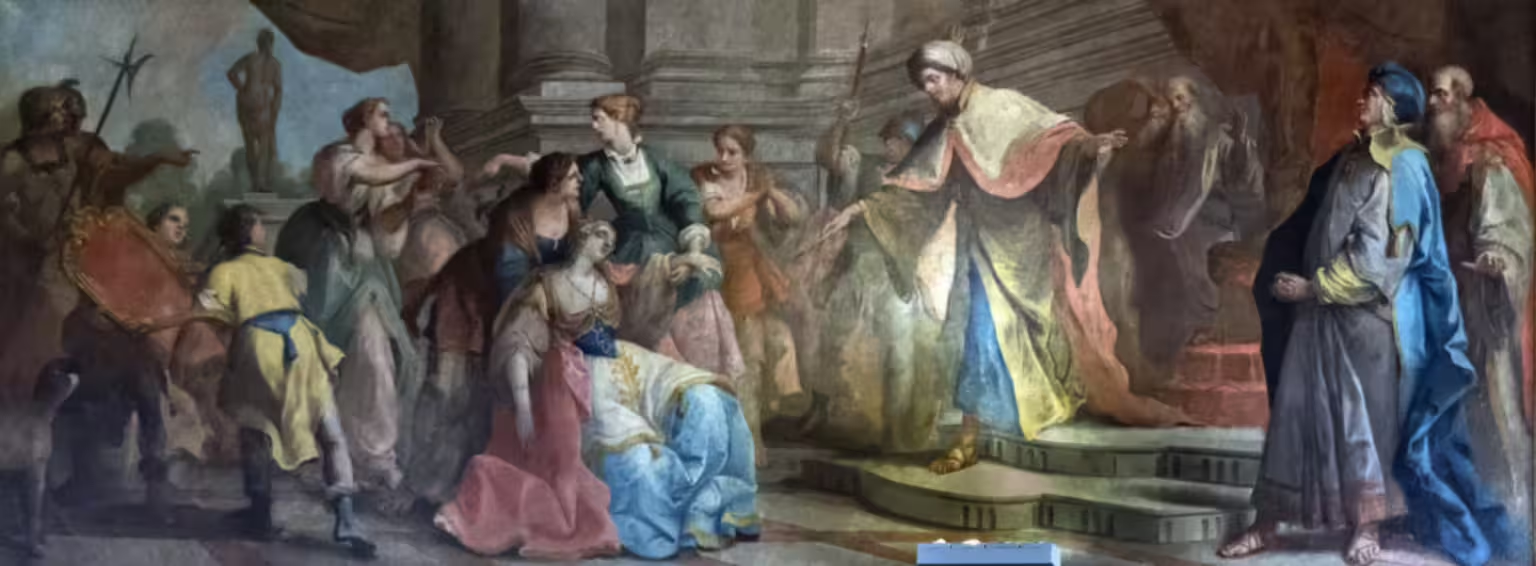
Zompini married in 1730. His wife, Lucrezia Alberghetti from Nauplia in Greece, gave him eleven children, some of whom helped in the workshop later. Otherwise, little is known about his family.
The large family was an economic burden, and Zompini relied on the patronage of the artist and art-critic Anton-Maria Zanetti (the elder, most likely) for work. When Zanetti died in 1767, that patronage mostly died up.
Zompini furthermore lost his eyesight later in life, and died poor and destitute in 1778.
The Arti che vanno per via nella Città di Venezia
The inspiration for the Arti che vanno per via nella città di Venezia no doubt came from an earlier work, the Arti di Bologna (1585–1590) by Annibale Carracci (1560–1609).
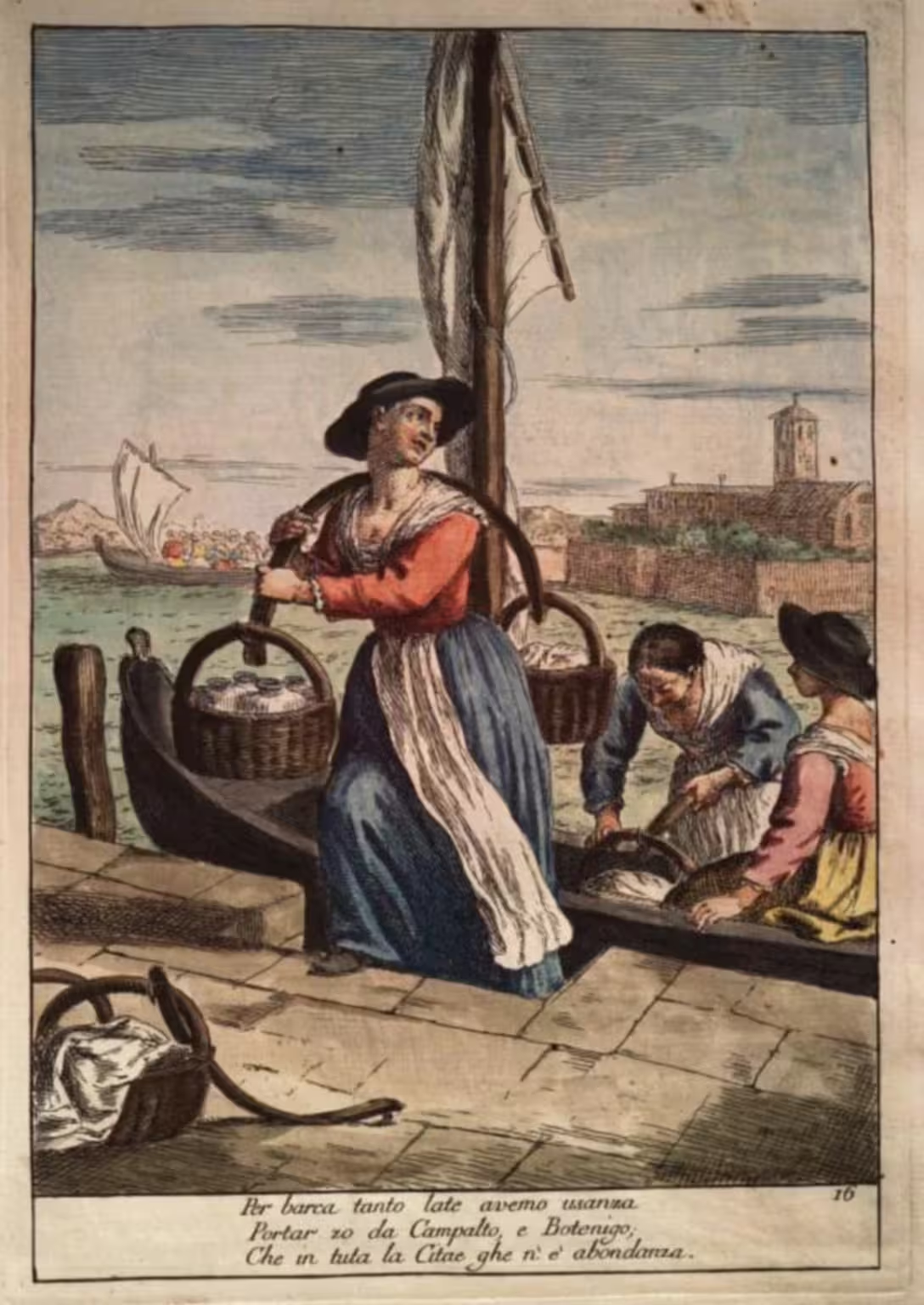
In November 1746, Zompini applied for the privilege (a licence) to print such a work, which was granted in January 1747.
To finance the work, Zompini published a flyer, where the project was described as consisting of one hundred plates, depicting “all the commonly exercised trades in Venice by persons who circulate all day in practise of the same.”
The first forty plates were published in 1753, with the following twenty plates probably the next year.
We have no sources as to why the project wasn’t finished. No more than sixty plates were ever published.
The tone of the engravings is sombre and realistic, without any kind of sentimentalism. People are shown doing their trade, visibly tired and dirty. The depictions are respectful of their subjects, without any attempting at ridicule, or just making light of their hardship.
Accompanying each engraving is a short poem in Venetian, written by Don Questini, parish priest of Santa Maria Mater Domini, and a friend of Zompini.
All the poems are translated into English on the pages for the individual plates, linked below.
Editions of the Arti che vanno
The Arti che vanno per via nella Città di Venezia were published in several editions.

The first edition from 1753, with only forty plates, is extremely rare. It might only have been printed in a few copies. The follow-up, probably from the year after, with the next twenty plates, is equally rare.
There’s an edition from 1770, with two indices. The first covers the original forty plates, and the second the last twenty. At least some examples of this edition had the plates coloured by hand, individually and uniquely. See, for some examples, plate #6 and plate #7.
The most successful edition of the Arti che vanno per via nella Città di Venezia was published in 1785, after Zompini’s death. Besides the sixty plates, now with a single index, it also contains a short Memoria to commemorate Zompini.
Other editions appeared until the mid-1800s, when the original copper plates were very worn.
Some English editions exist, with the verses translated rather freely from the Venetian to English, if not entirely rewritten.
Digitised editions
I haven’t found any digitised versions of the 1753/1754 editions online.
An example of the edition from 1770 is available from Google Books, with coloured plates, but with mostly black and white images of appalling quality in the downloadable files.
The 1785 edition is available from the French National Library (complete, but low-quality images) and from the Internet Archive (missing the Memoria and plates 6, 41, 44 and 56, but higher quality images).
List of the depicted trades
- Scoa Camin — chimney sweep
- Erbariol — seller of vegetables
- Conza Zocoli — clog mender
- Scoazer — rubbish collector
- Conza Careghe — chair maker
- Zaletto — seller of sweet maize cakes with butter (zeleto)
- Codega — lantern bearer
- Carboneri — transporters and sellers of coal and charcoal
- Marmotina — street entertainer with a trained marmot
- Semena l’Orto — gardener
- Osei, che canta — vendor of caged songbirds
- Dai Vovi — seller of eggs
- Taggia Legne — wood-cutter, chops firewood
- Pignate — vendor of pots and pans
- Cappe — Mussel seller
- Dalla Latte — Milk seller
- Scaleter — seller of bussolai and ciambelle
- Dai Foli — Bellows seller
- Cavà Rii — Canal dredgers
- Conza Lavezzi — tinker of copper utensil
- Gua — knife grinder
- Forcae, Elera ec. — peddlers of brooms and brushers
- Foleghe , e Mazzorini — coots and ducks
- Porta Bigolo con acqua — water bearer
- Caraguoi — snail seller
- Sabion — seller of fine sand for cleaning
- Fitta Palchi — keeper of theatre boxes
- Marcer — door to door salesman of cloth and sewing utensils
- Fruttariol — fruit seller
- Strazze Ferrut — collector of used iron objects
- Frittole — street seller of fritters
- Pescaor — street vendor of fish
- Aseo — vinegar seller
- Scarperut — reseller of used footwear
- Dolce de Vedeletto — street vendor of blood pudding
- Fassi per battello — vendor of bundles of wicker by boat
- Polentina — street vendor of polenta
- Cura gattoli — street cleaner
- Revendigola — collector and reseller of used clothing
- Cazze , e Sculieri — seller of wooden kitchen utensils
- Impizza Ferali — lamplighter
- Metti Massere — agent of servants and maids
- Astrologa — fortune-teller
- Coro d’Orbi — choir of blind
- Sponze , Naranze , ec. — sponges, brooms and citrus fruit sellers
- Inchiostro — vendor of ink and rat poison
- Contadin con Polame — farmer selling poultry
- Dalle Puine — vendor of ricotta and cheese
- Dalla Semola — collector of bran to make bread
- Fenestrer — window maker and mender
- Veri rotti — street vendor of glassware and collector of broken glass
- L’Esca , e Solferini — street seller of tinder, matches and flint
- Terrazzer — makers of terrazzo floors
- Fa ballar i Cani — street entertainer with dancing dogs
- Mondo Novo — peep box operator
- Fiorer — street vendor of fresh flowers
- Botter — cooper, barrel-maker
- Strazzariol — merchant of used clothes and household items
- Zaratan — charlatan, snake-oil salesman
- Vin in quarta — wine sellers
All the images below are also reproduced on the pages for the individual plates, linked above.
Monochrome prints
These monochrome prints are copied from the 1785 edition.
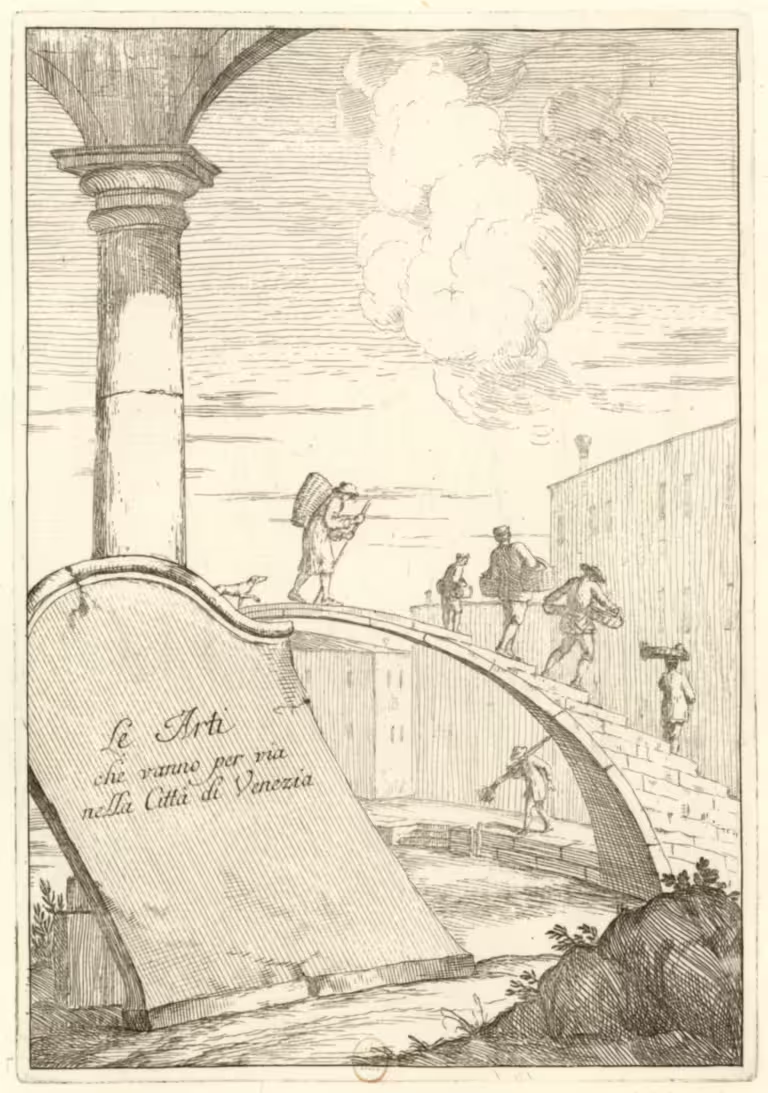
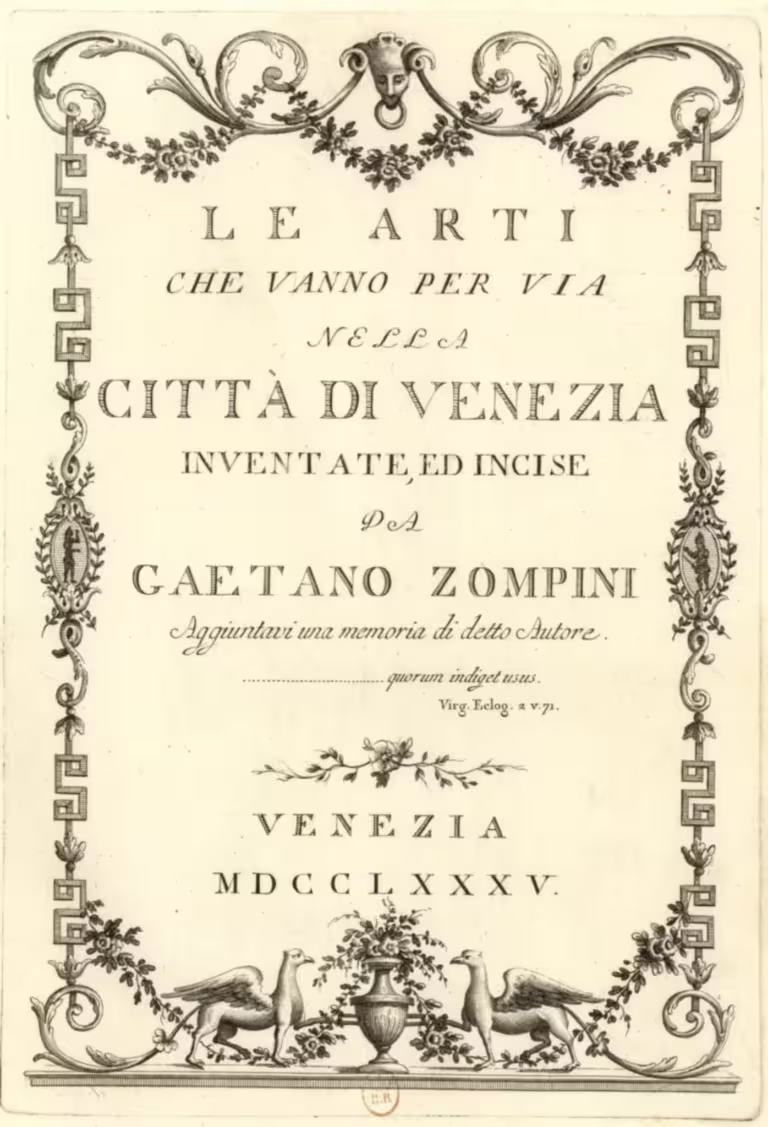
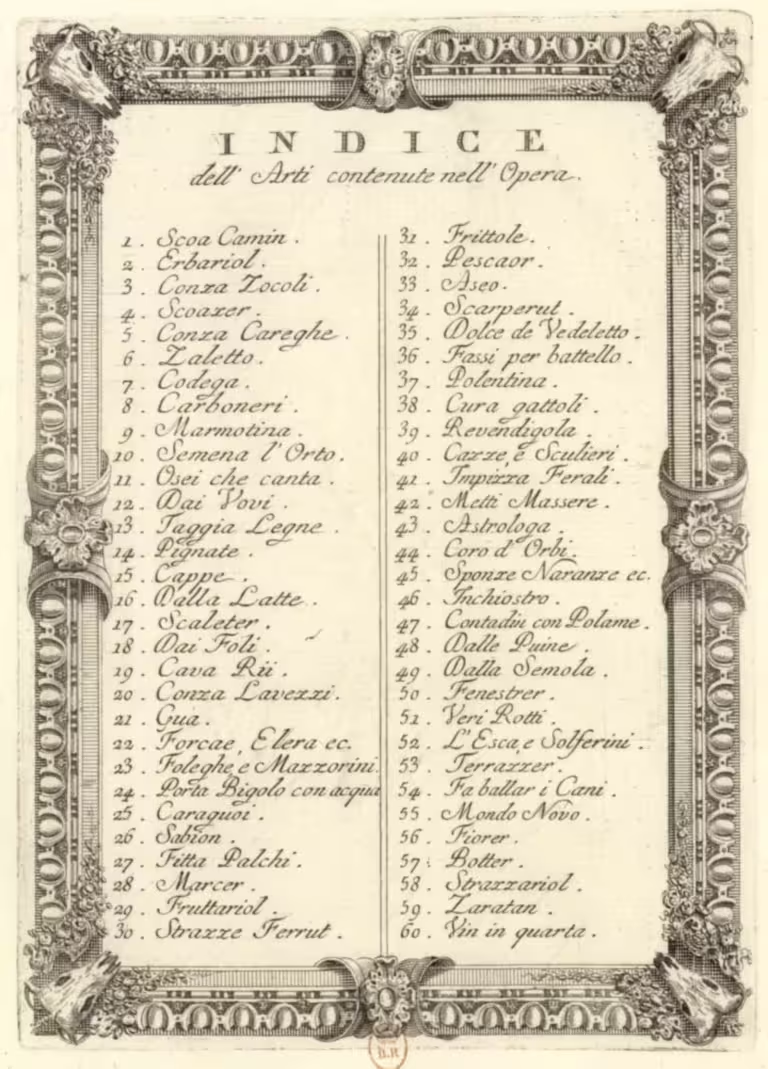

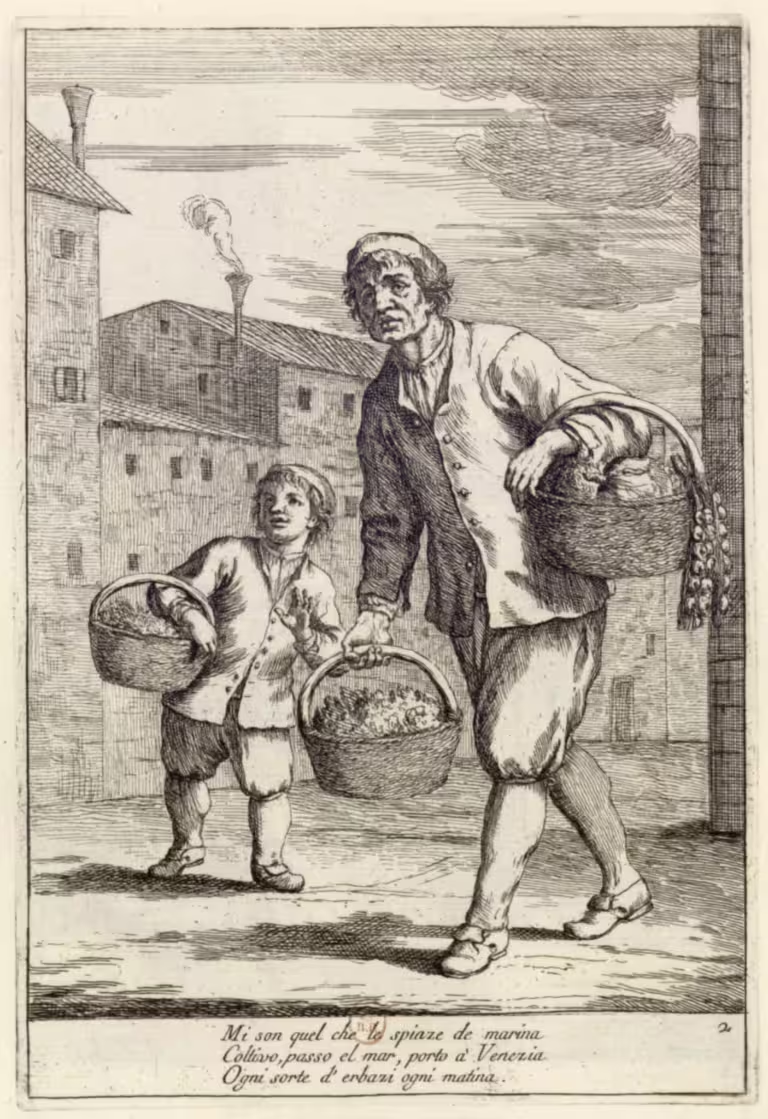
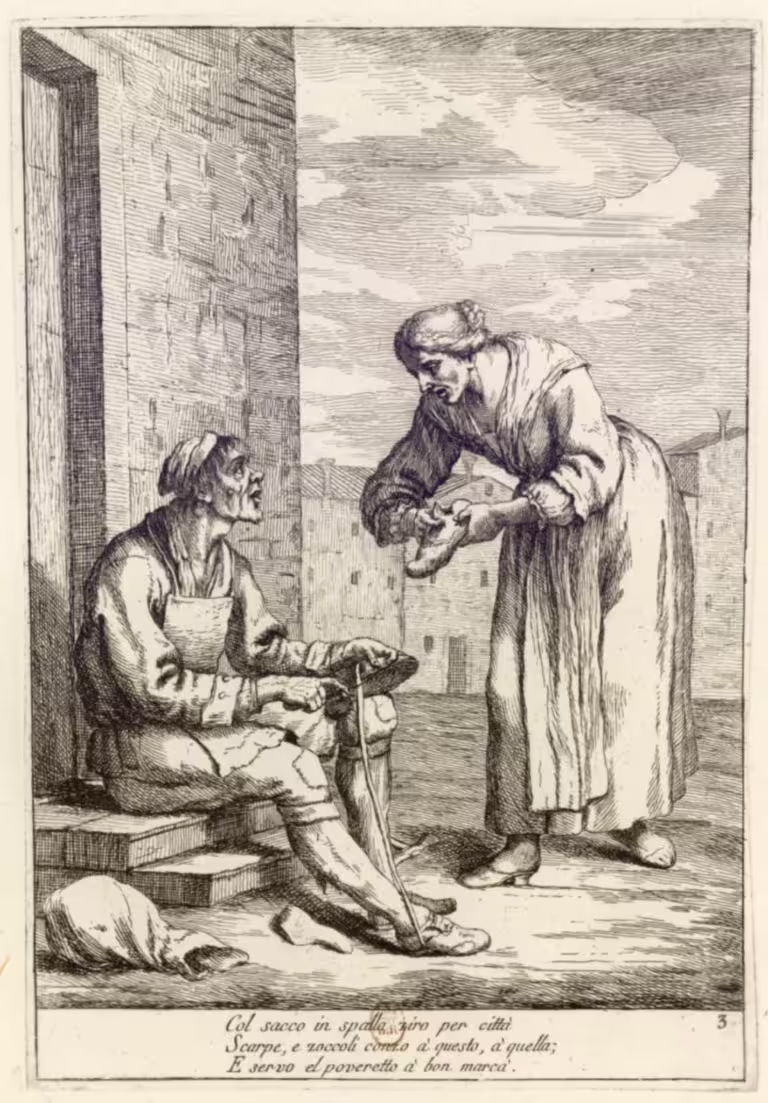
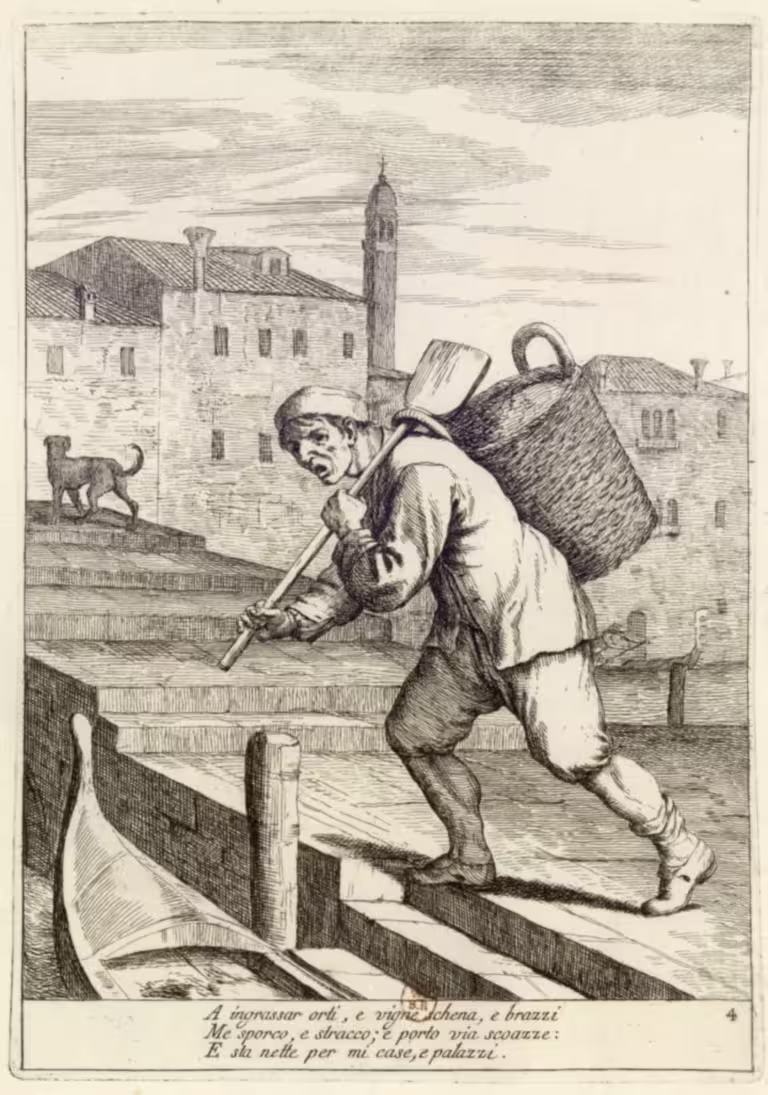
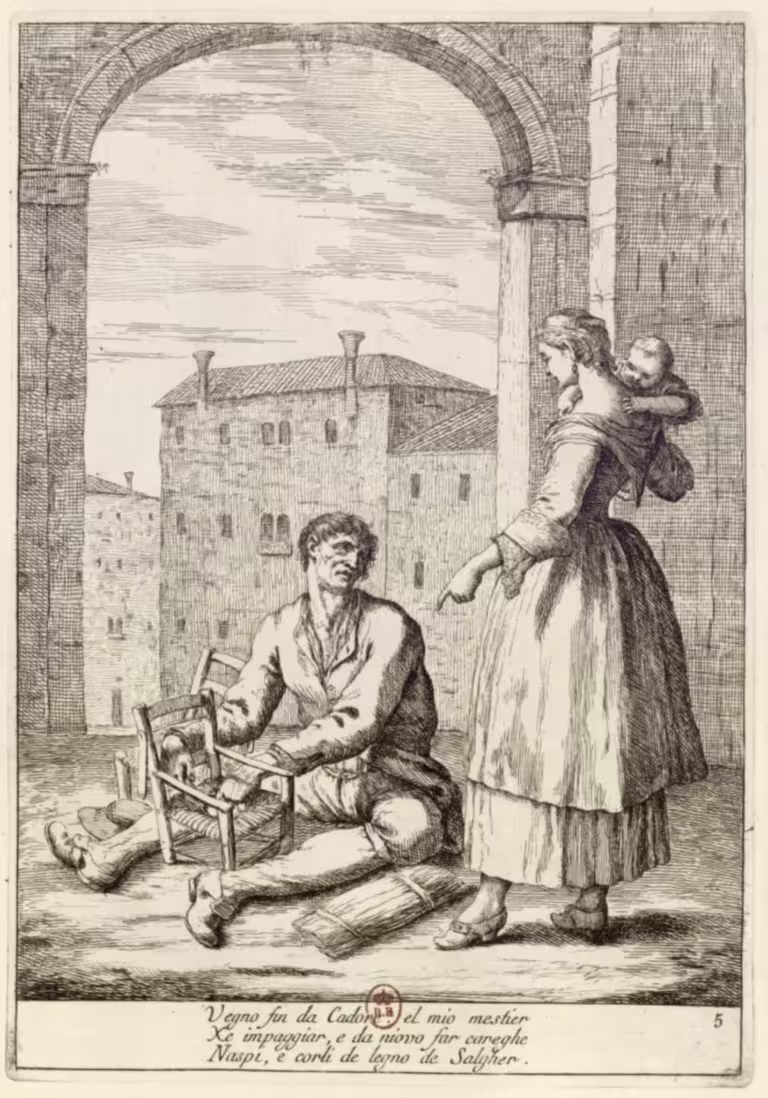
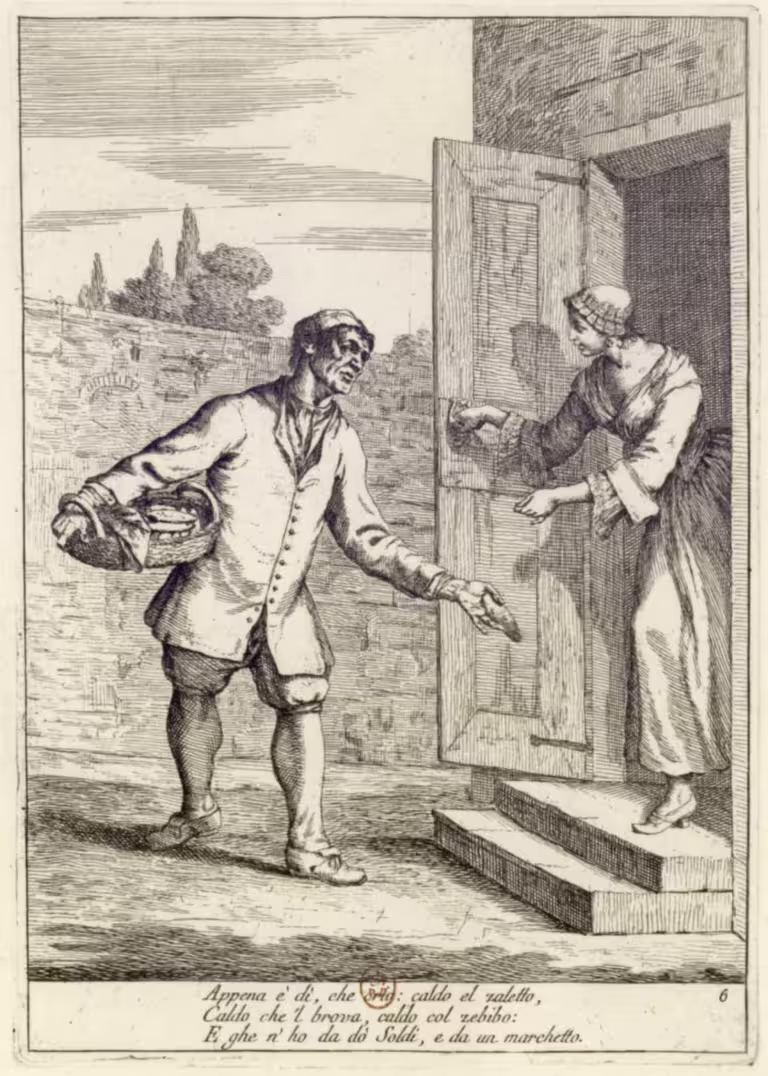
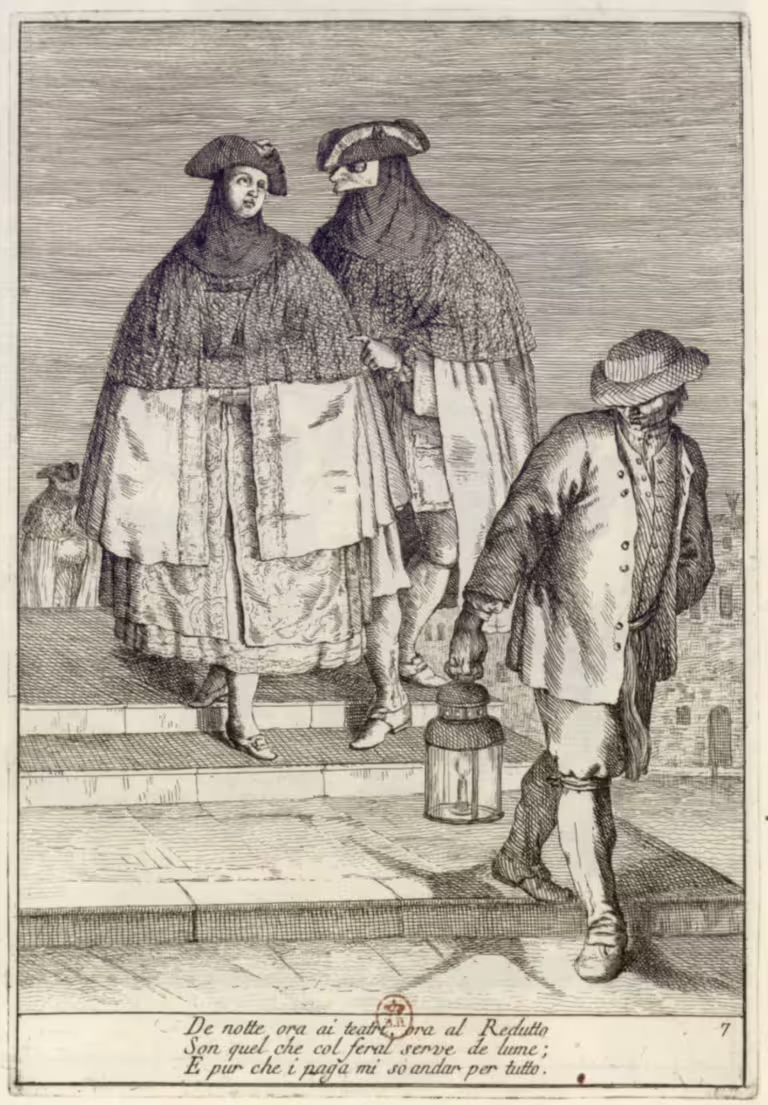
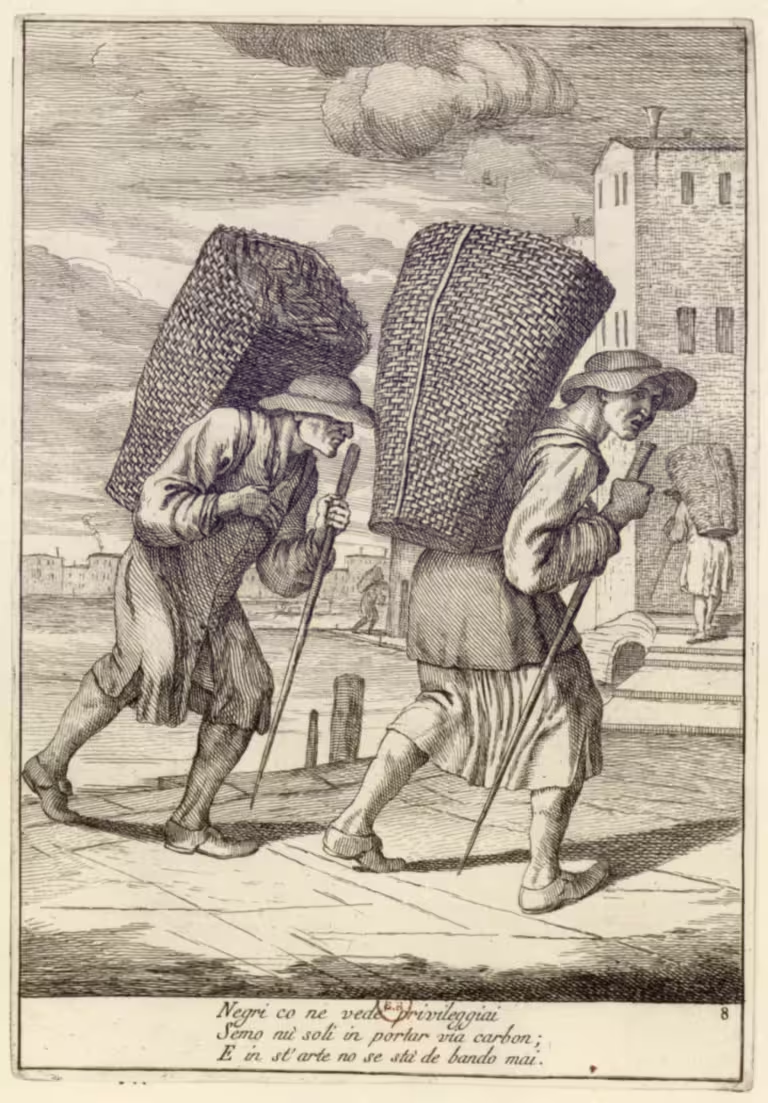
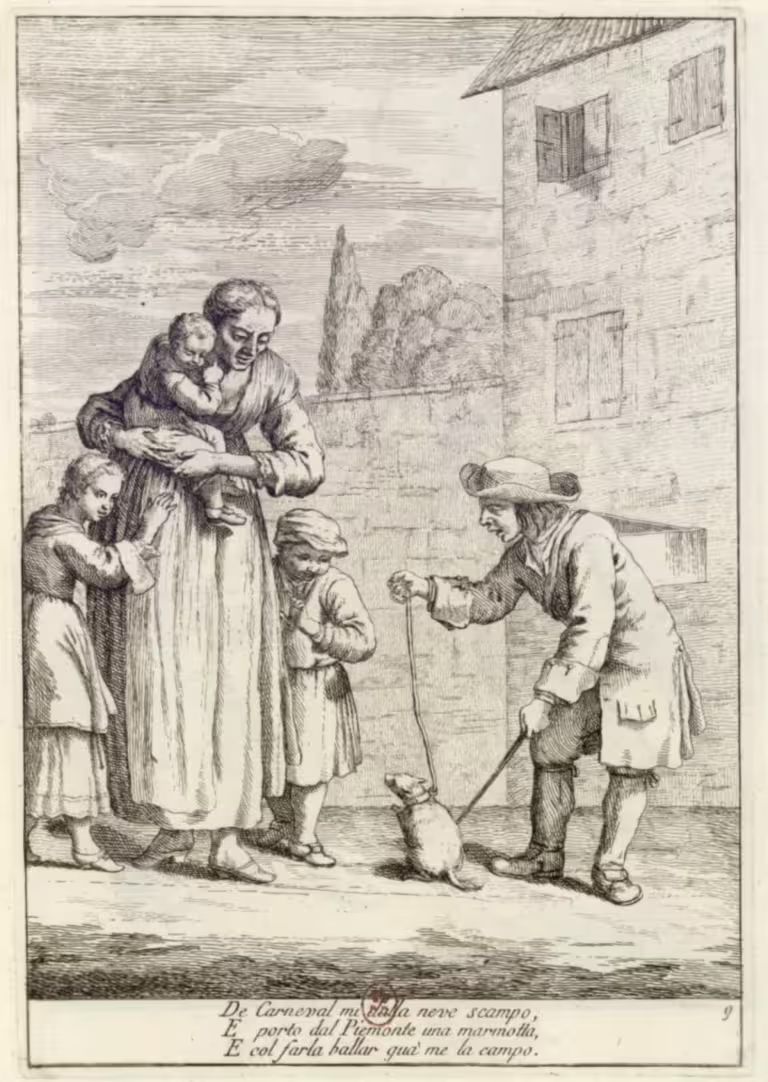
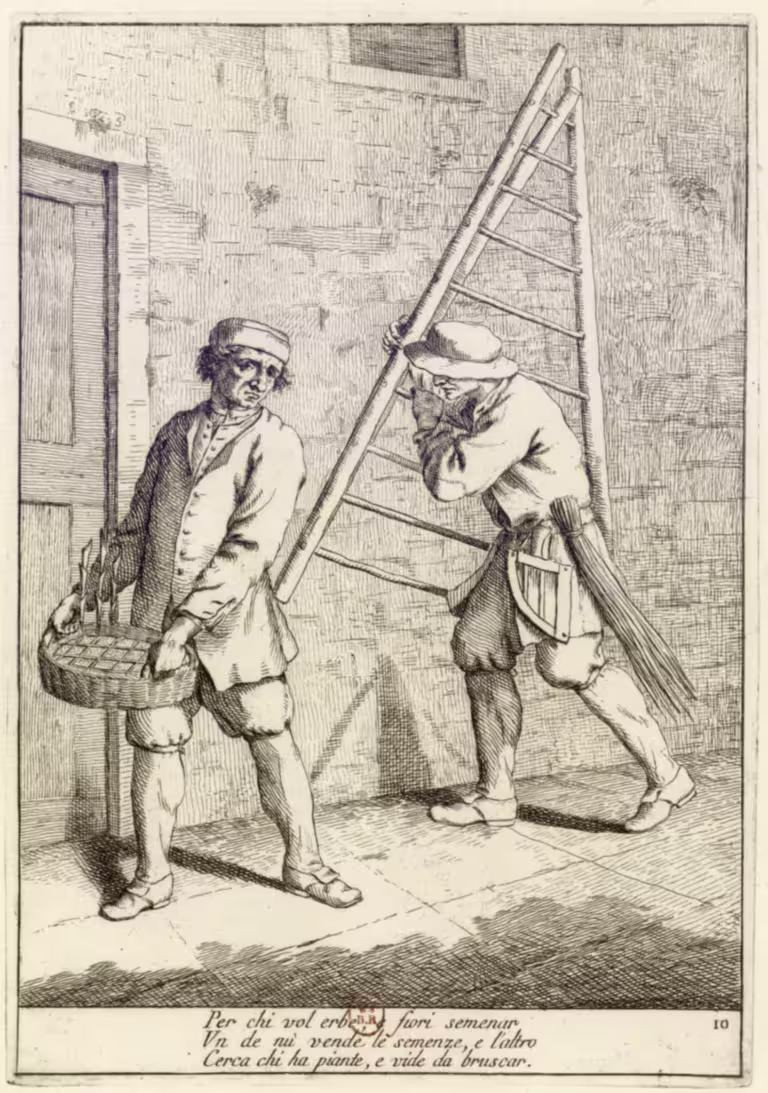
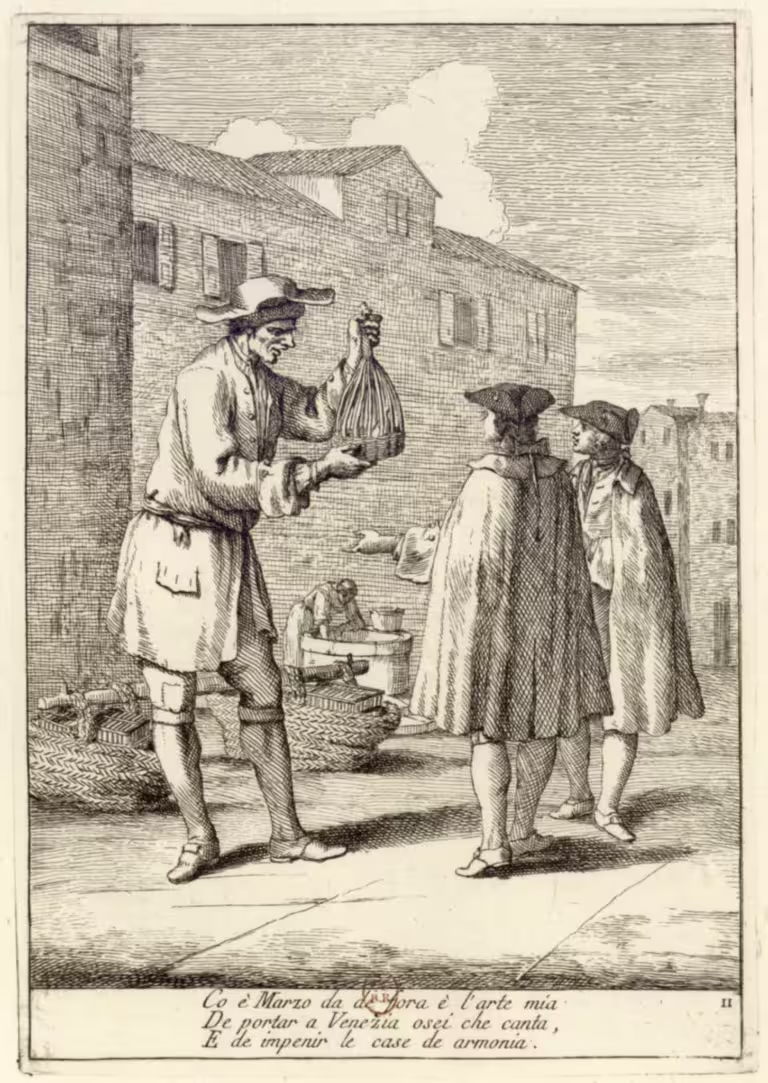
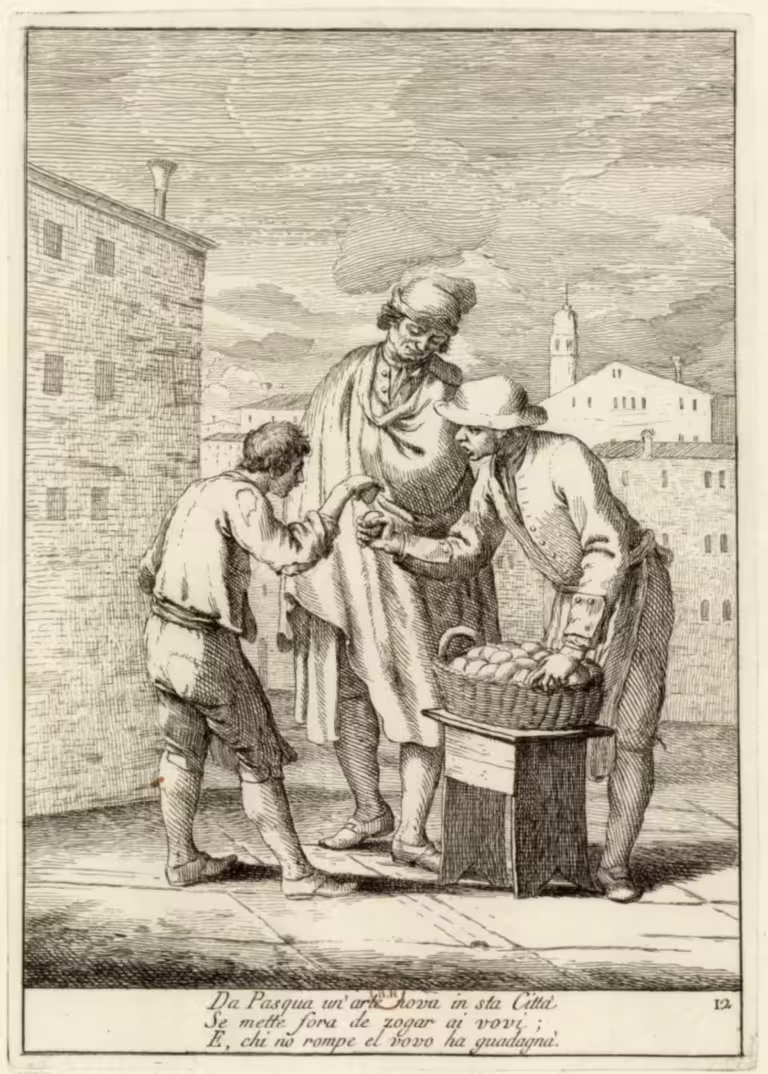
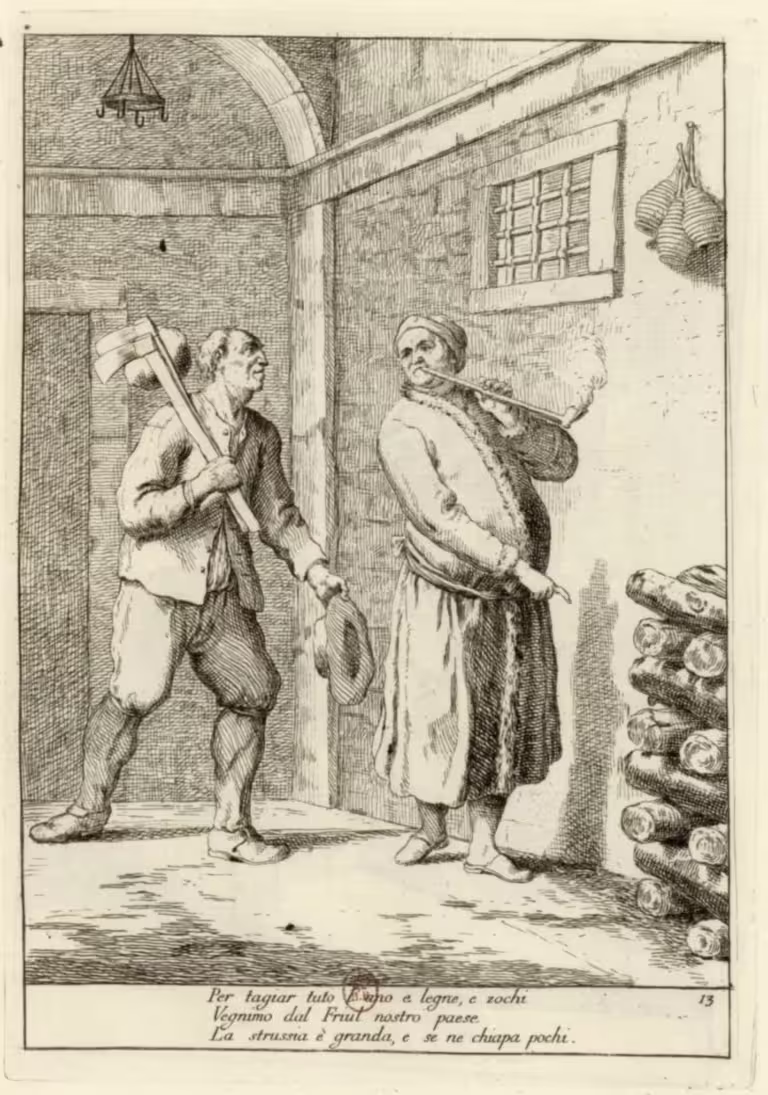
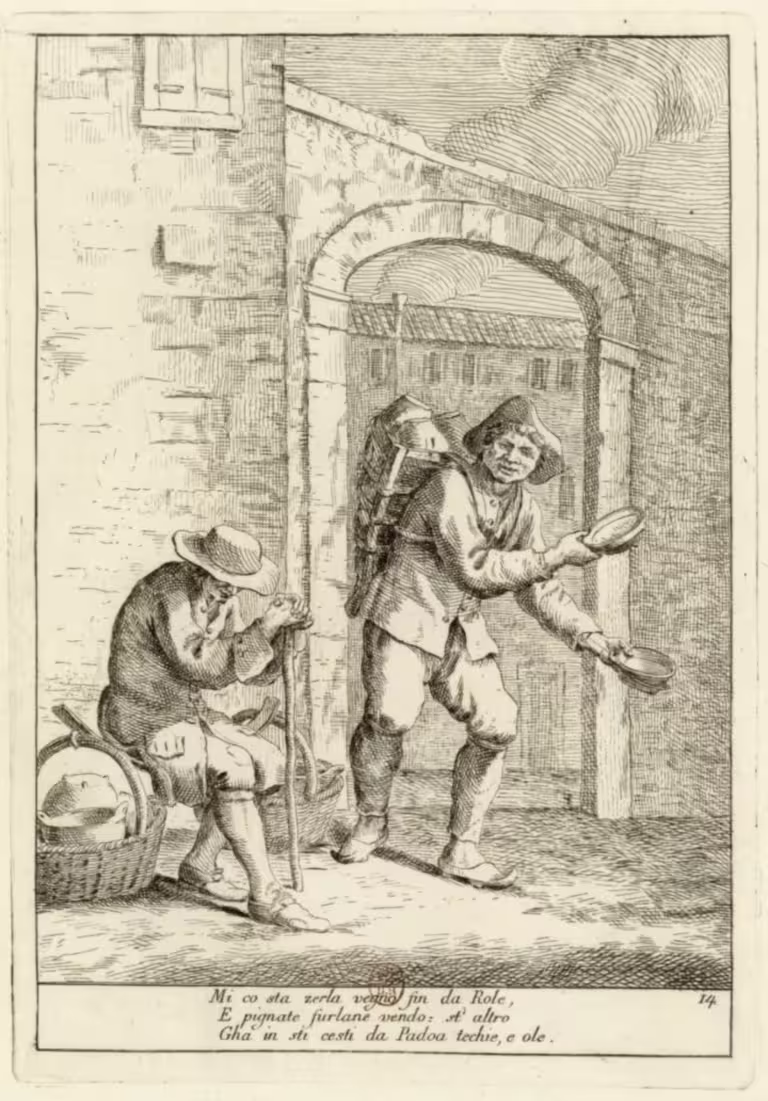
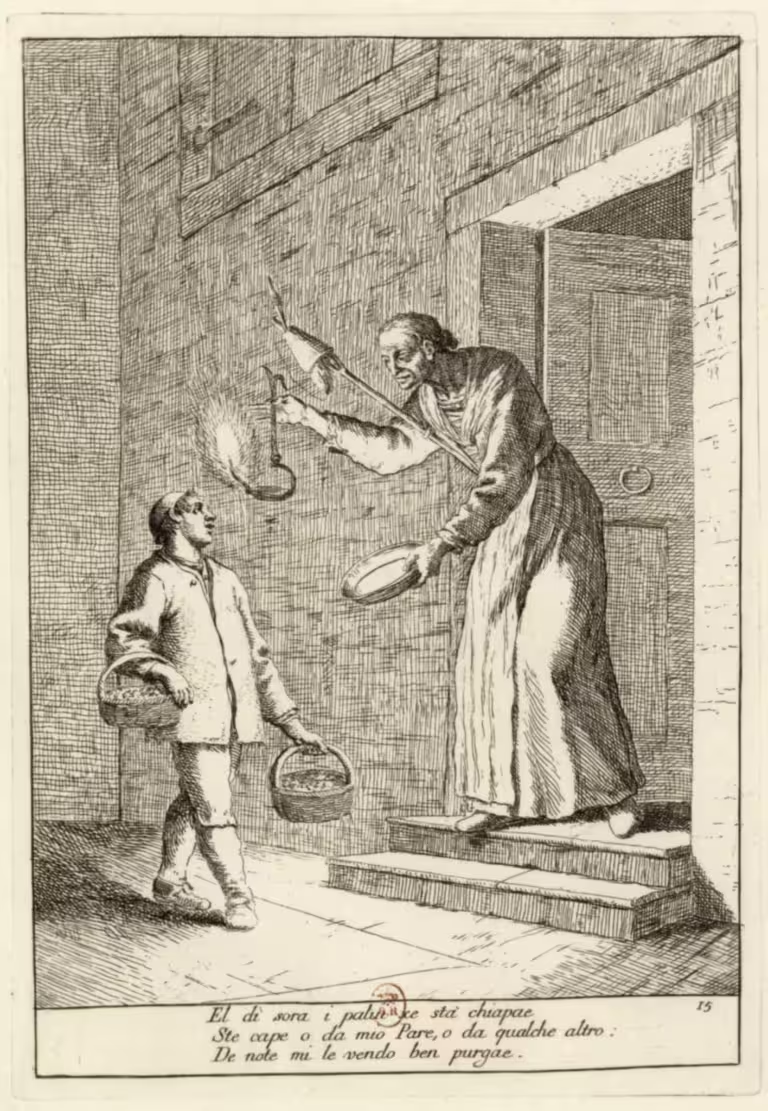
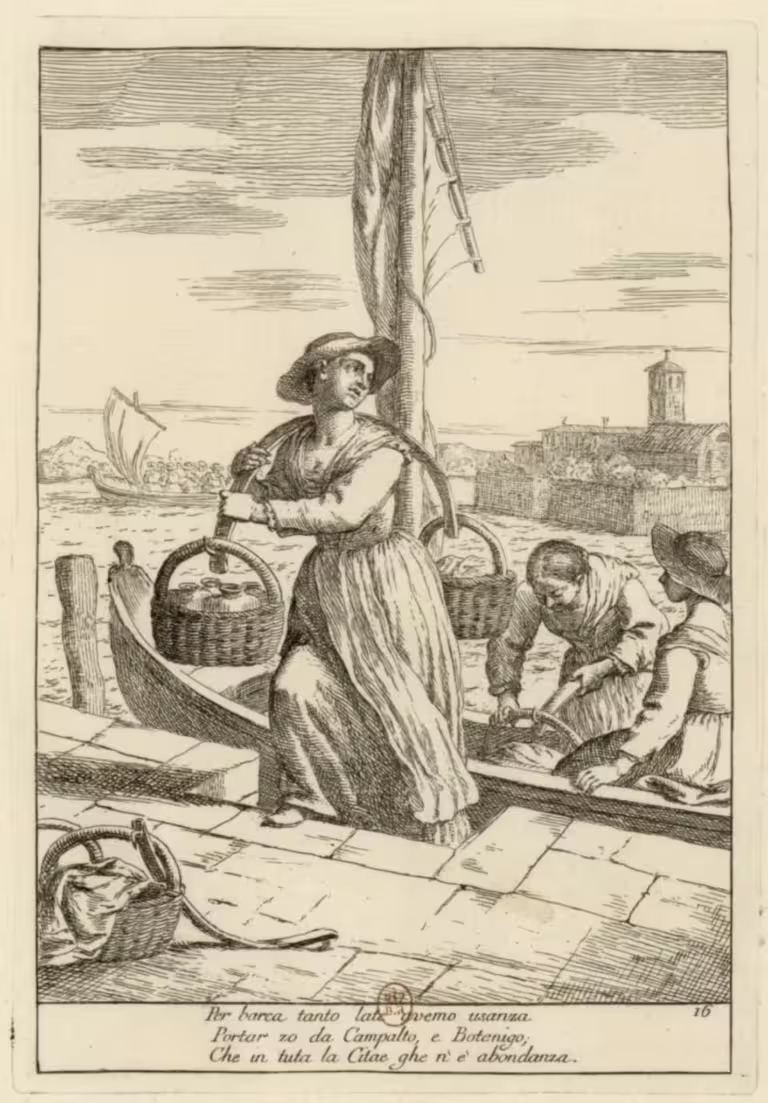
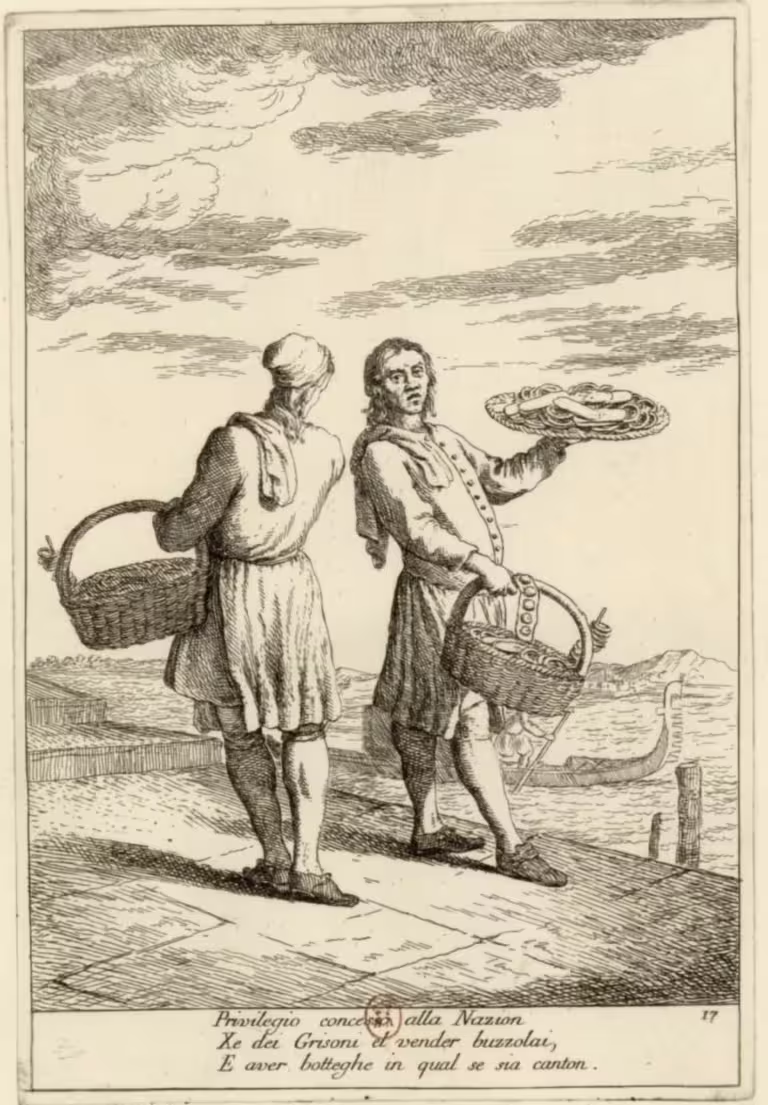
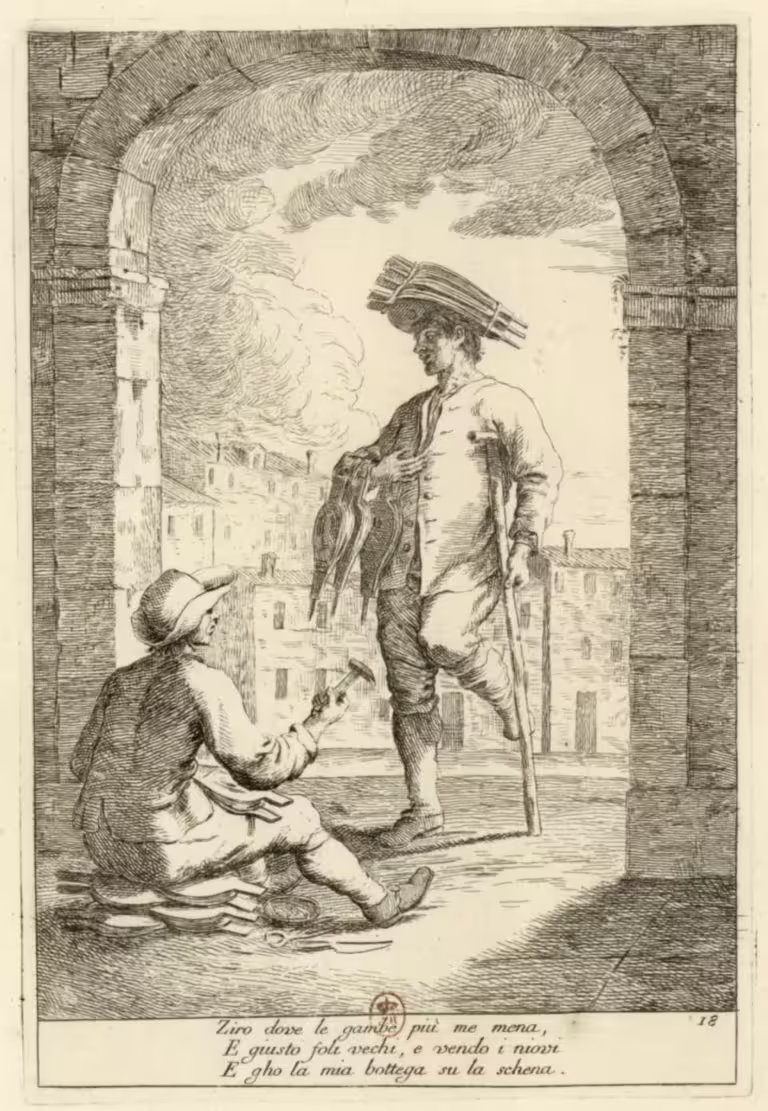
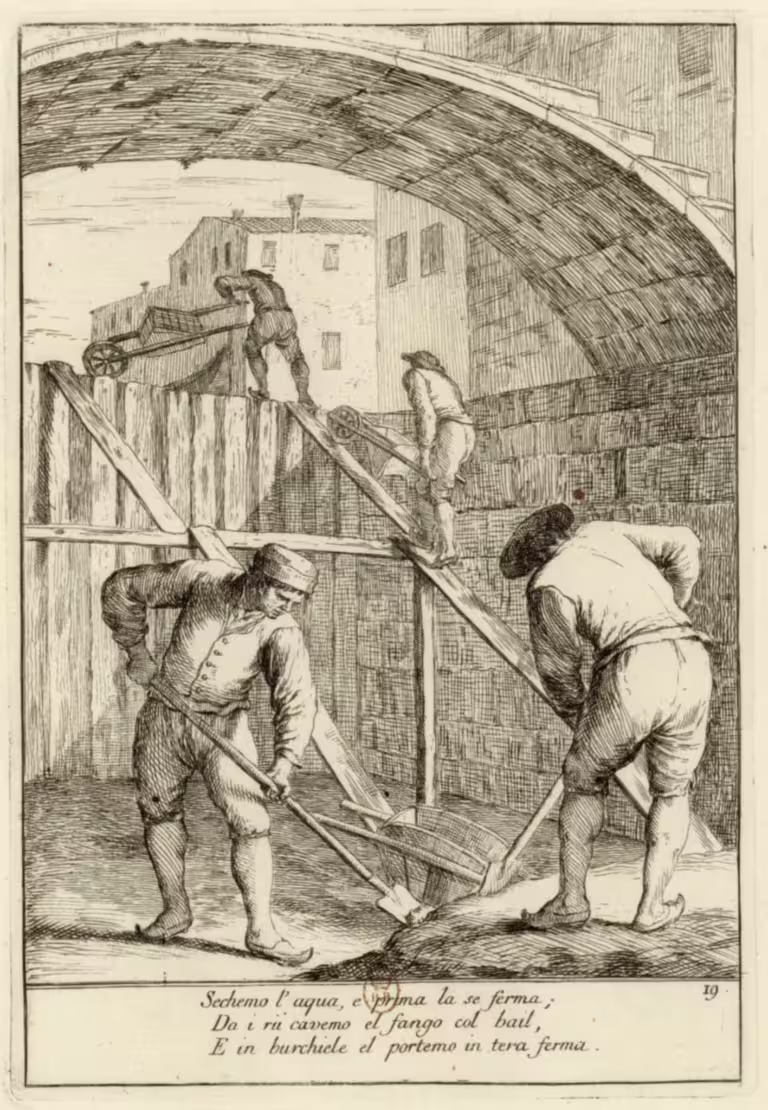
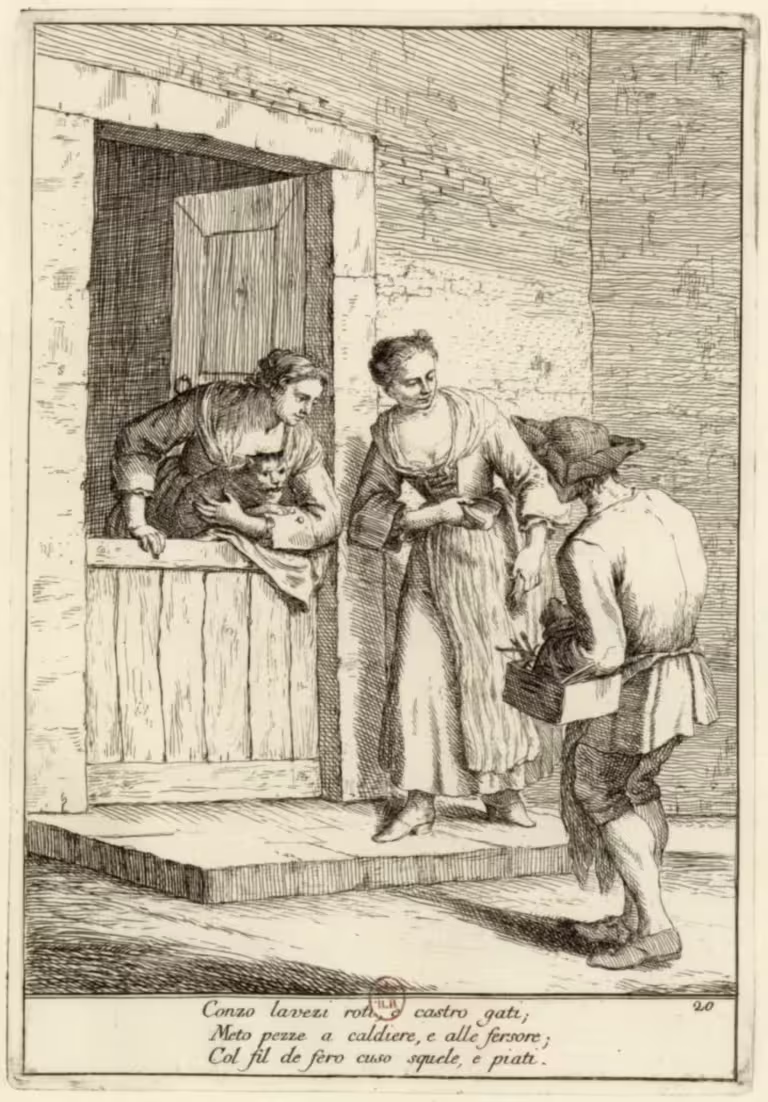
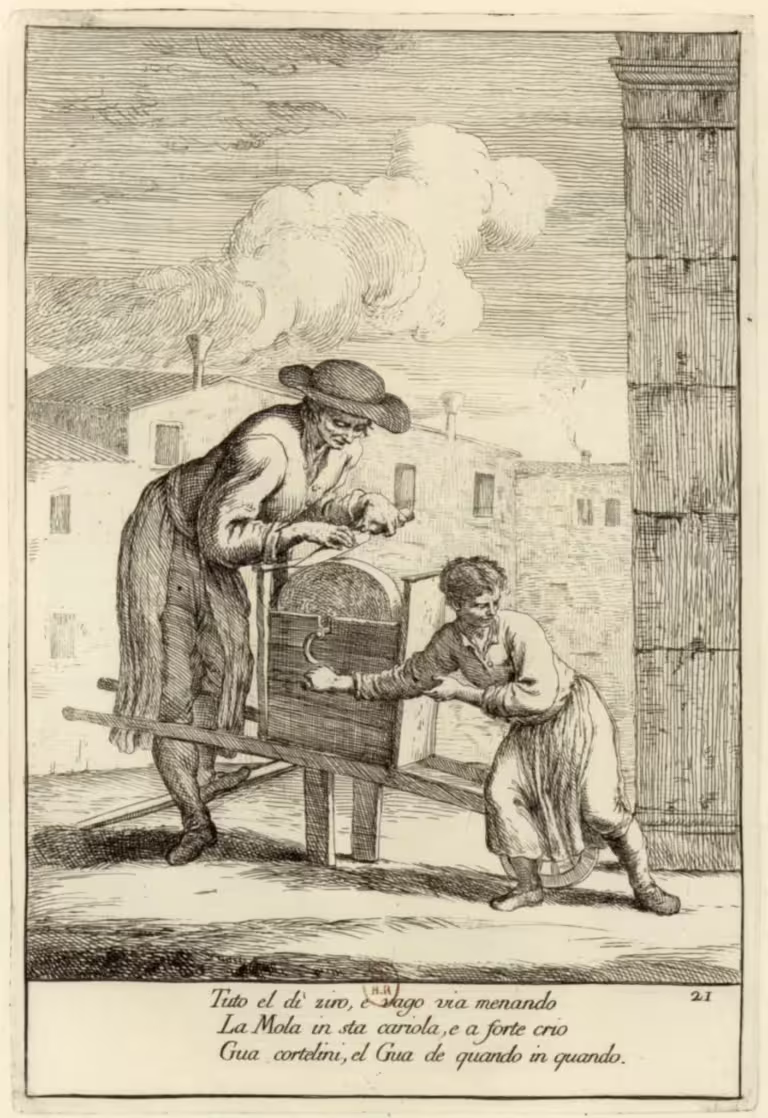
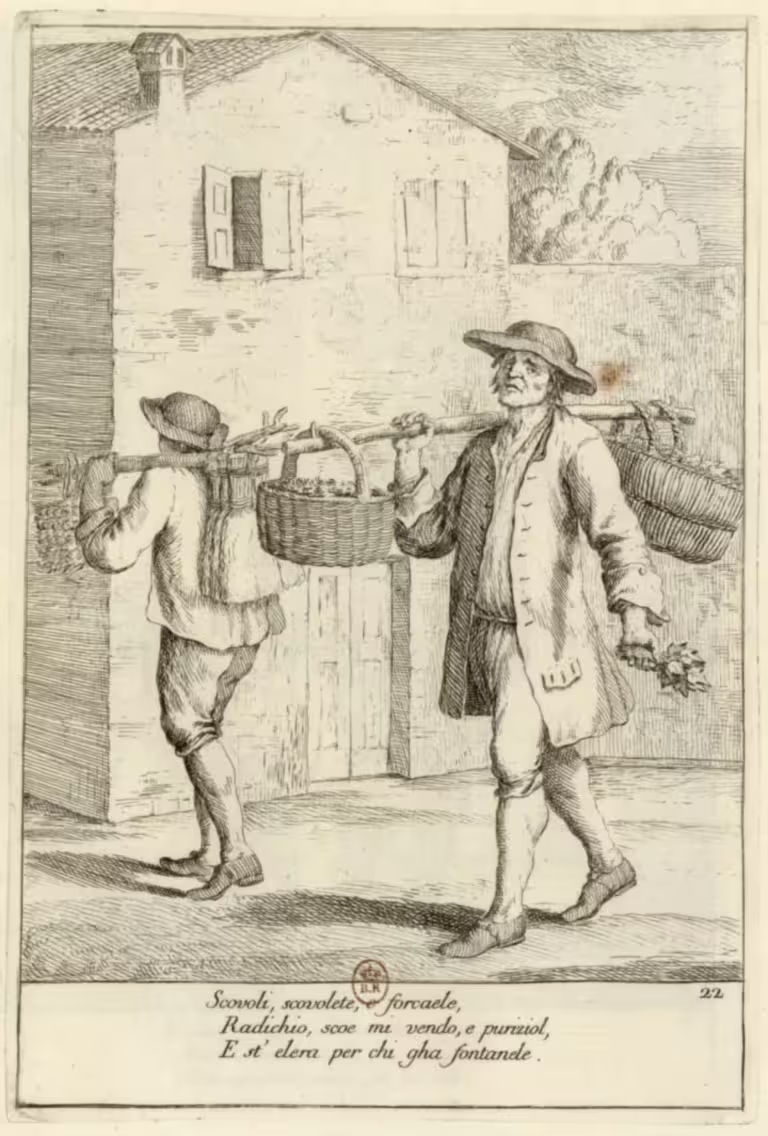

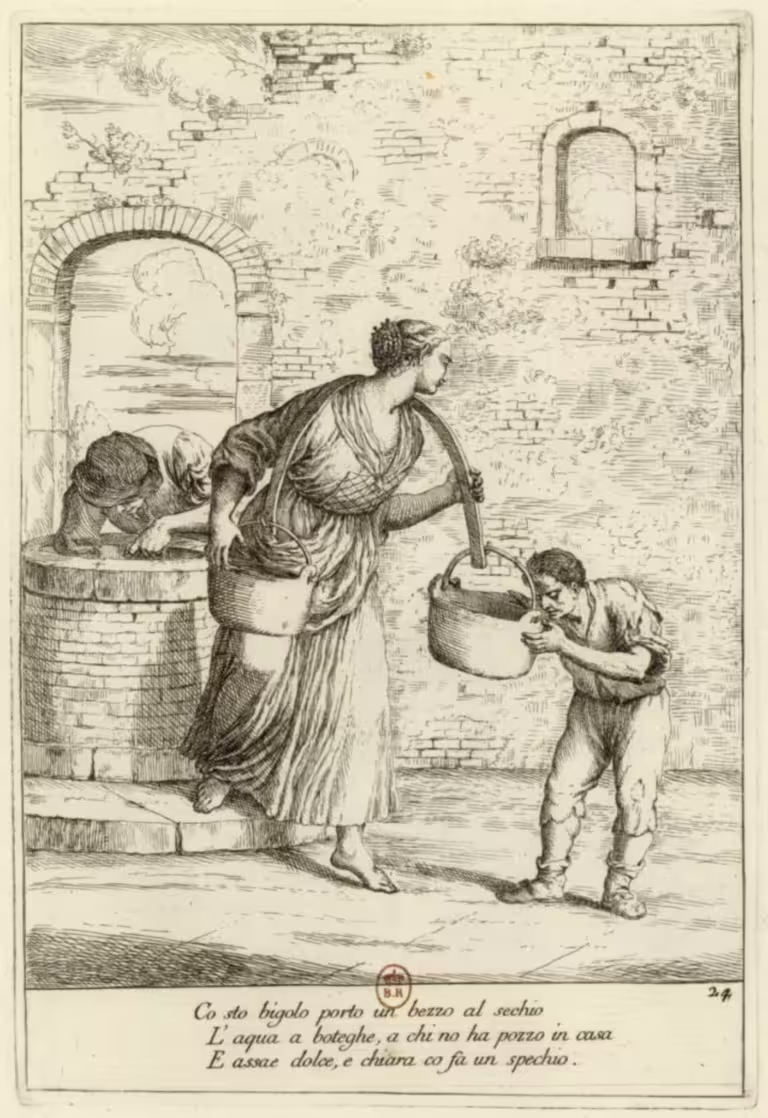

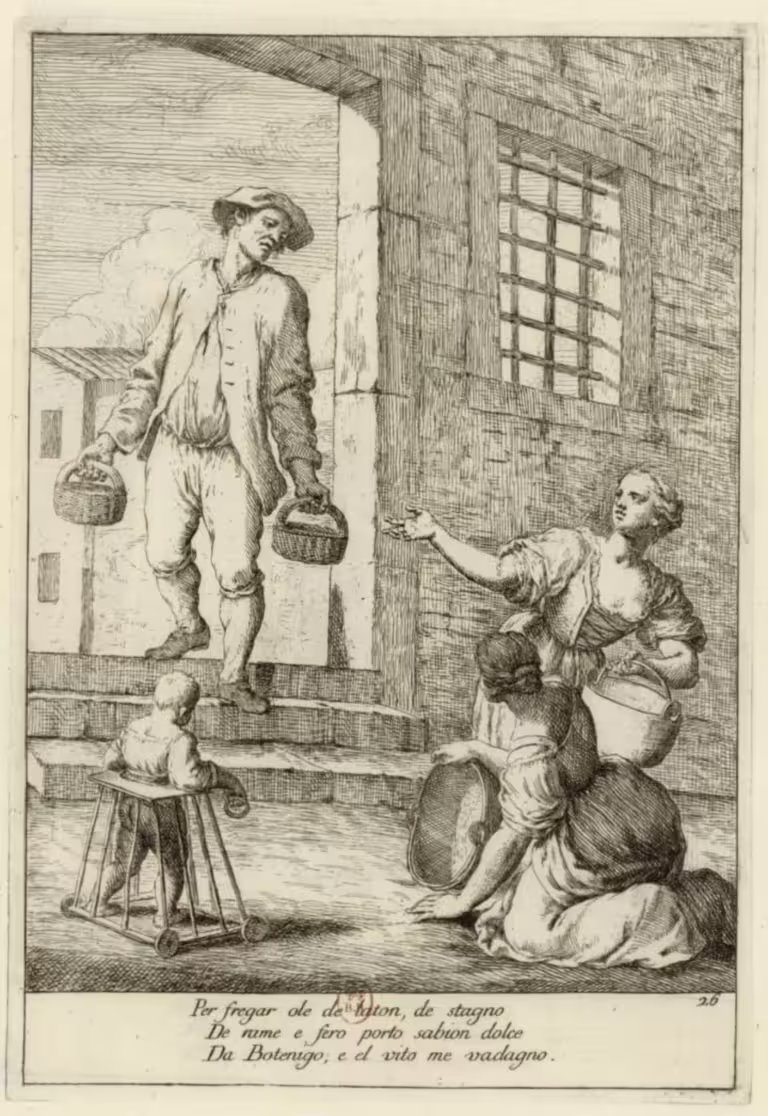
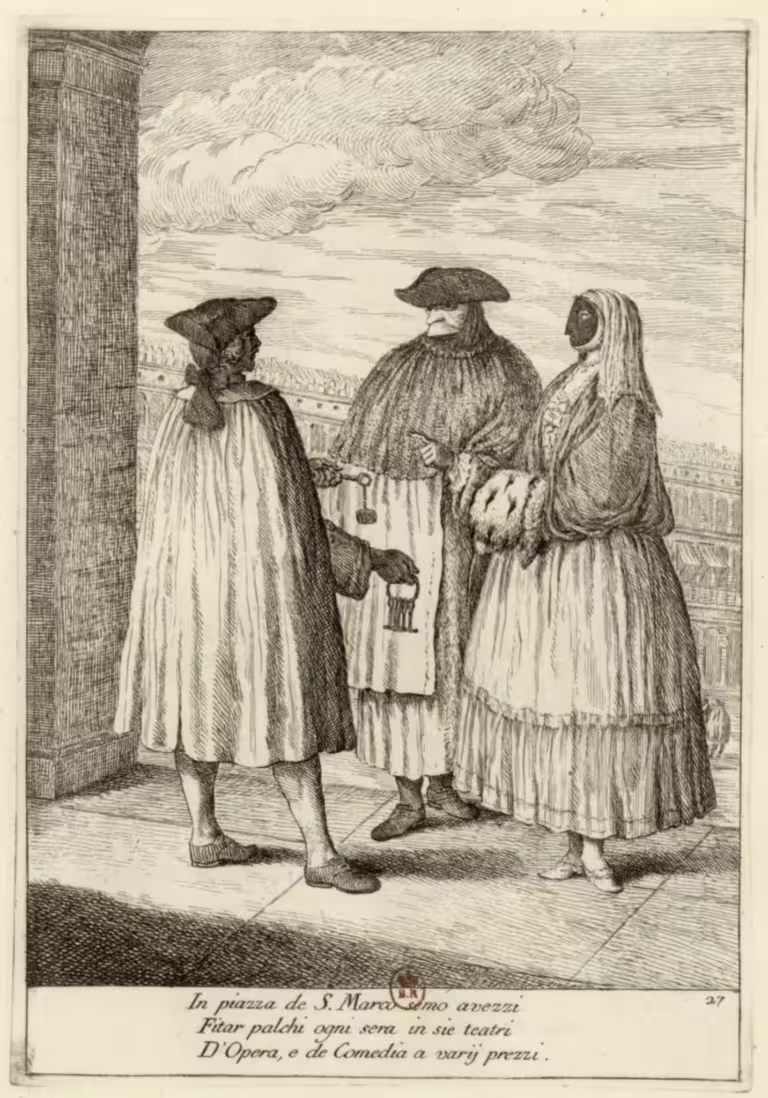
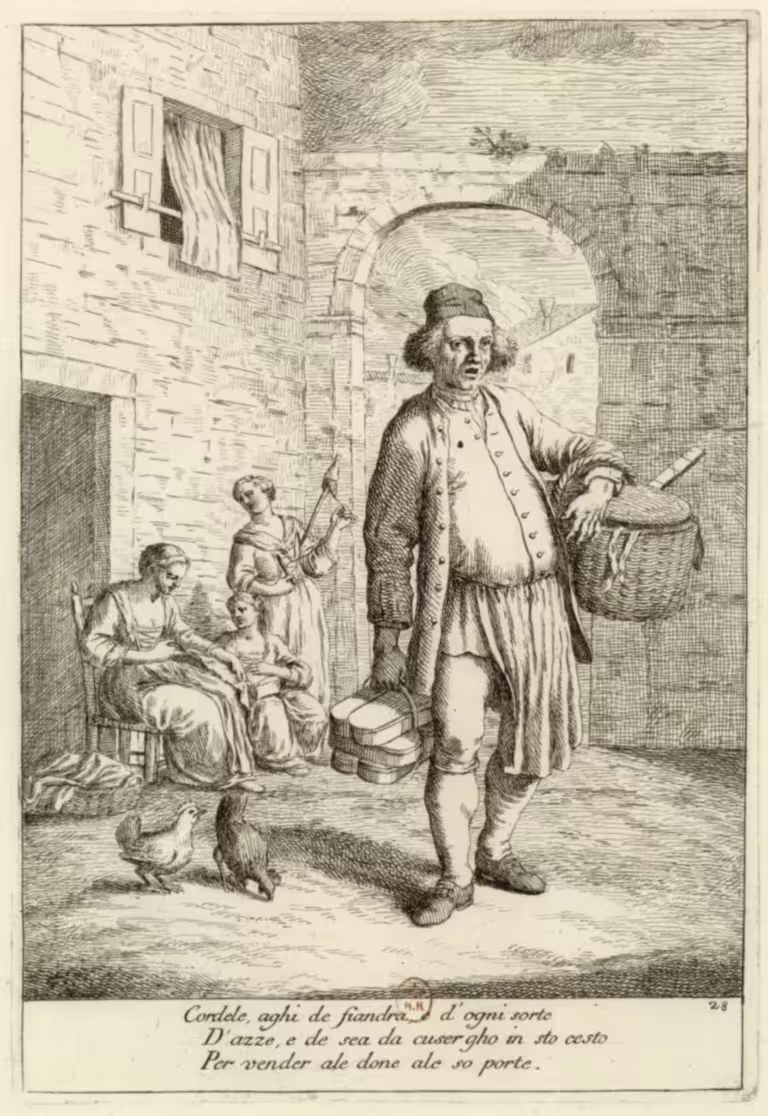

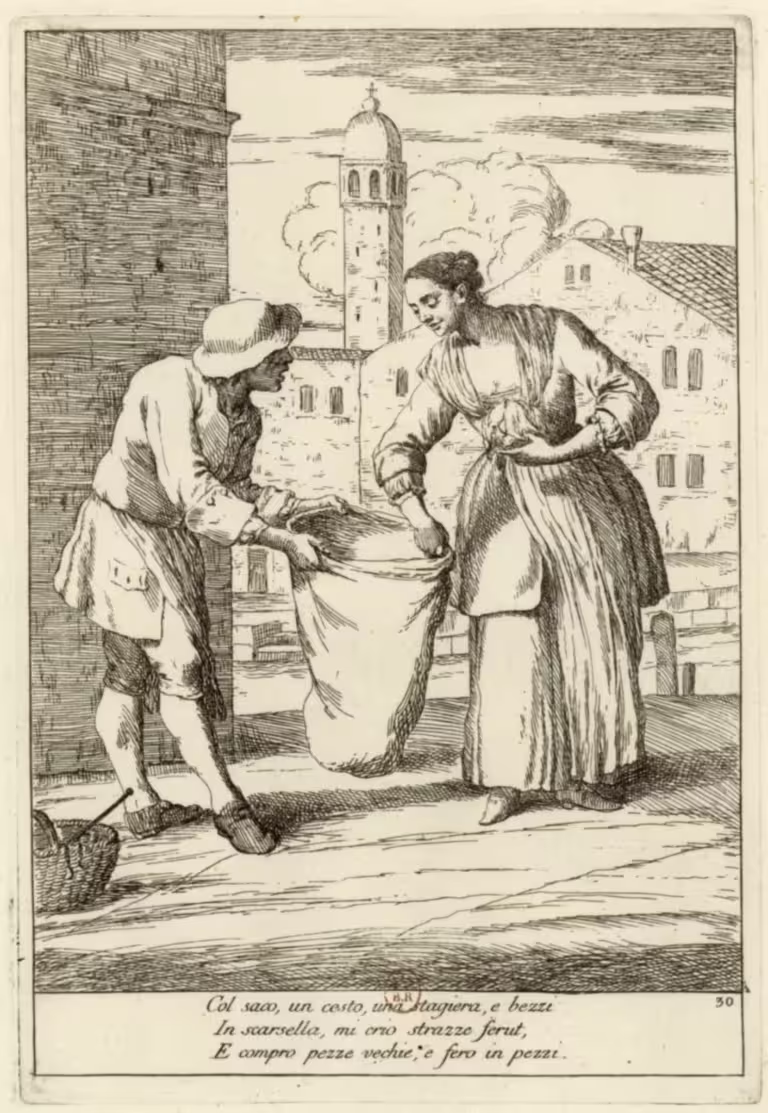

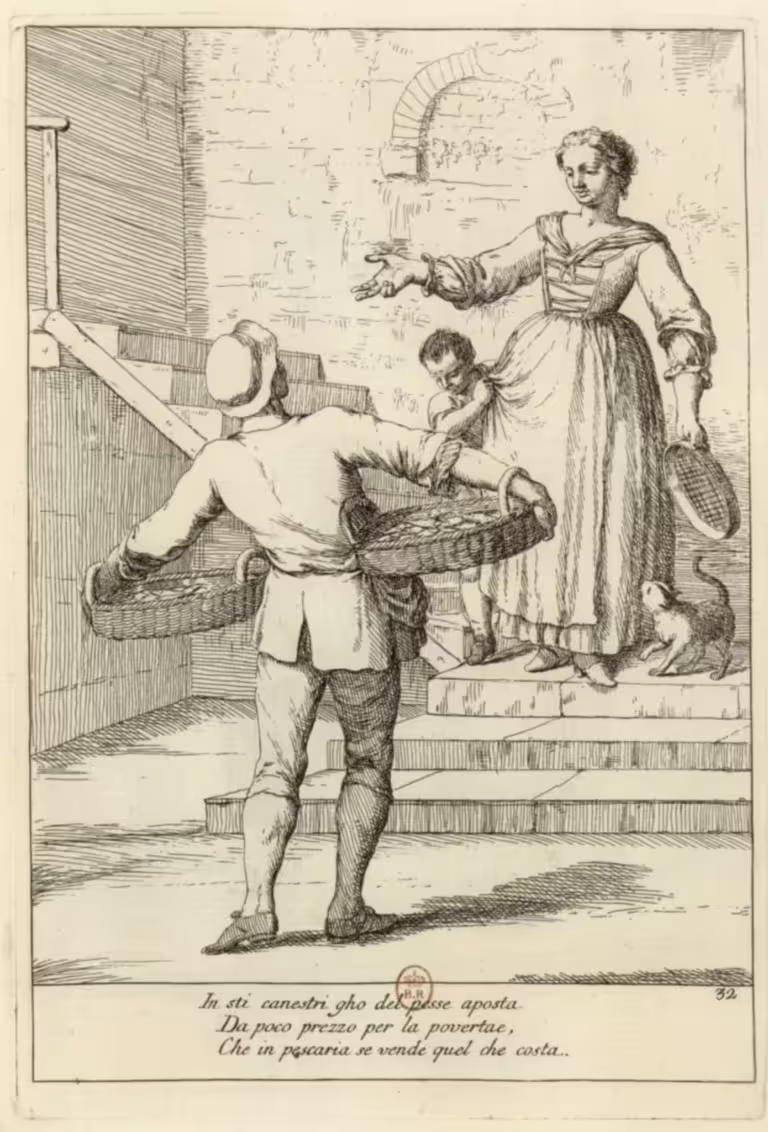
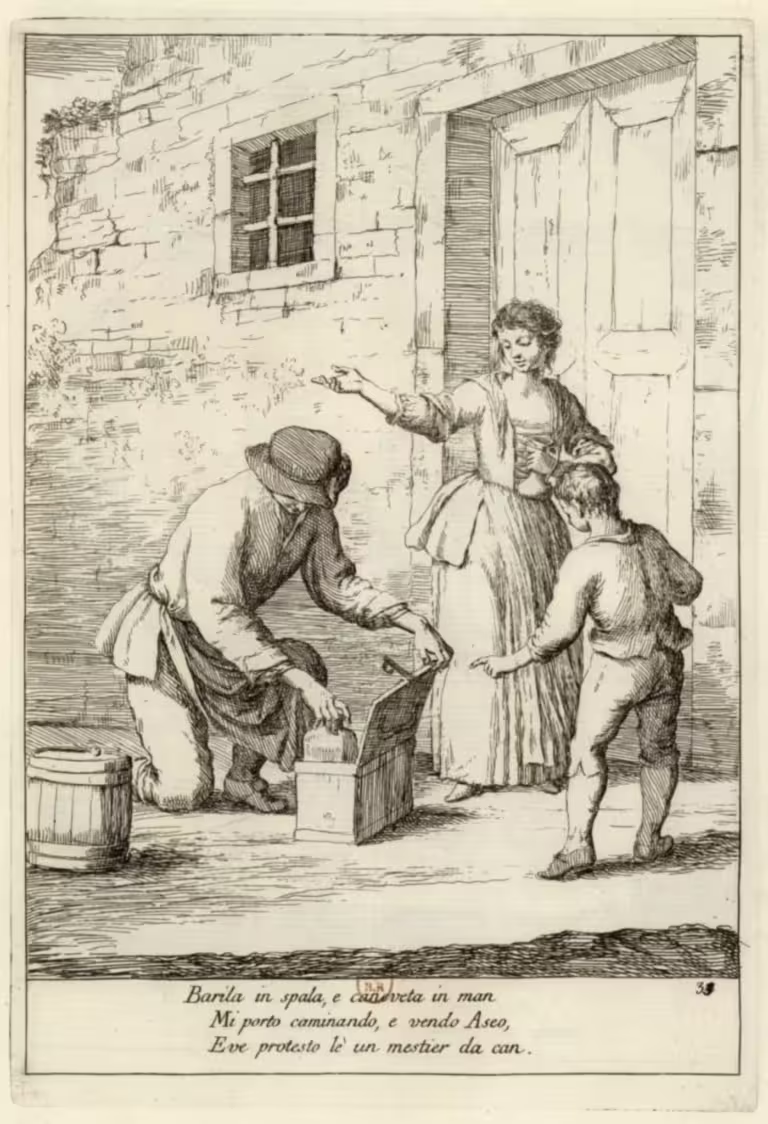


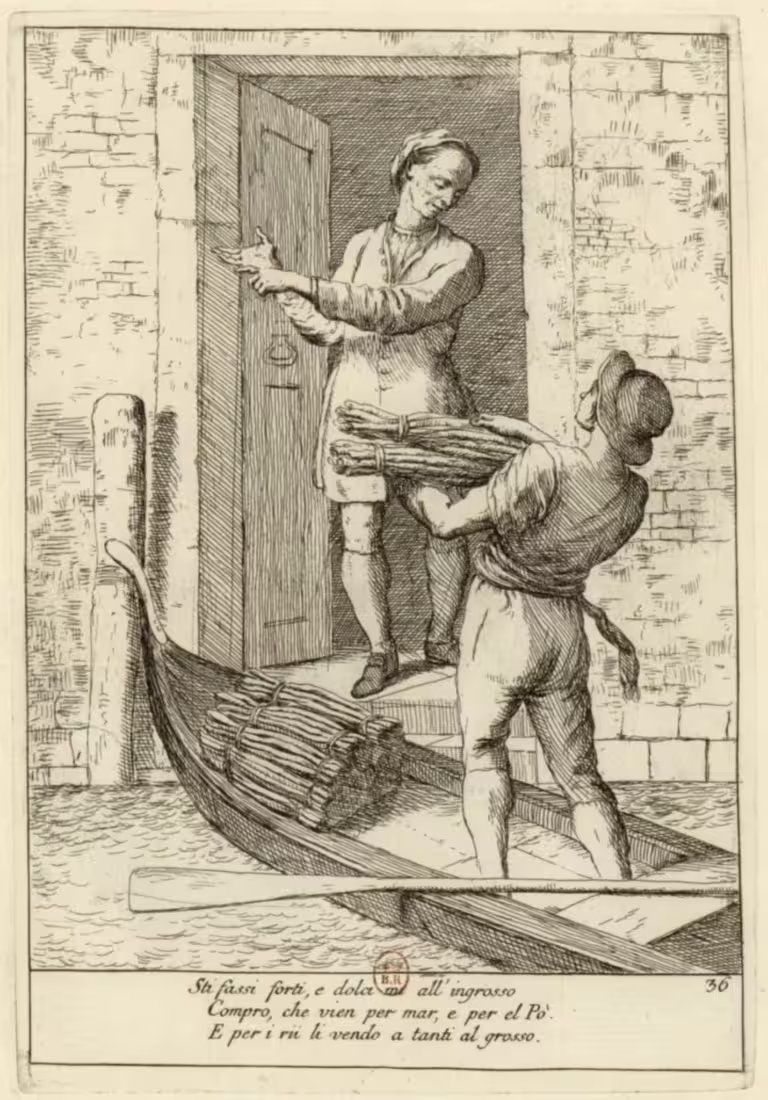

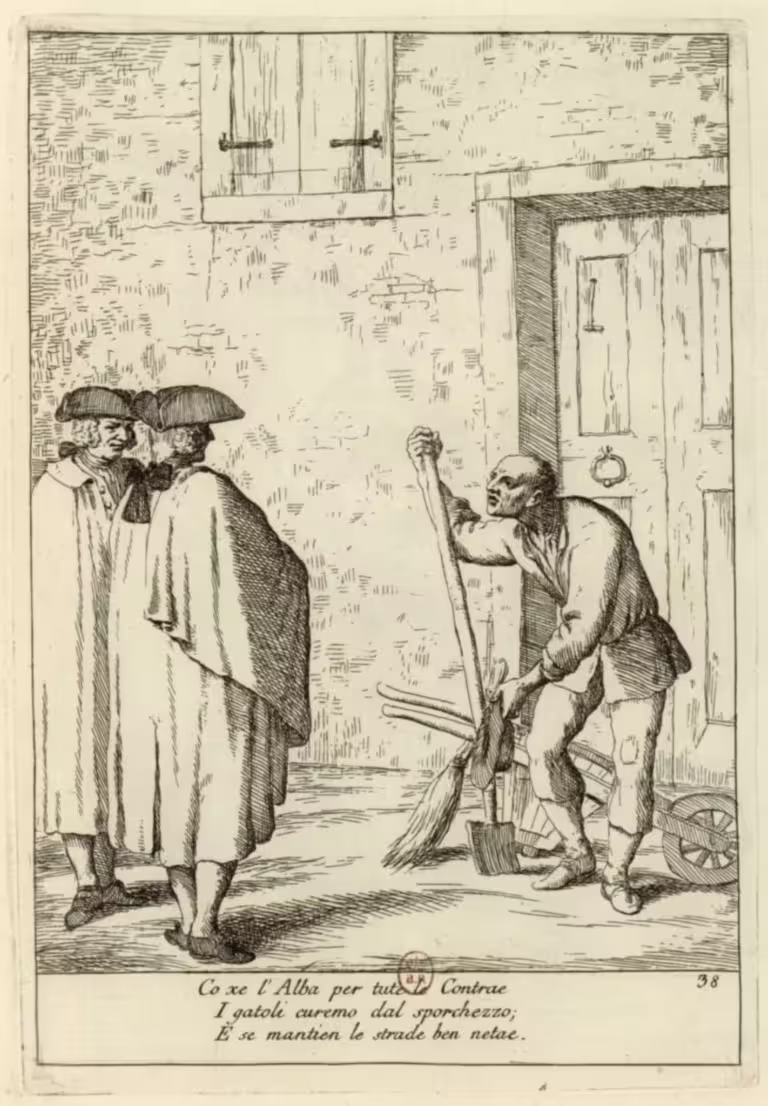


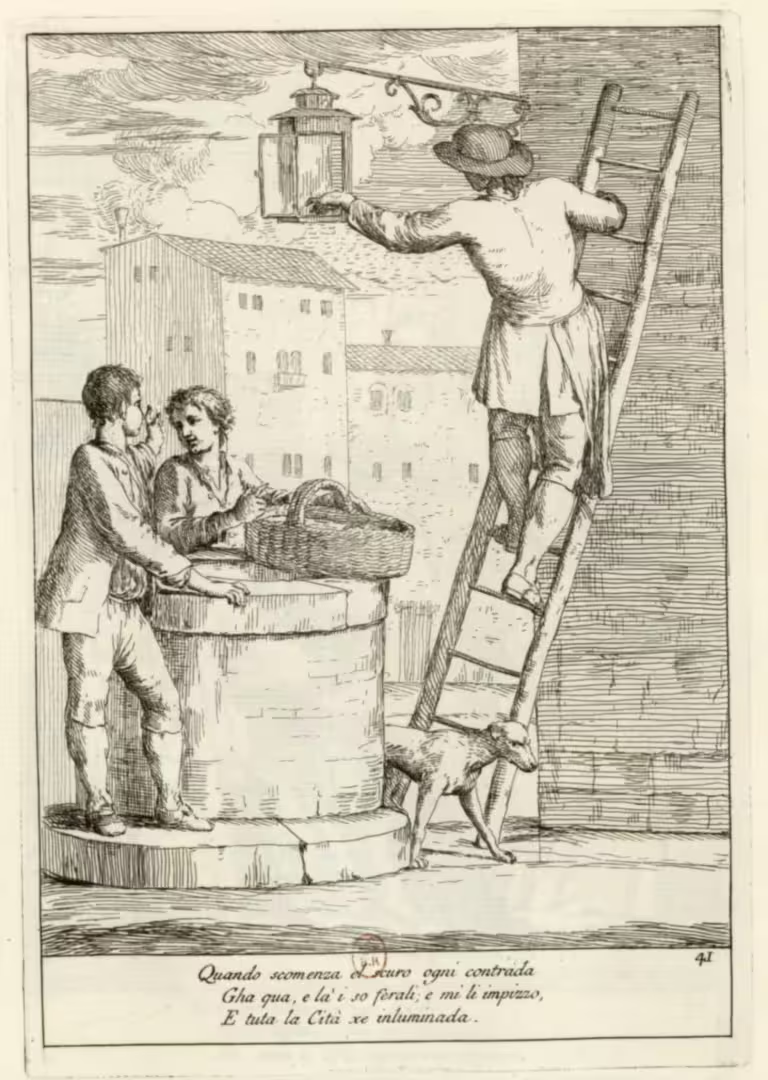
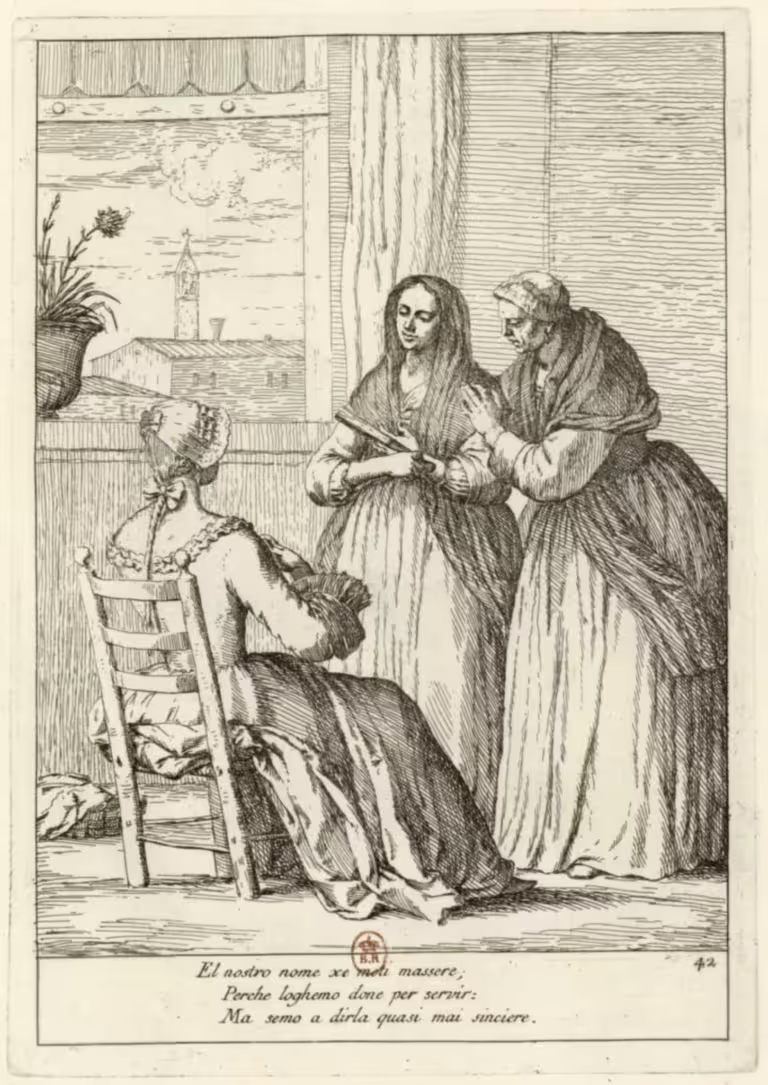
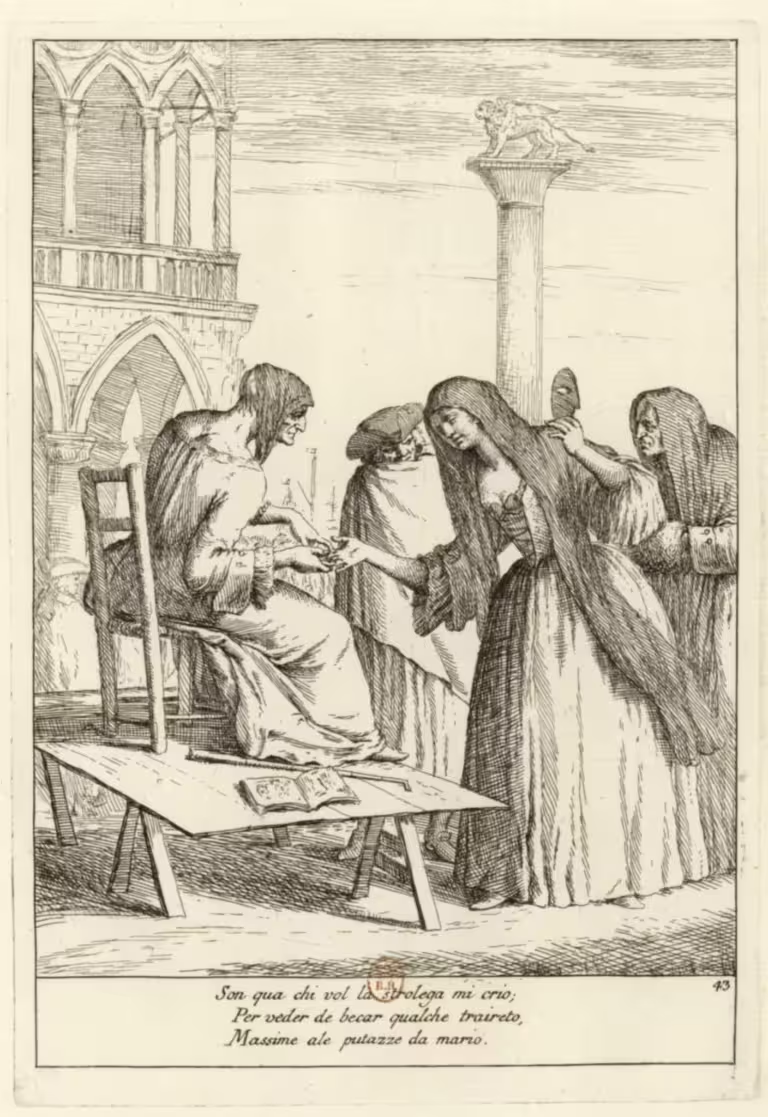
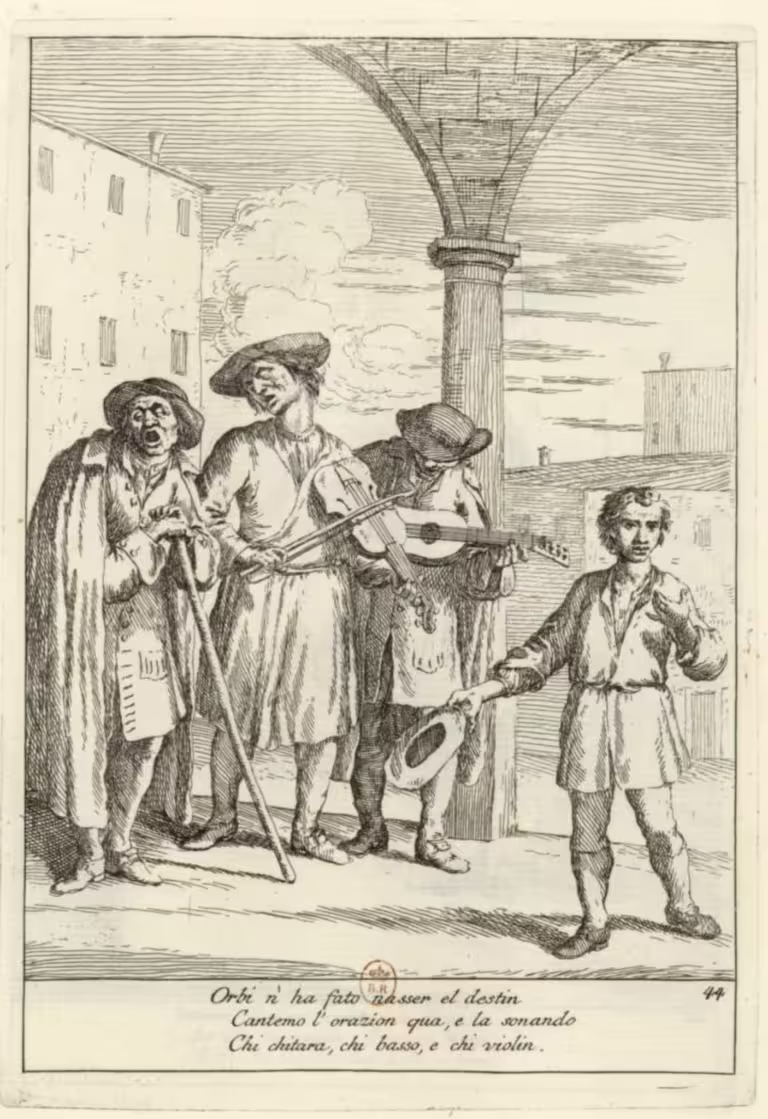
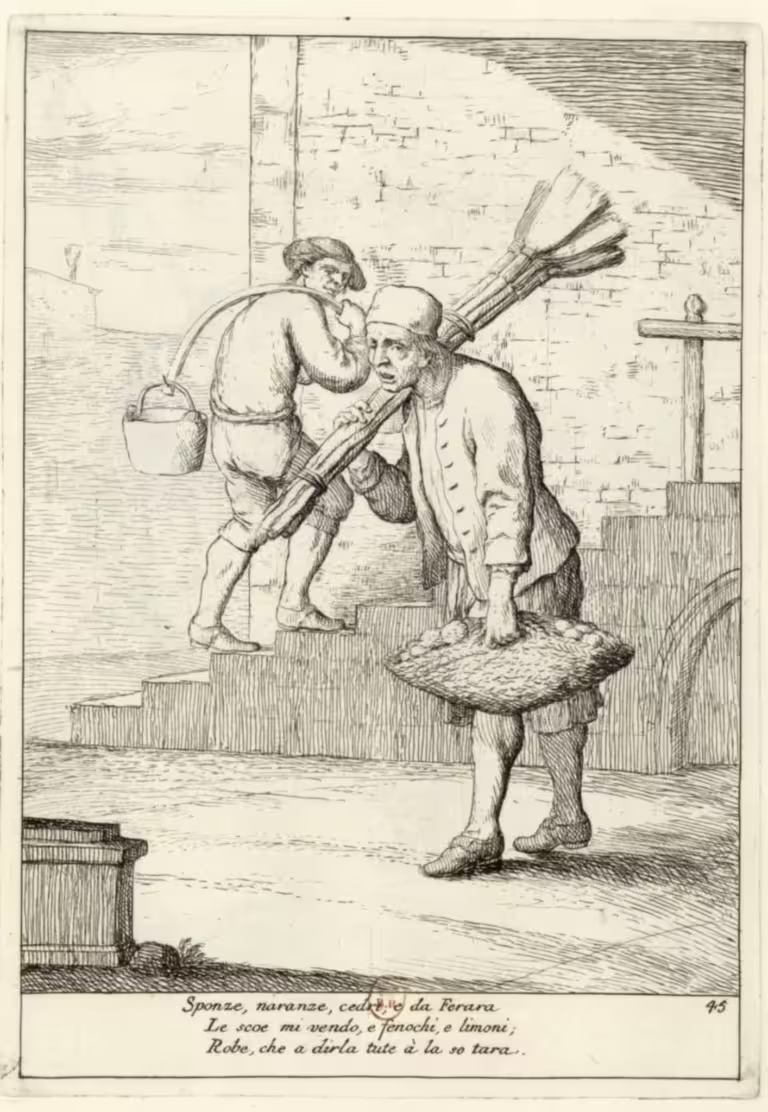
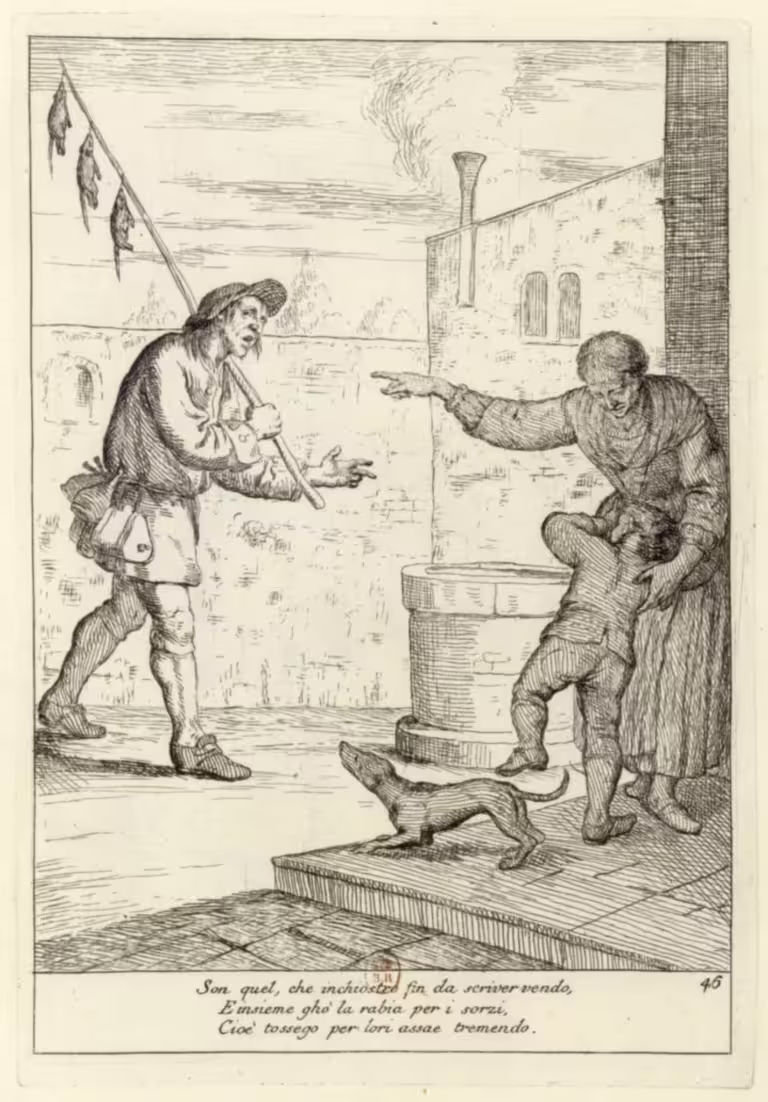
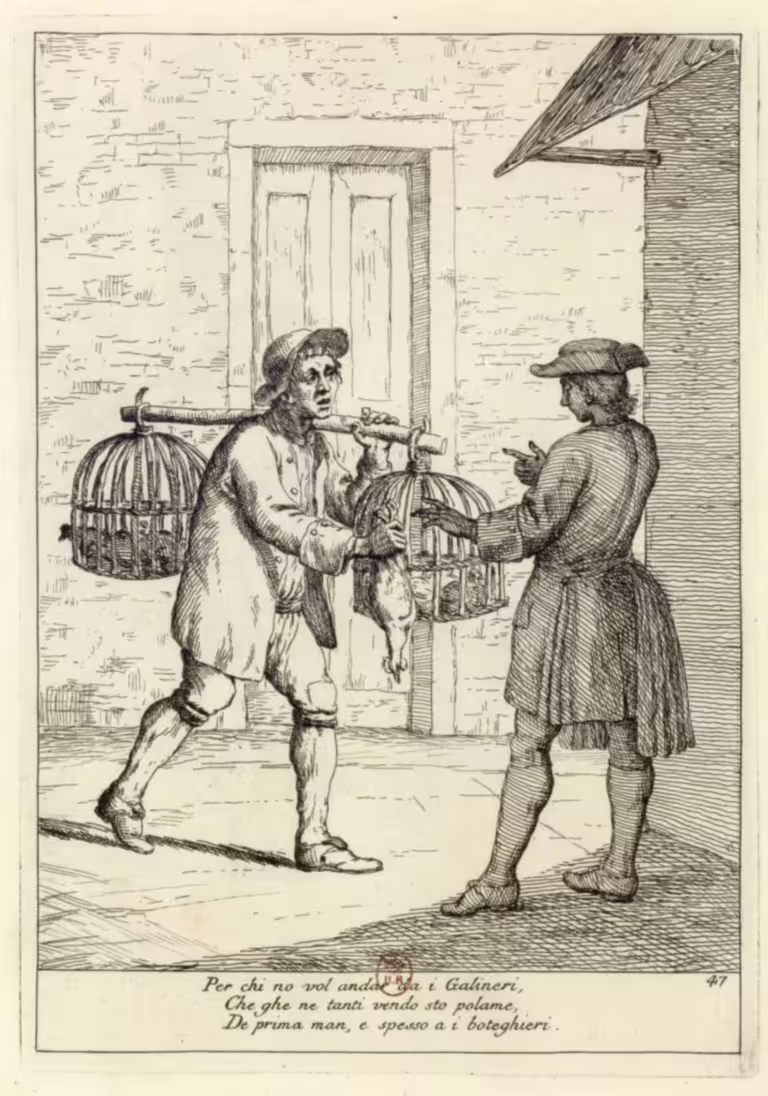
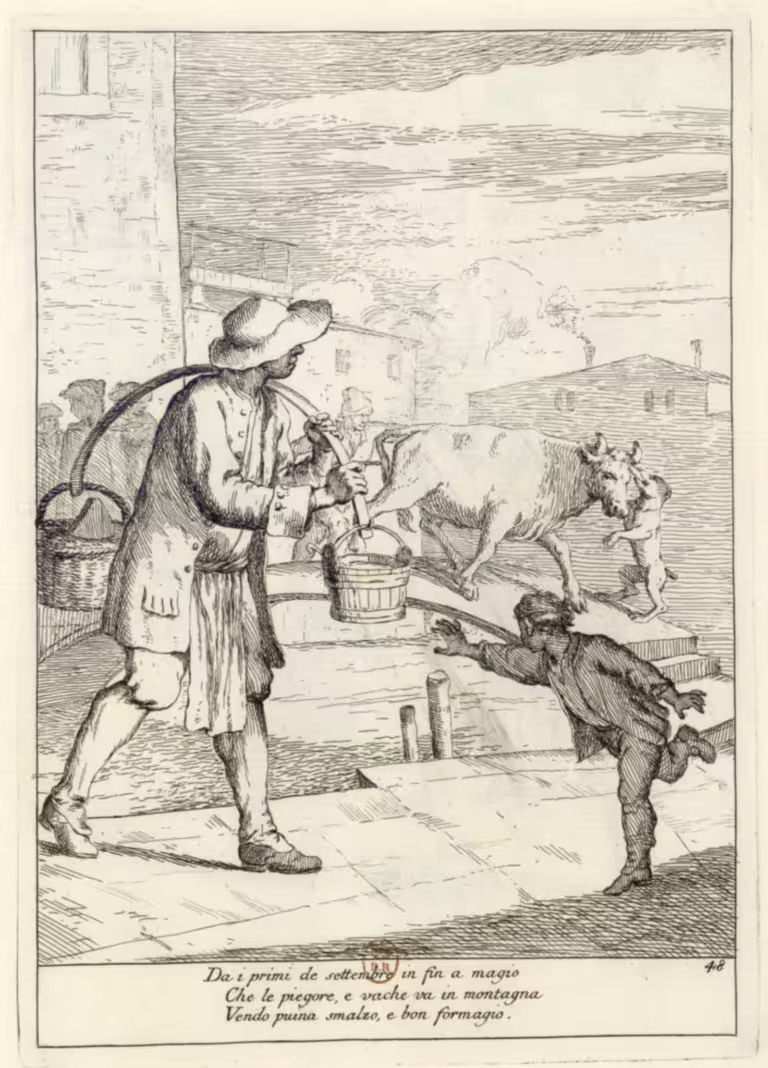
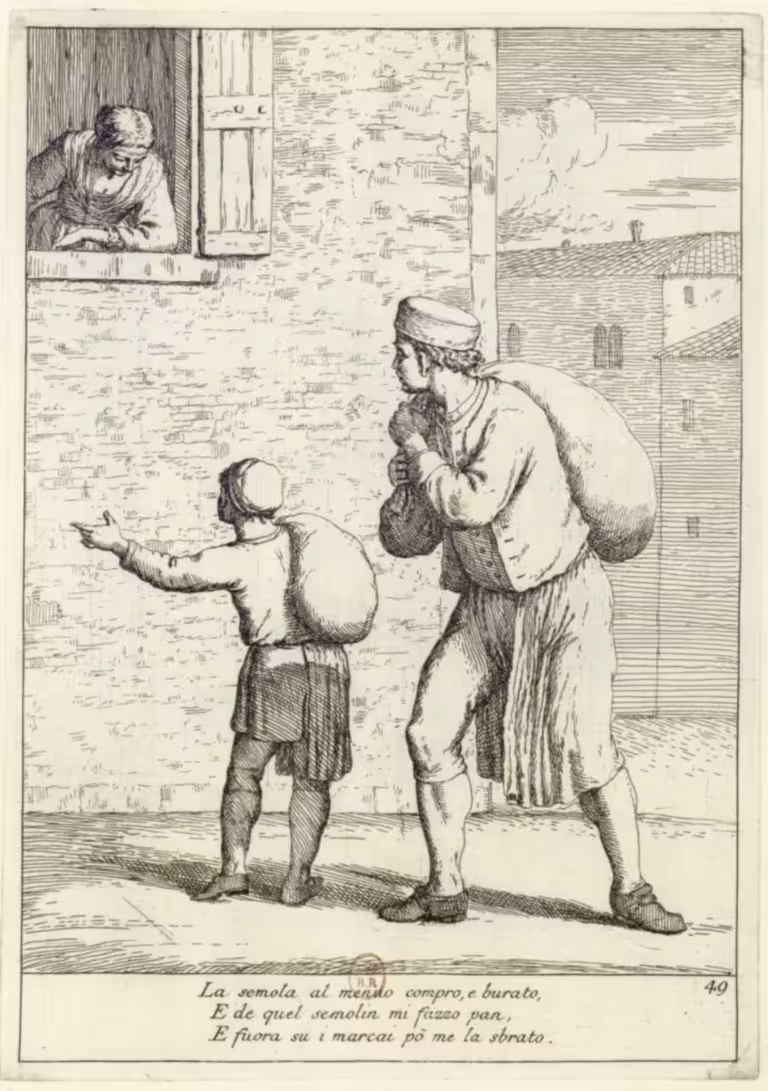
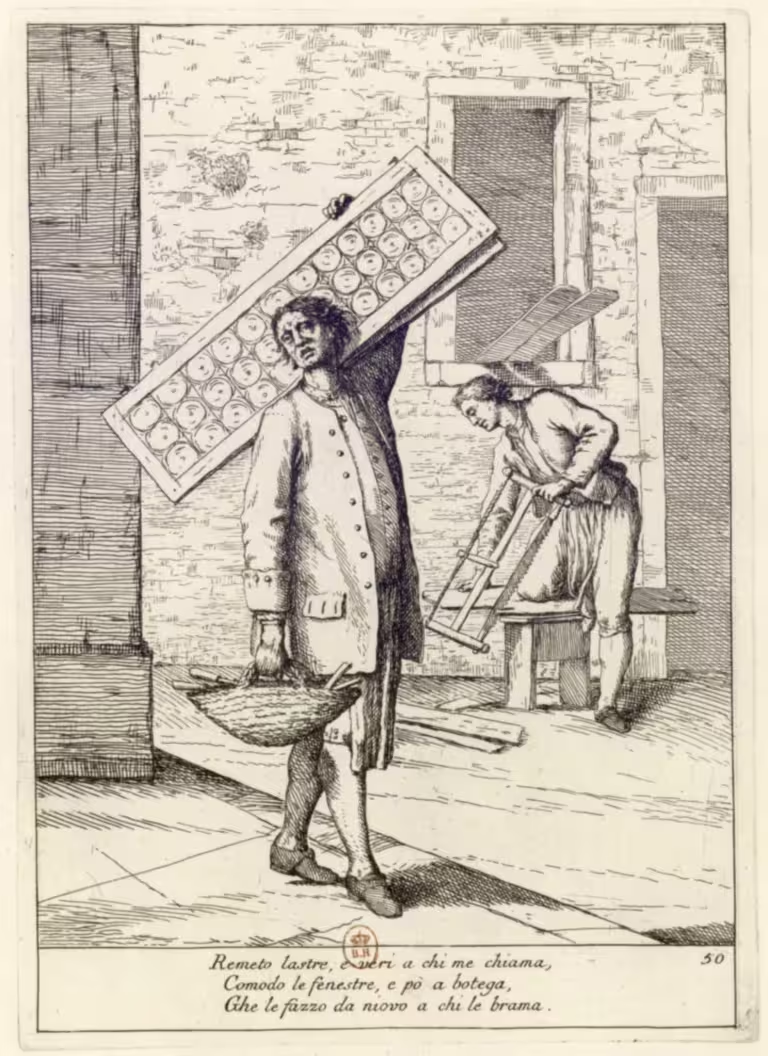
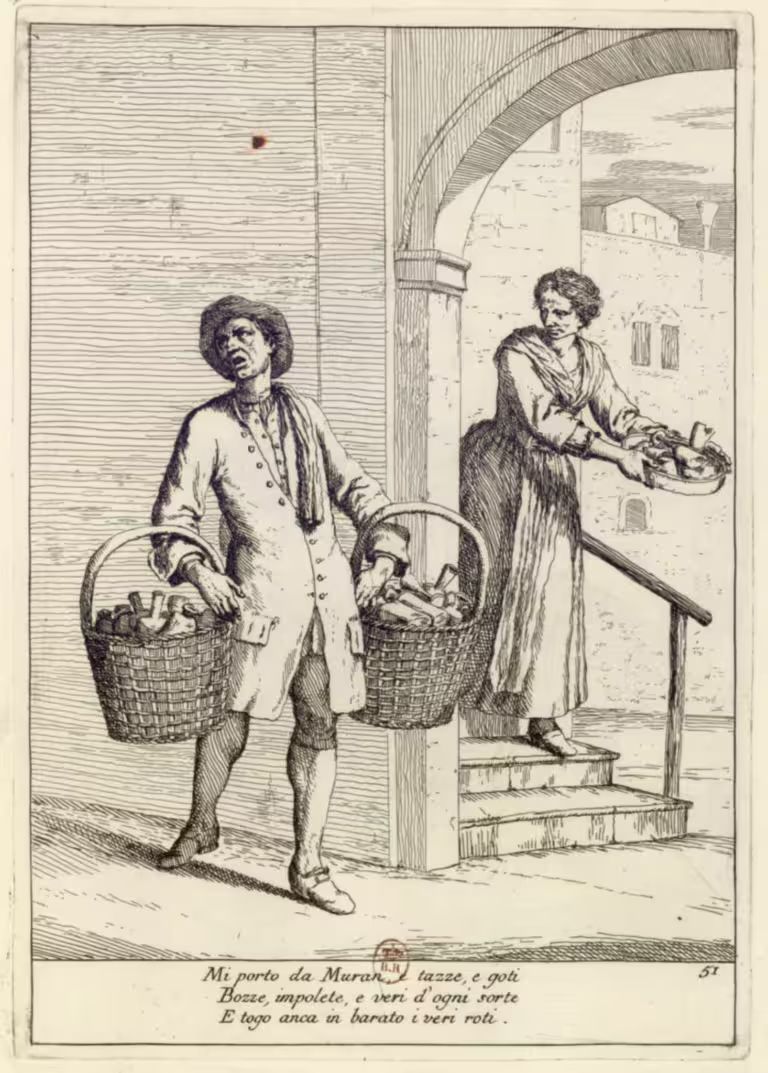

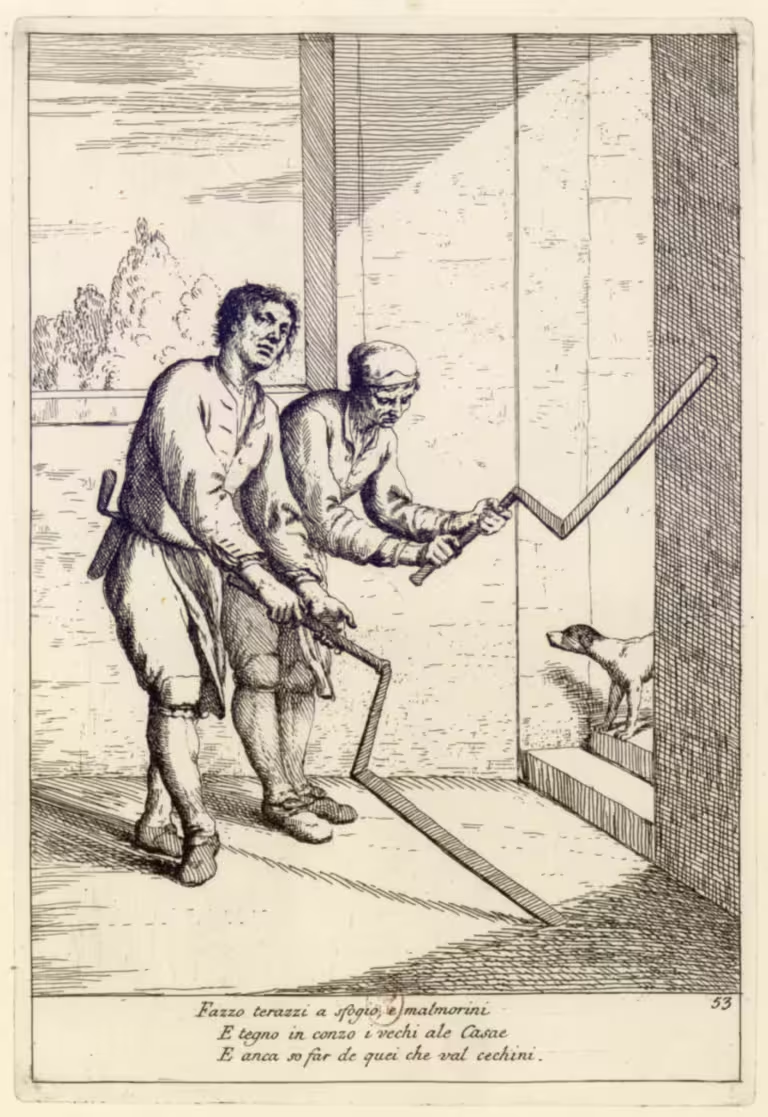
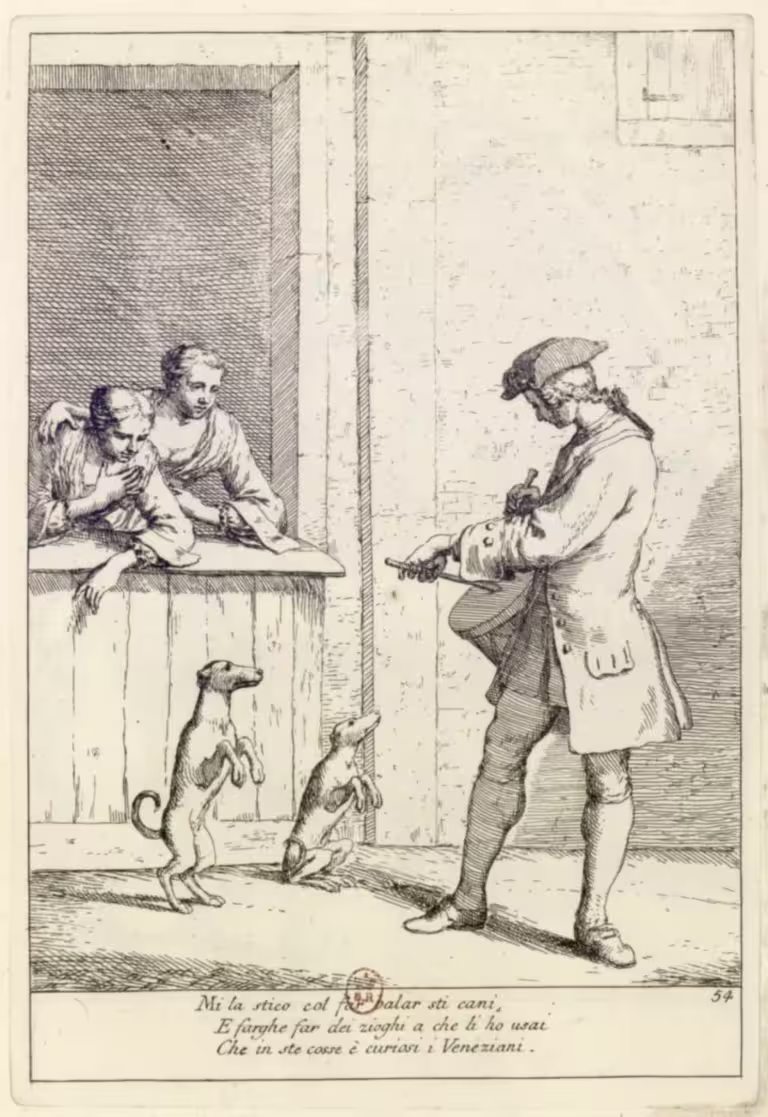
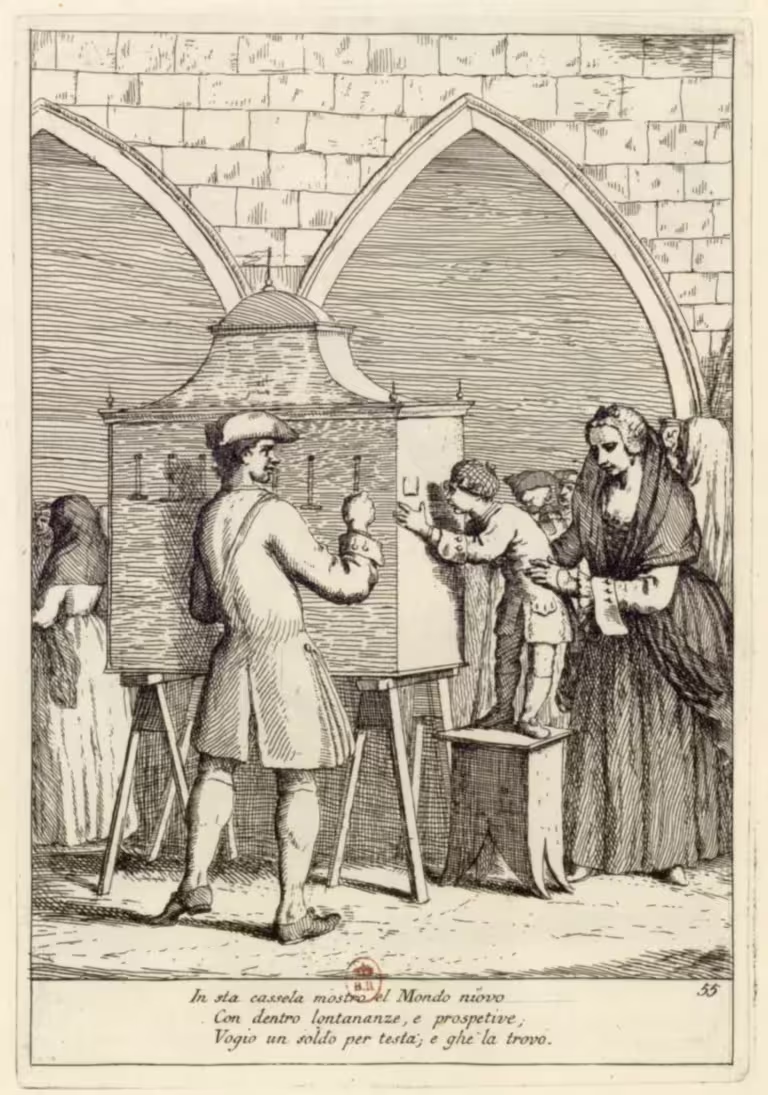
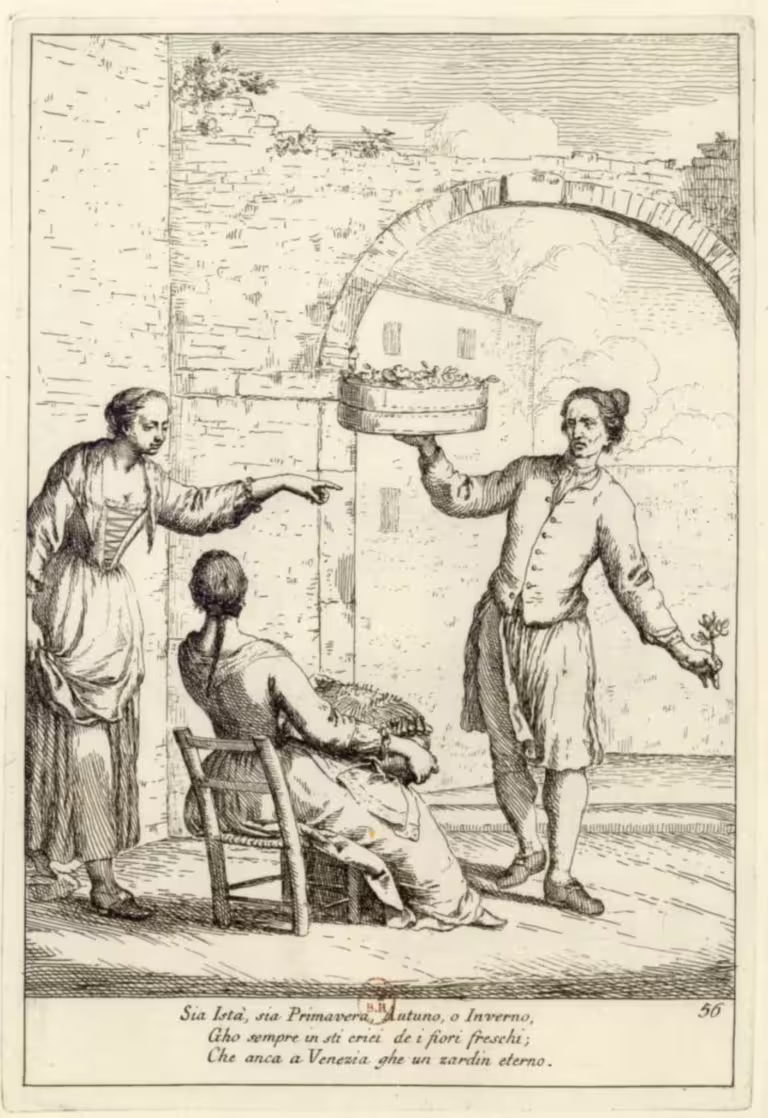
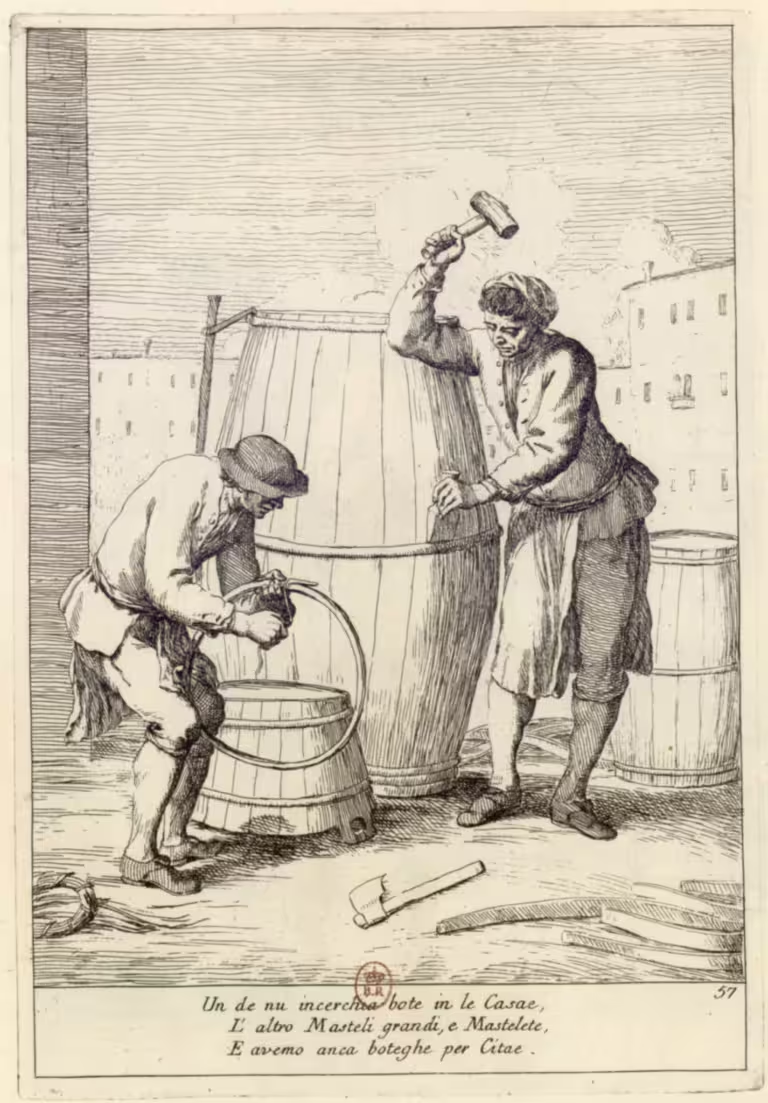

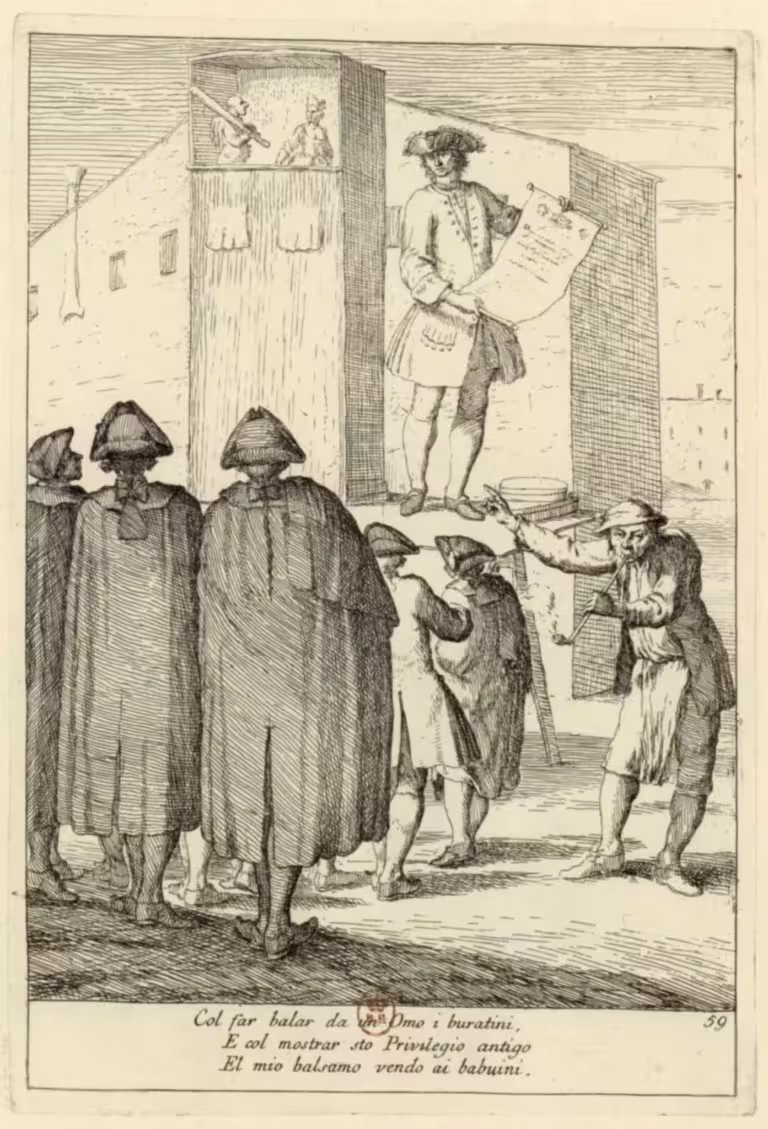
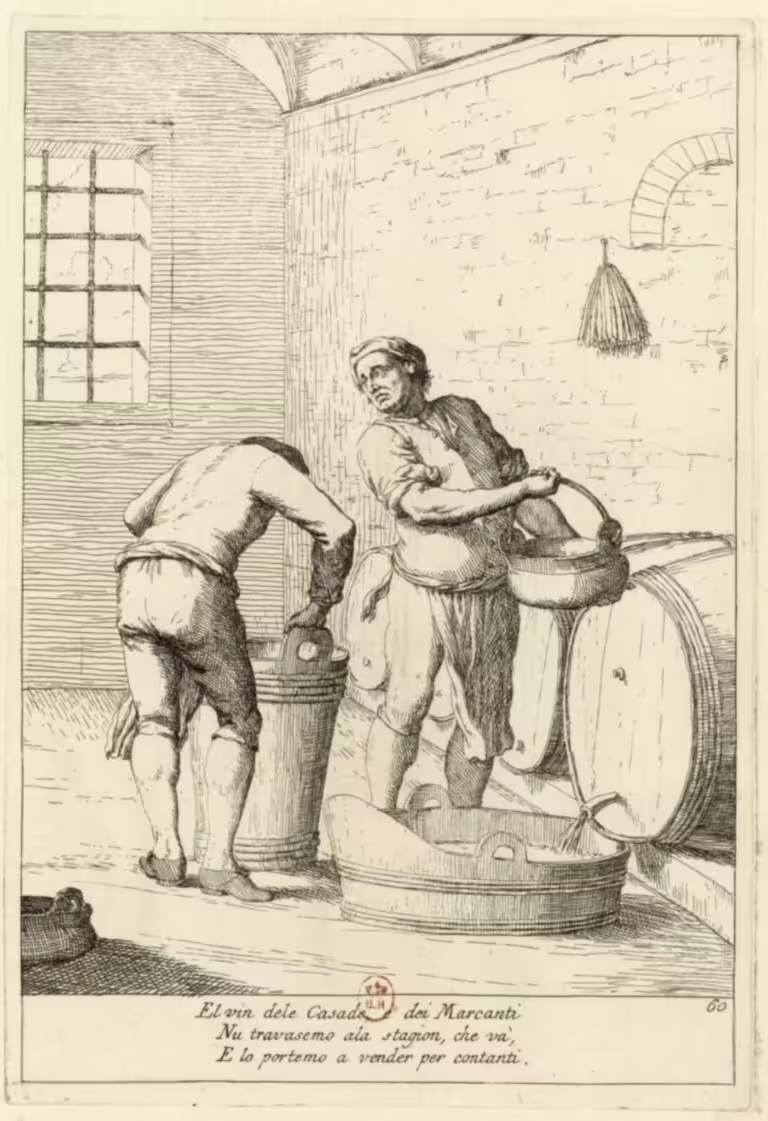
Coloured prints
These coloured prints are copied from a 1770 edition, with the double index.
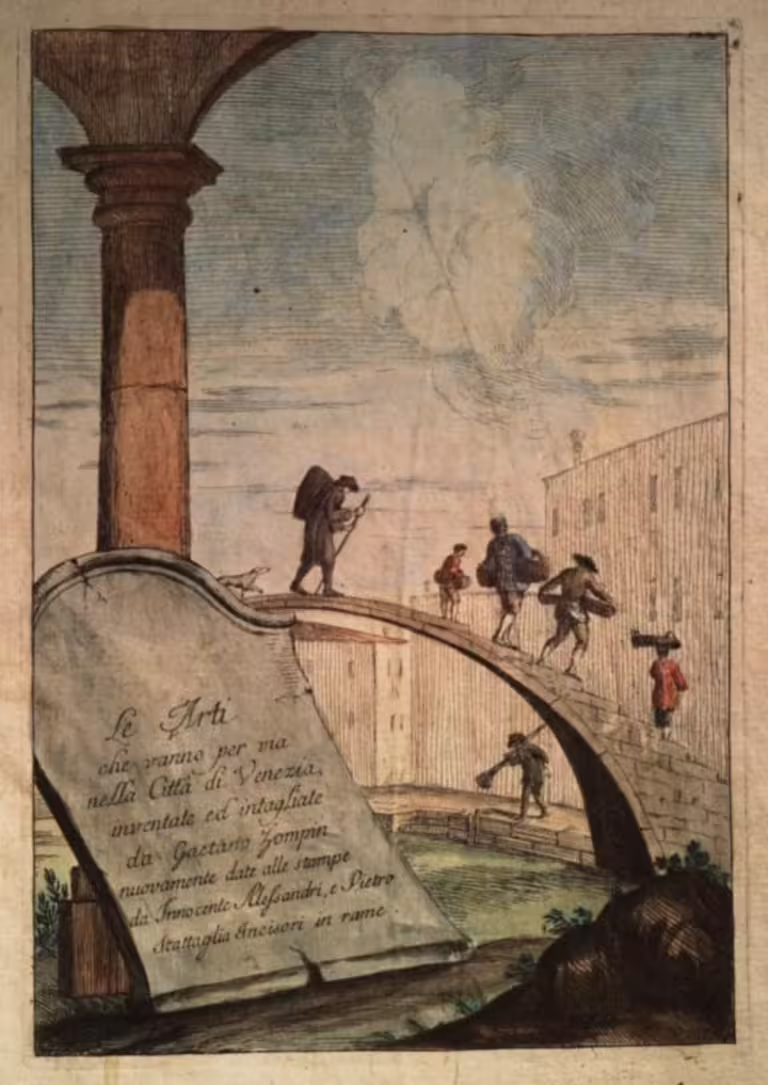

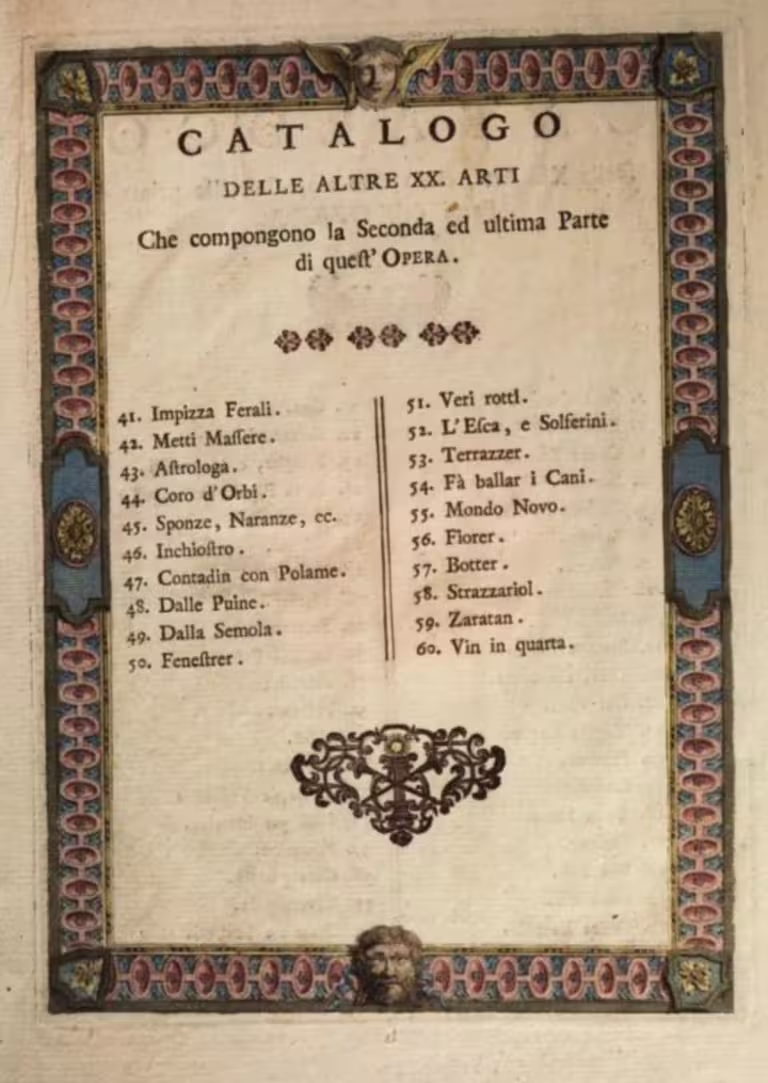
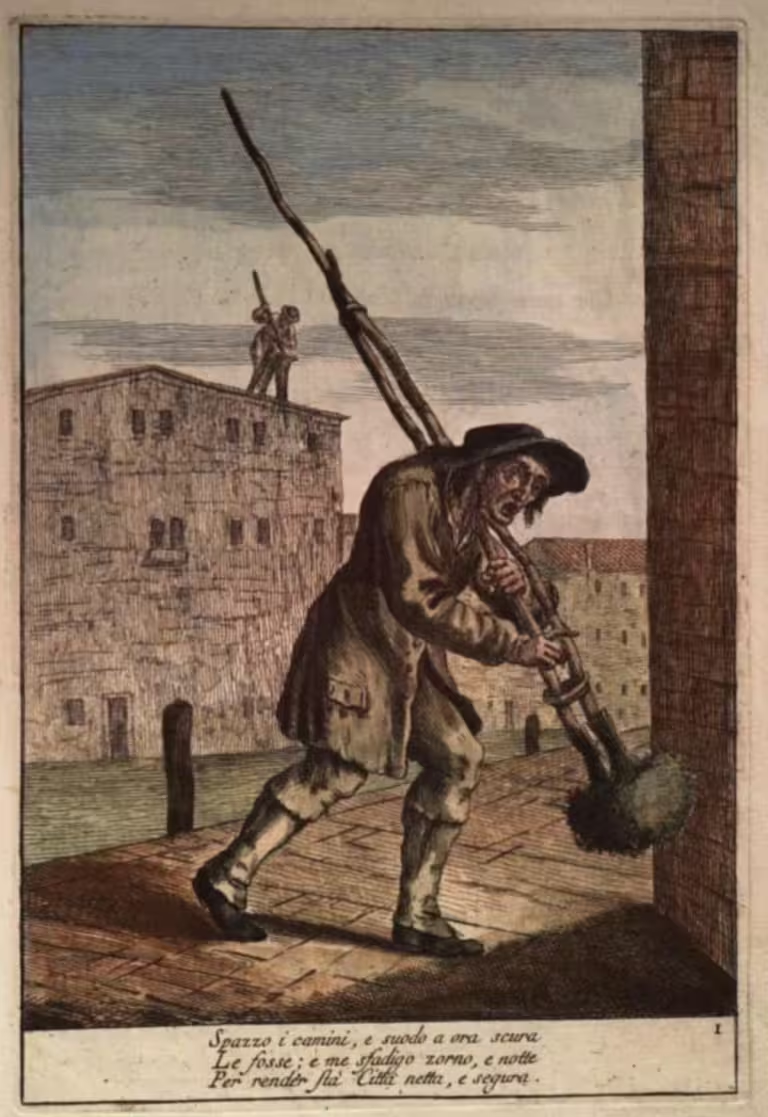

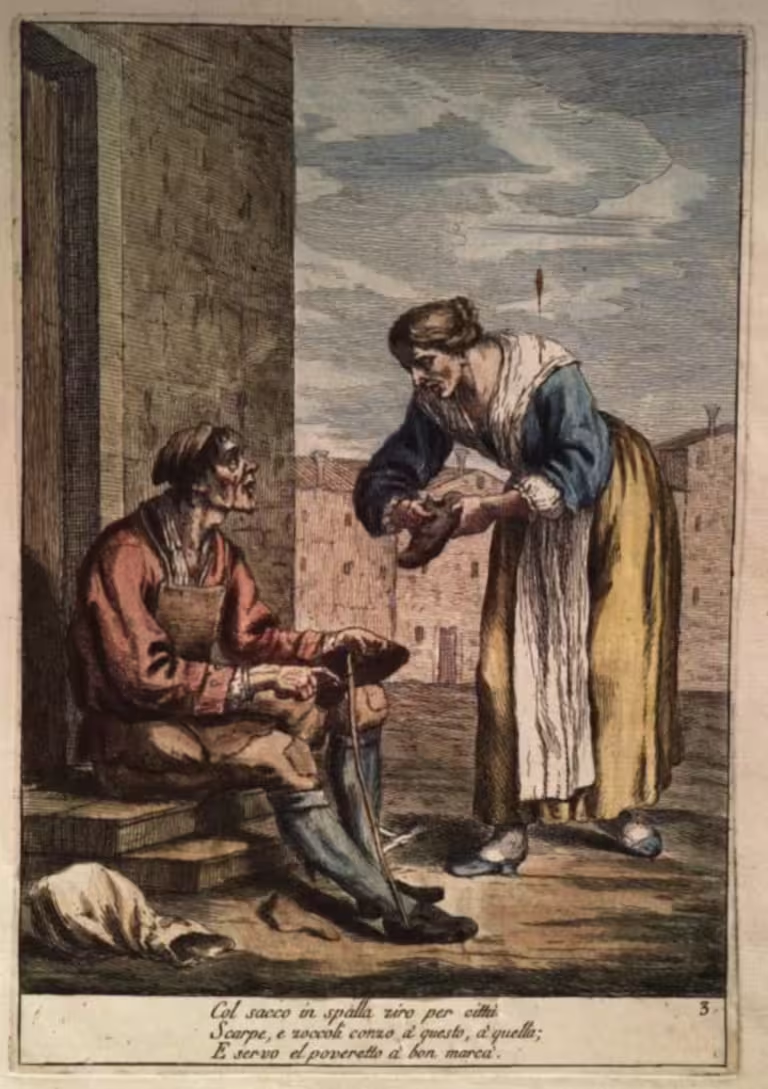
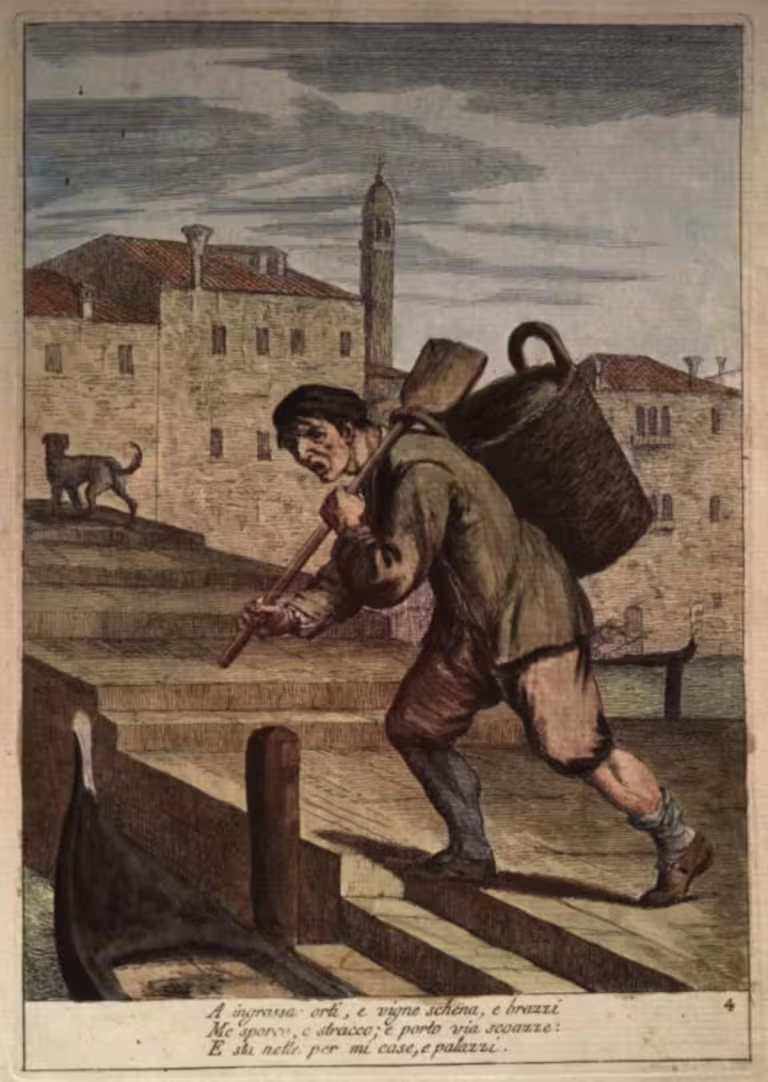

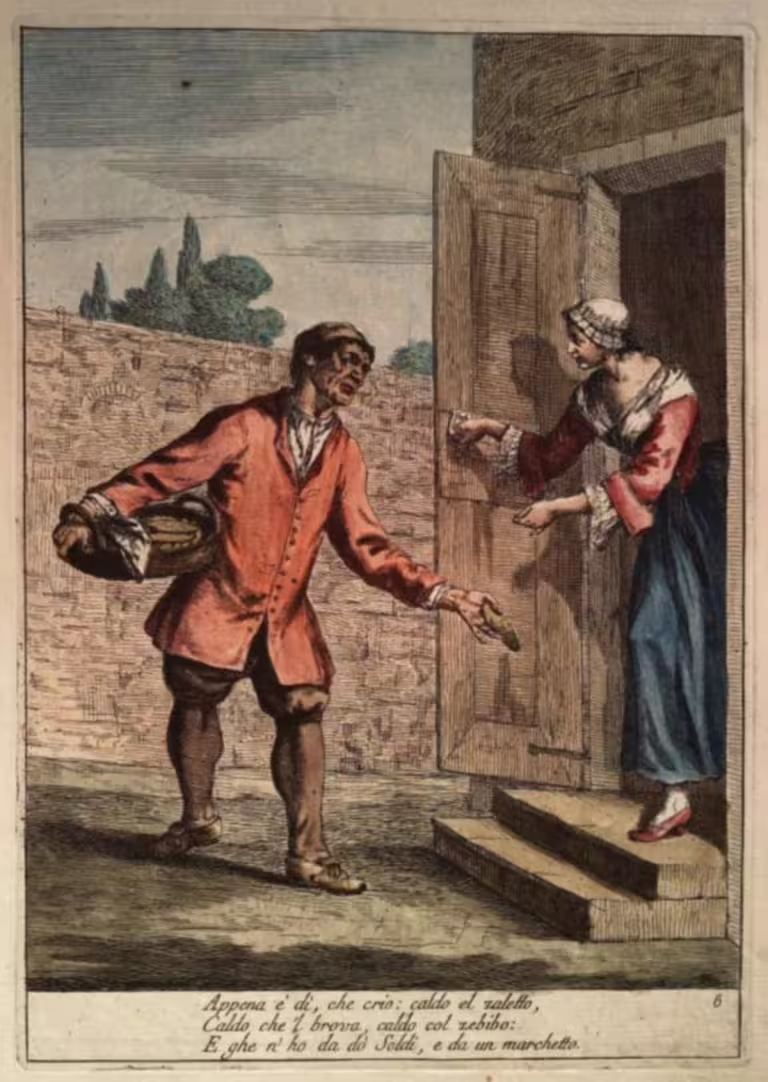
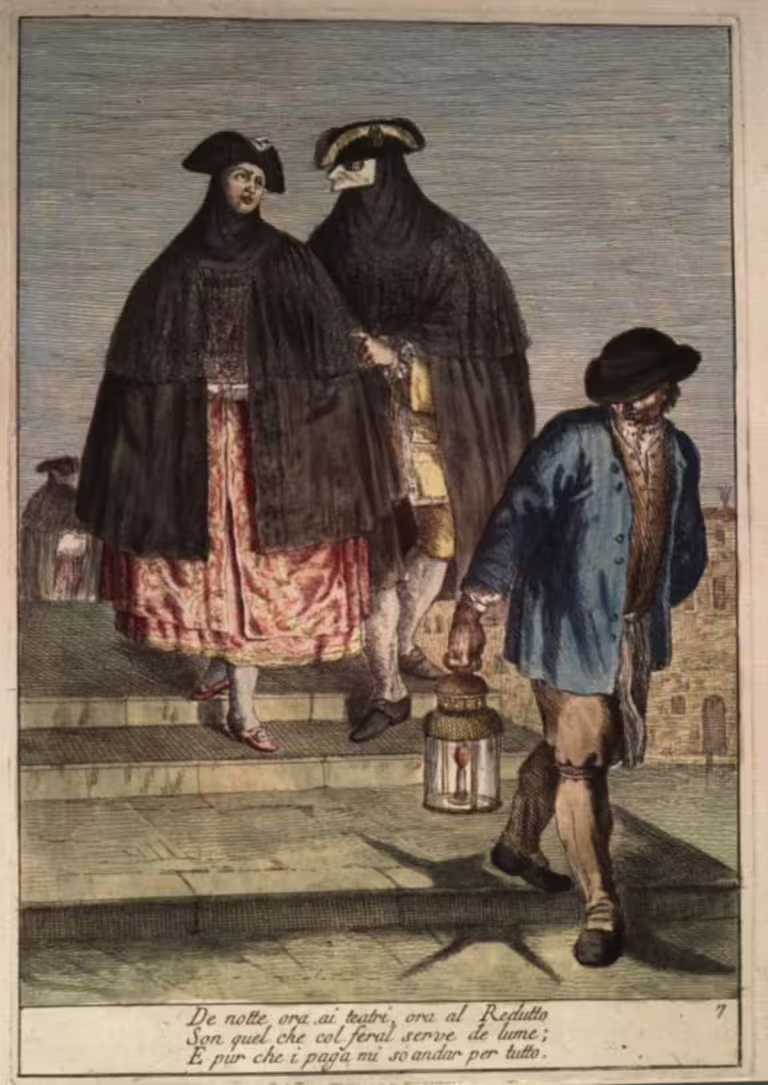

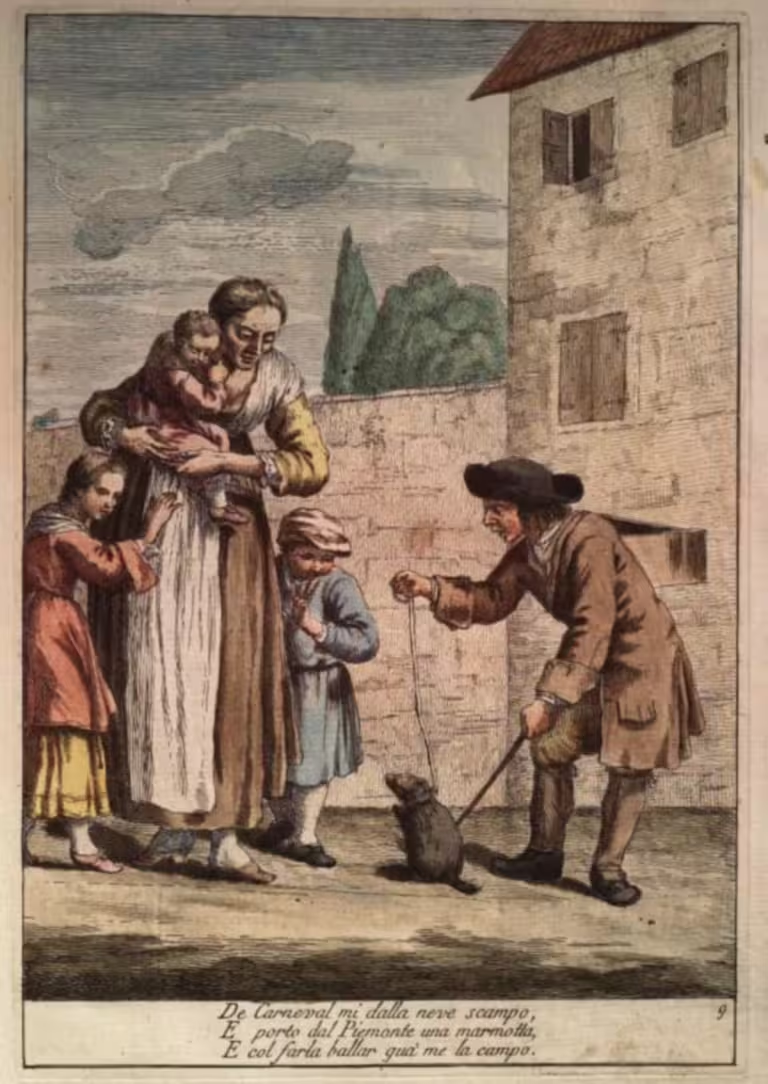
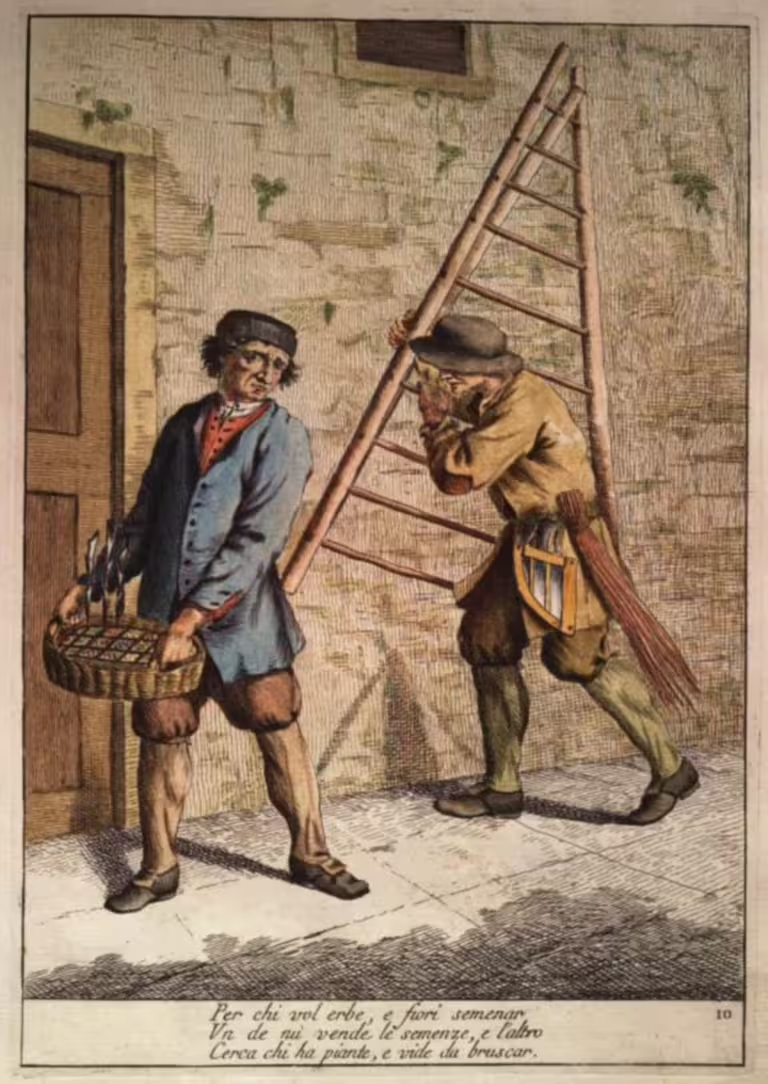

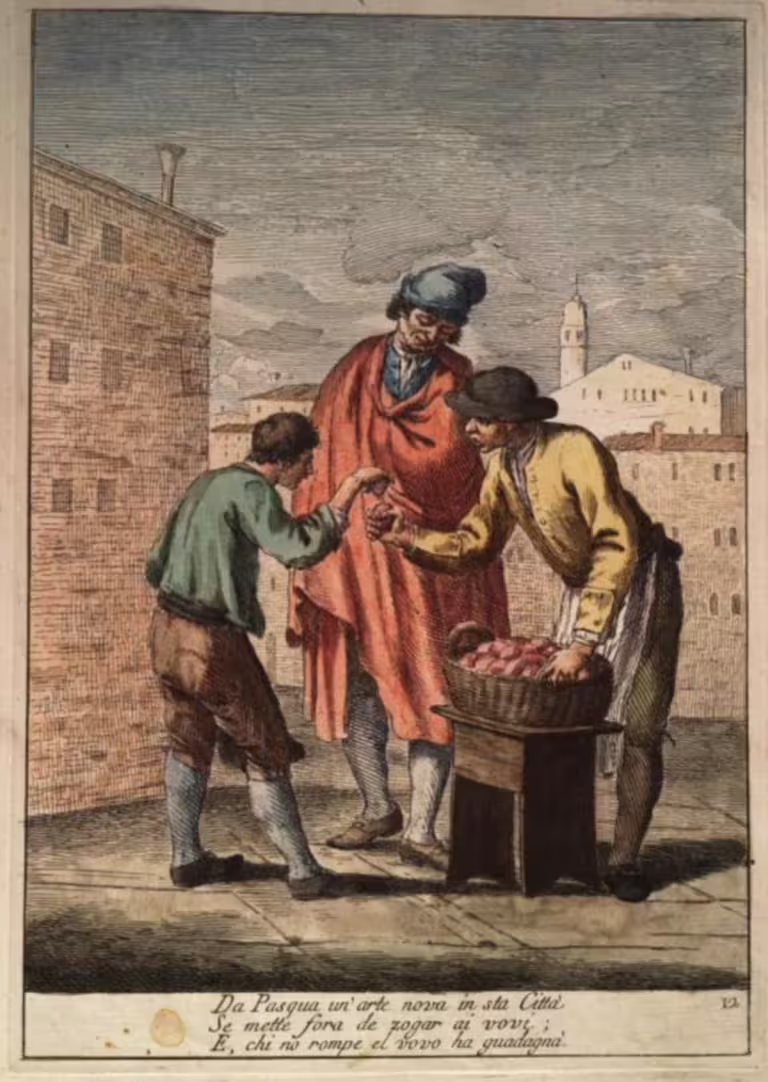
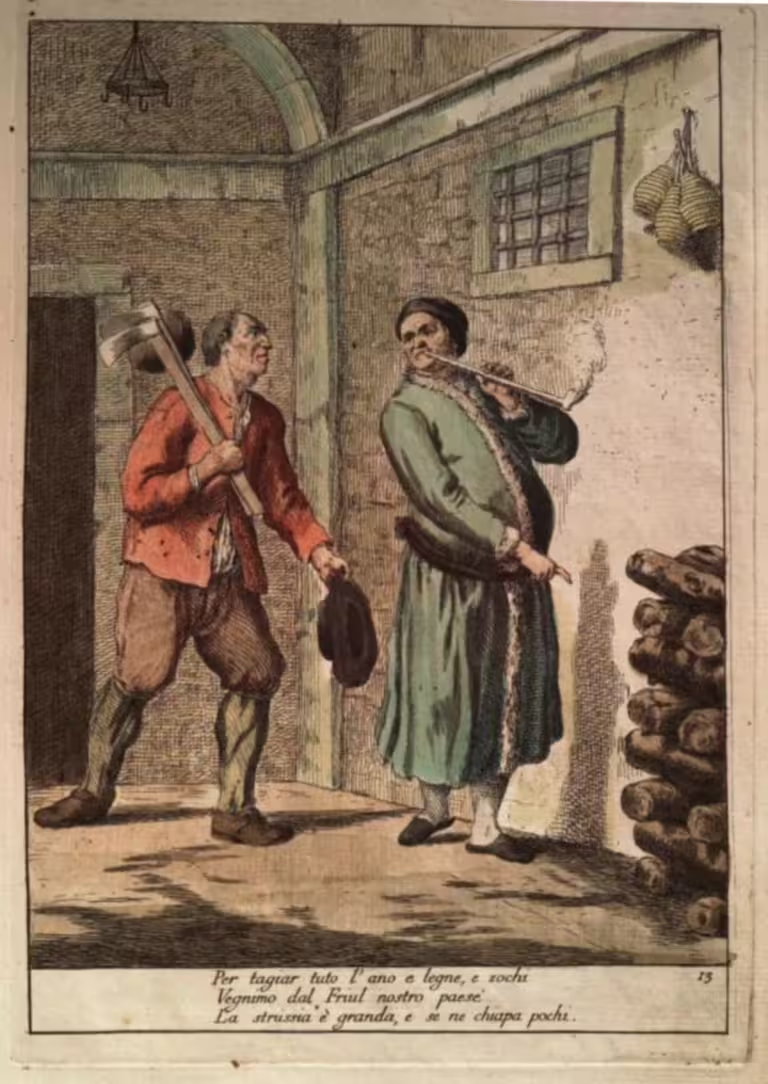
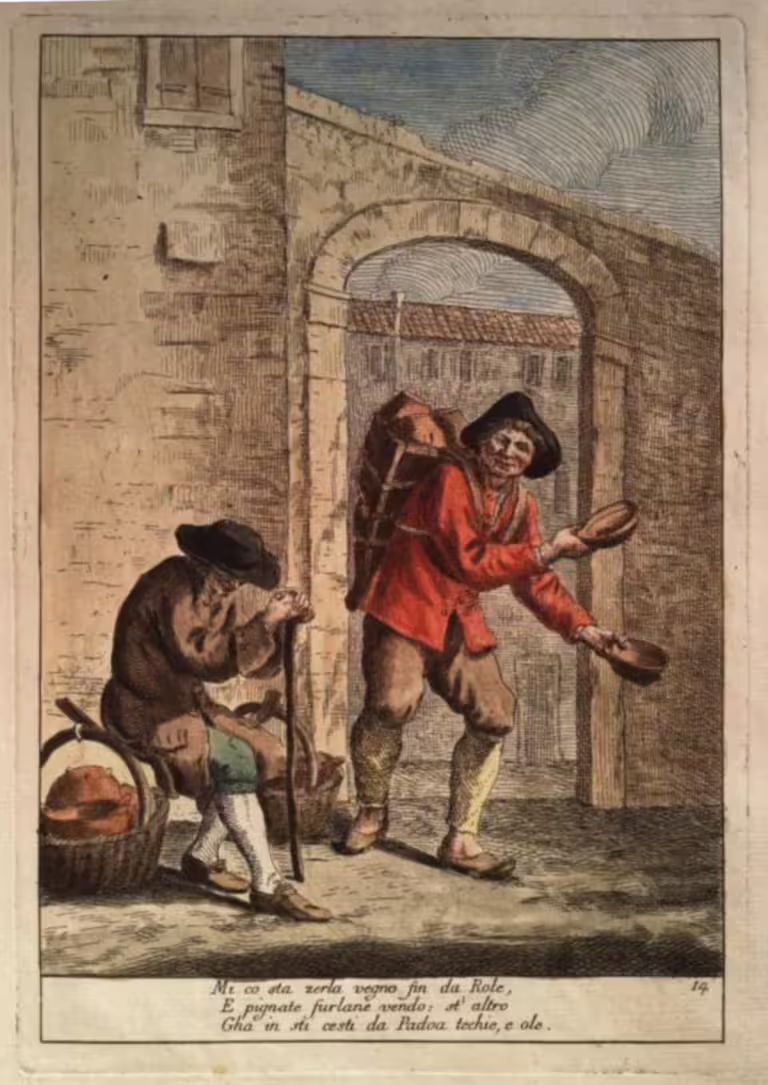
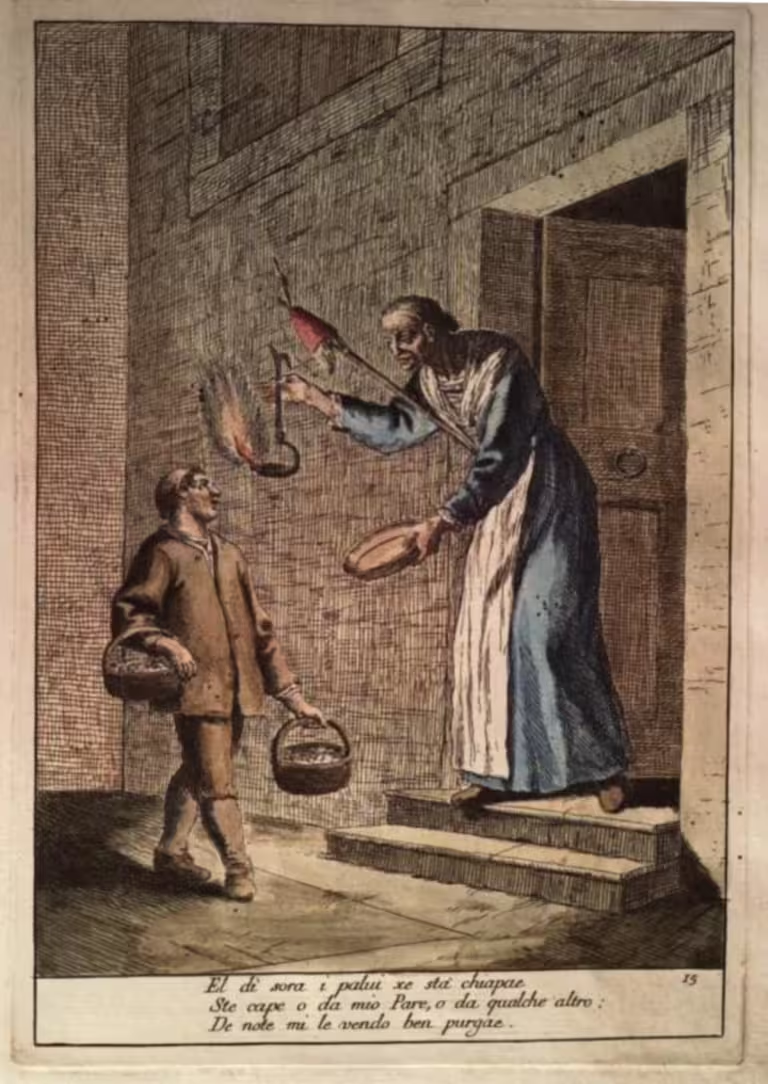
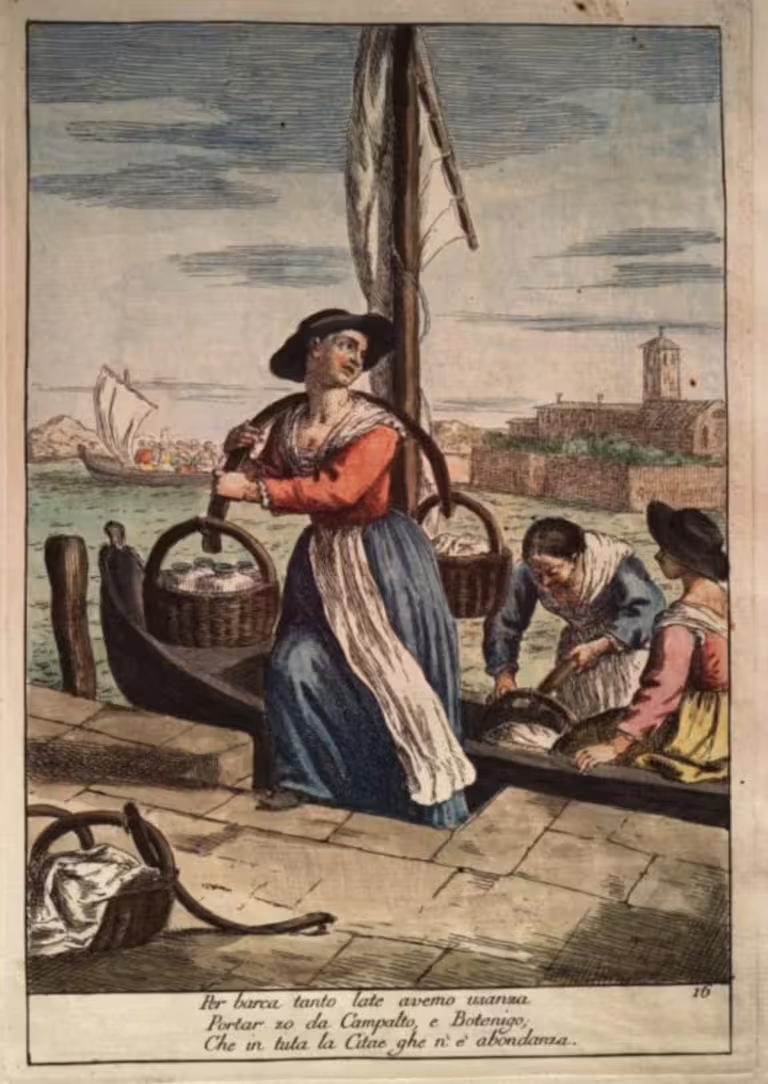
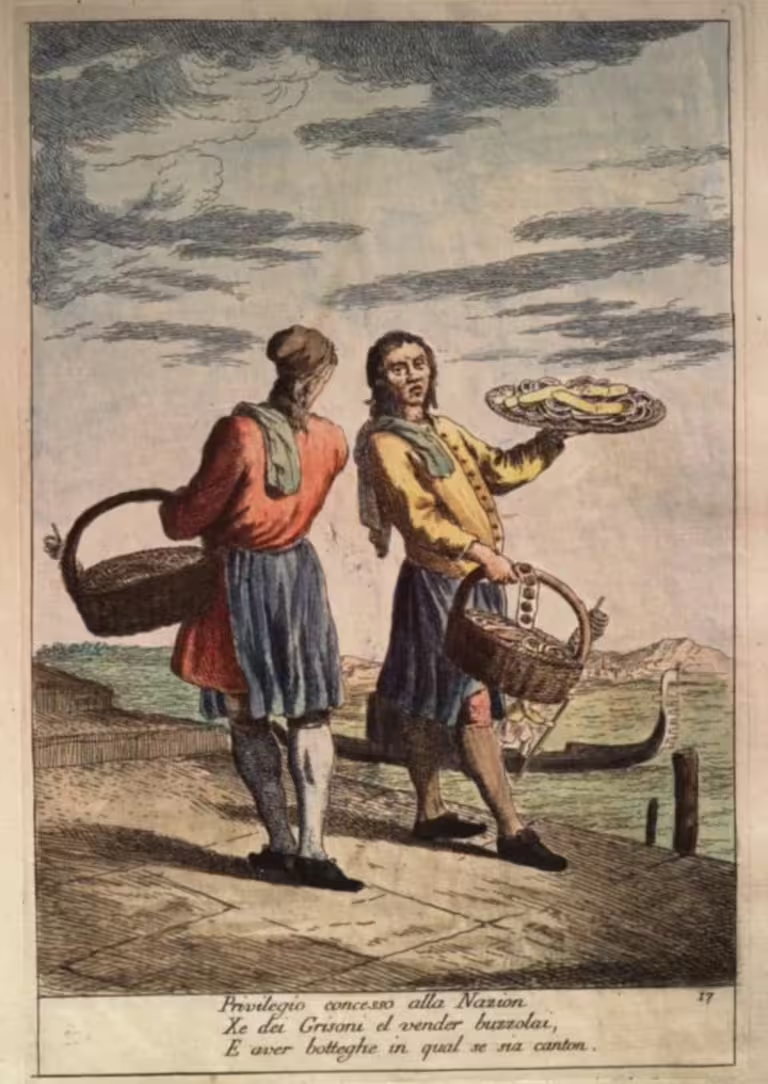
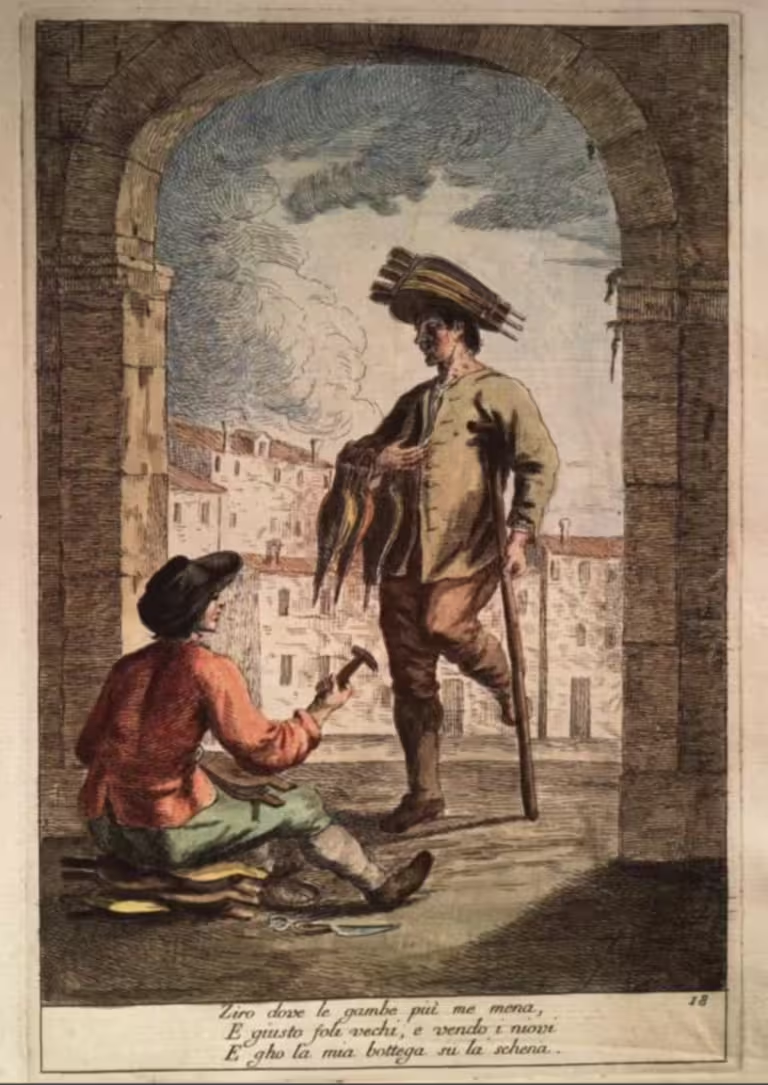
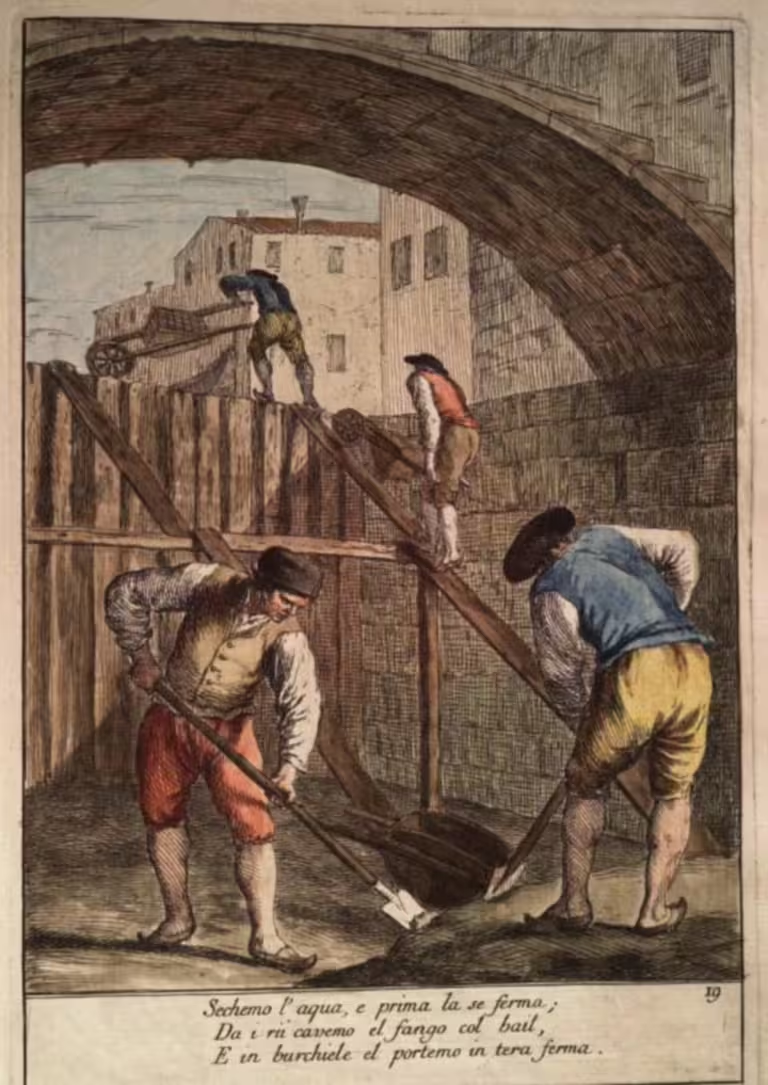
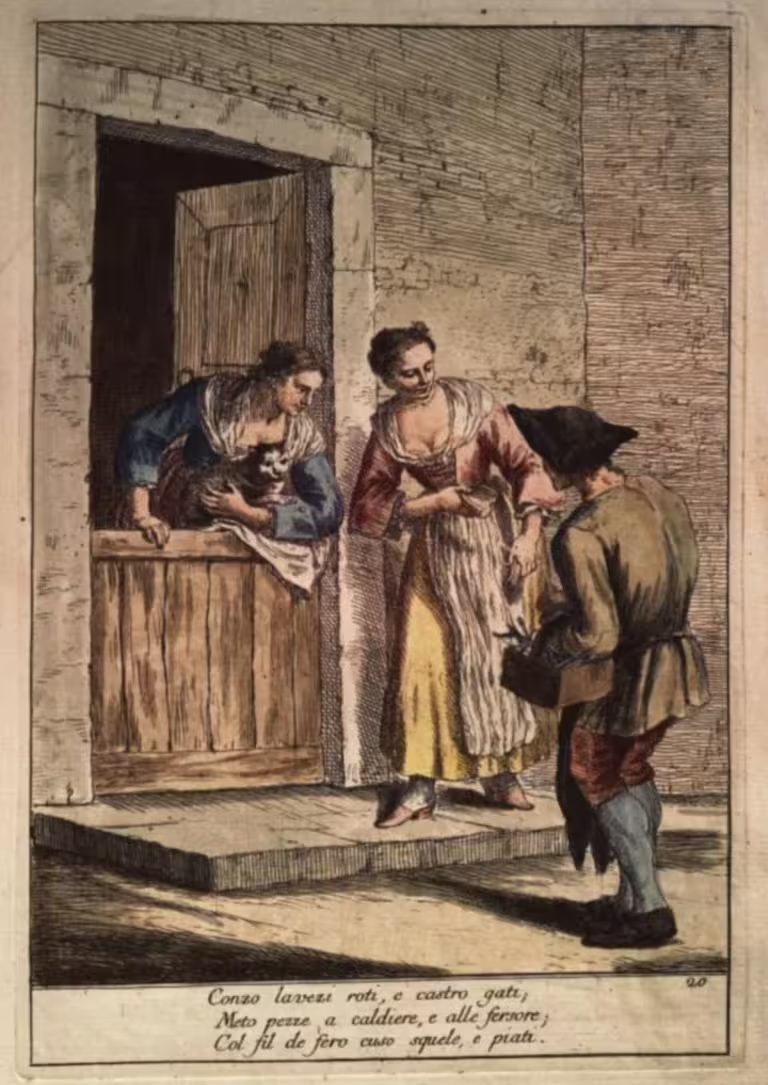
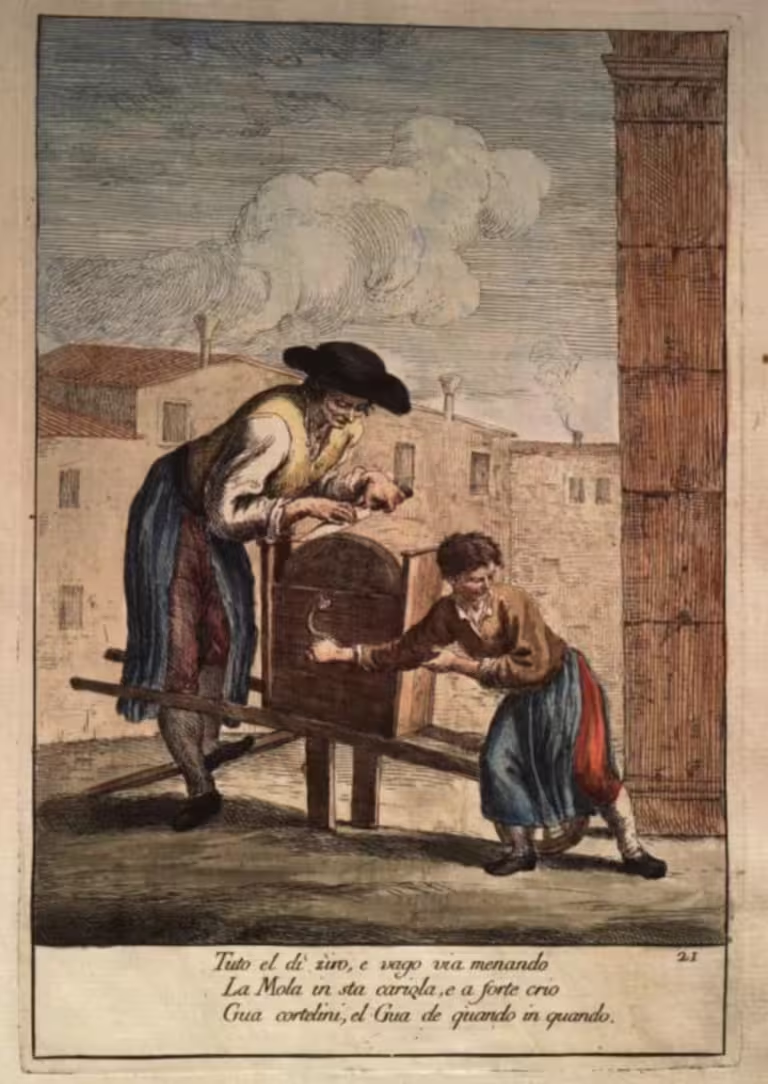
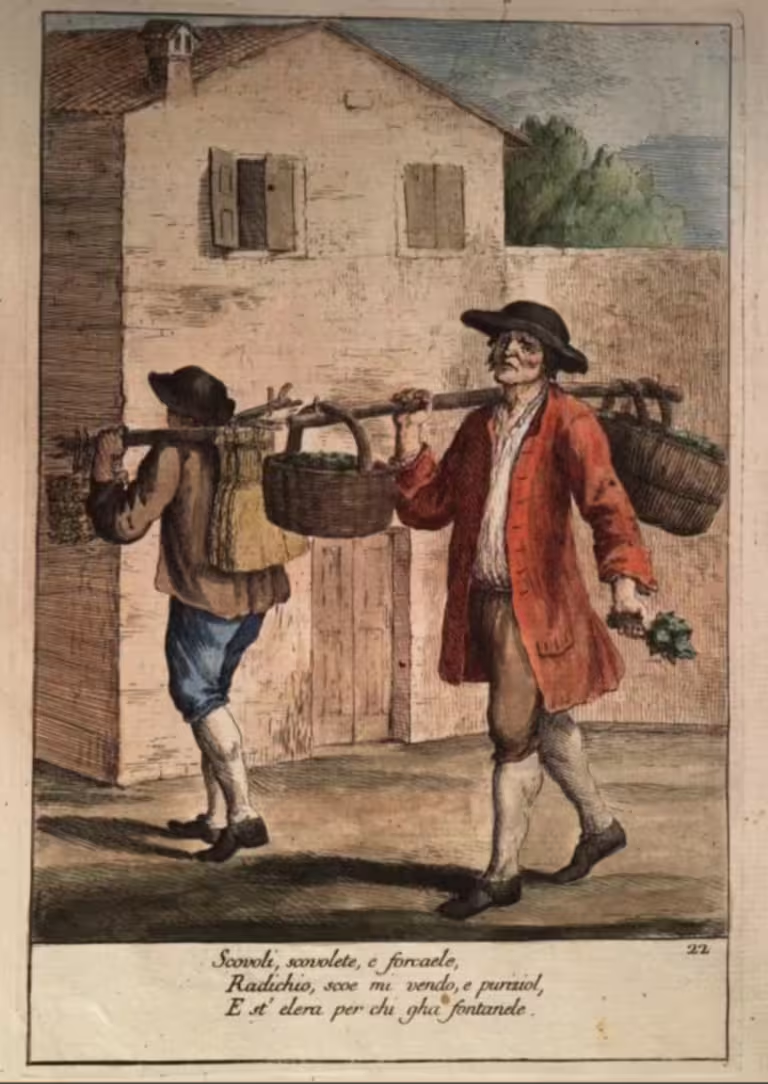
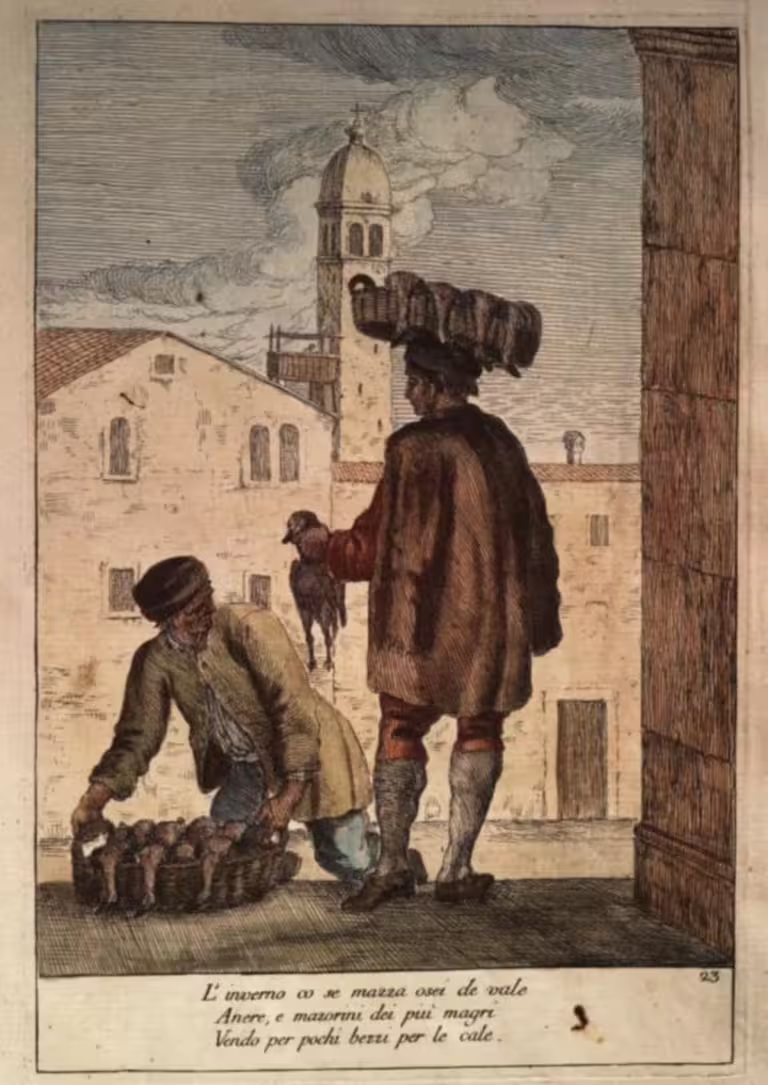

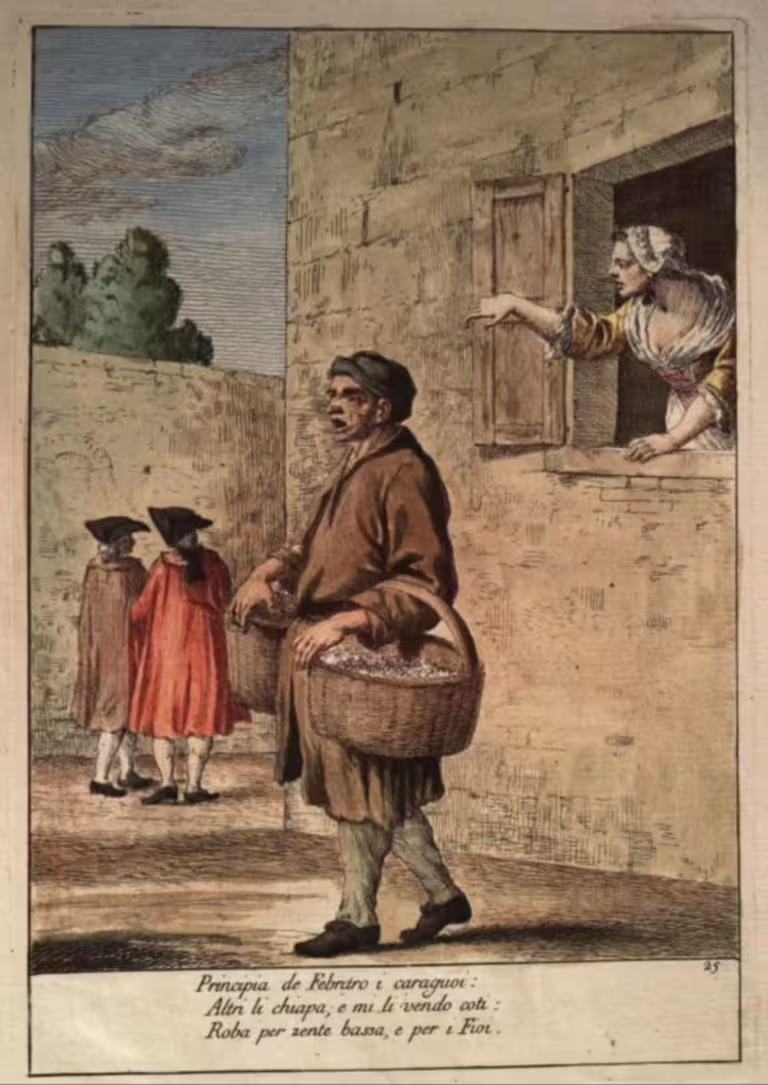
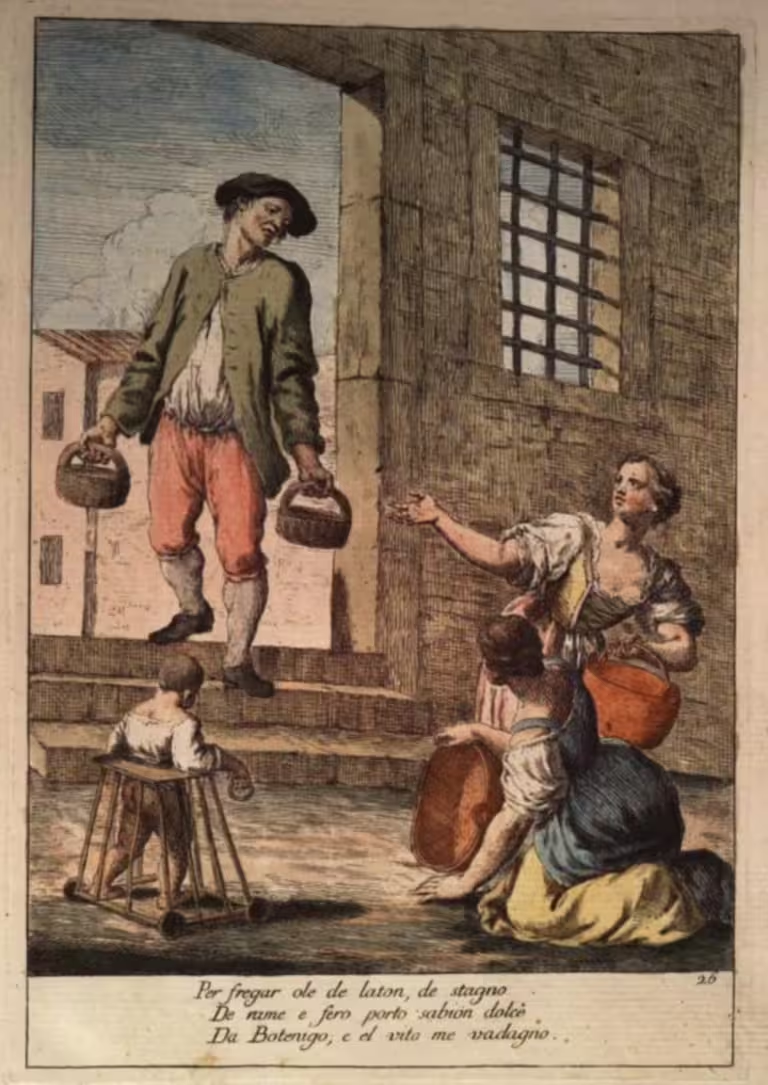


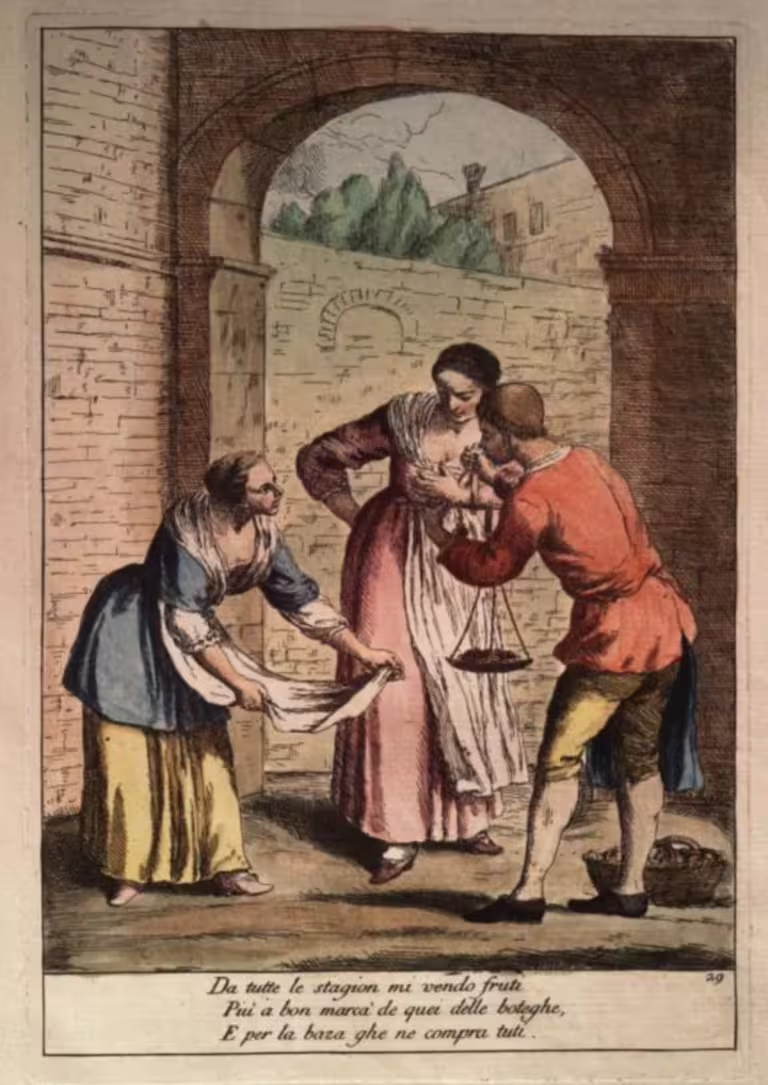
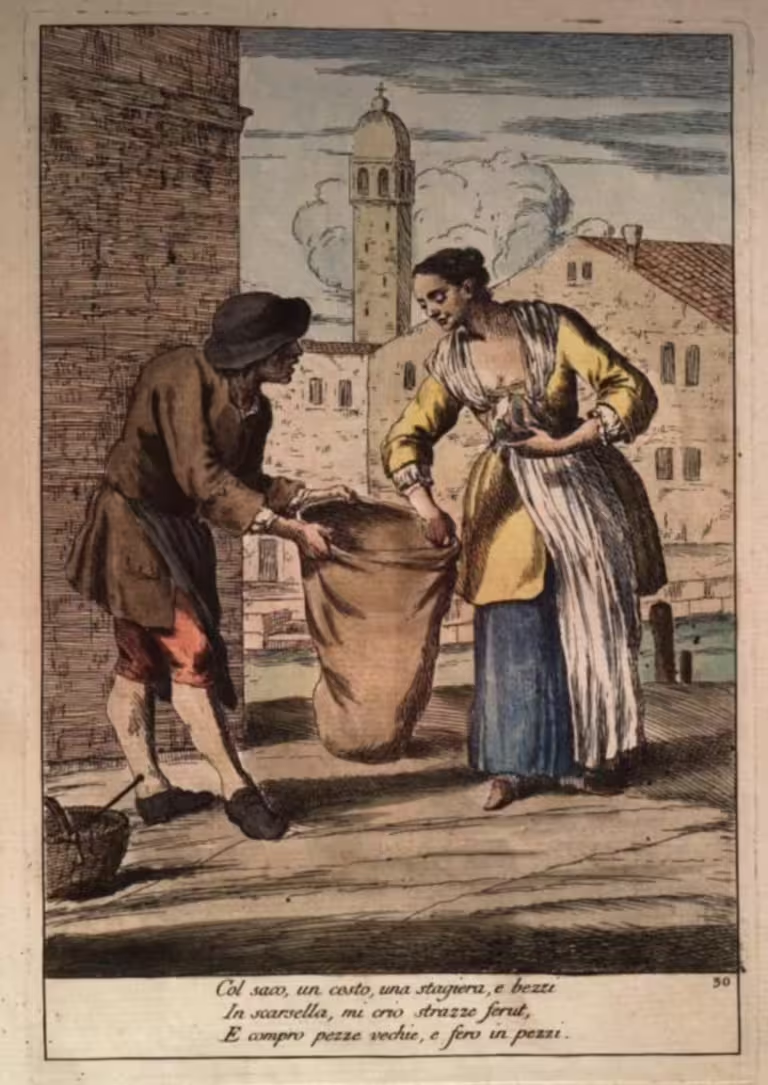
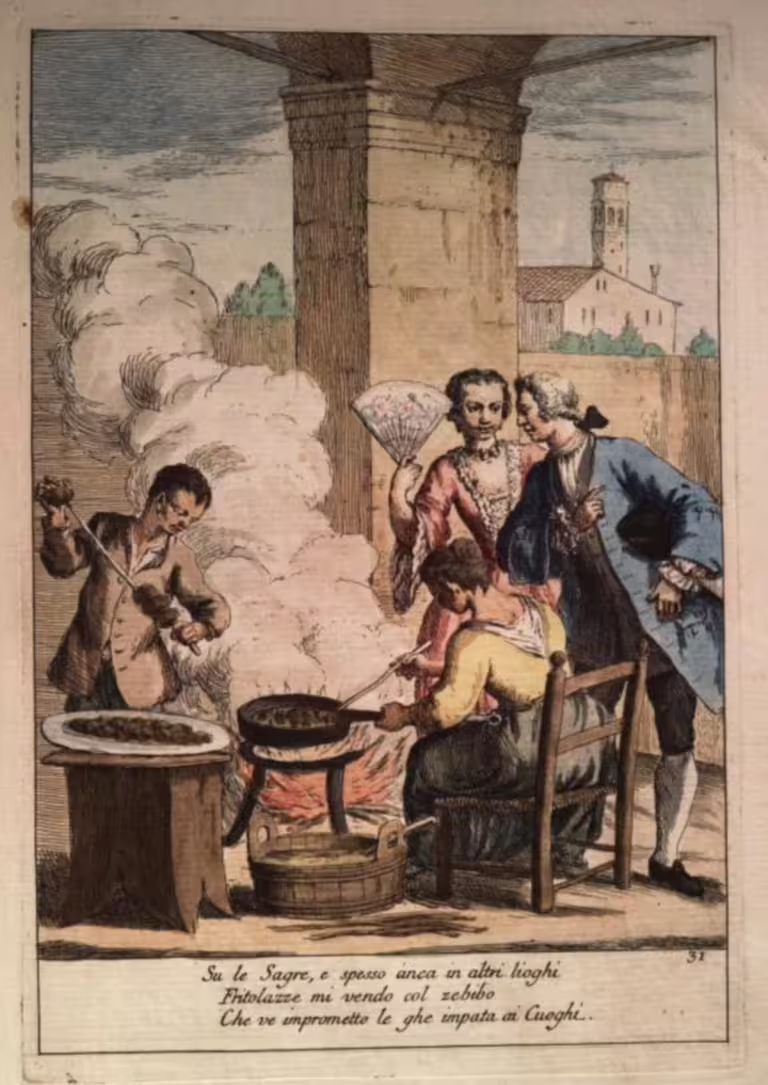
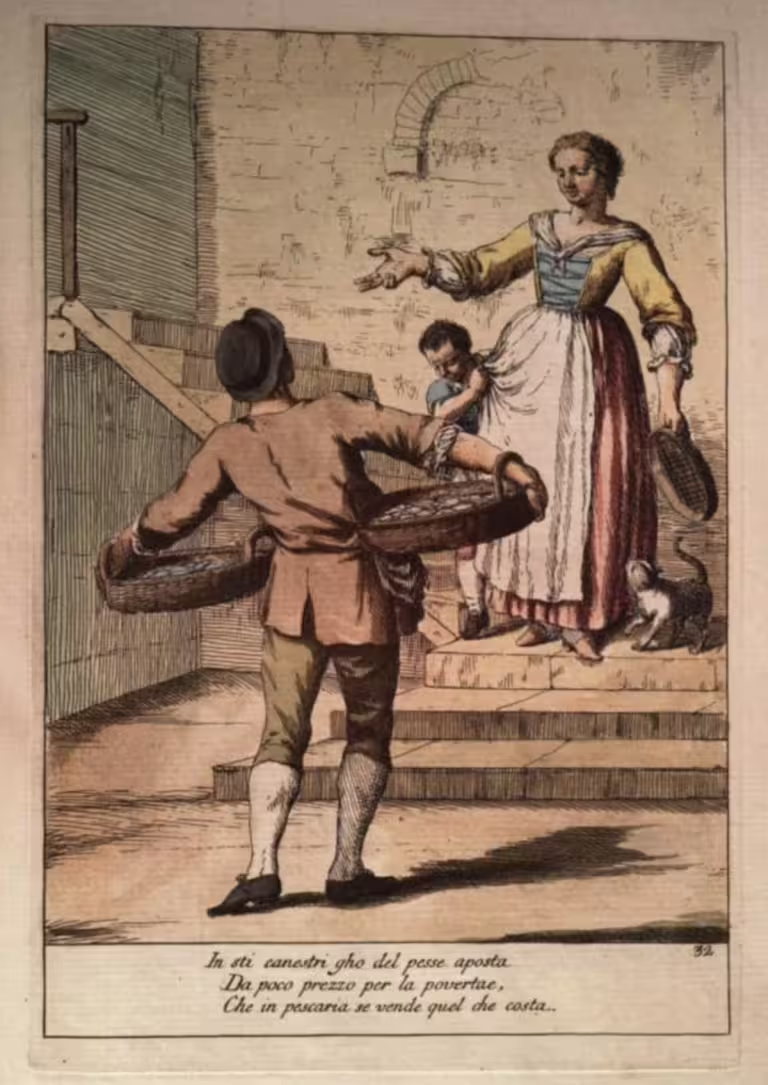
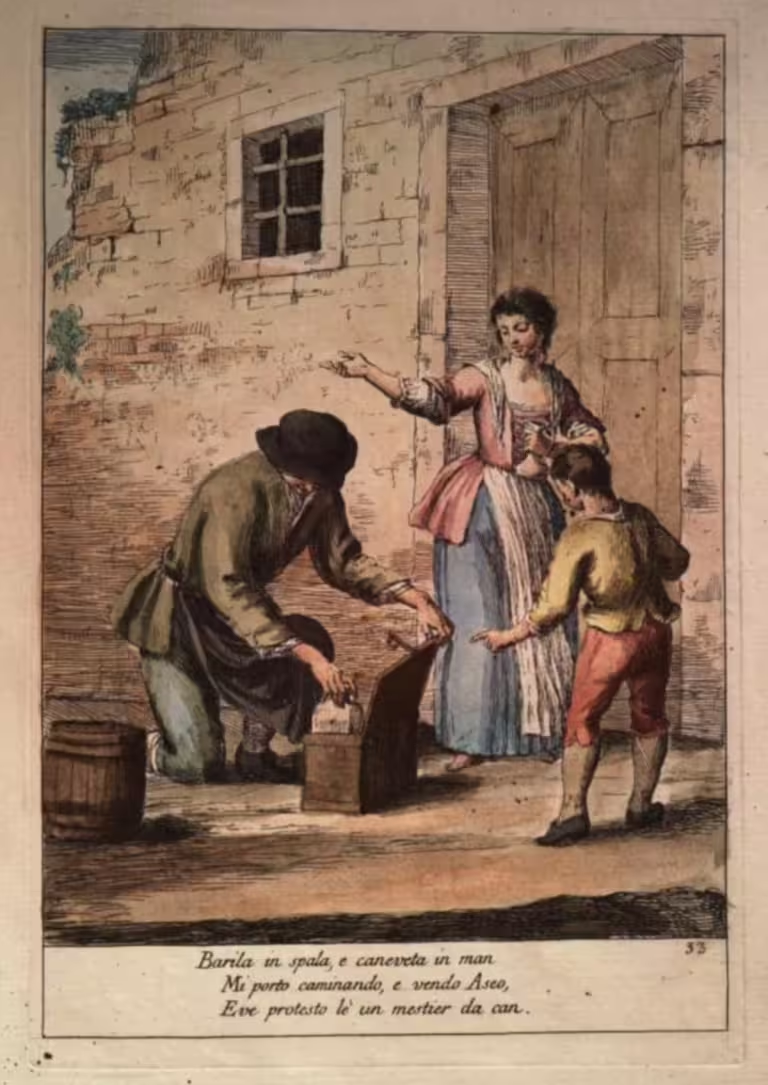

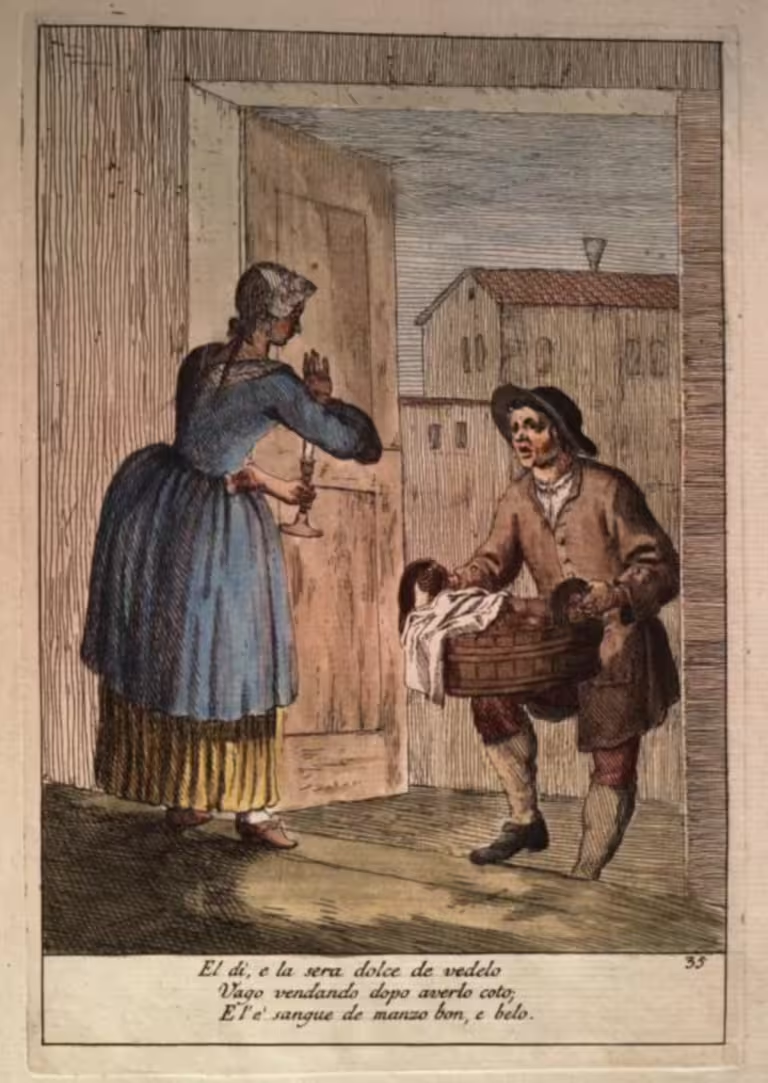

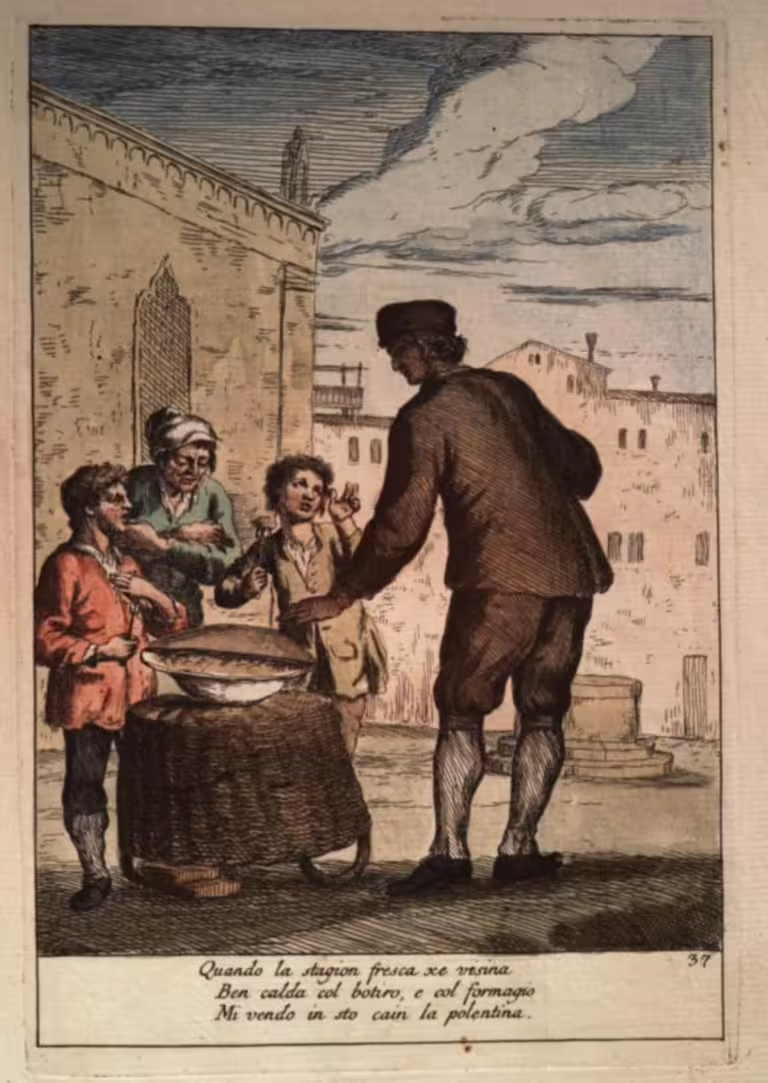

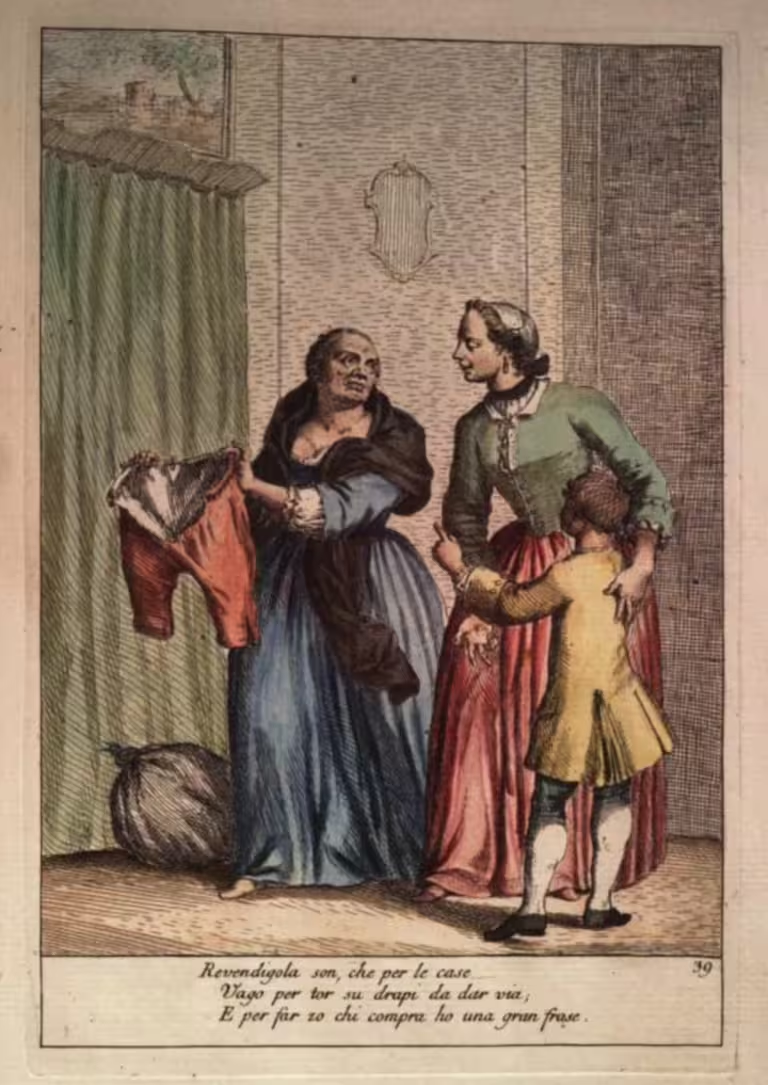
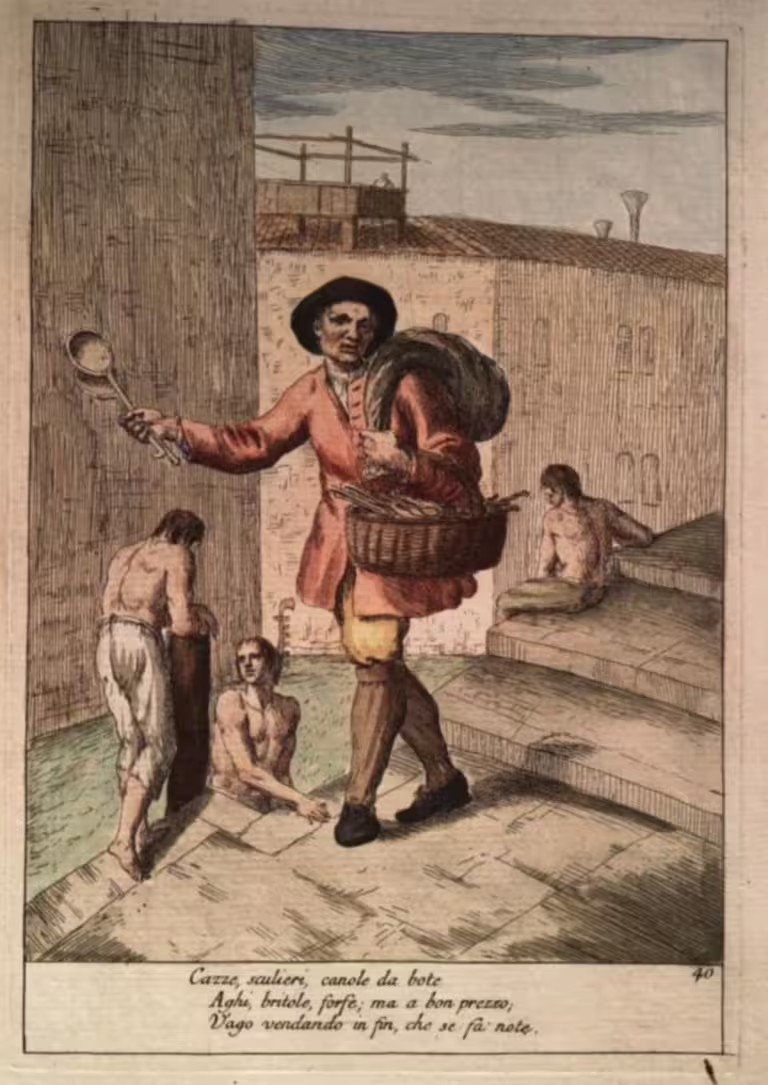
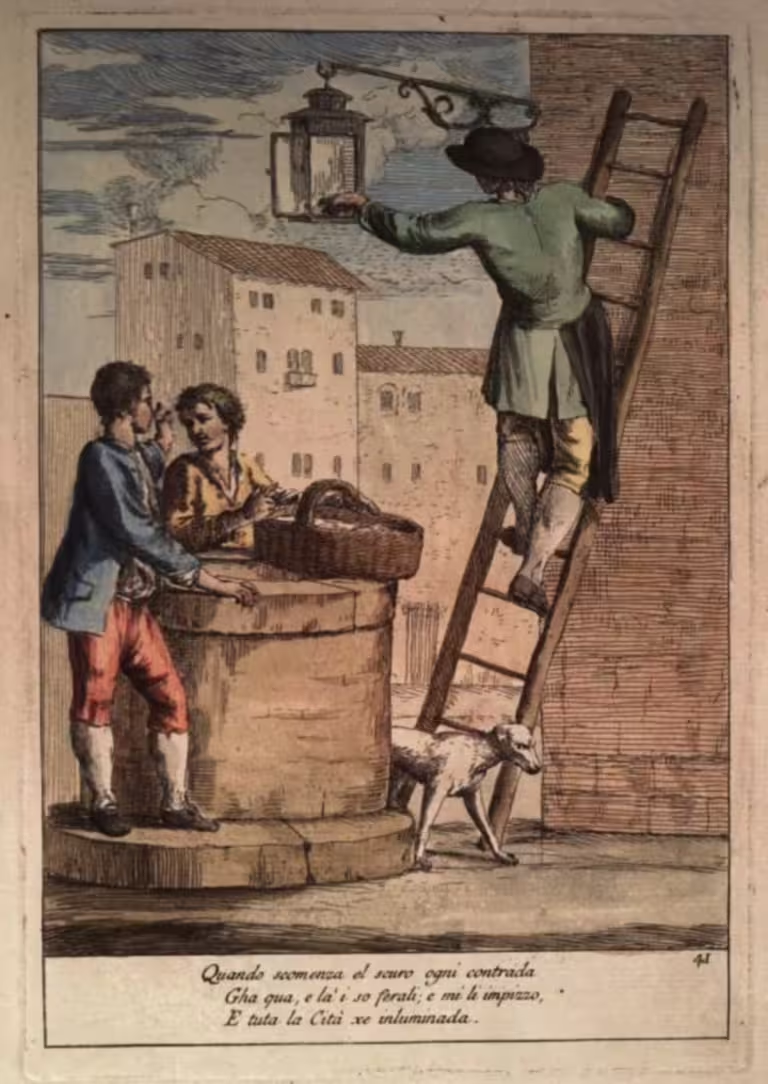
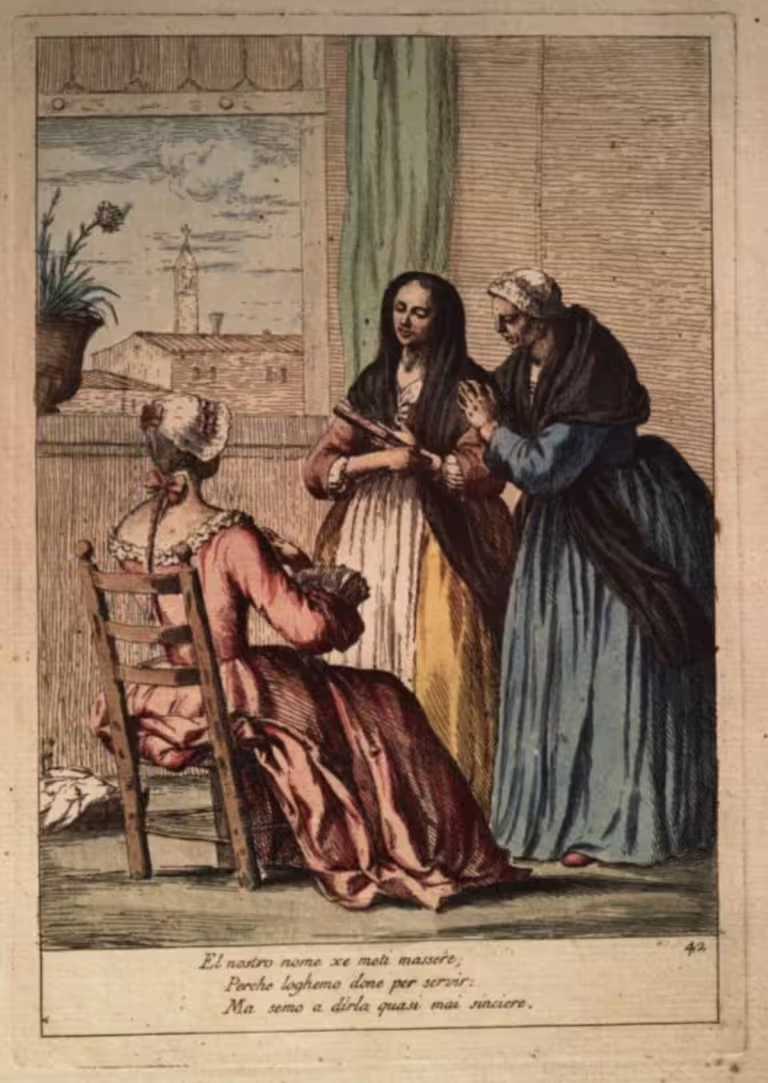
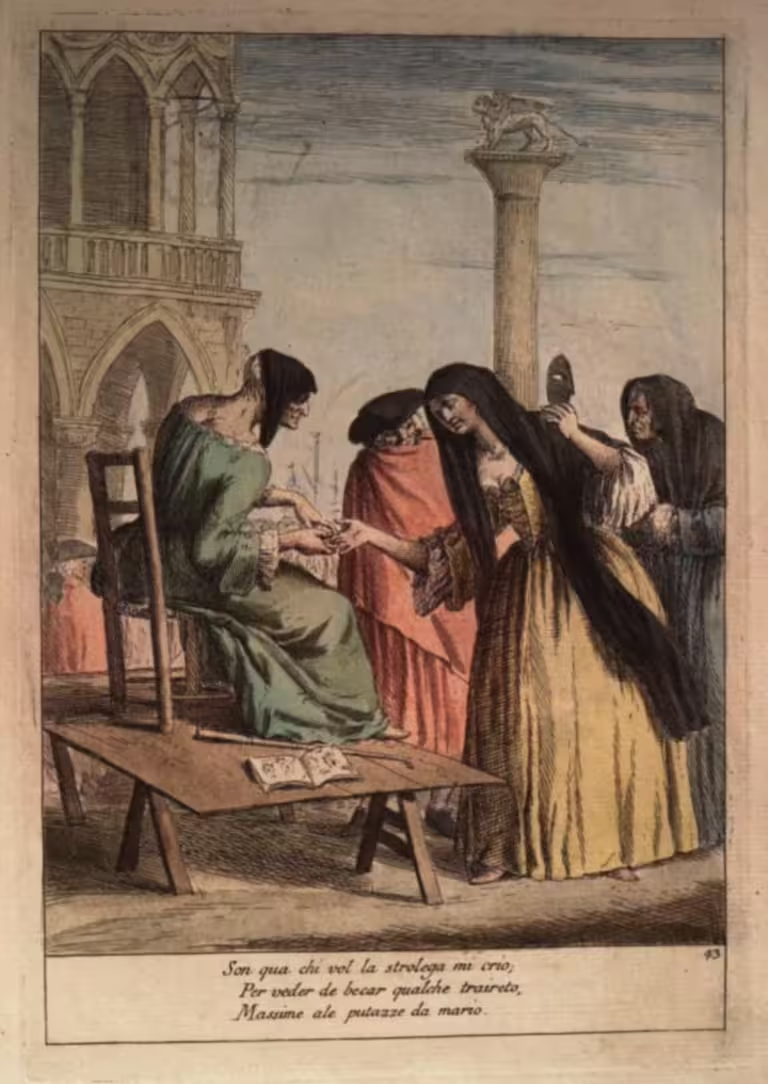
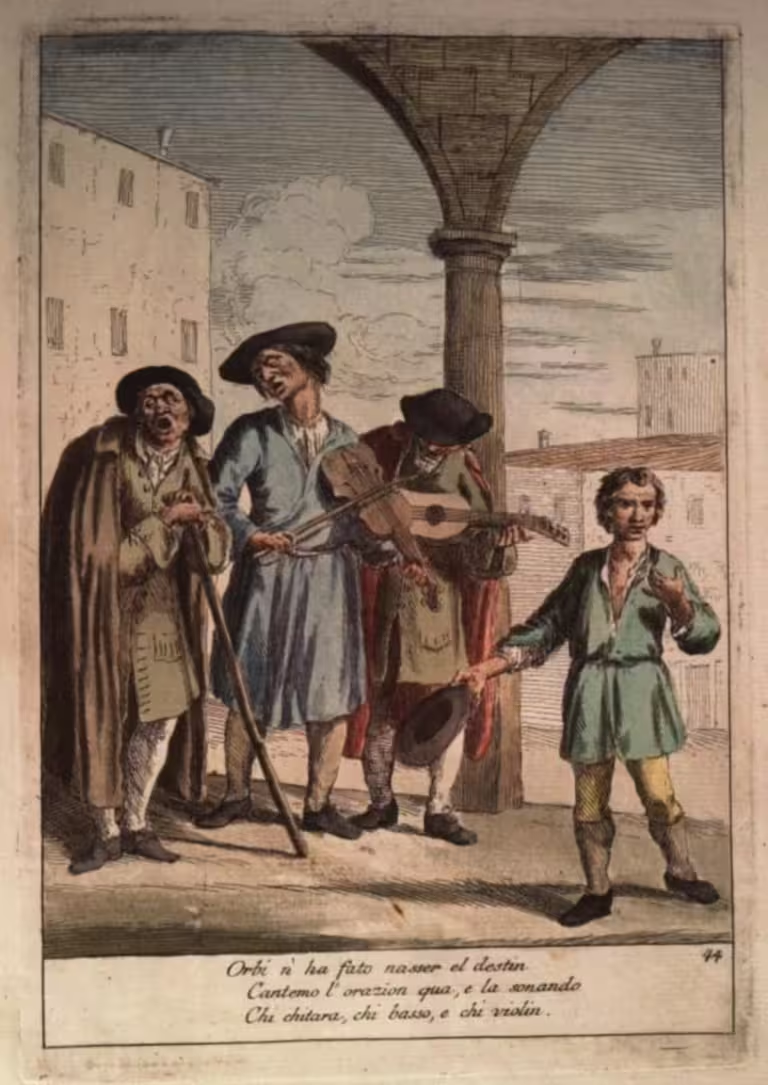
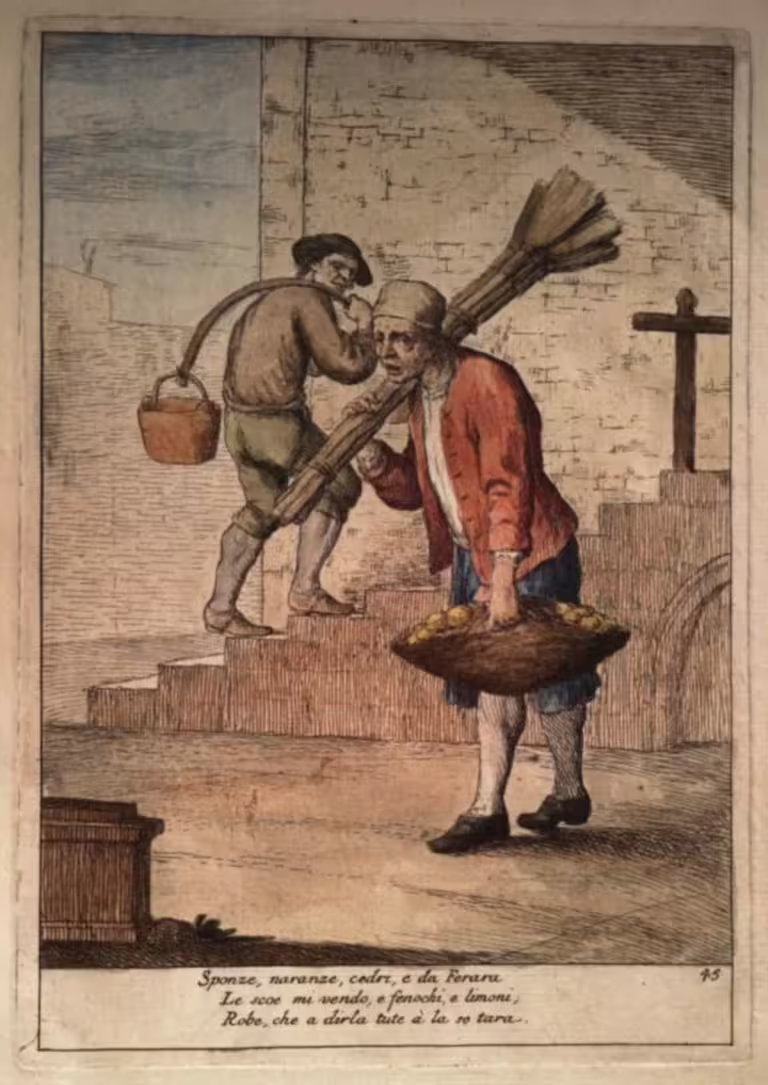
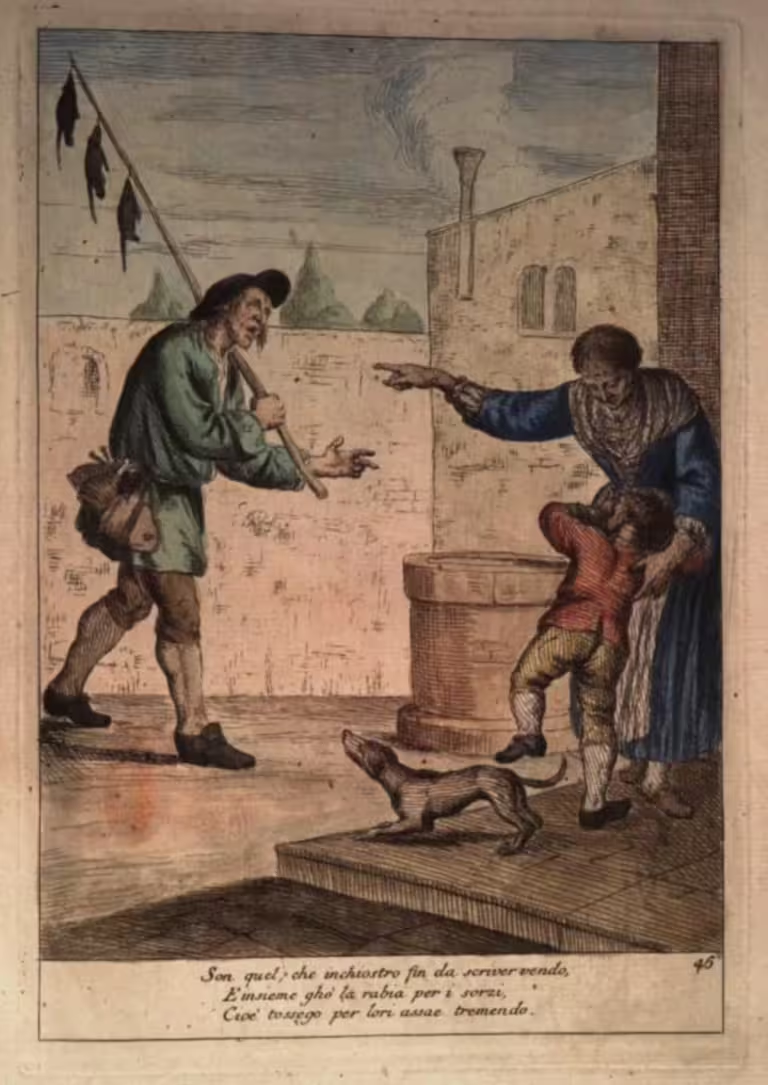
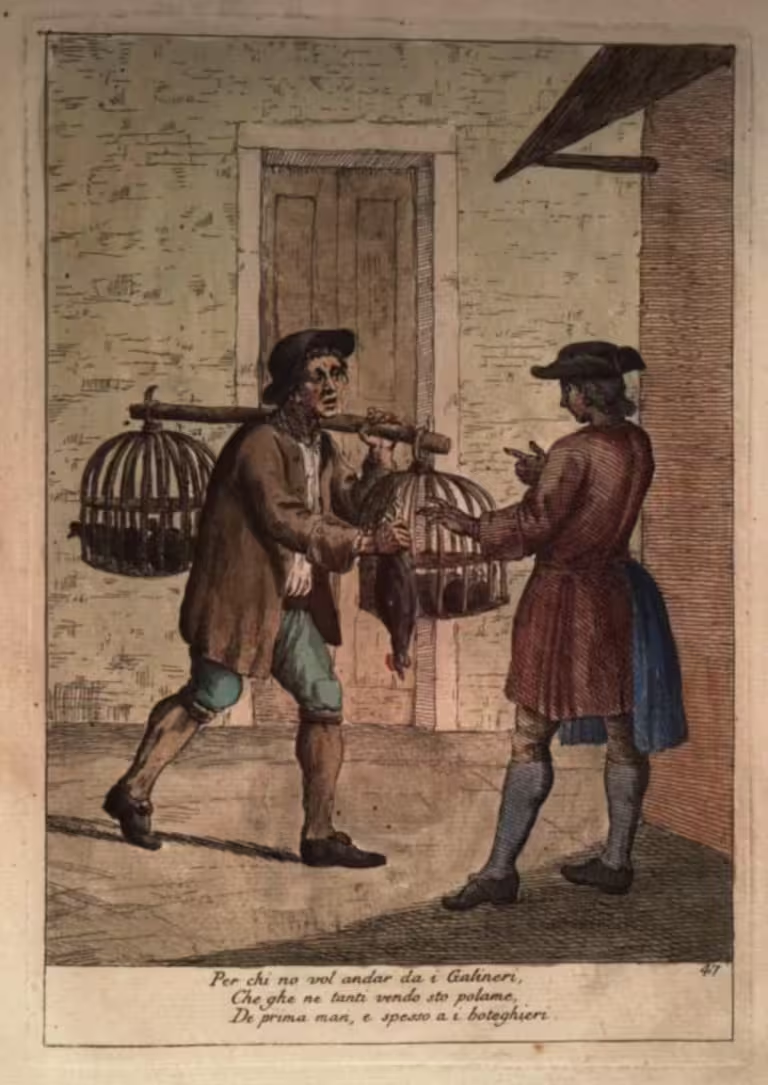

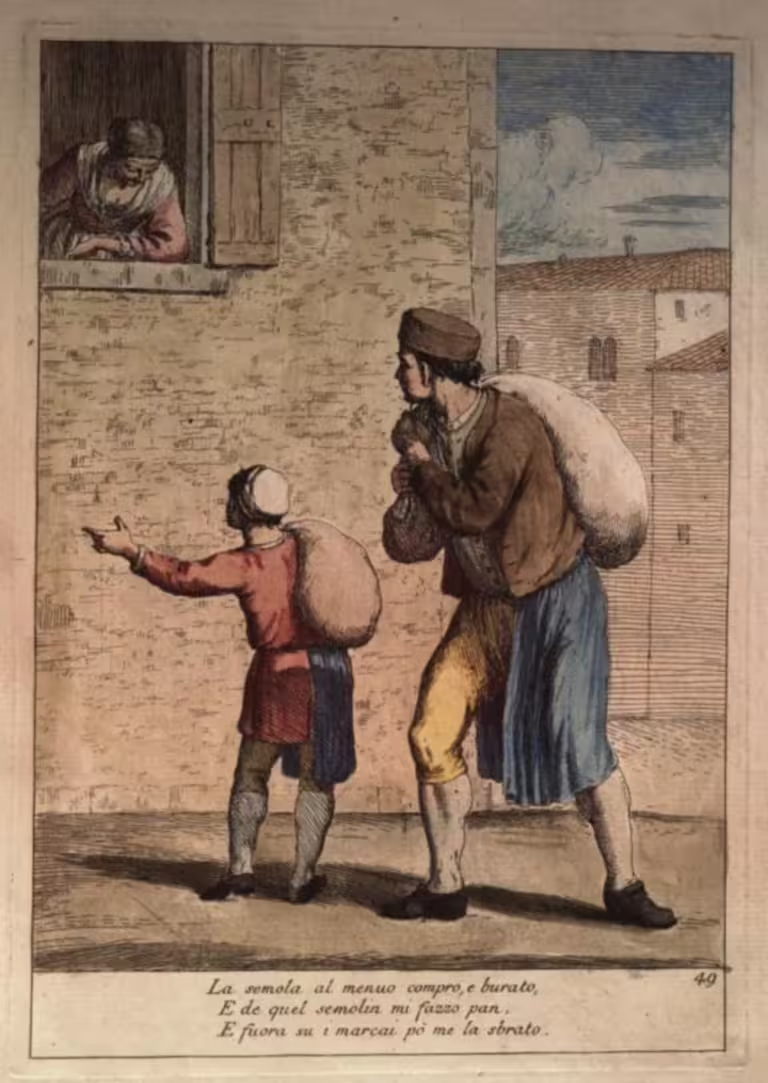
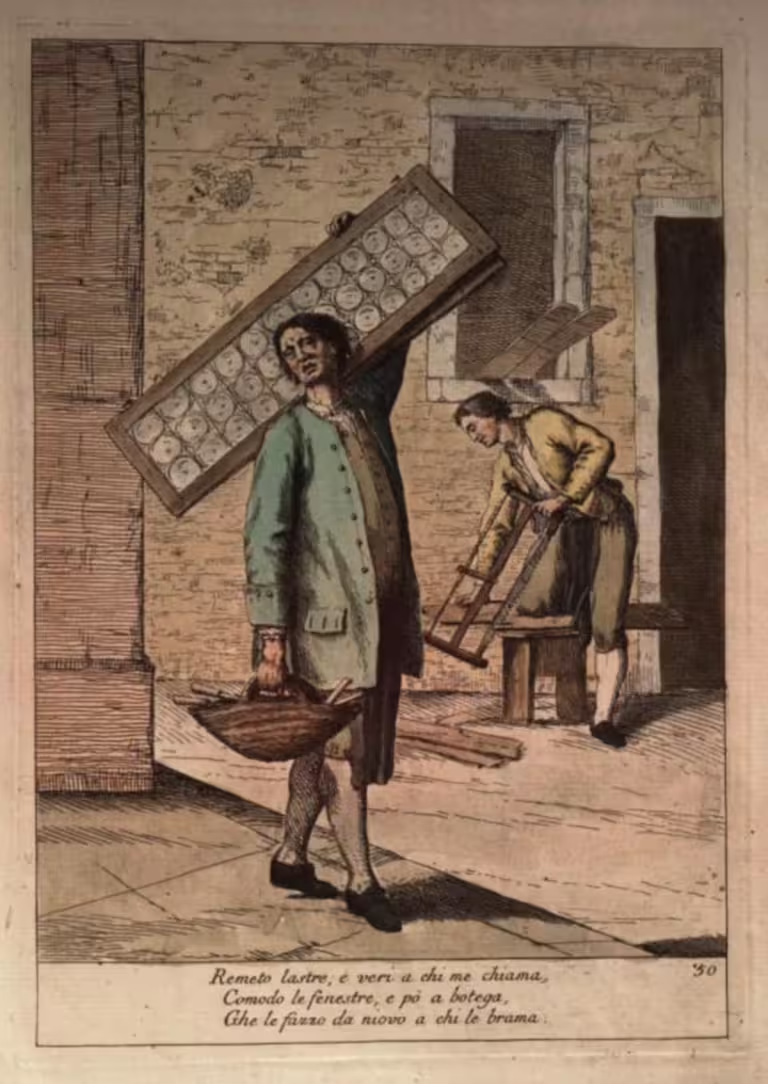
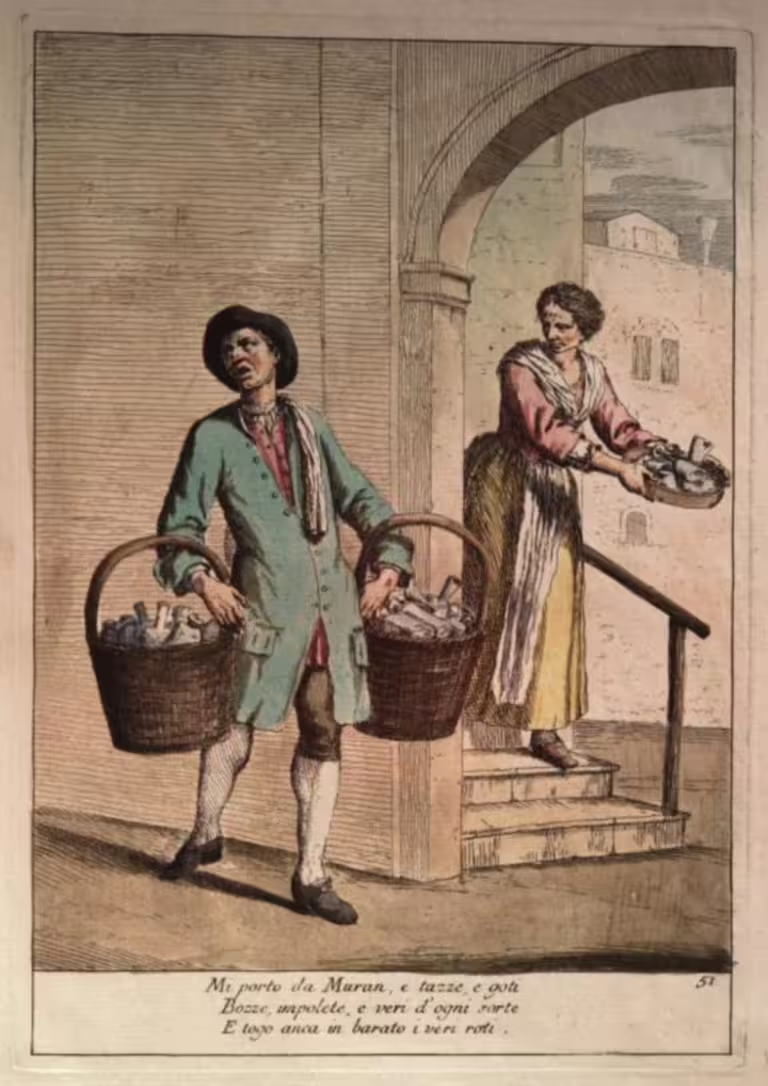




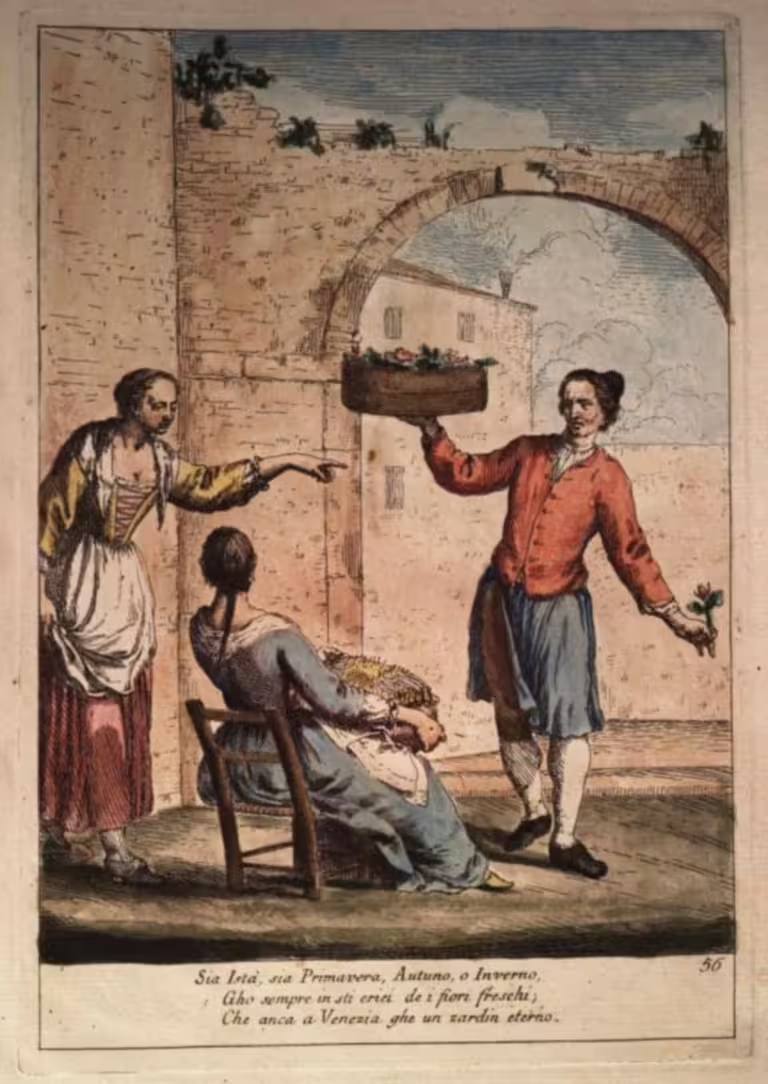


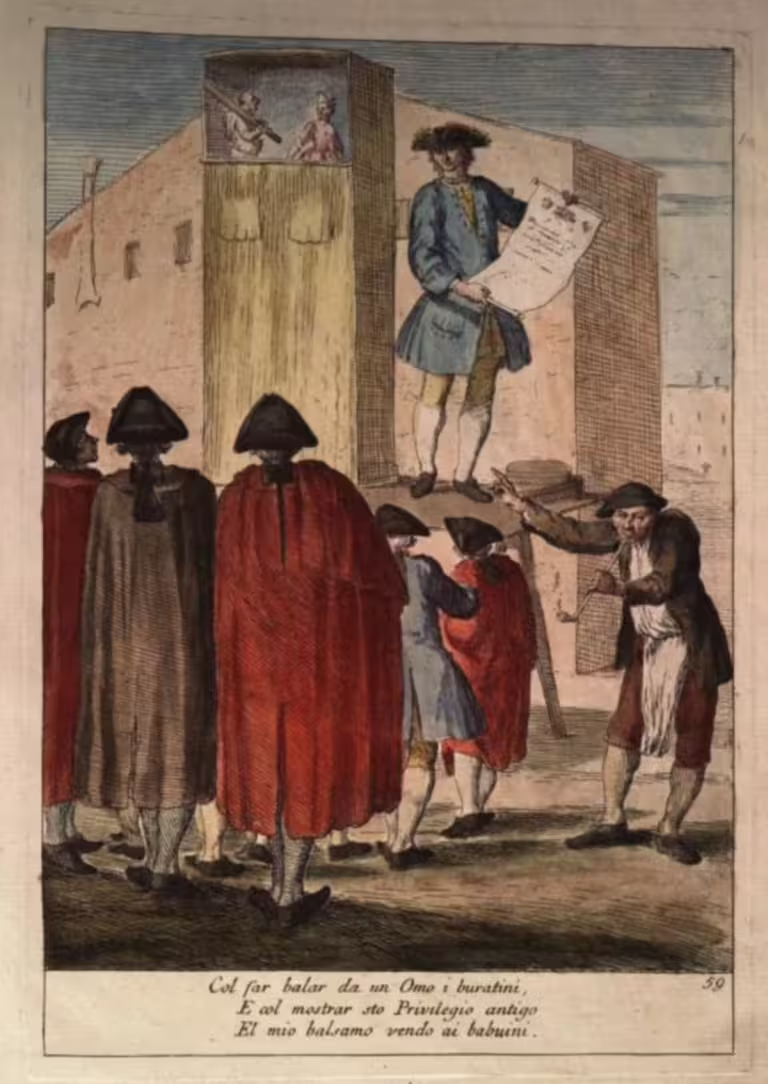
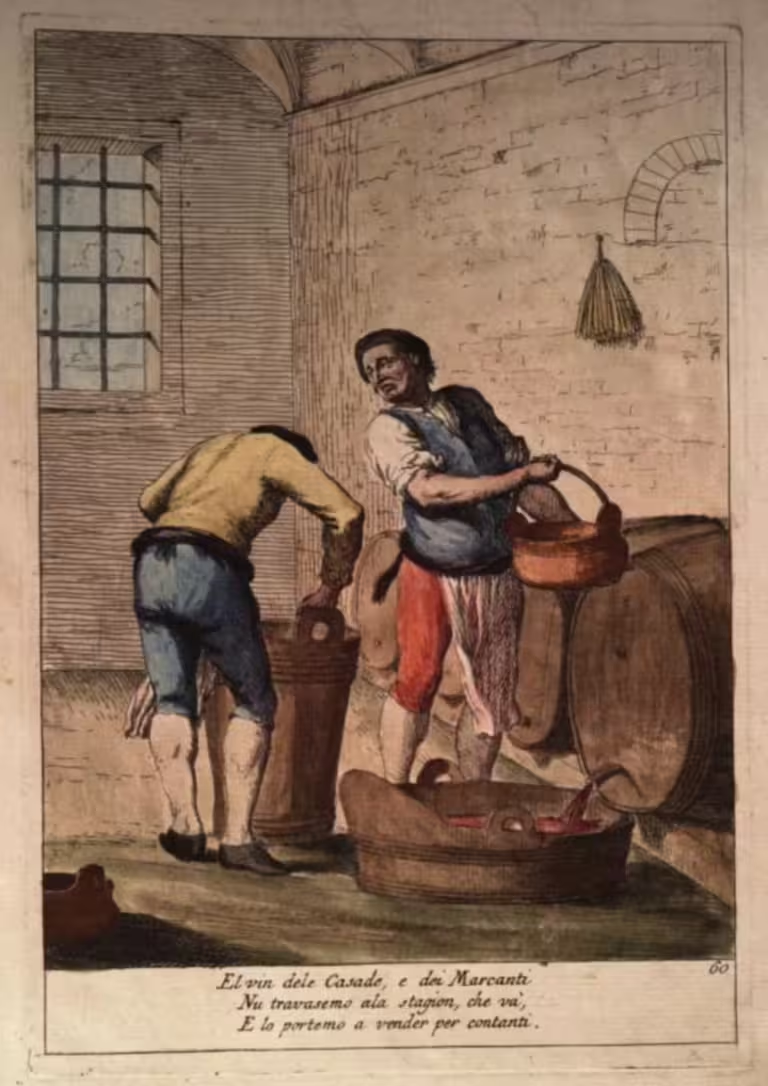
Preparatory drawings
Ninety-five studies for the engravings are in the archives of the Museo Correr in Venice. The compositions are easy to recognise, but they’re often mirrored, as the process of printing from the copper plates mirrors the final image.
For some of the plates, there are several studies, where Zompini has tried various compositions, or variations of individual figures. The gallery below therefore contains more than sixty images.
These images are also displayed on the pages for the individual trades.
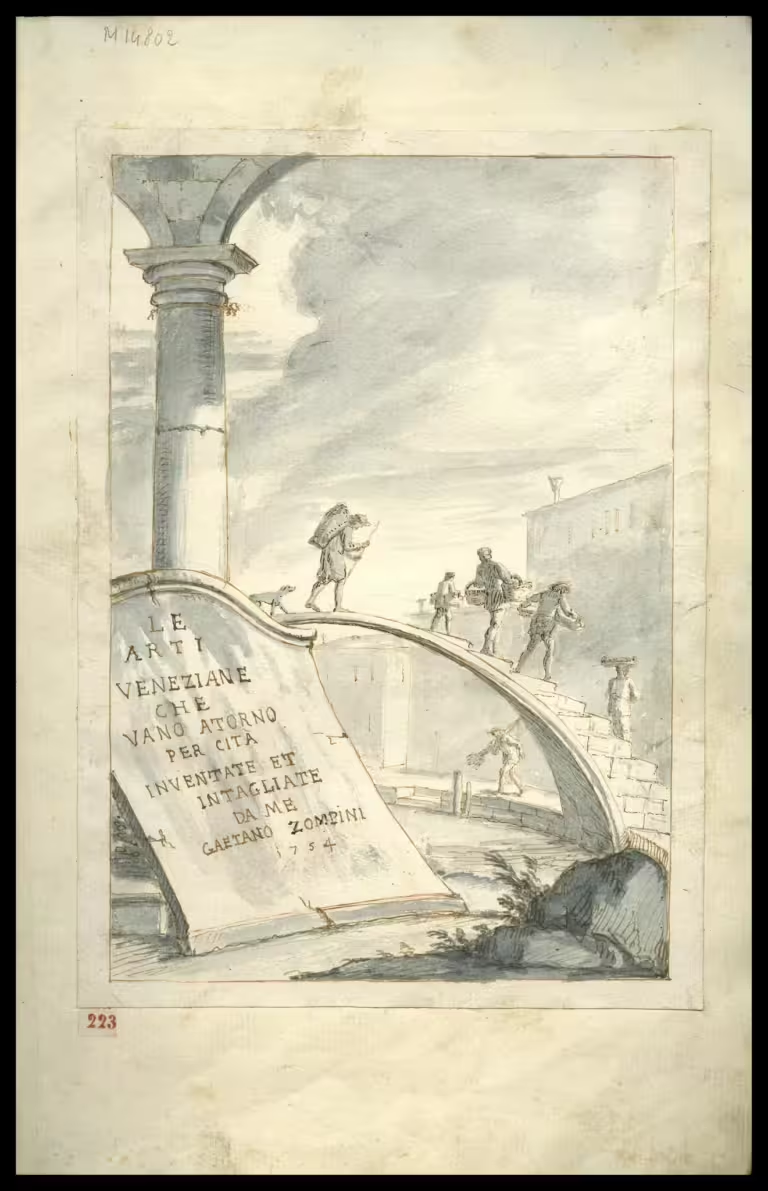
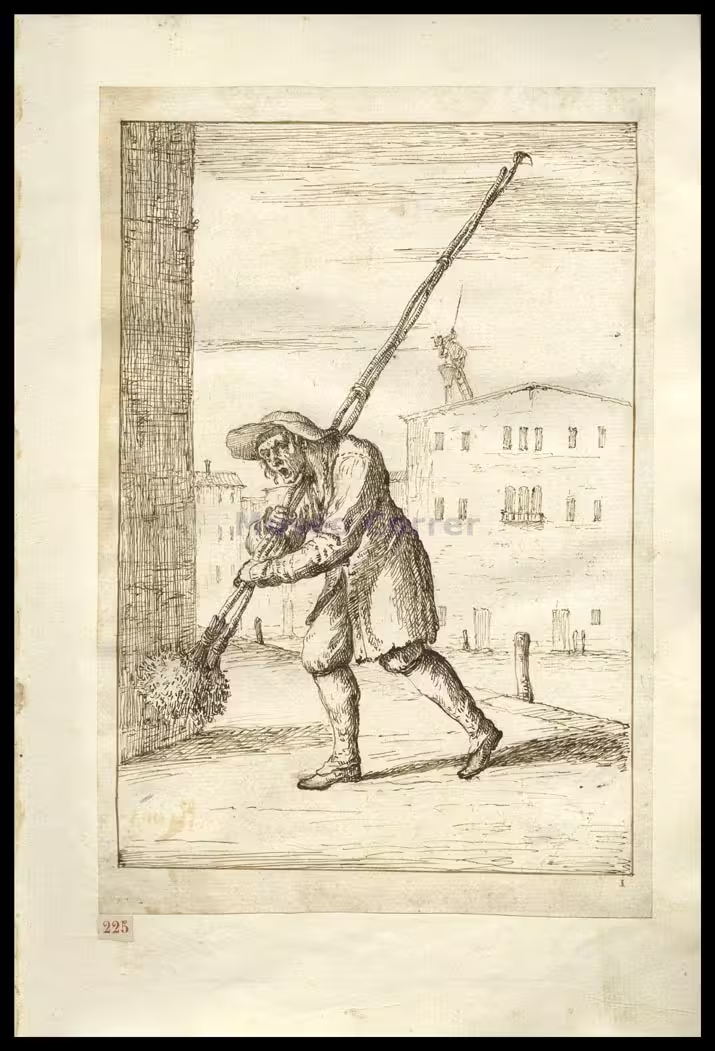
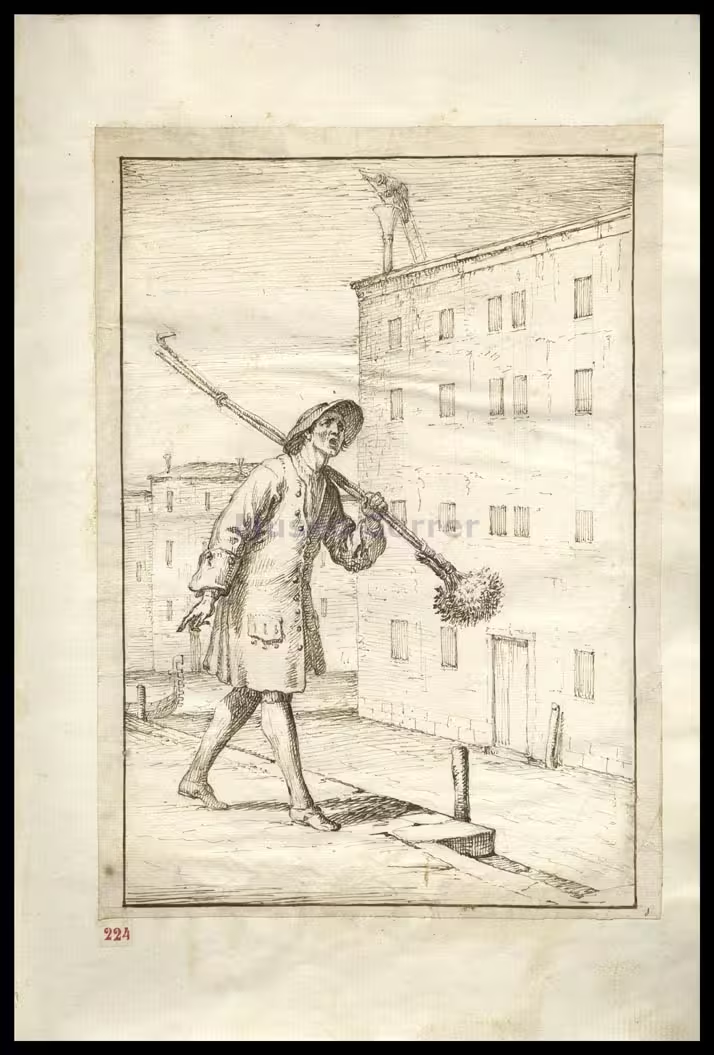

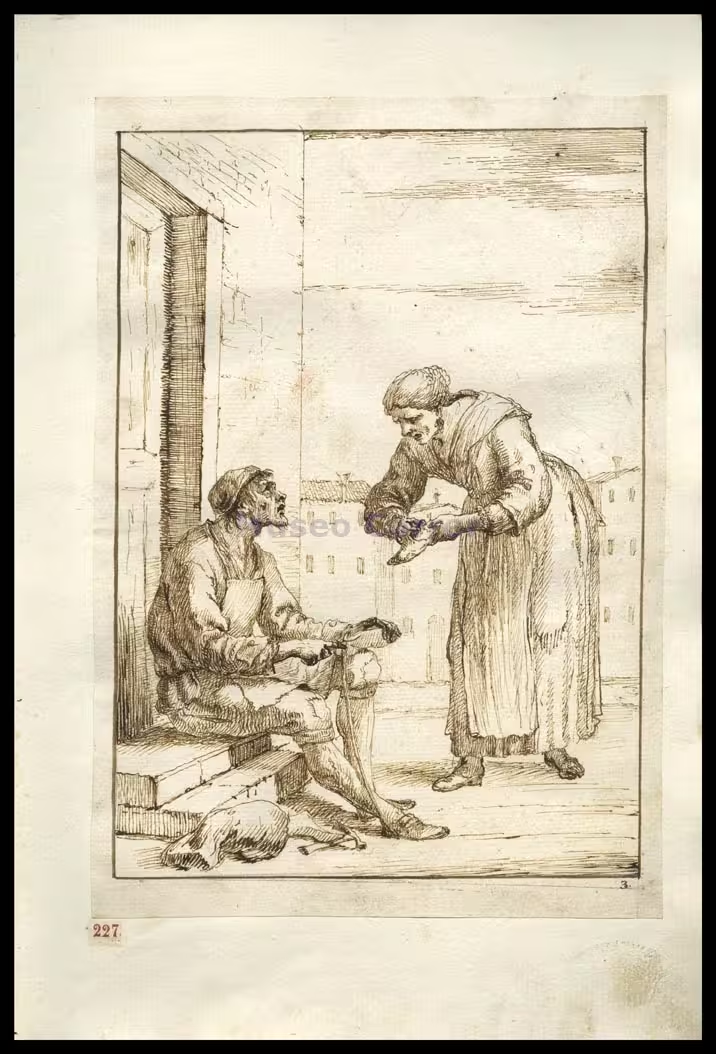
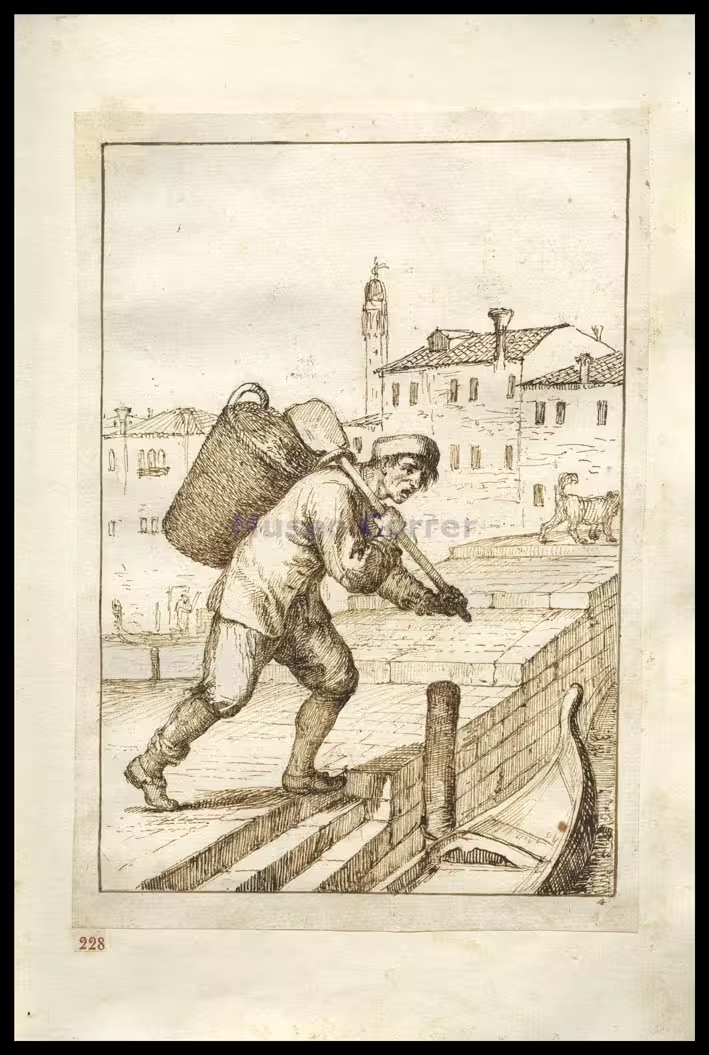
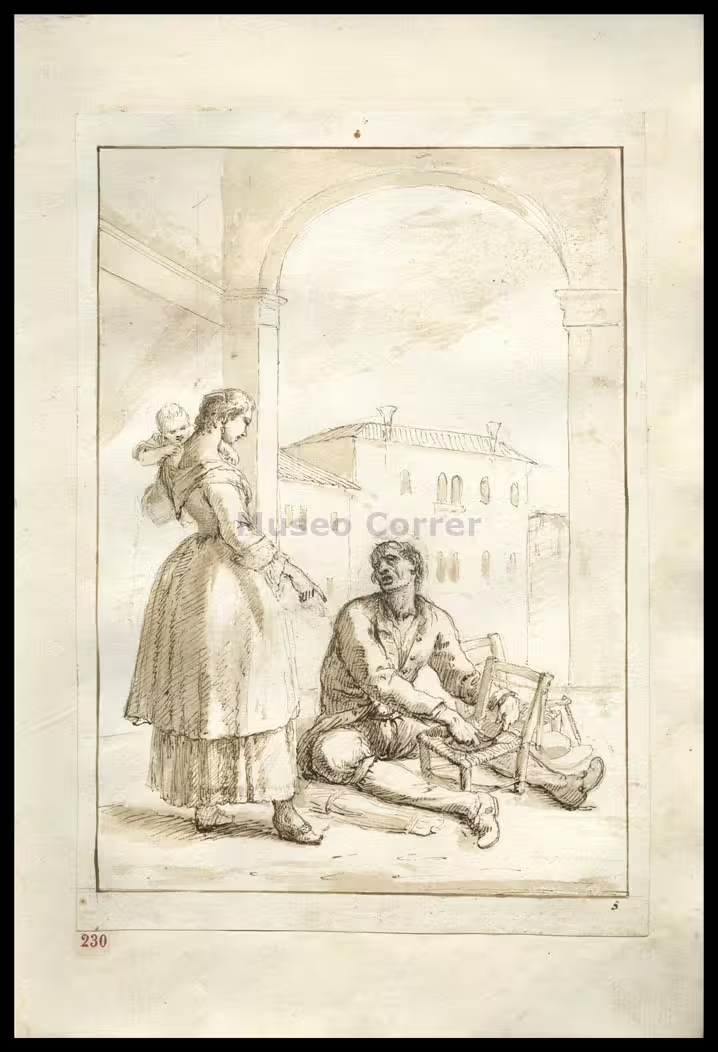
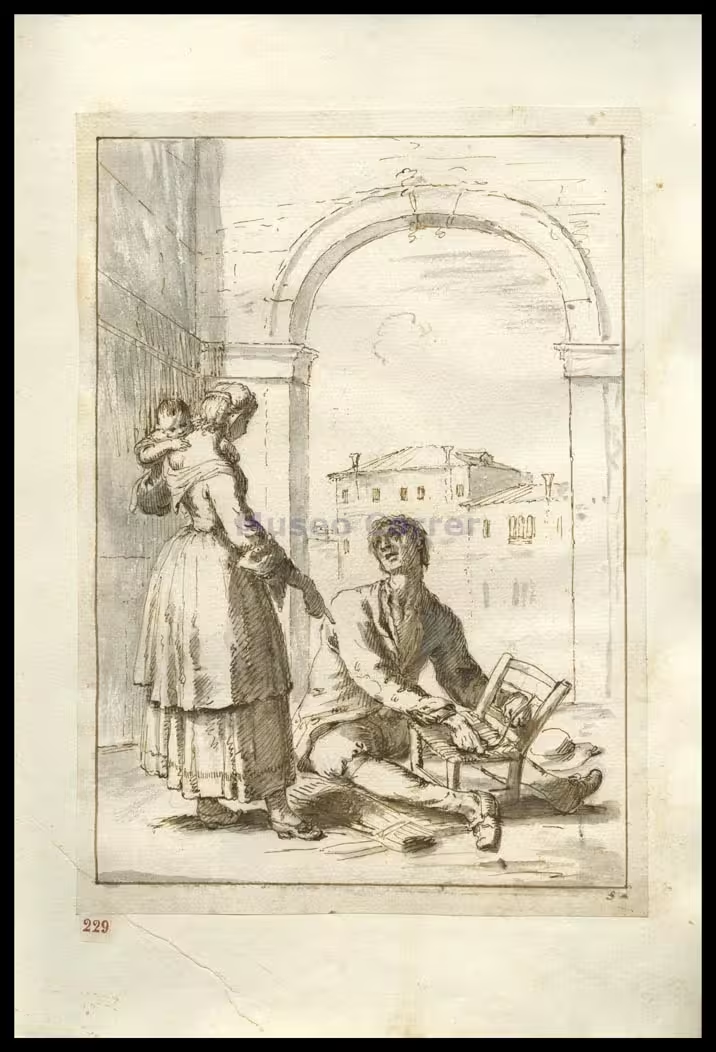
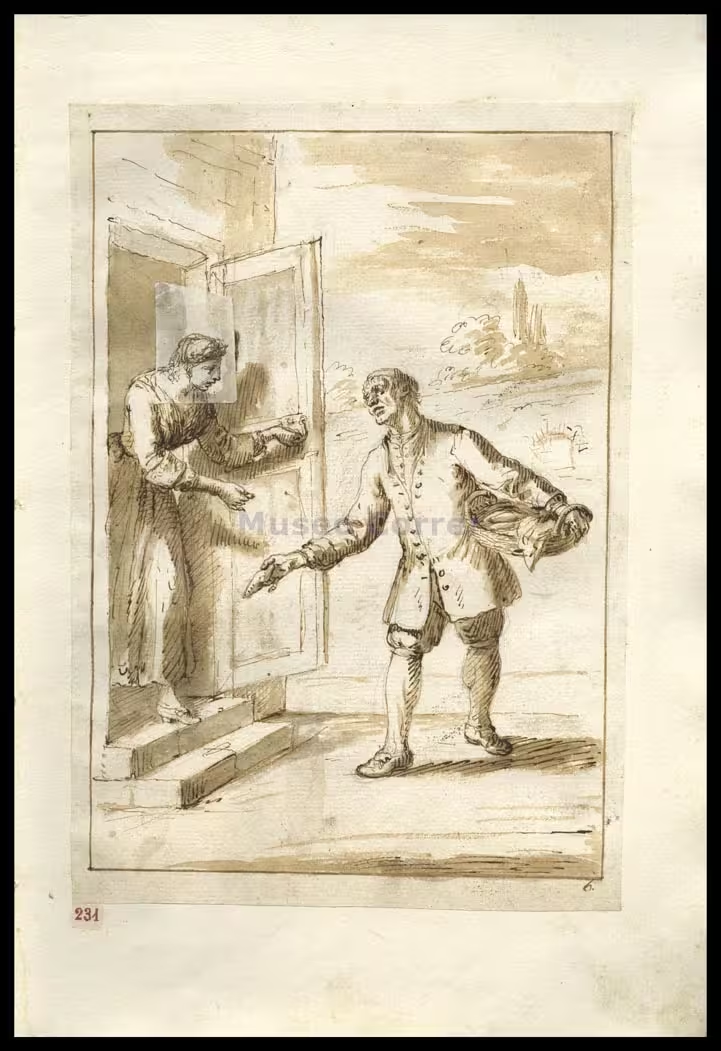
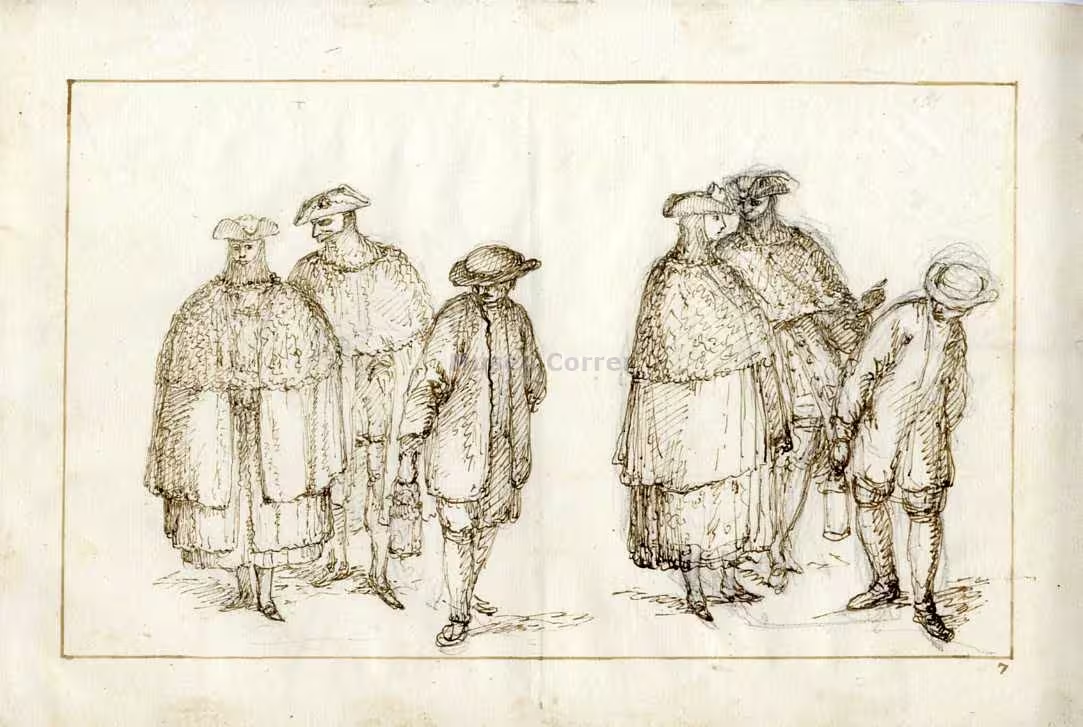
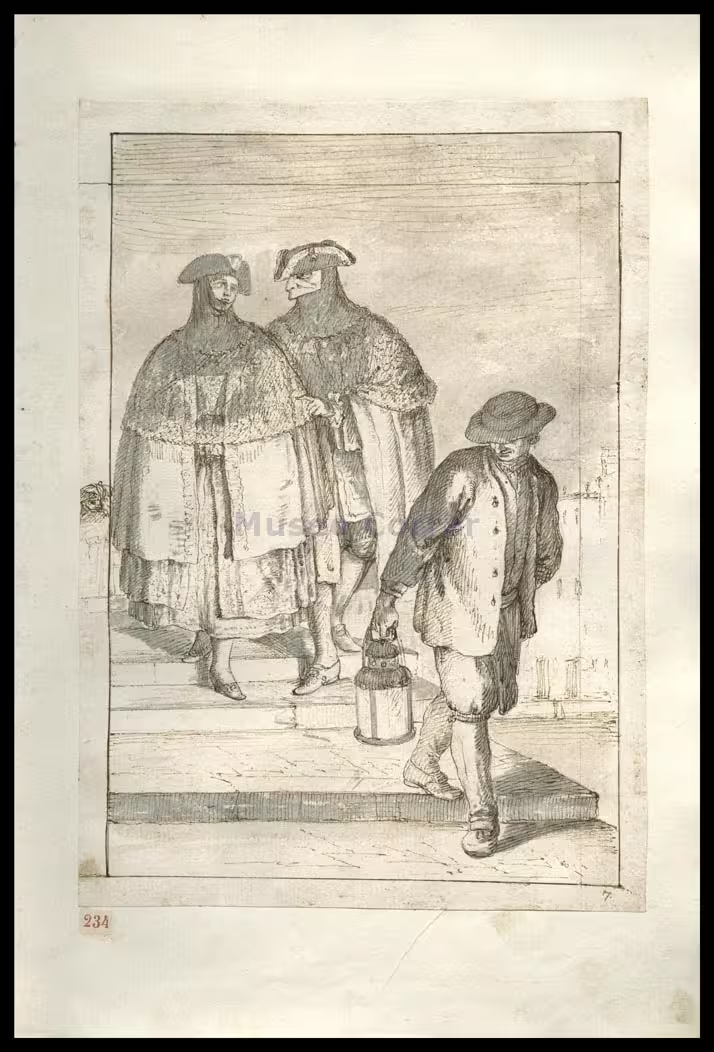
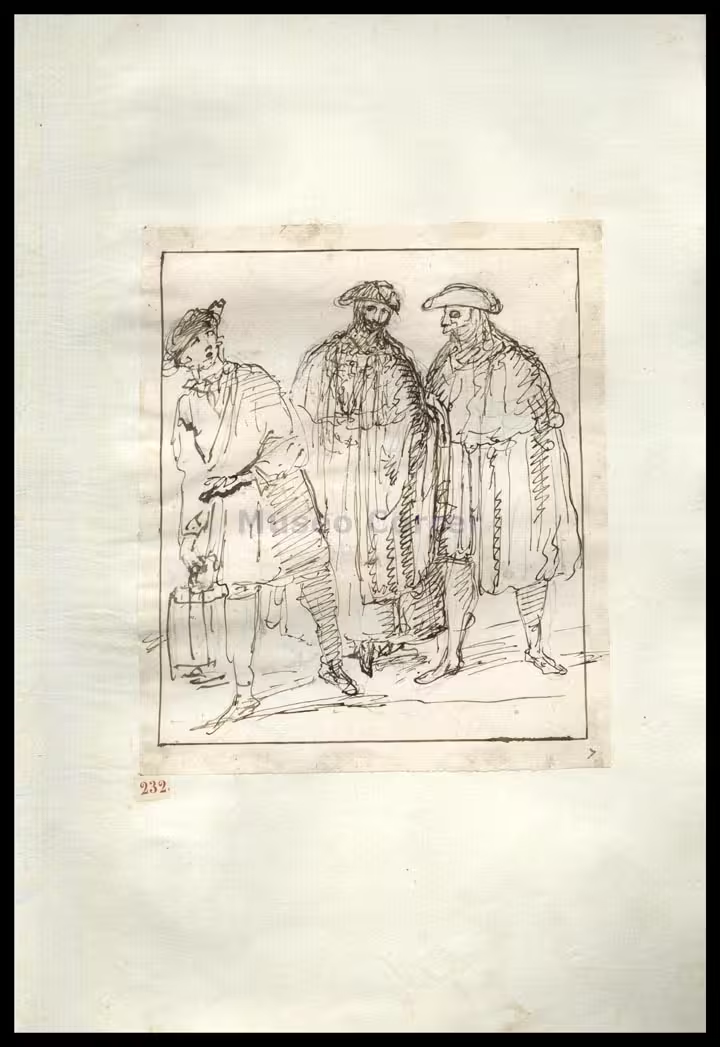
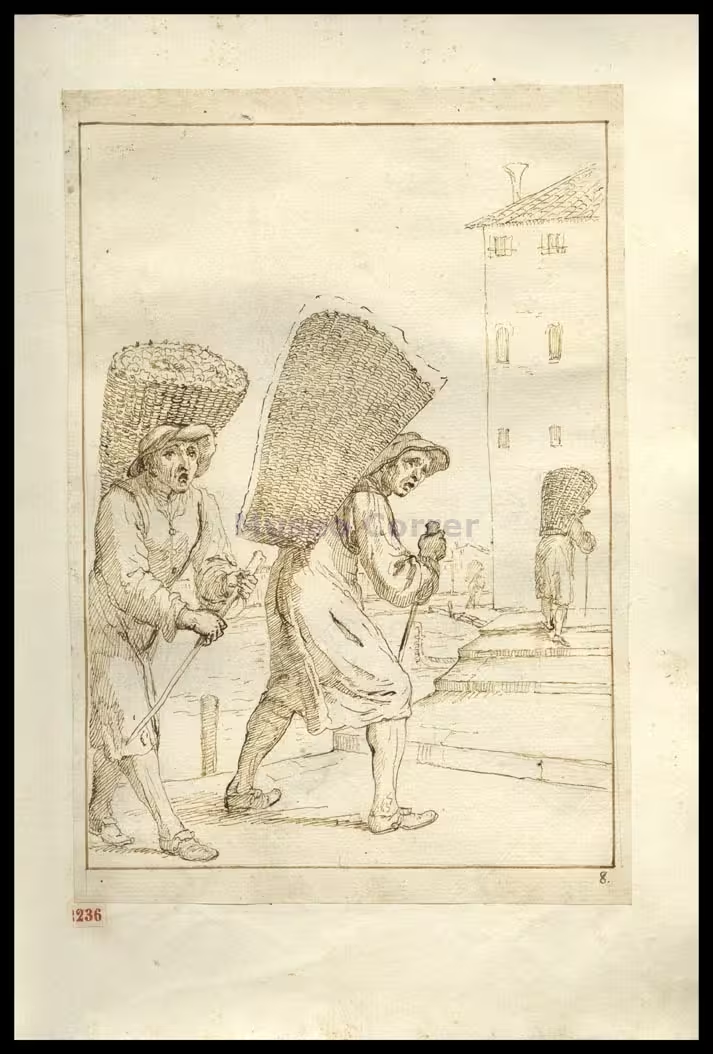
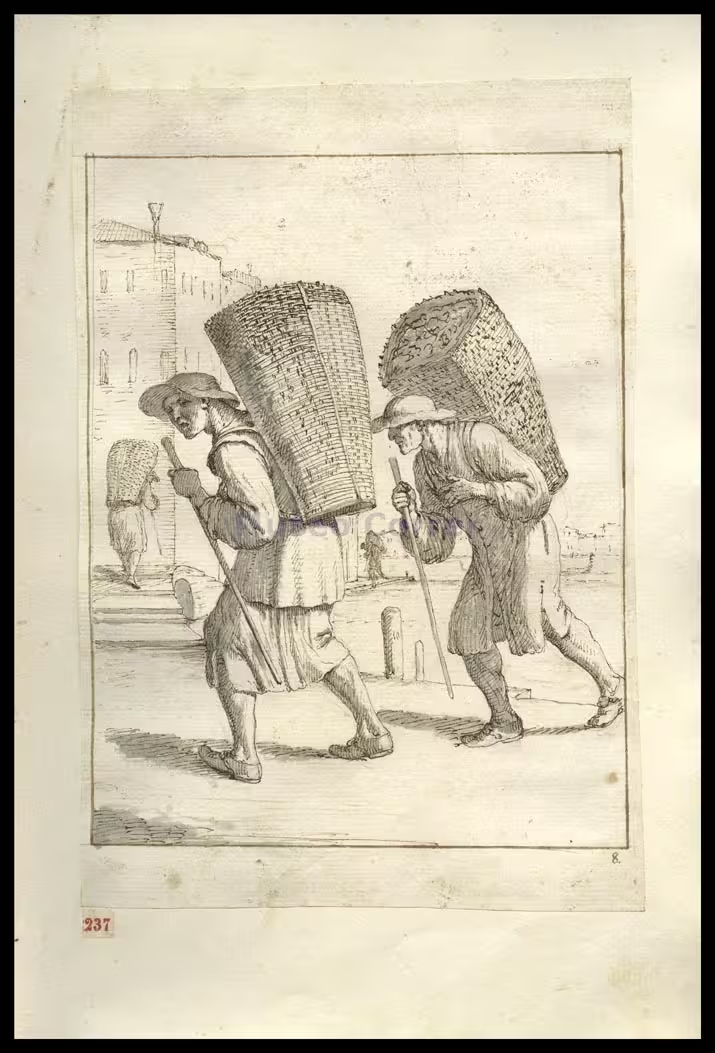
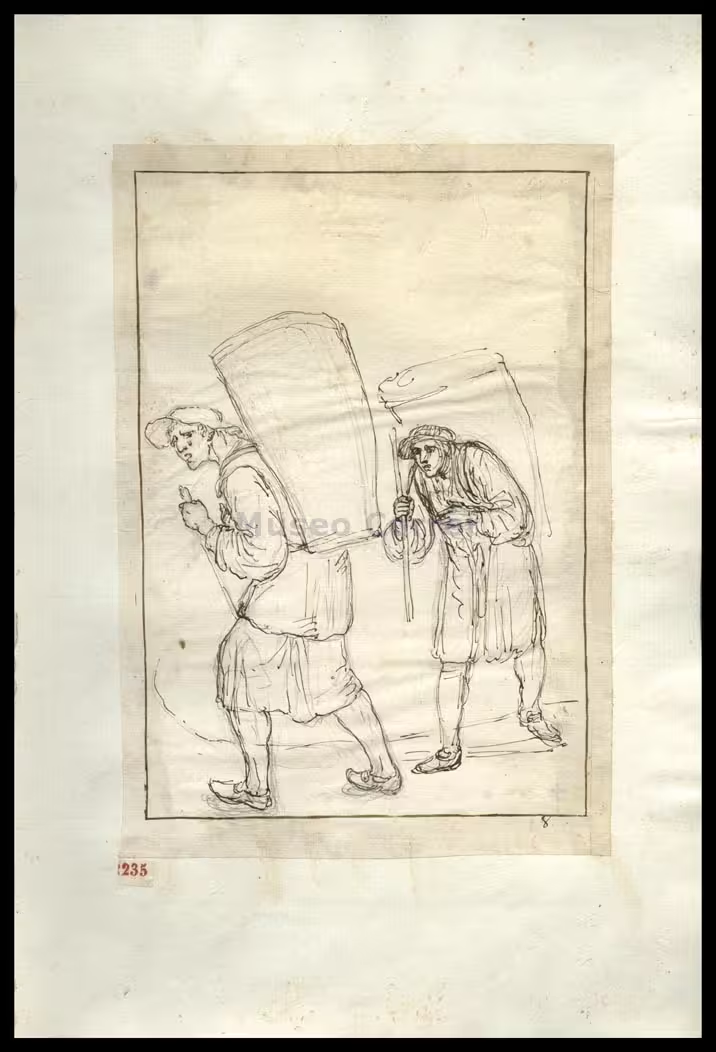
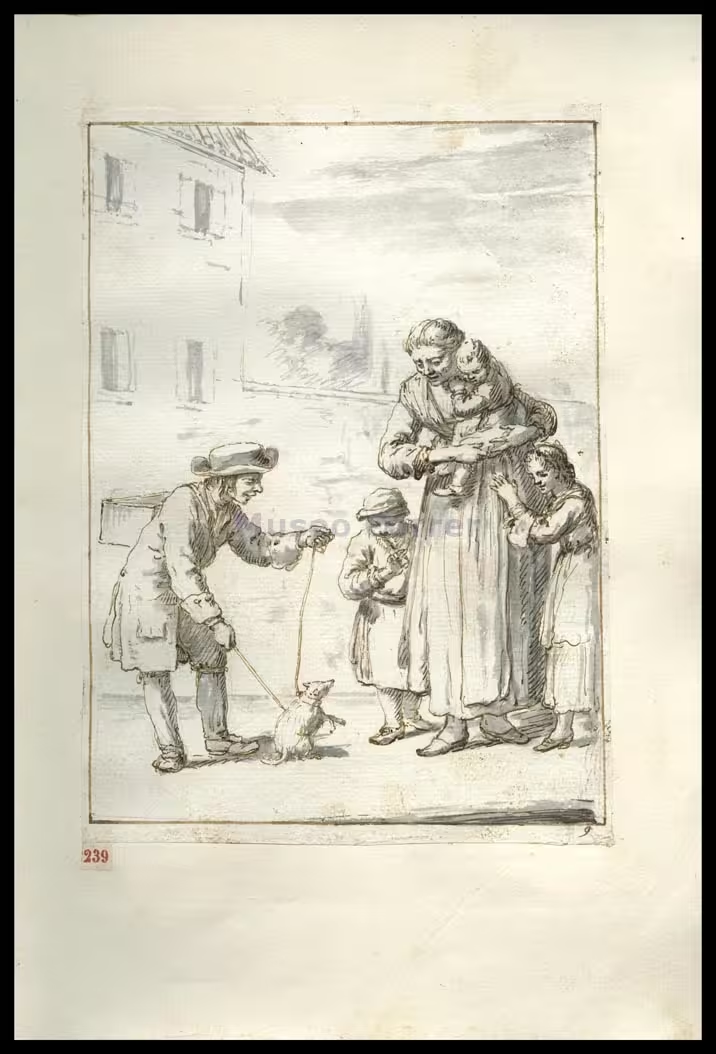
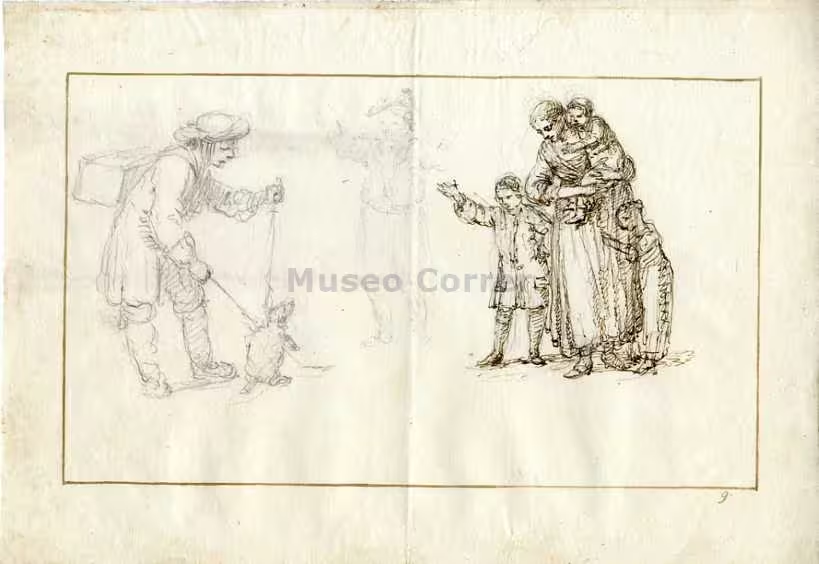
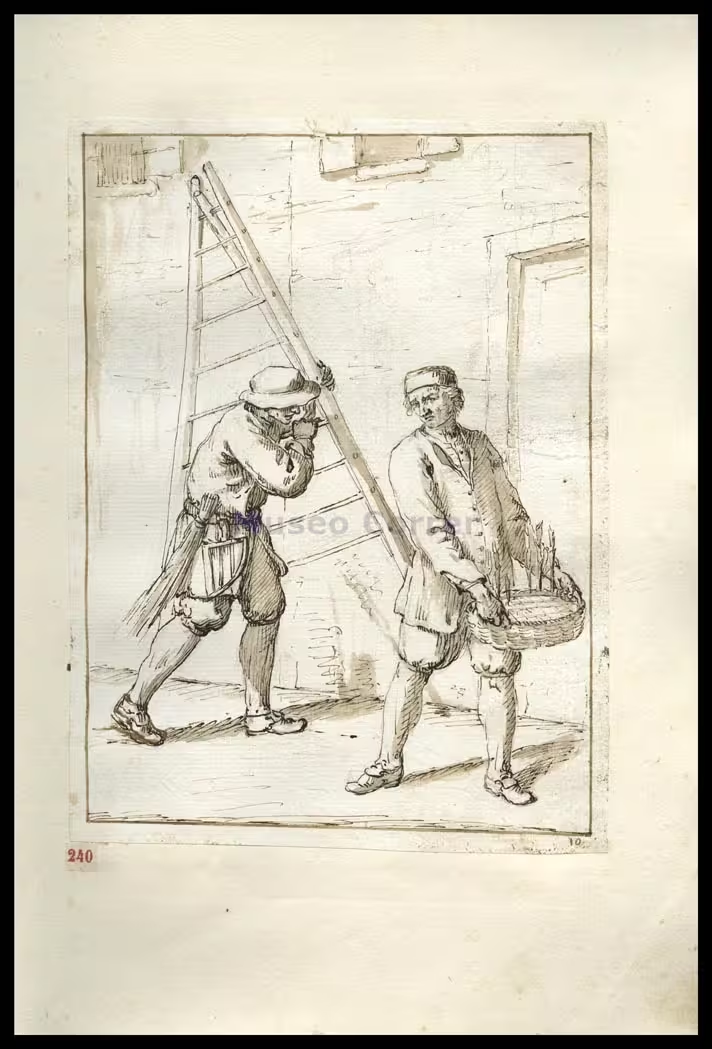
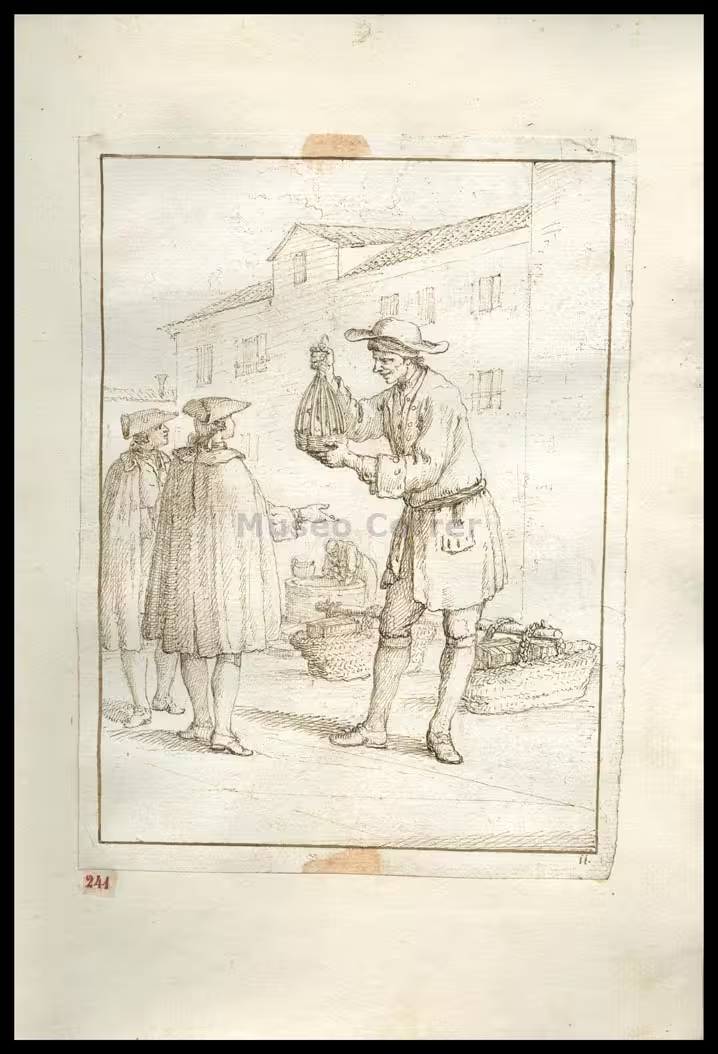
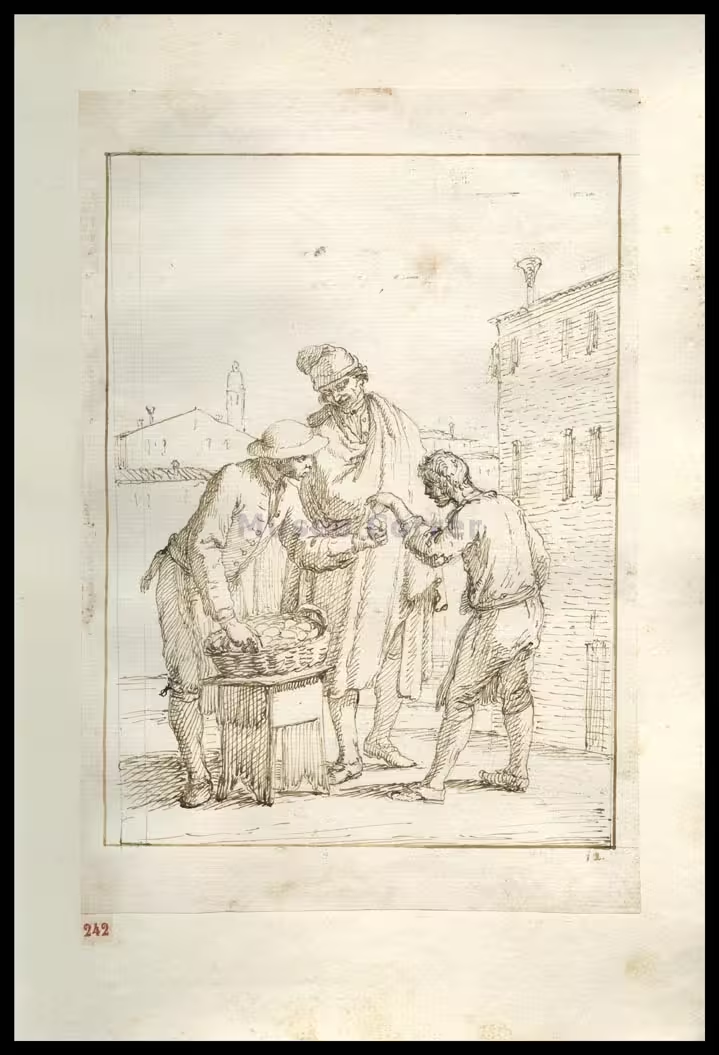

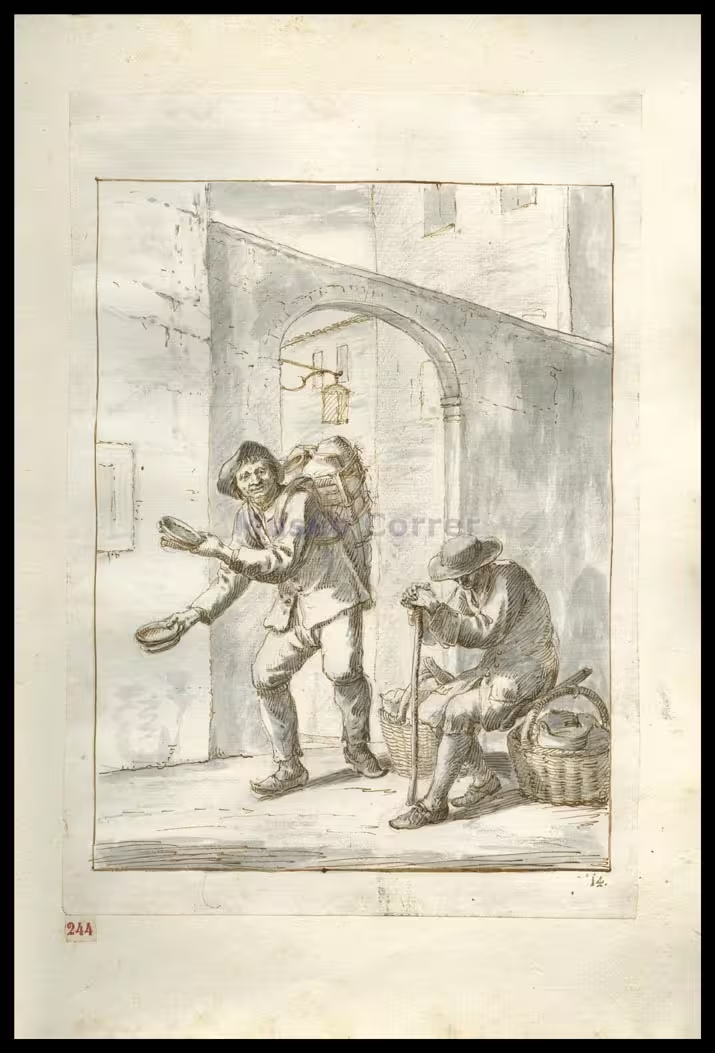
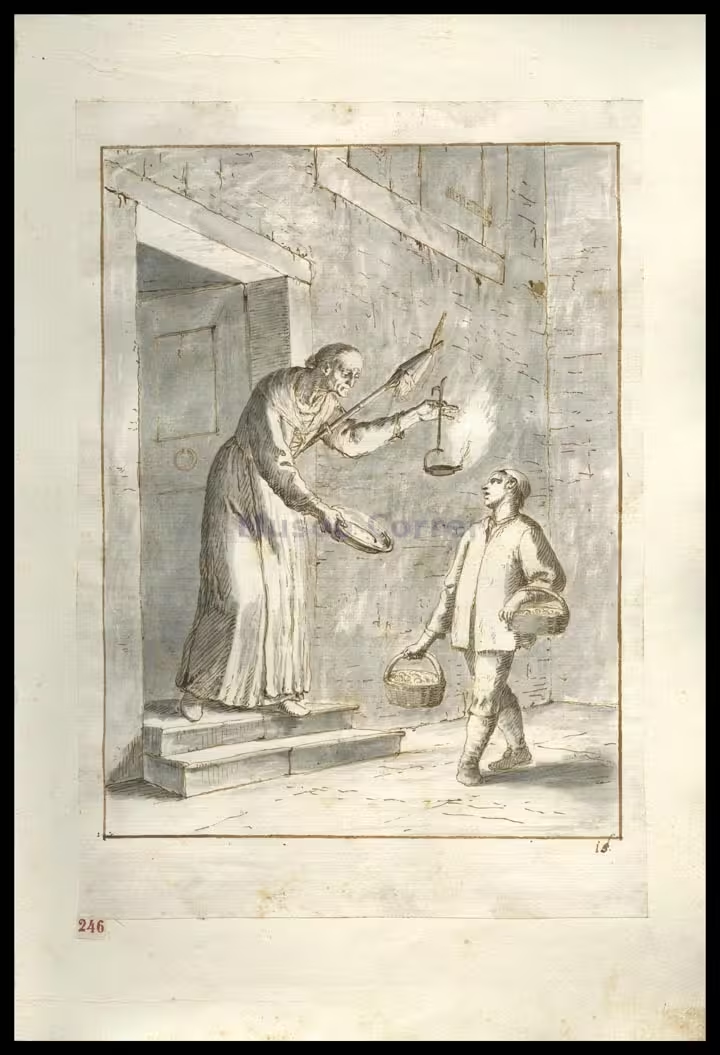
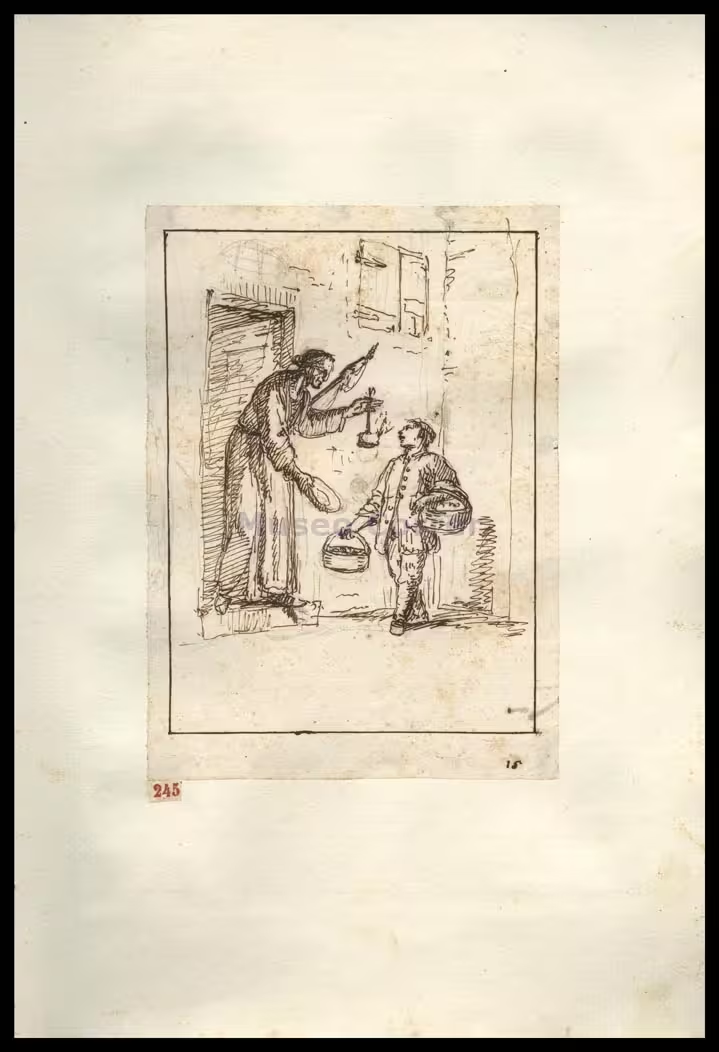
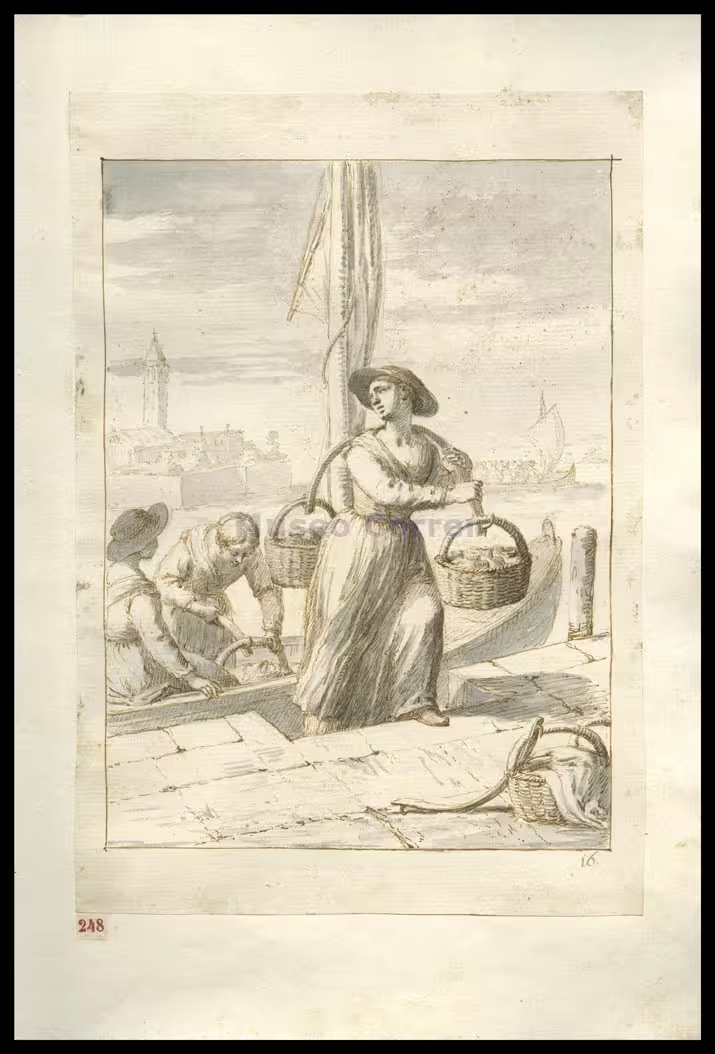
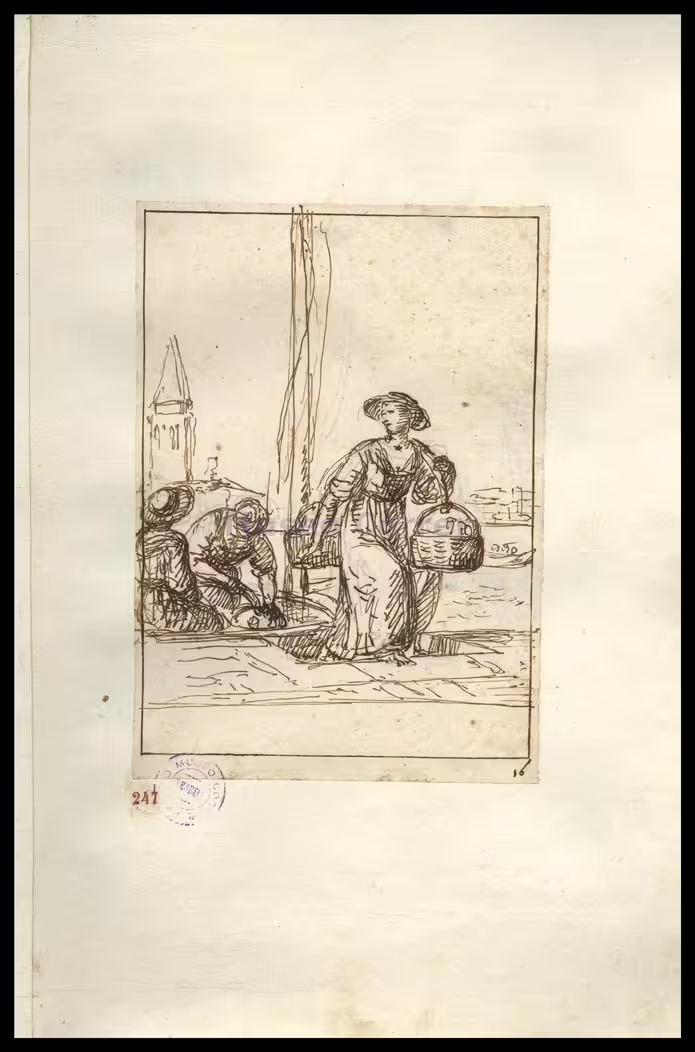
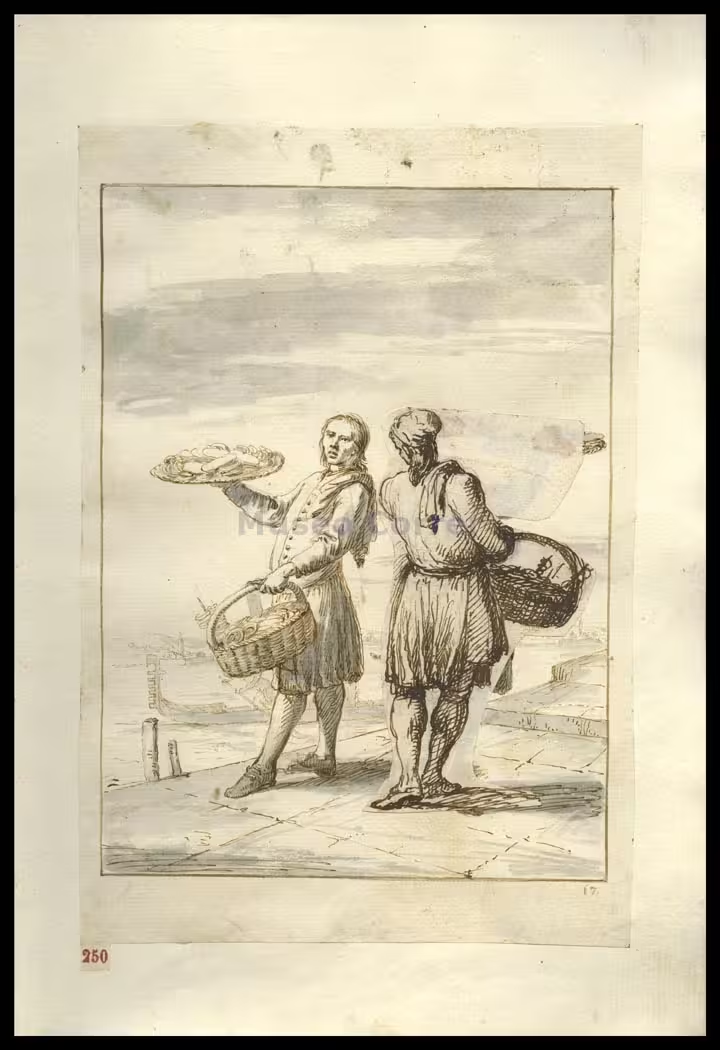
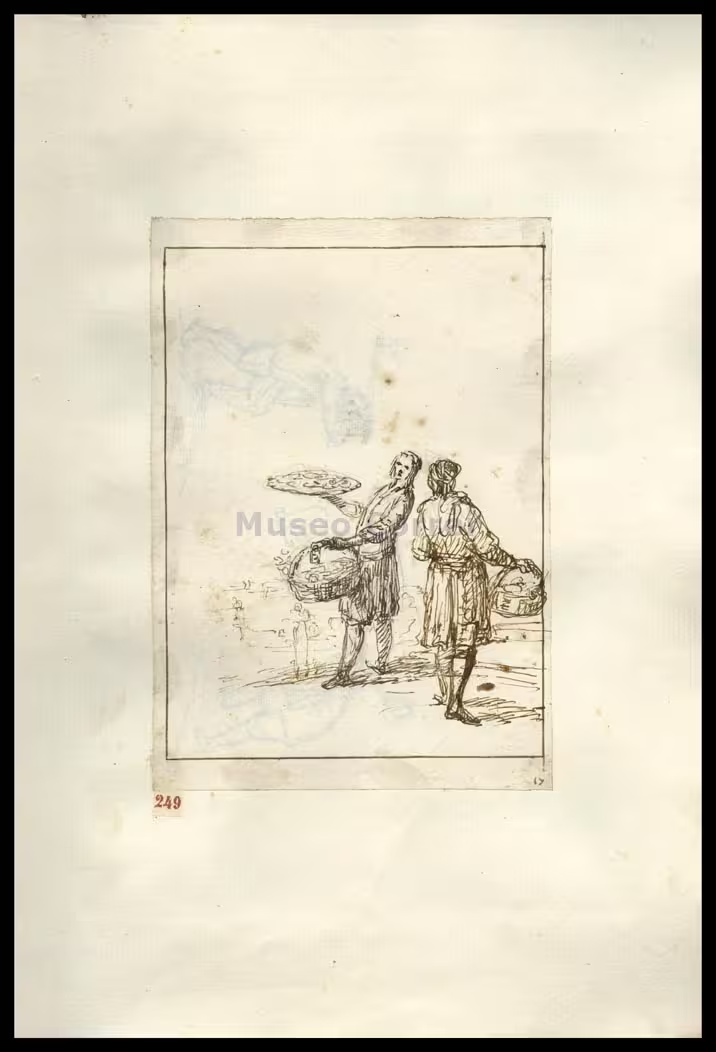
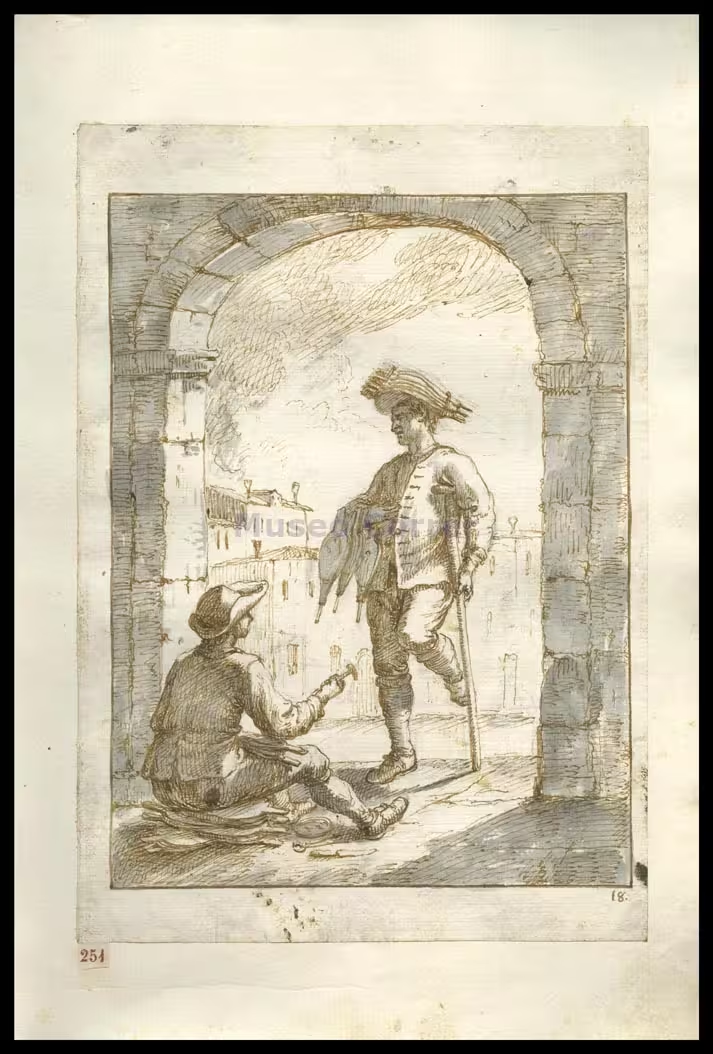

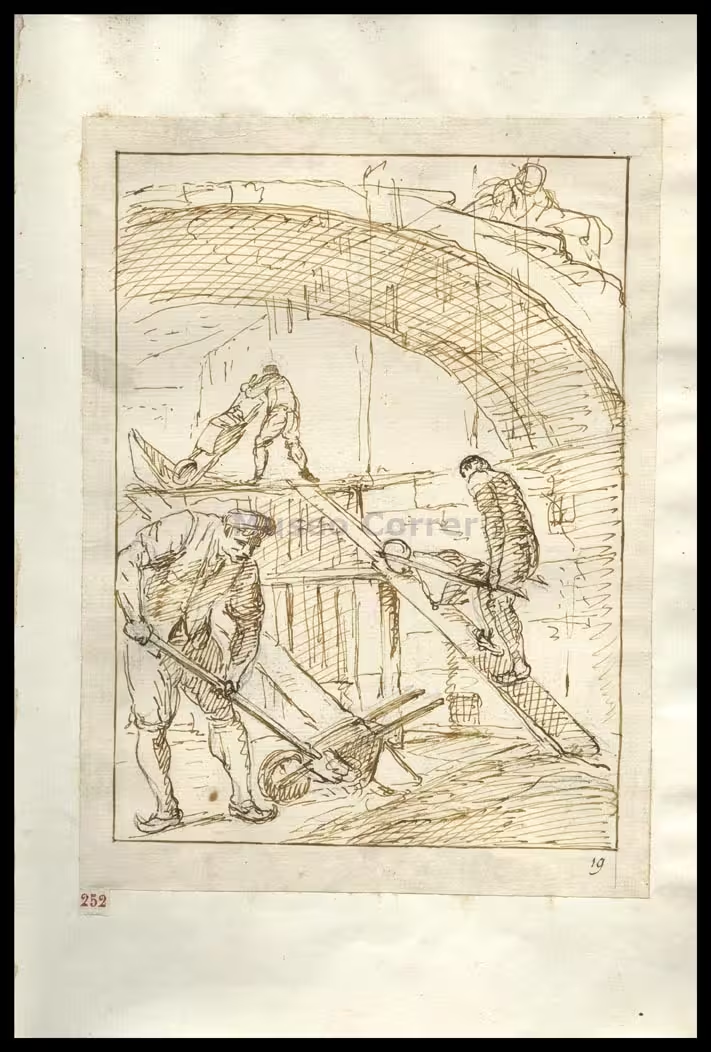

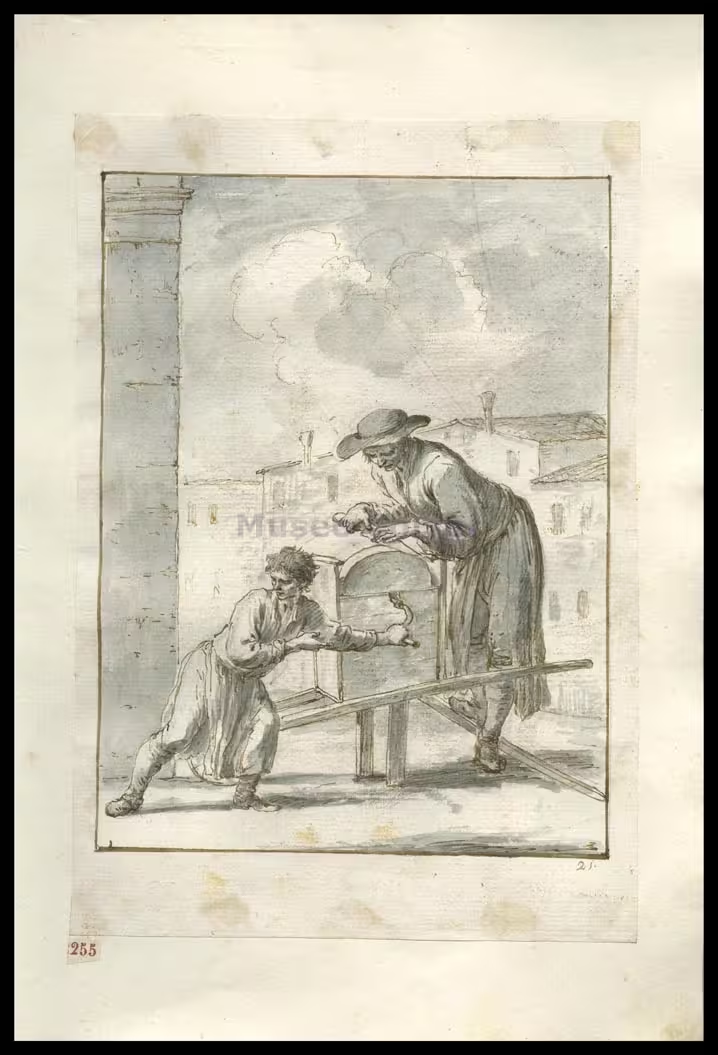
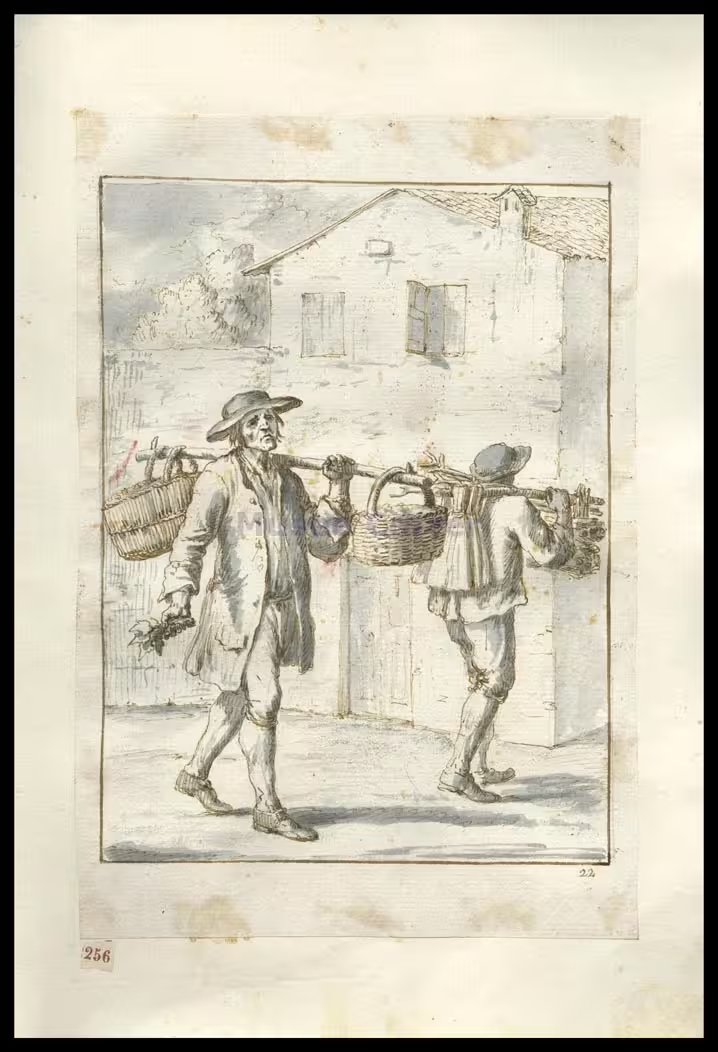
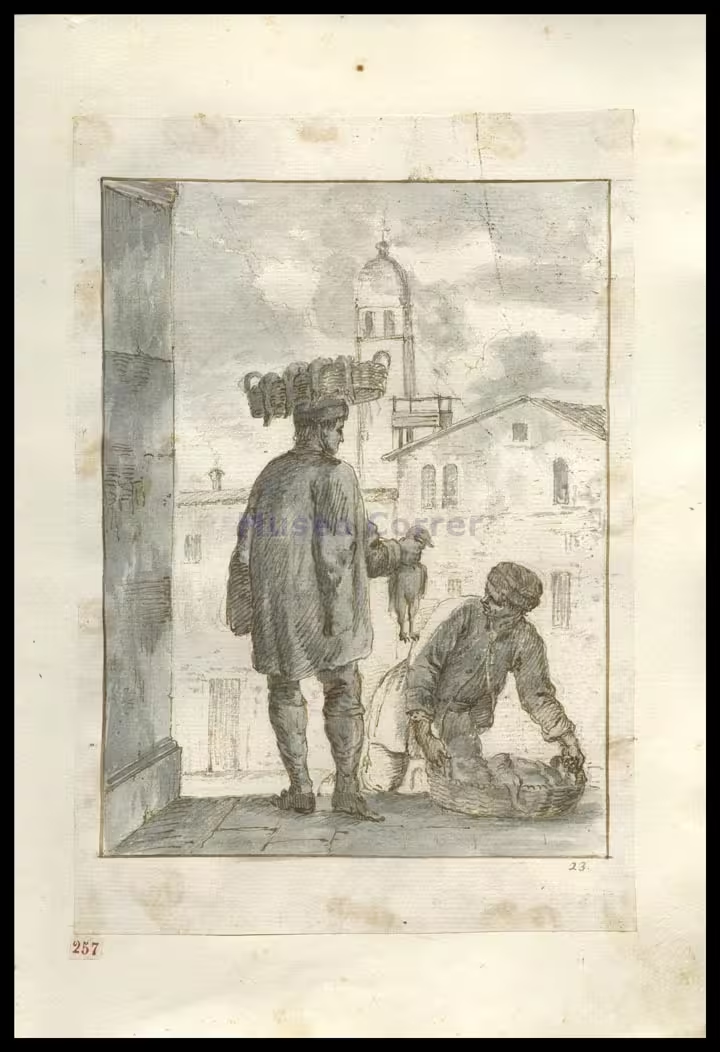
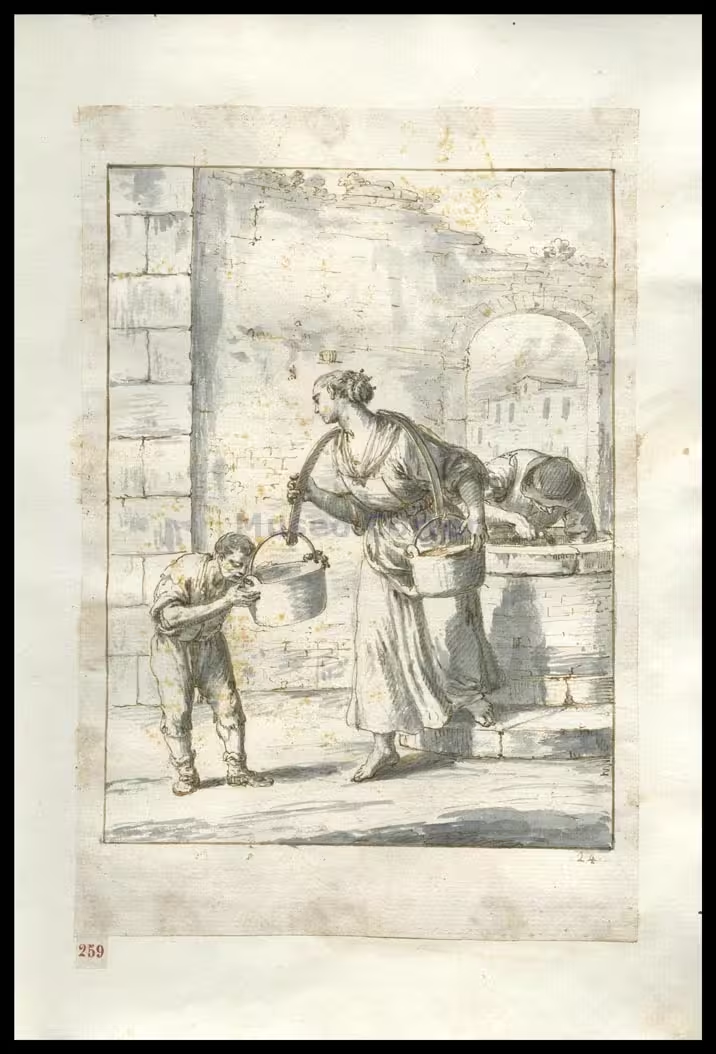
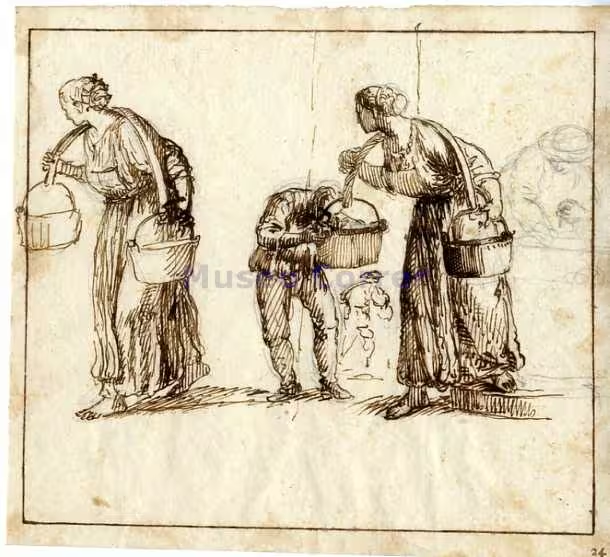
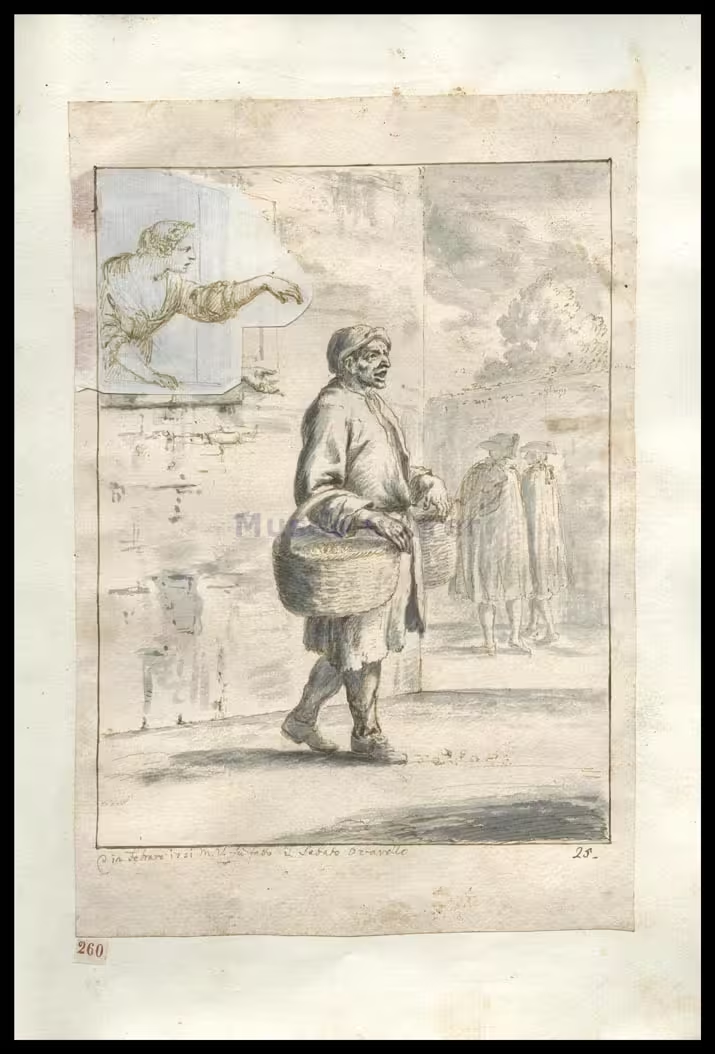
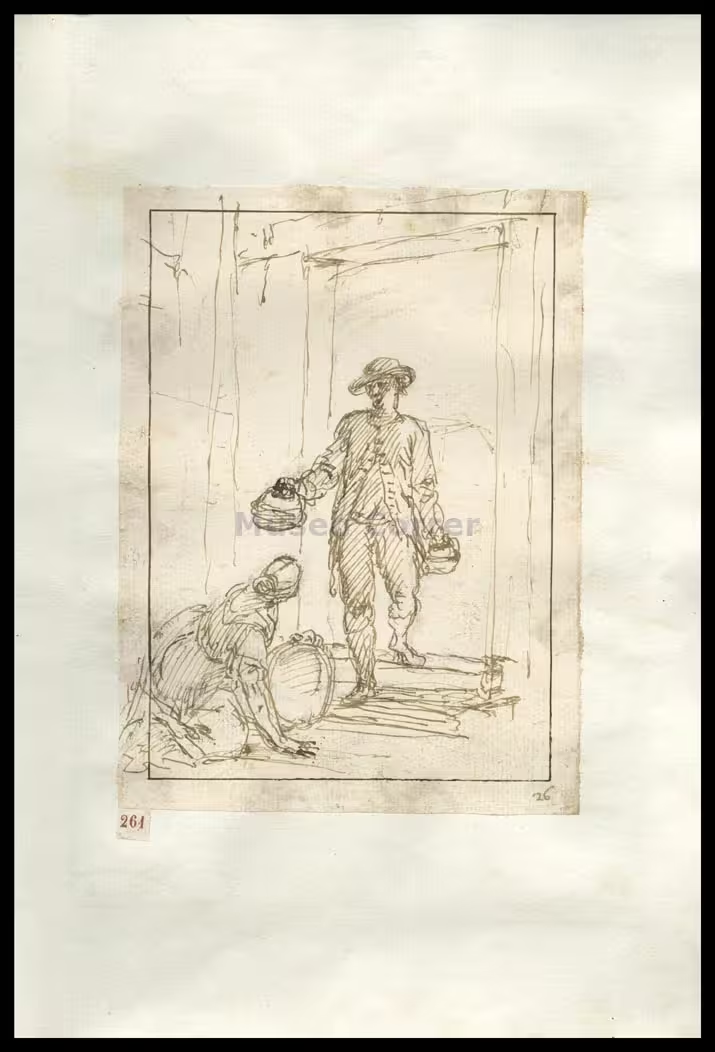
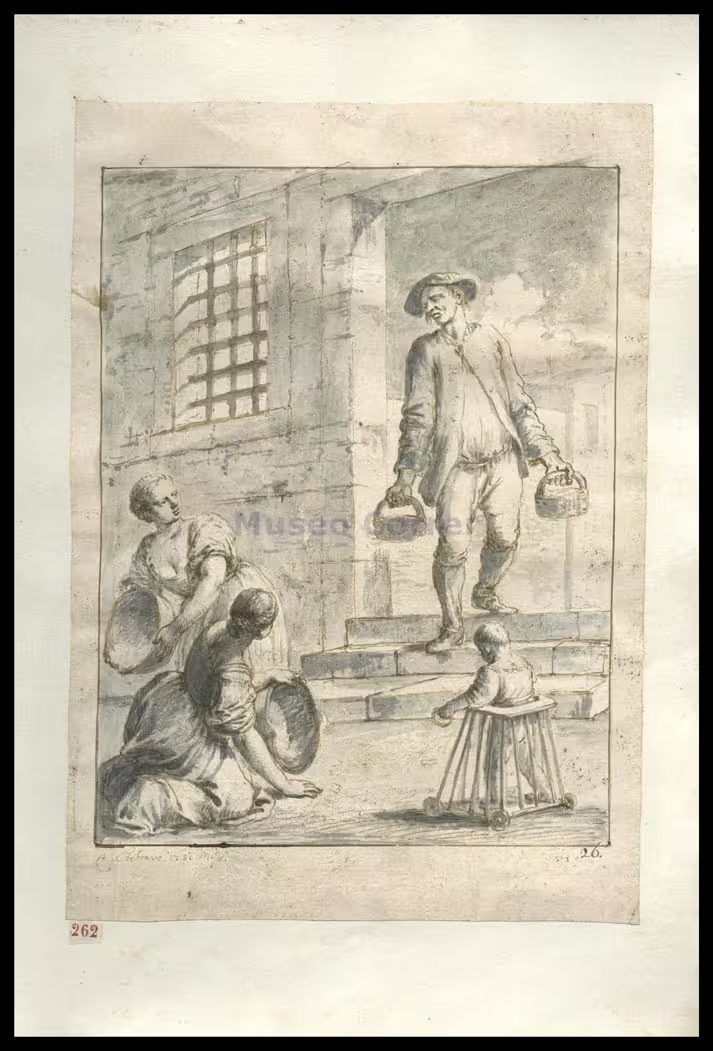
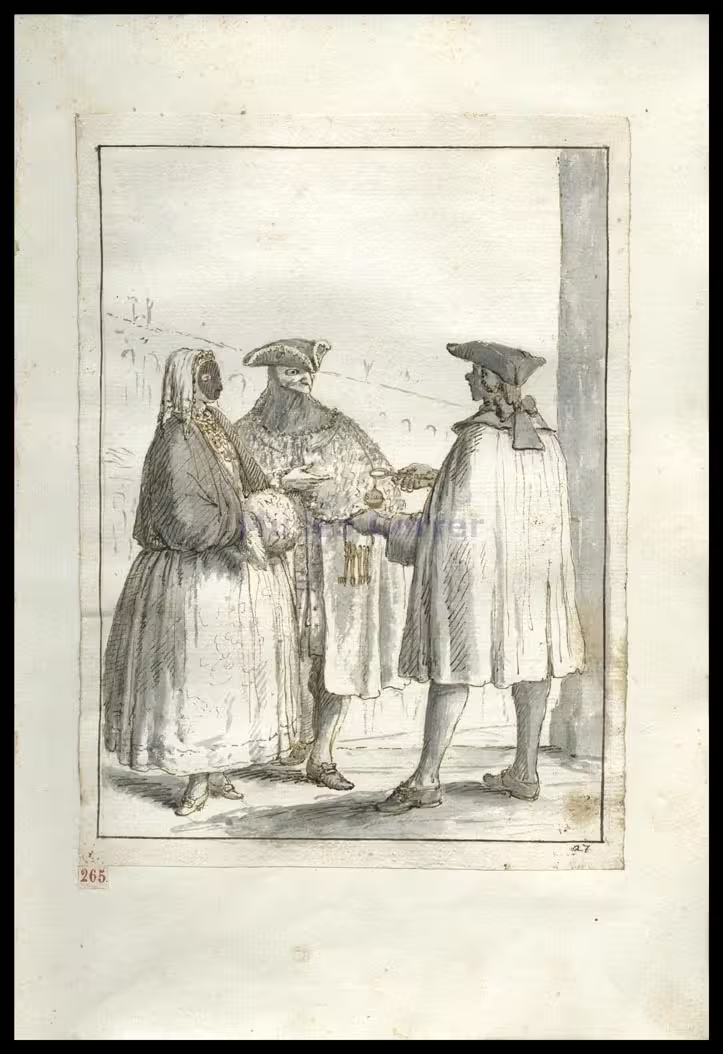

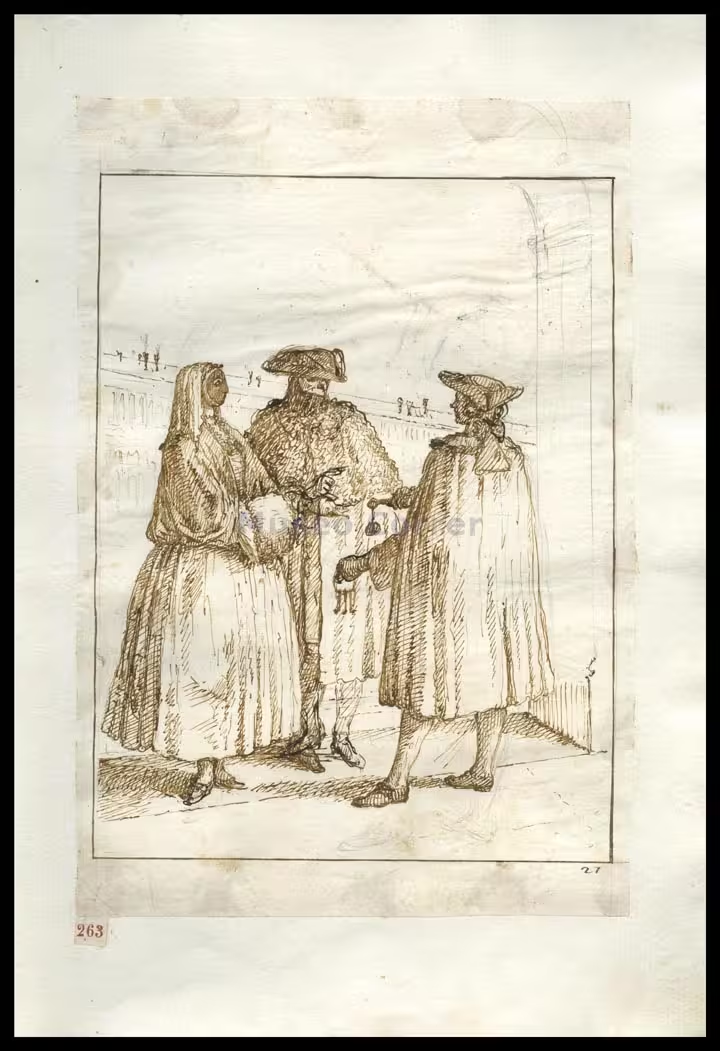
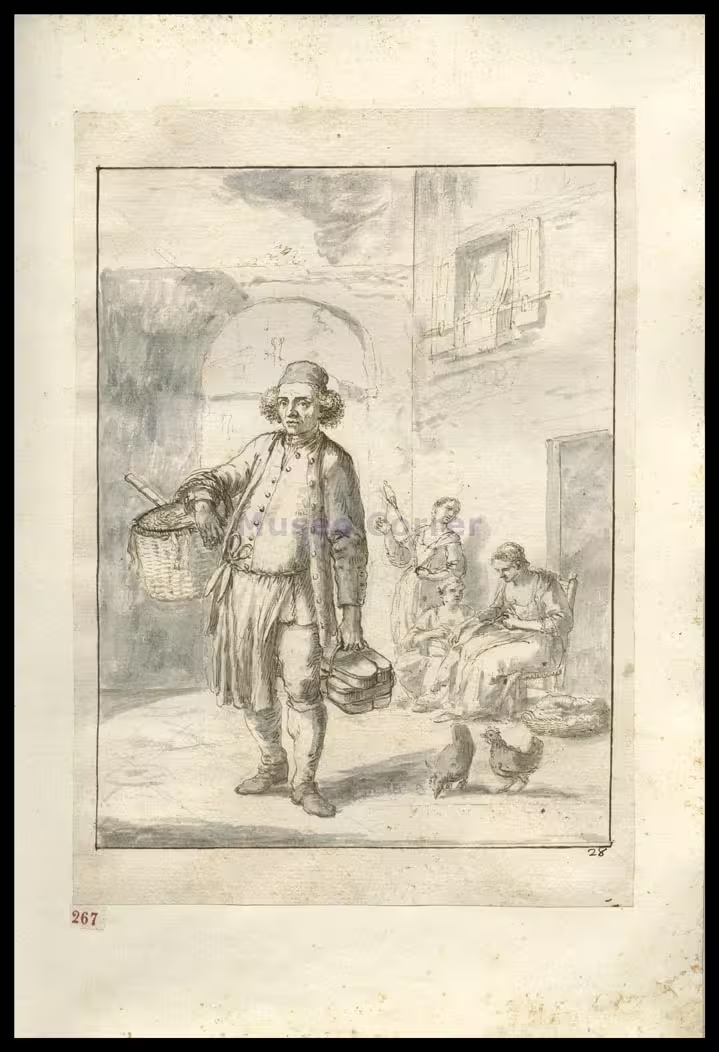
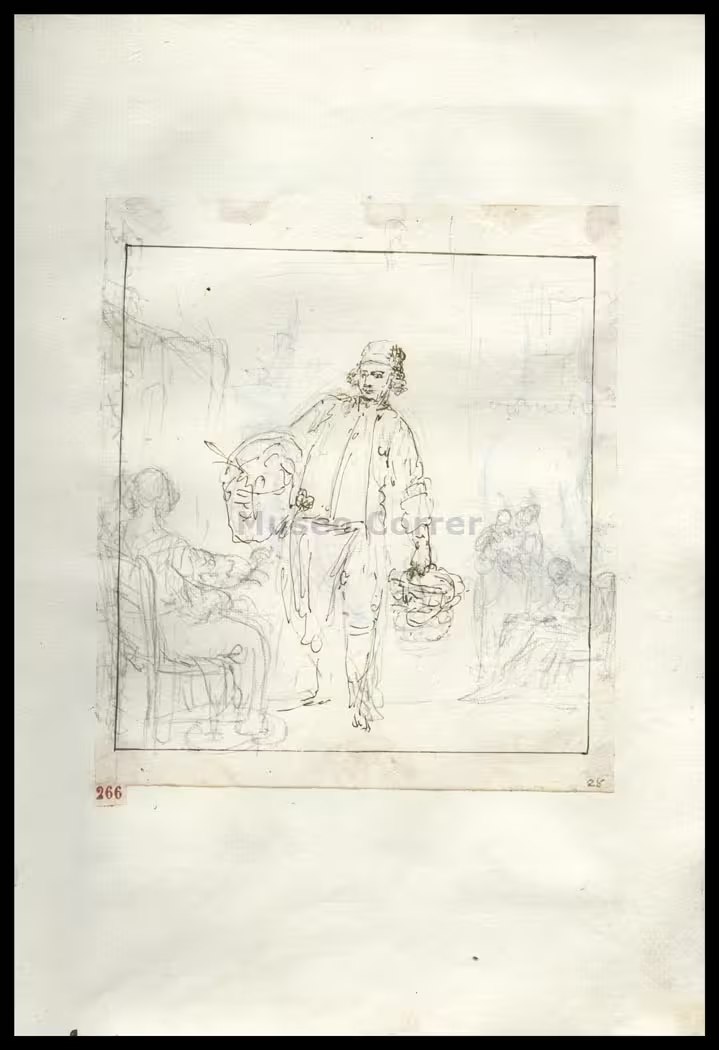

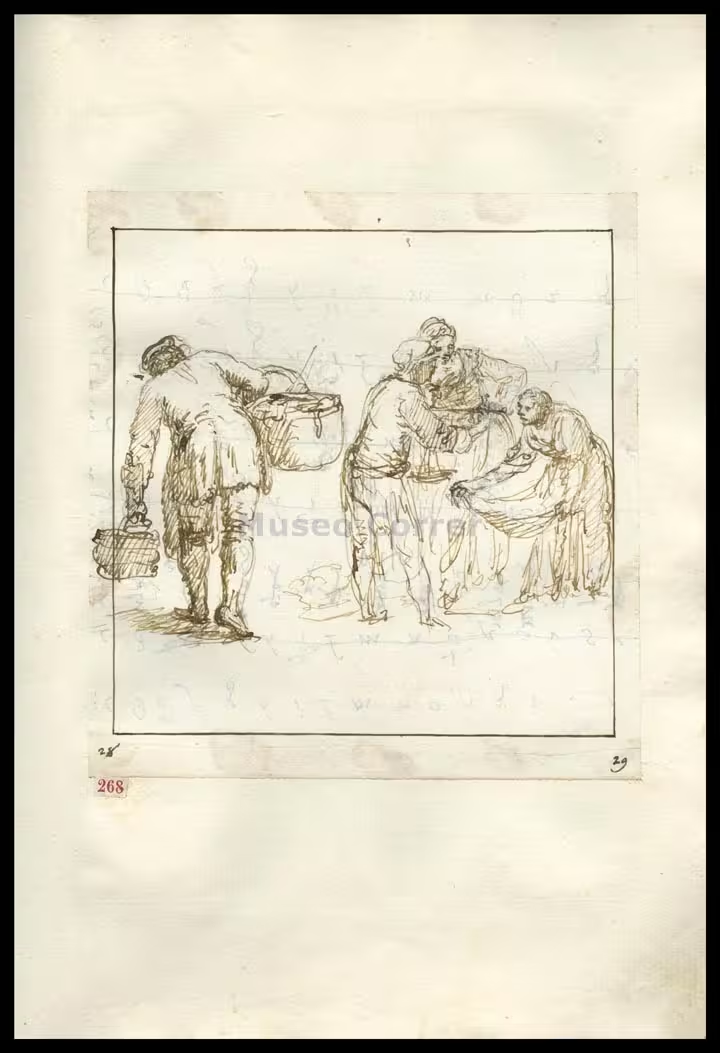
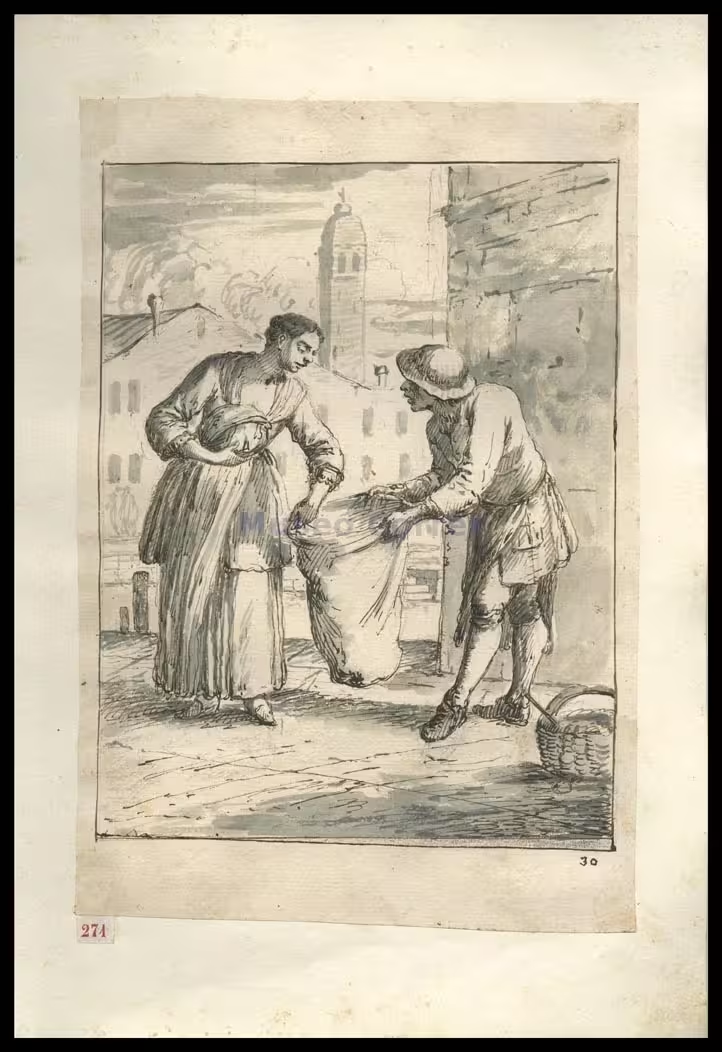
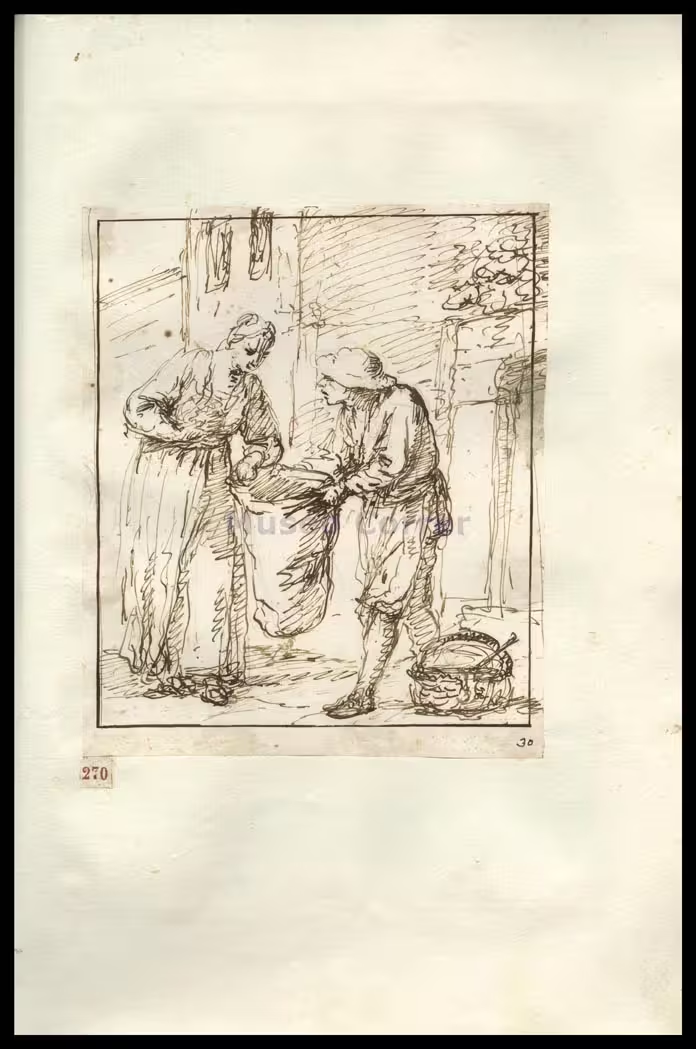
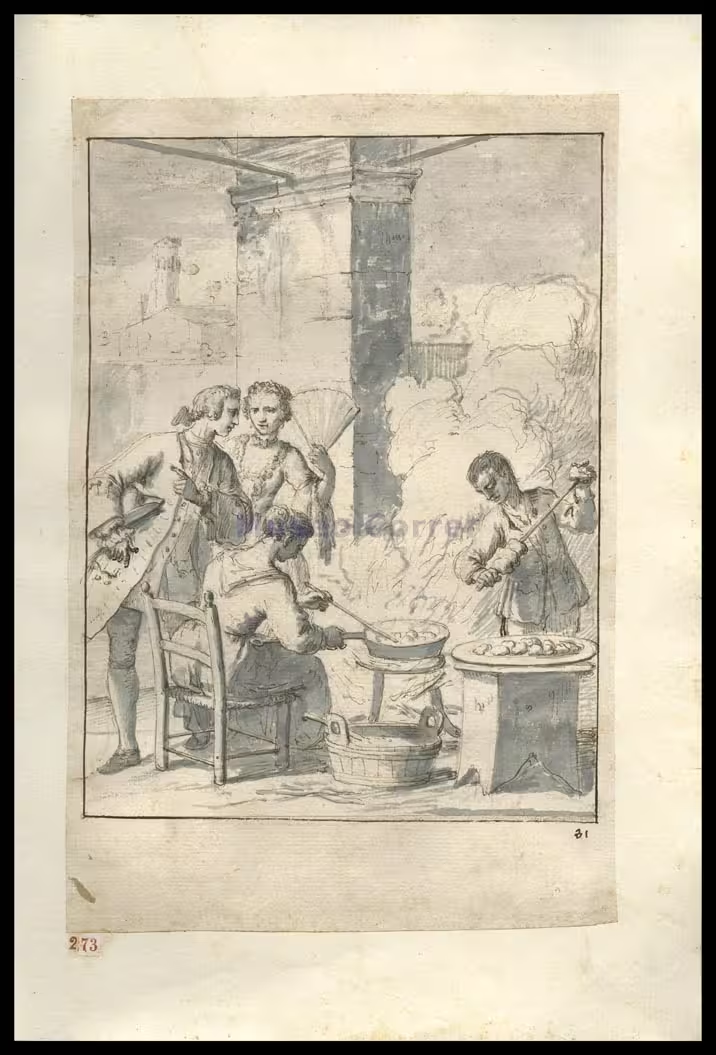
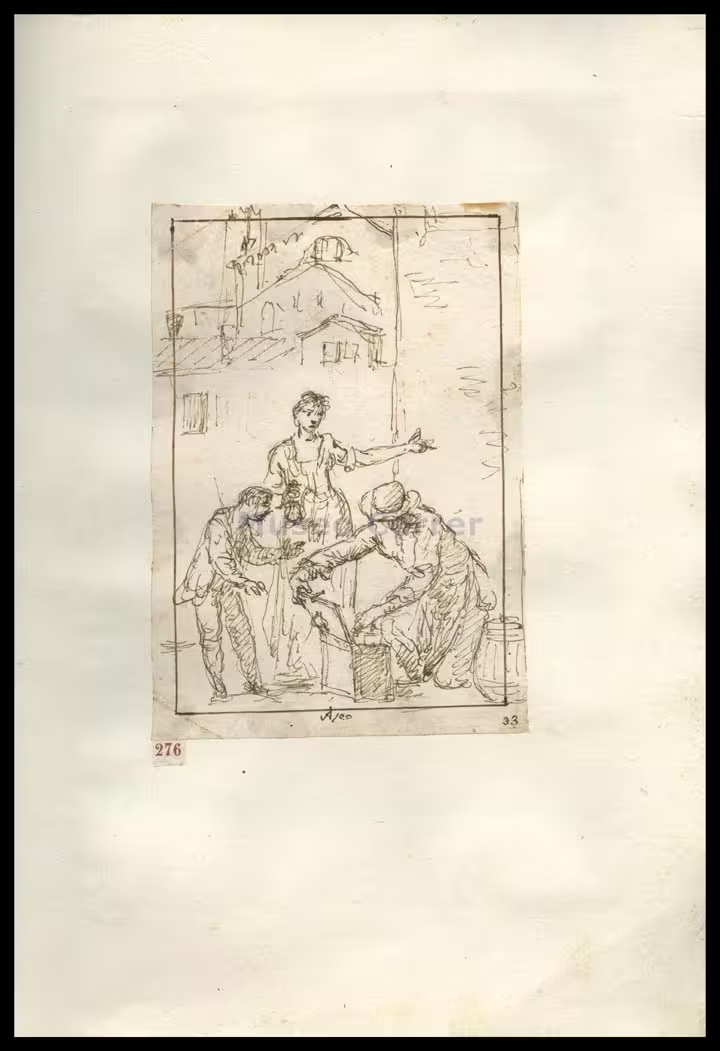
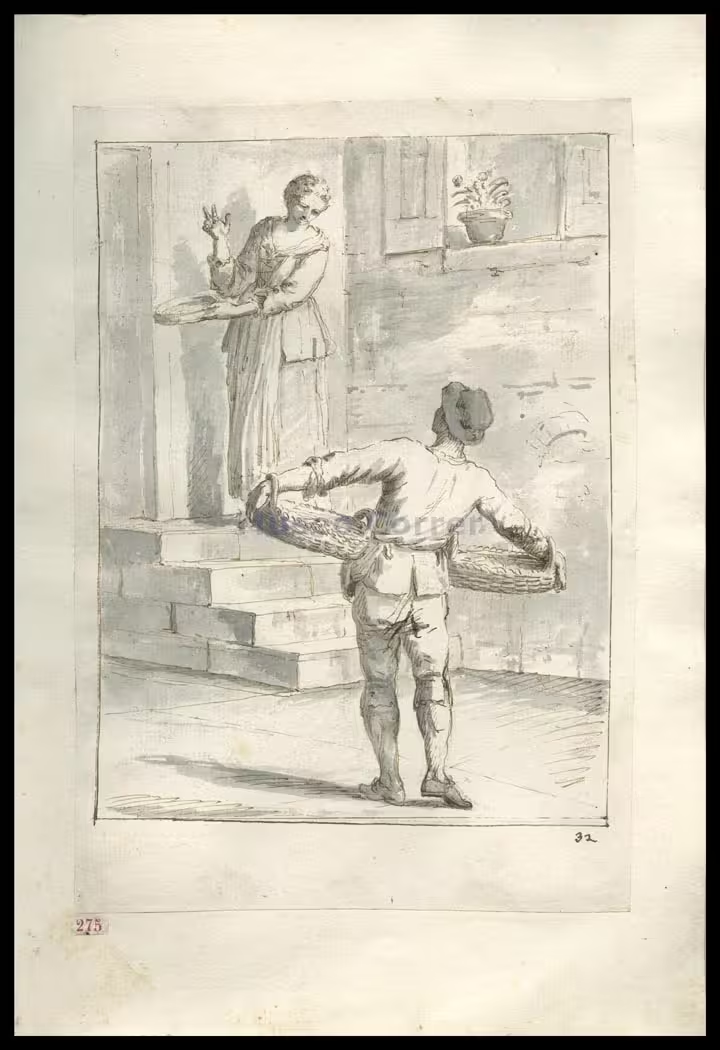

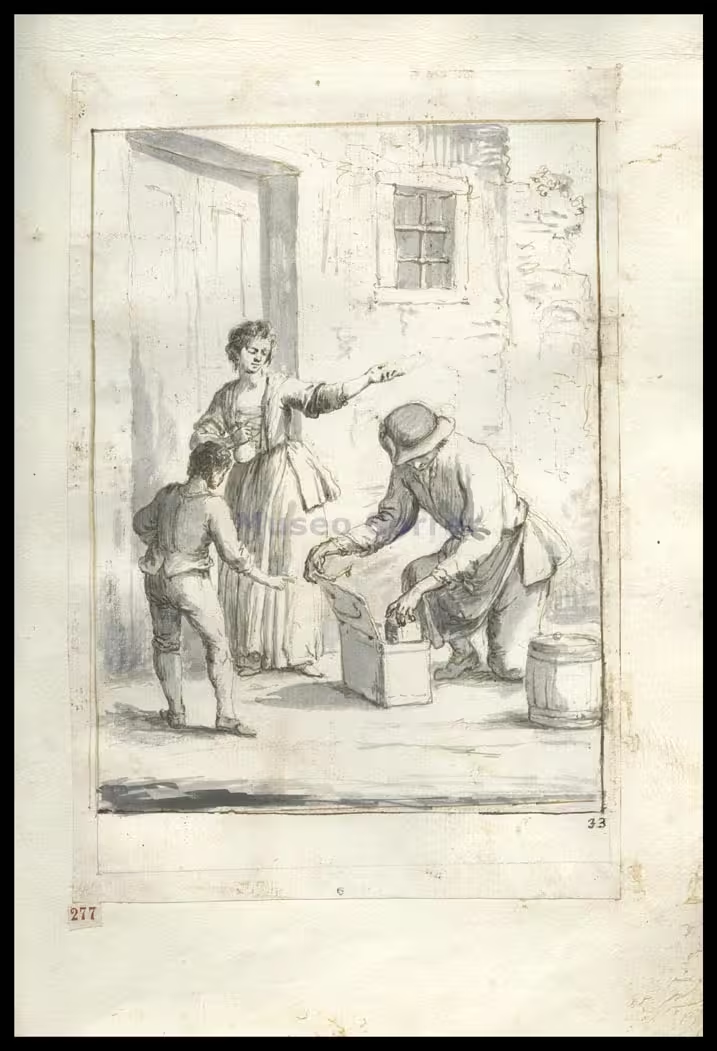

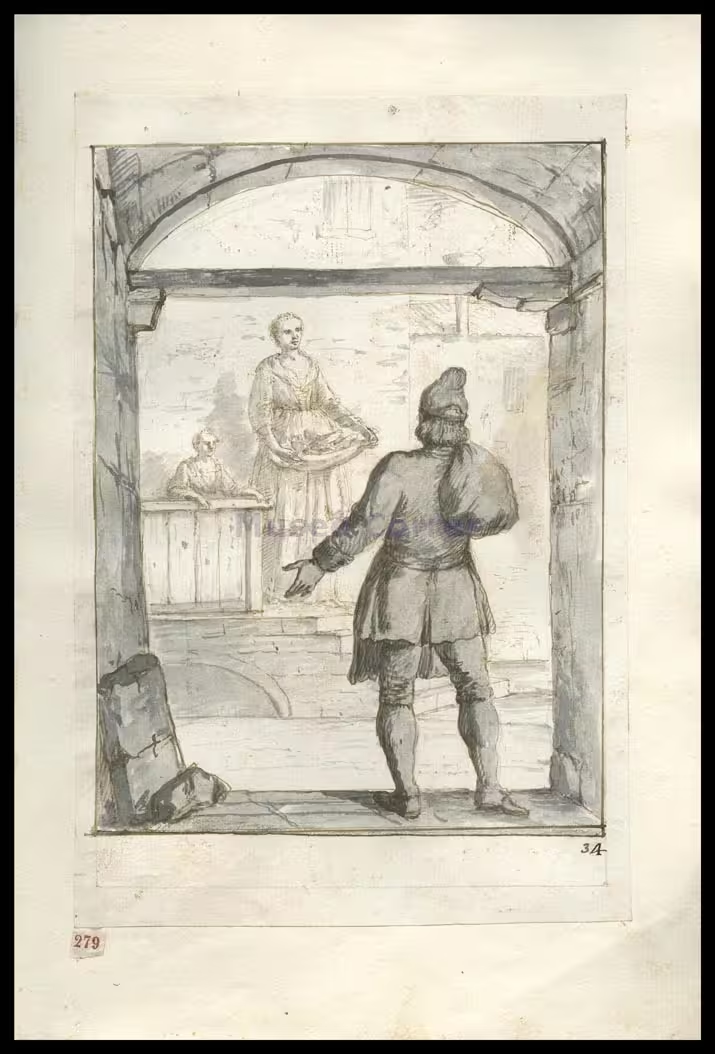



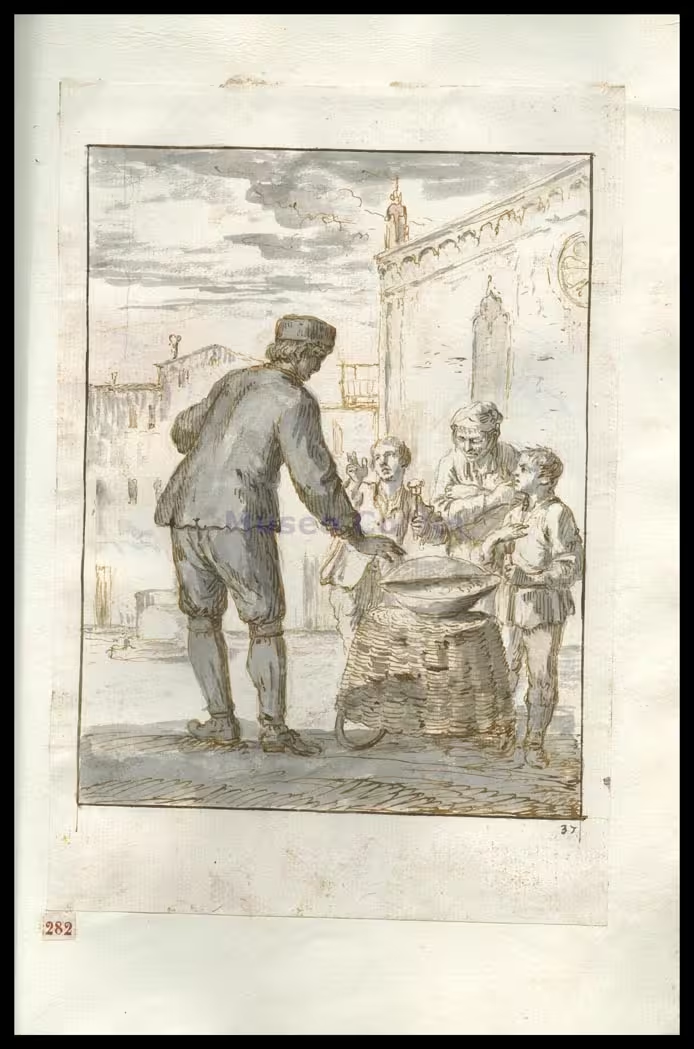
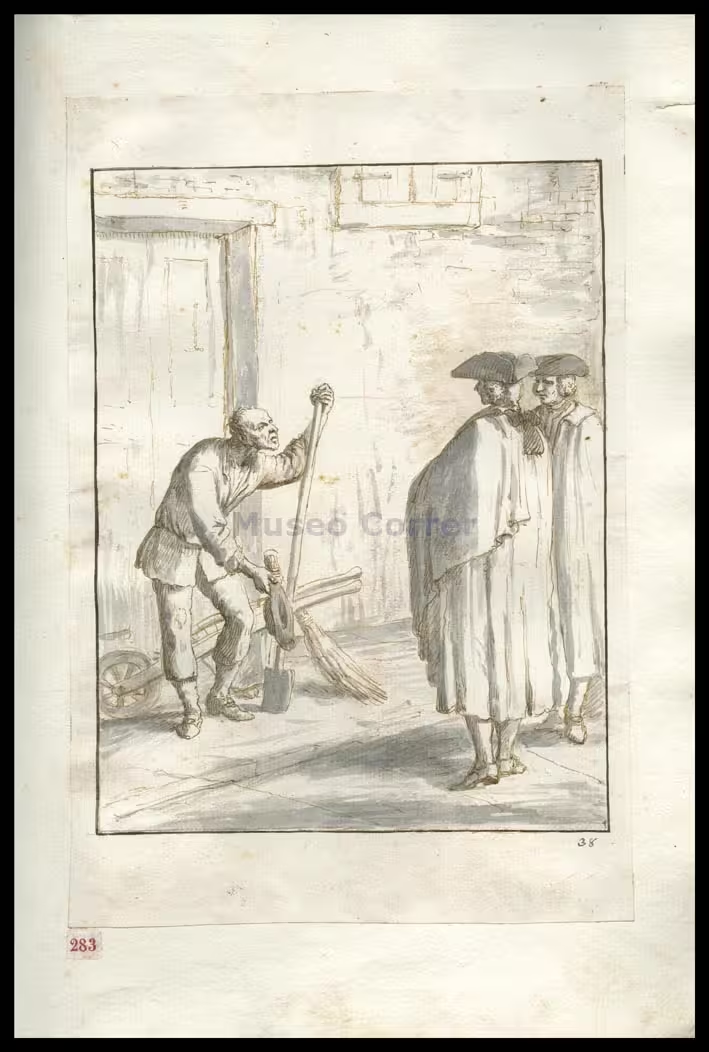
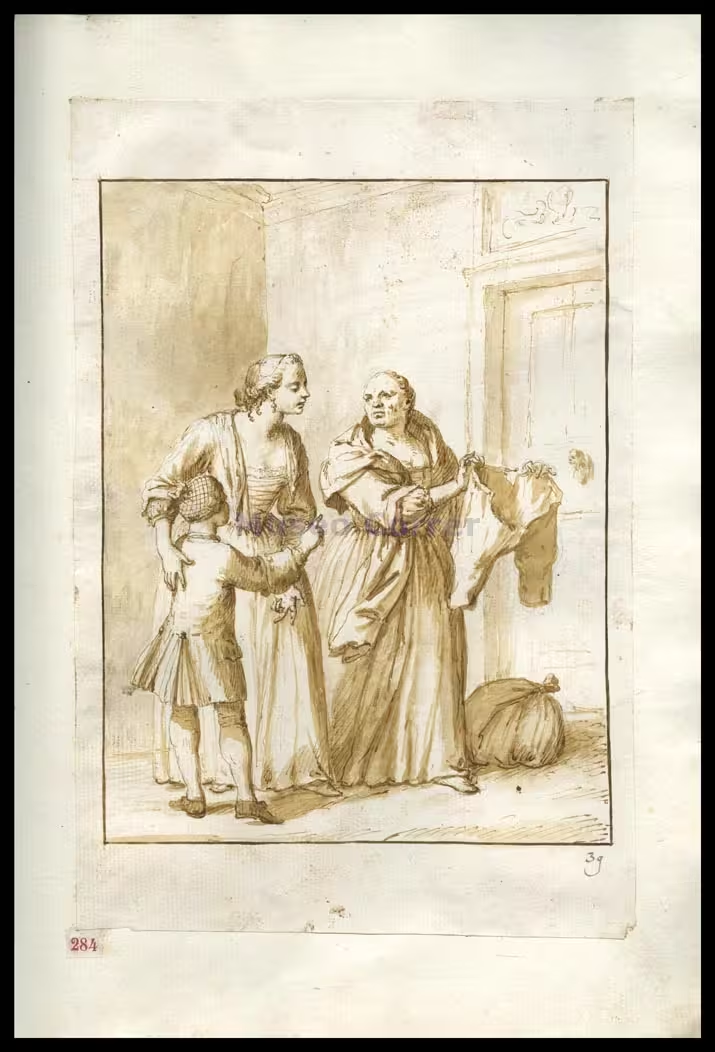
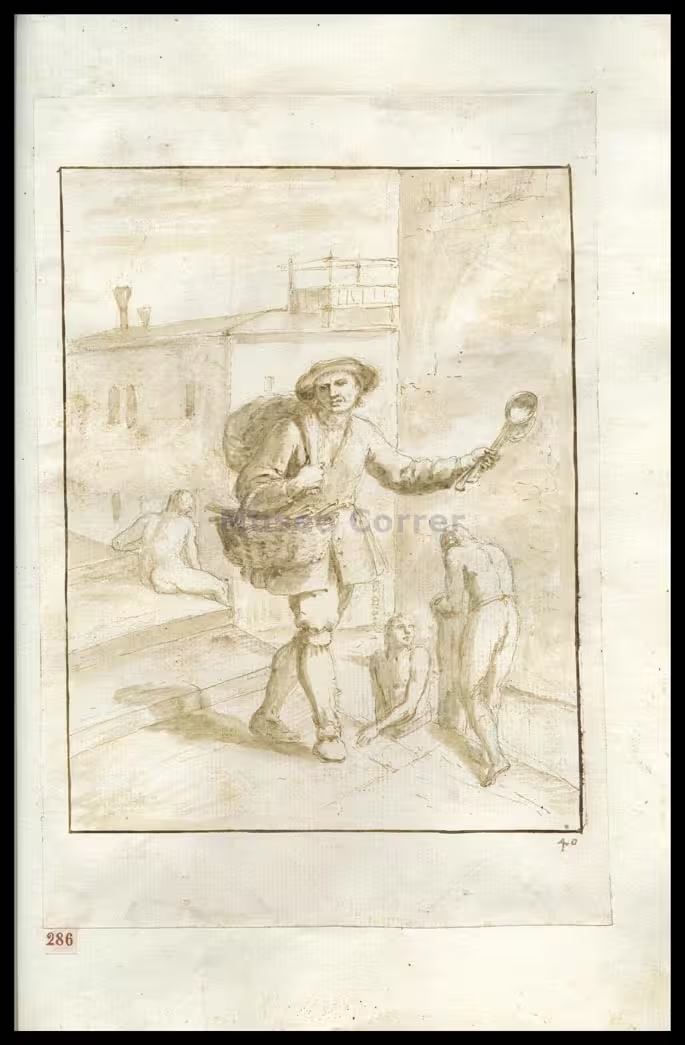
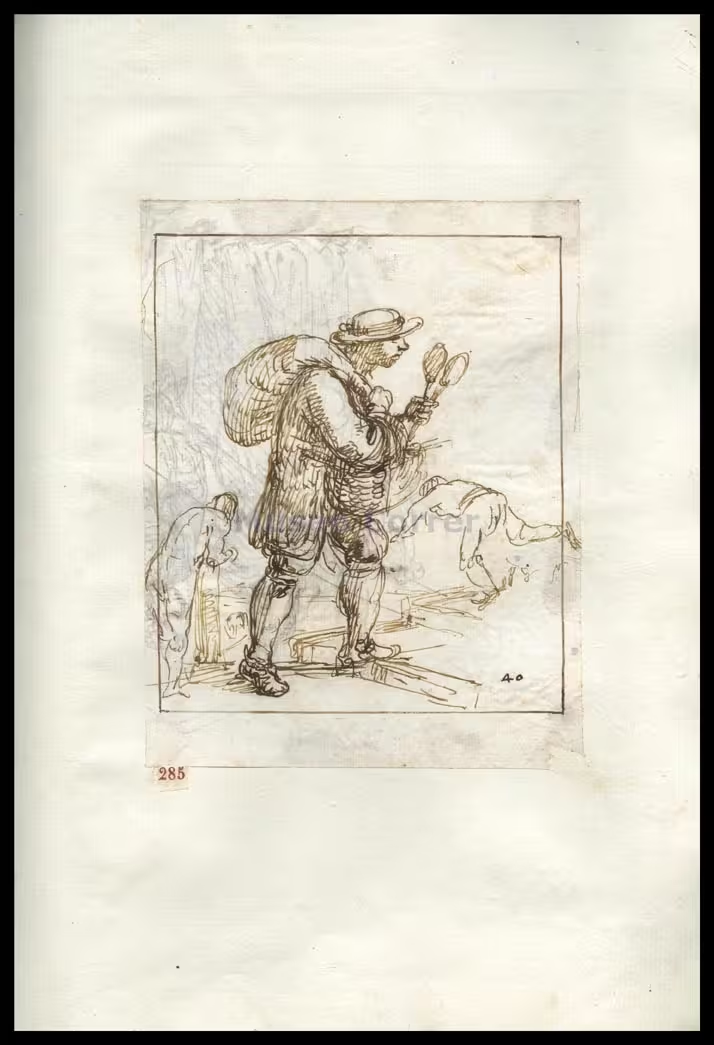
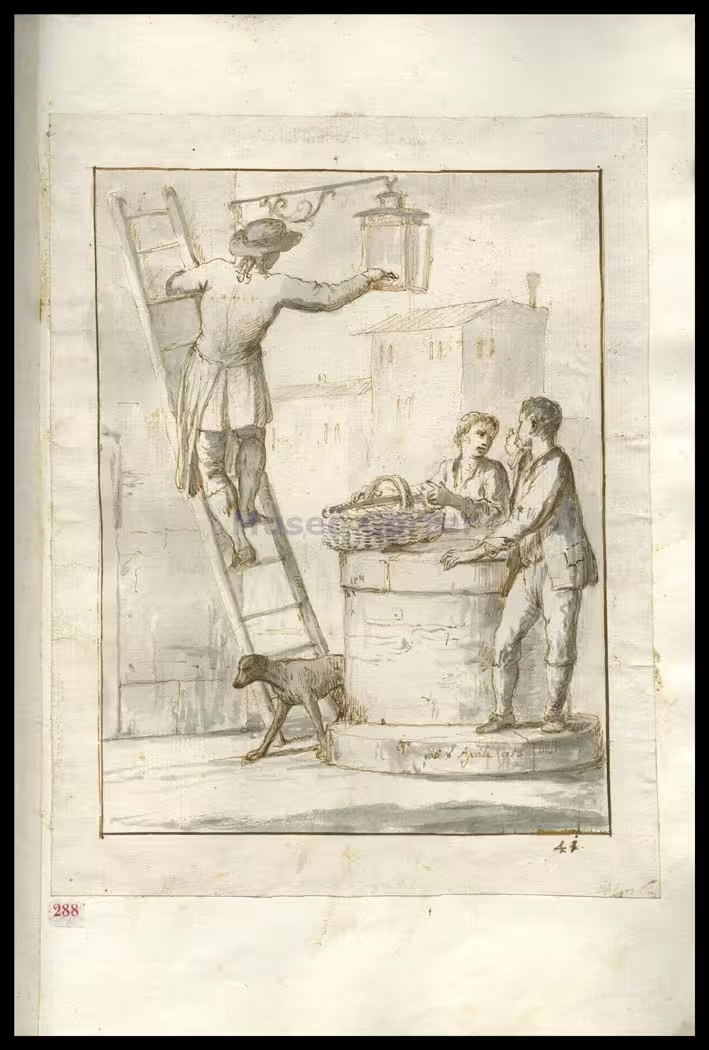
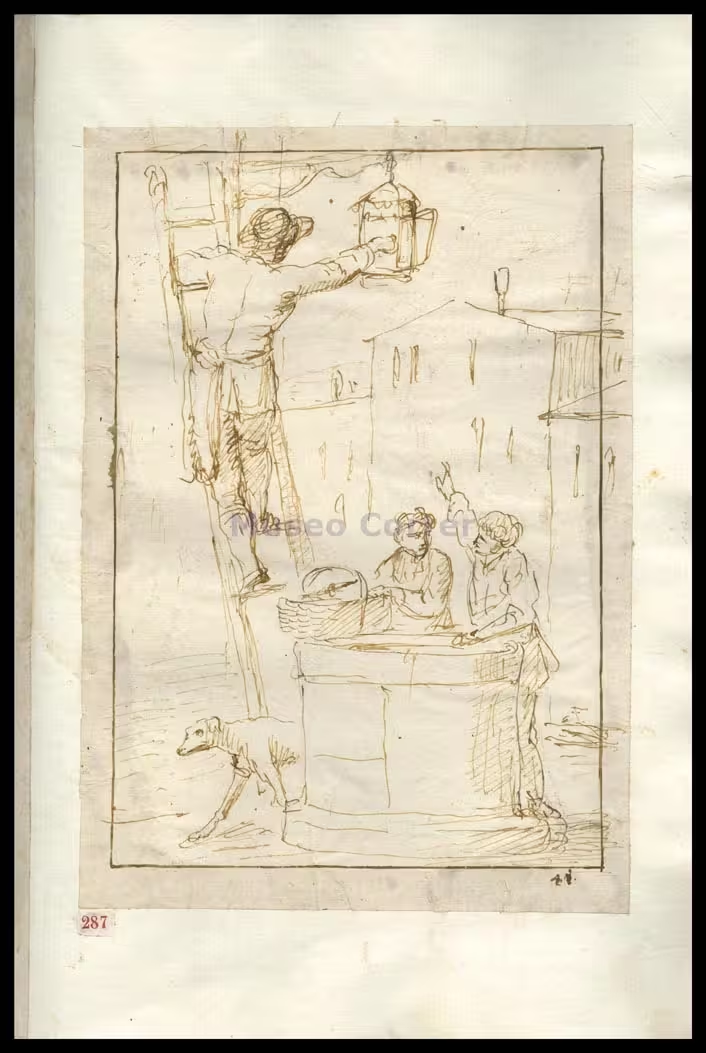
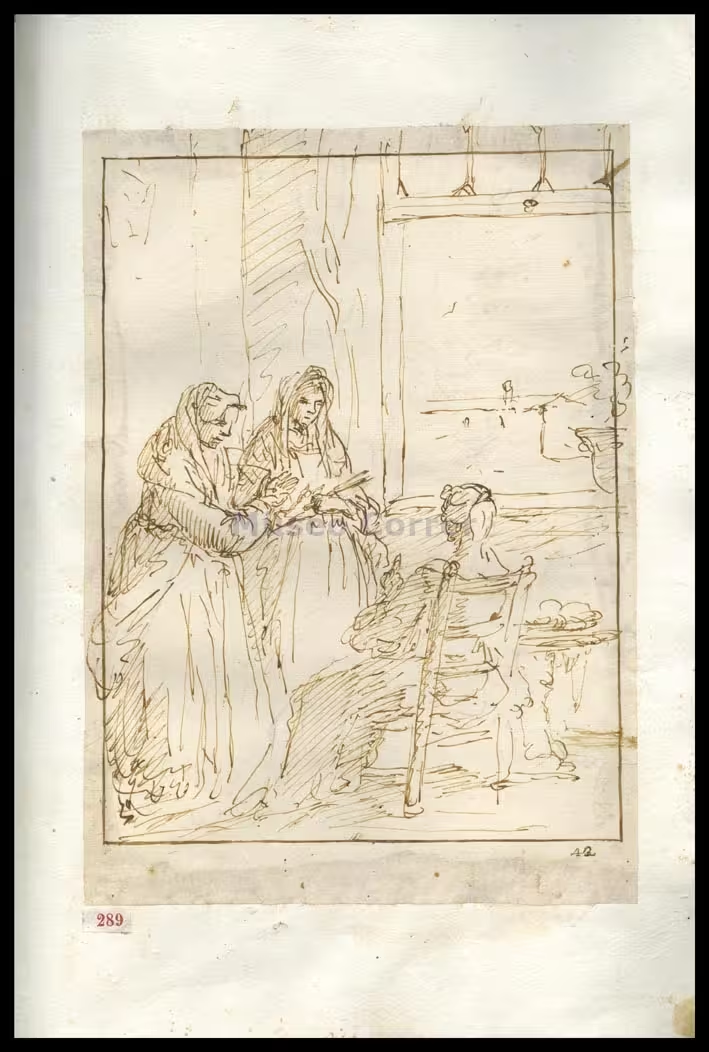
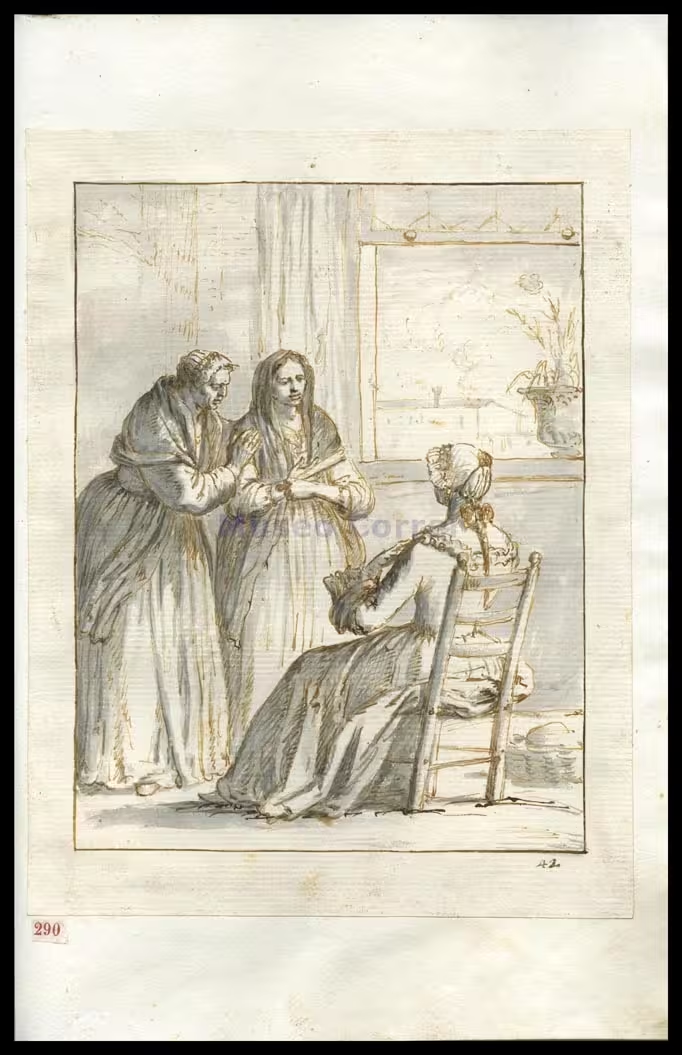
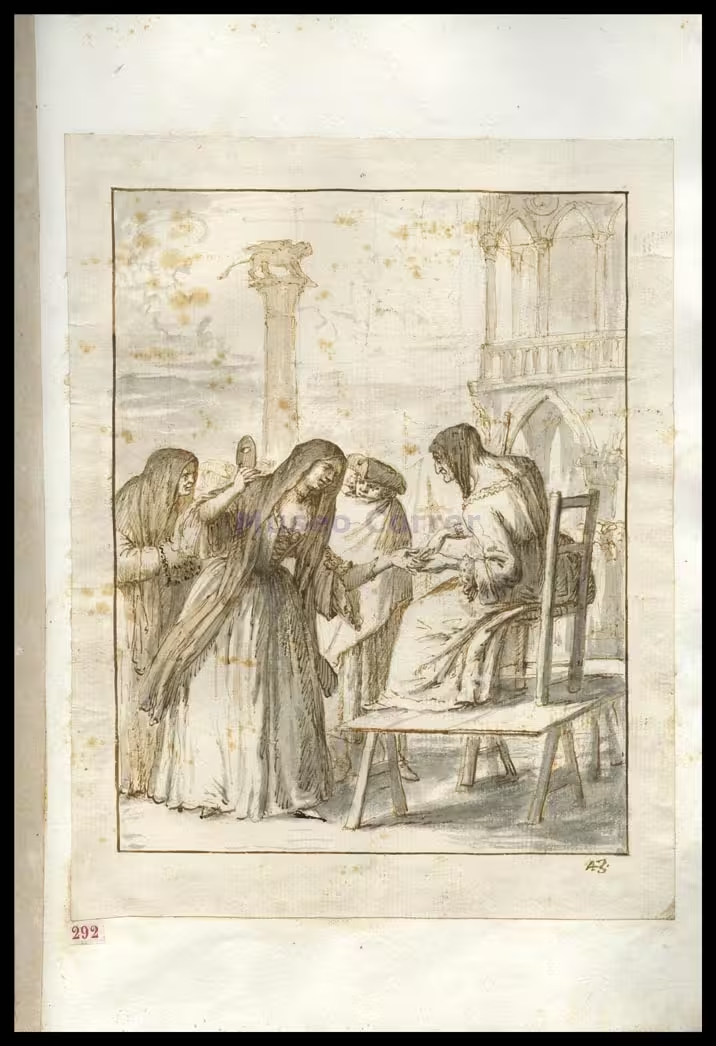
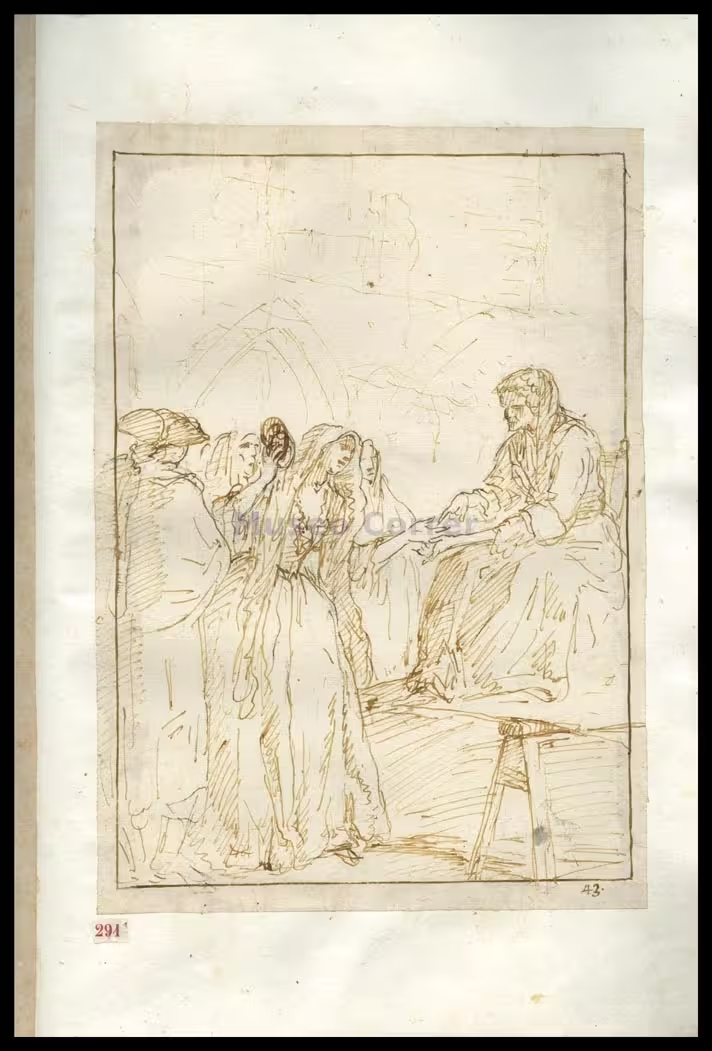
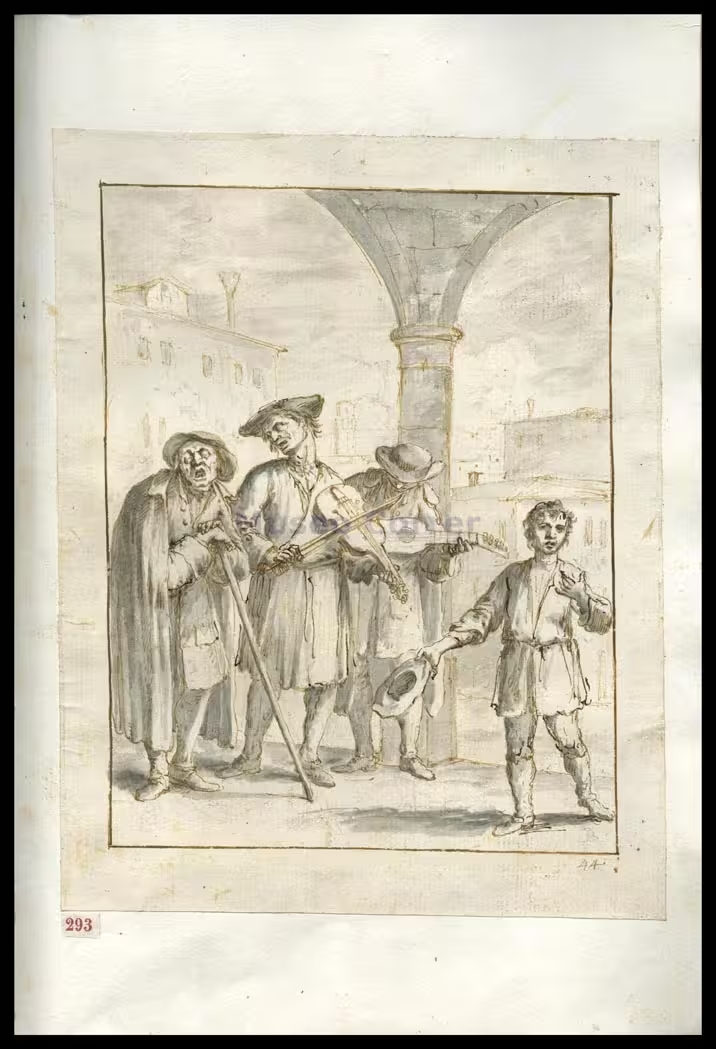
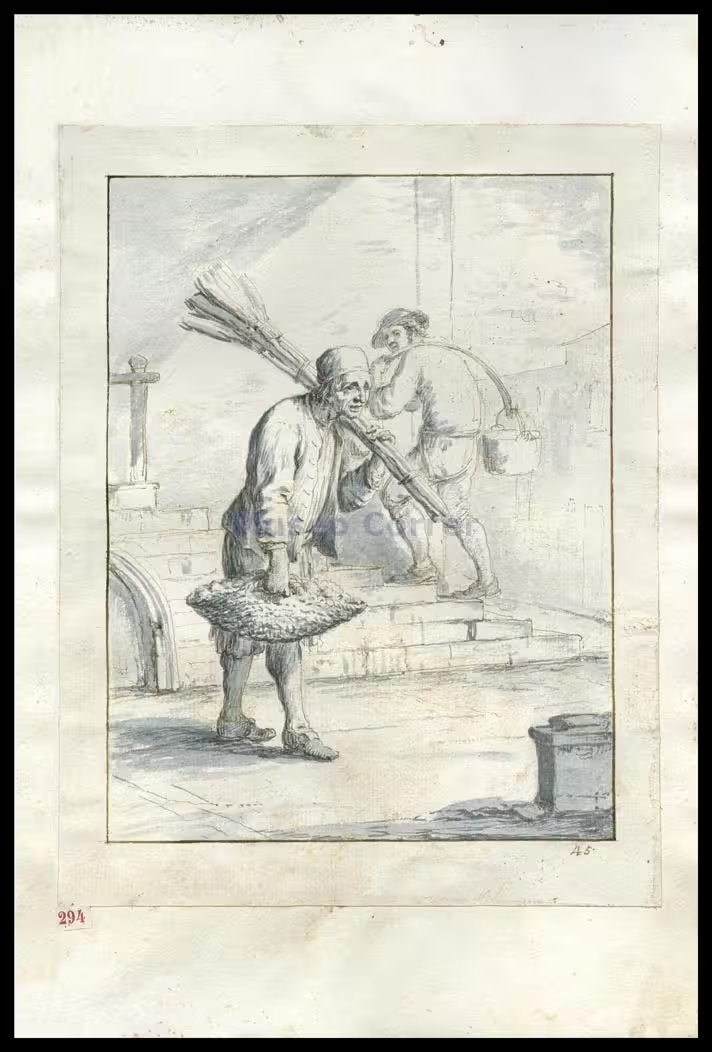
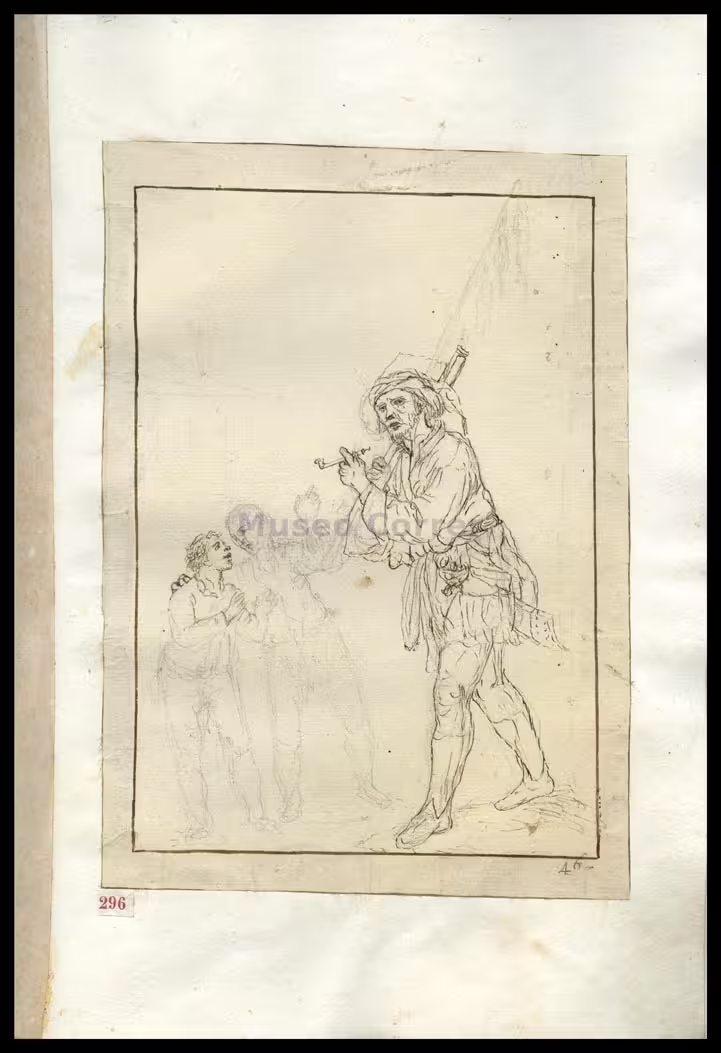
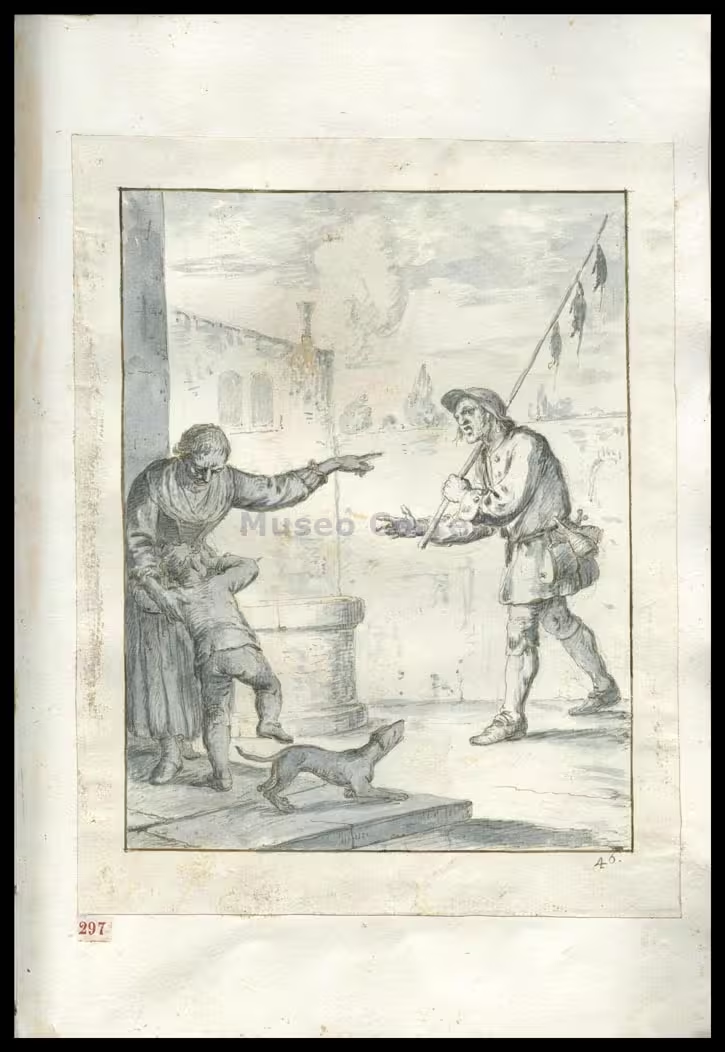

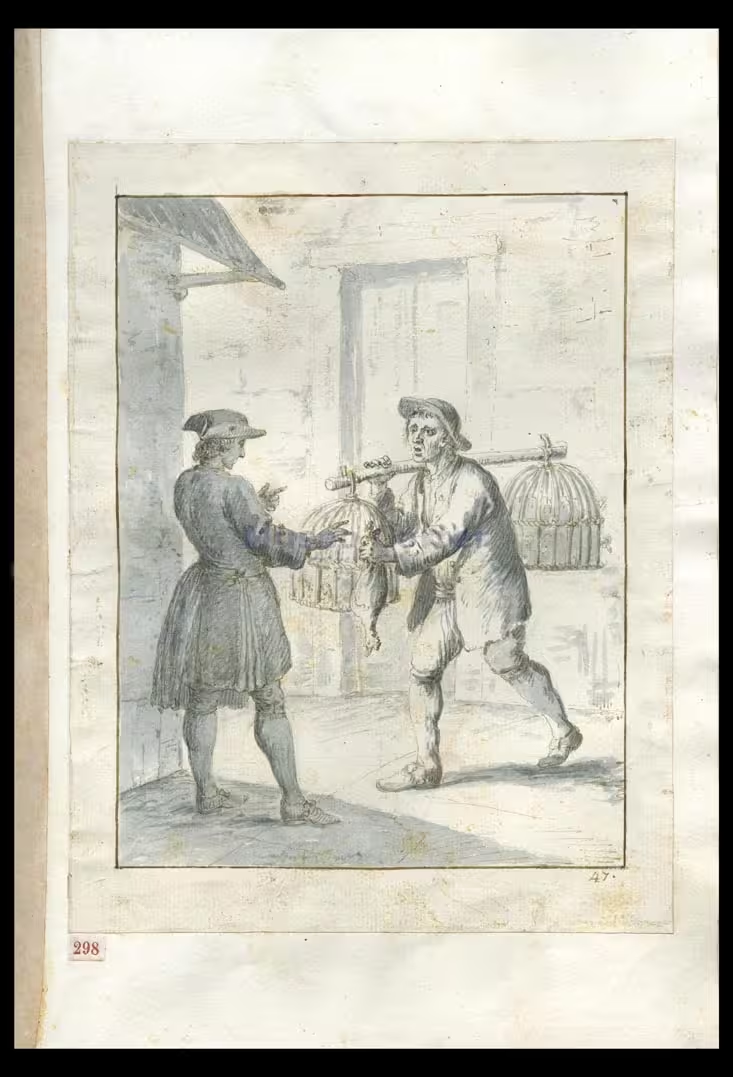
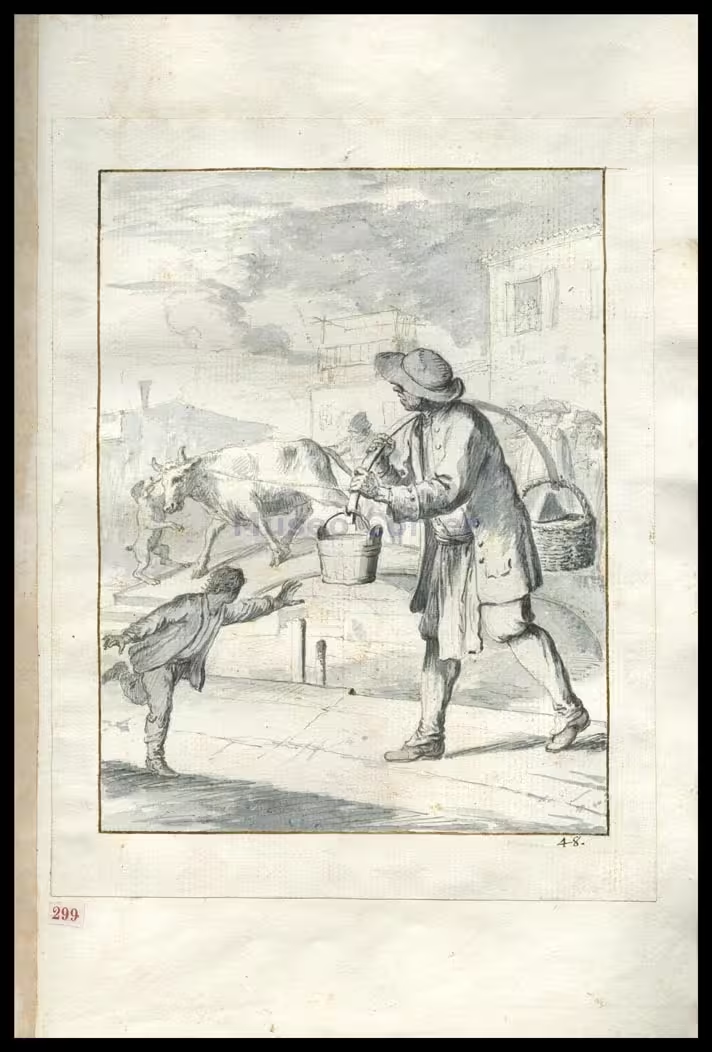
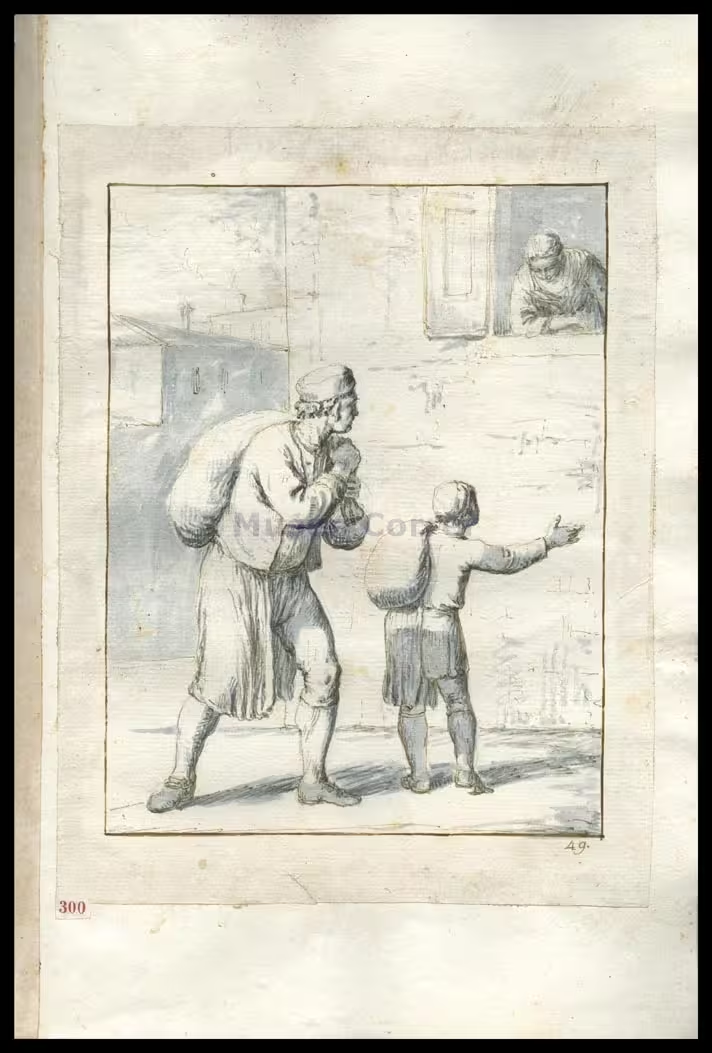
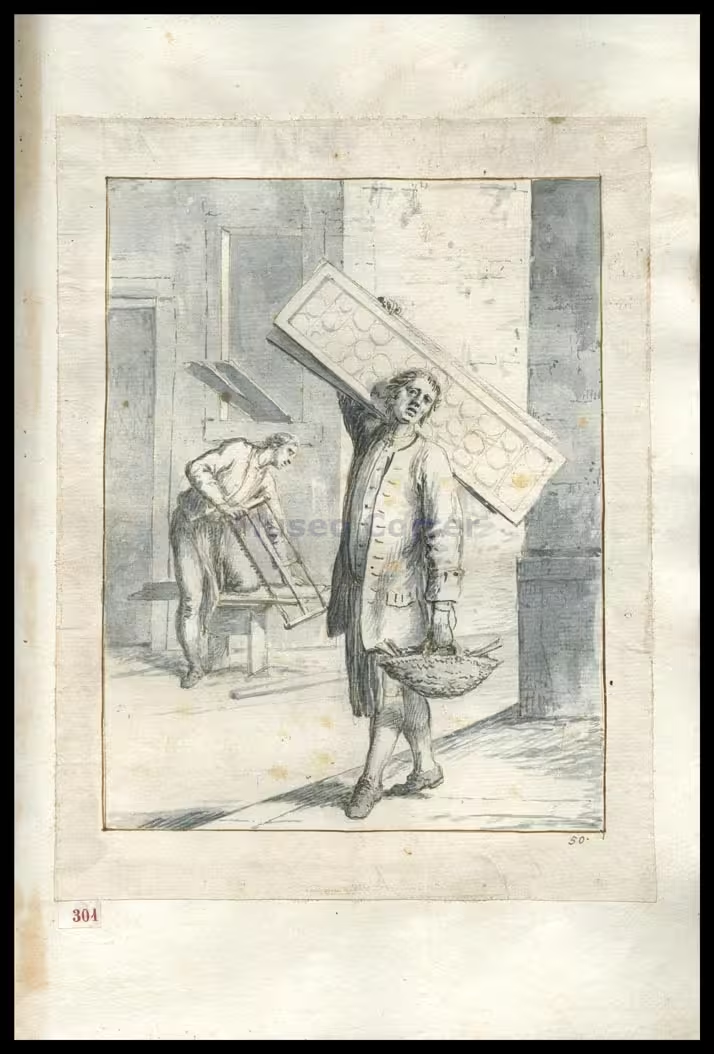
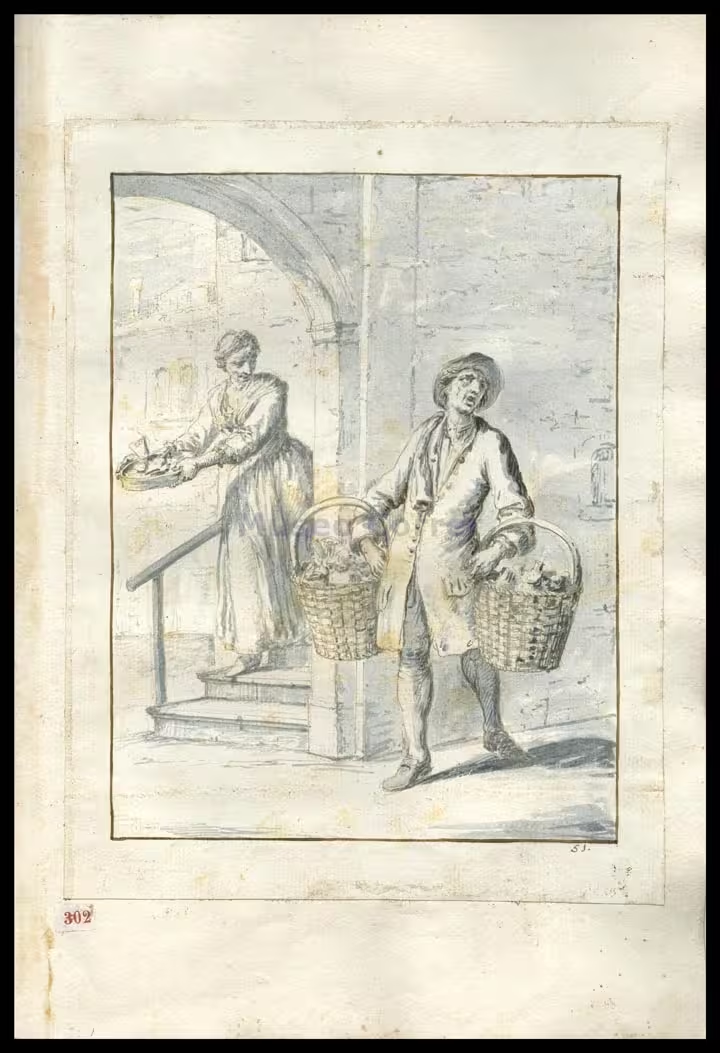
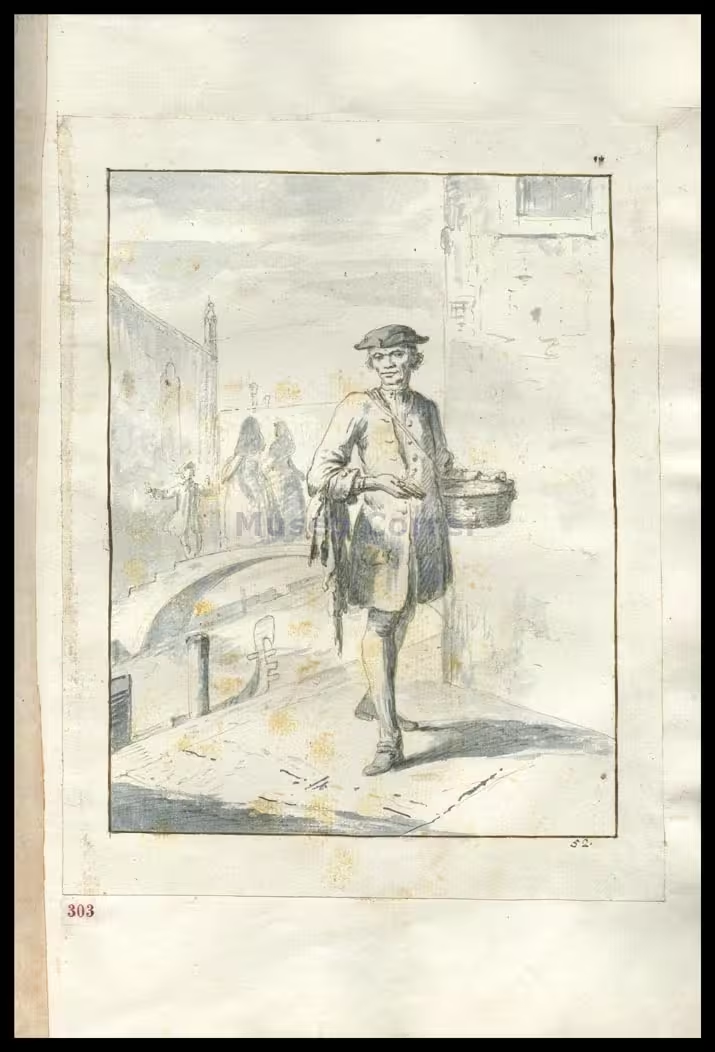
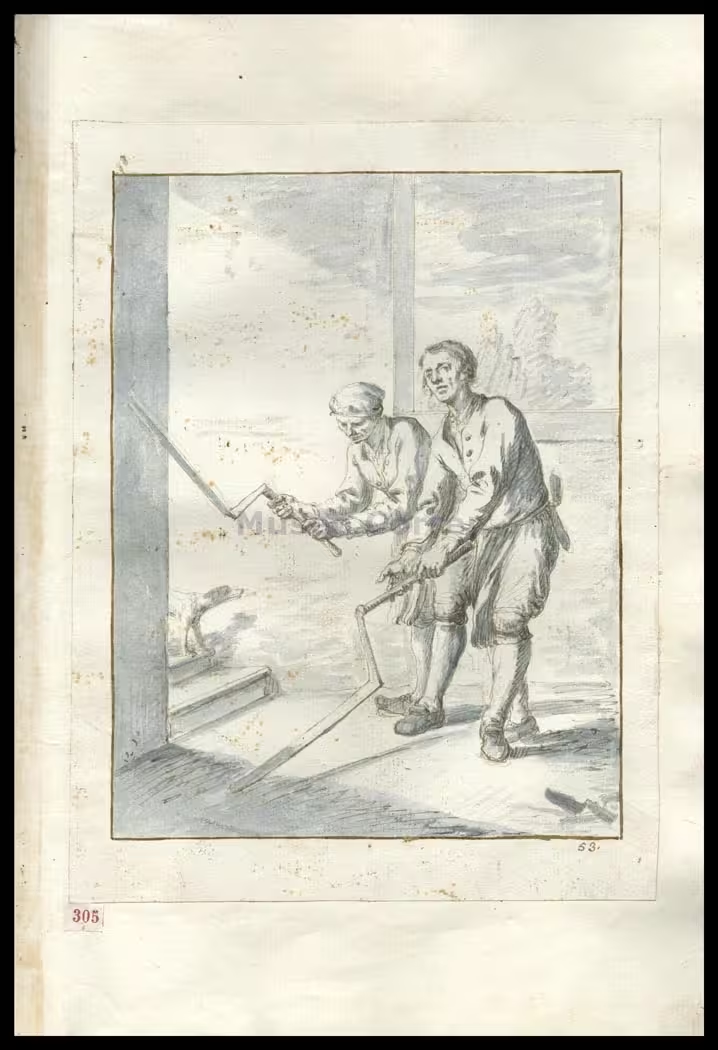

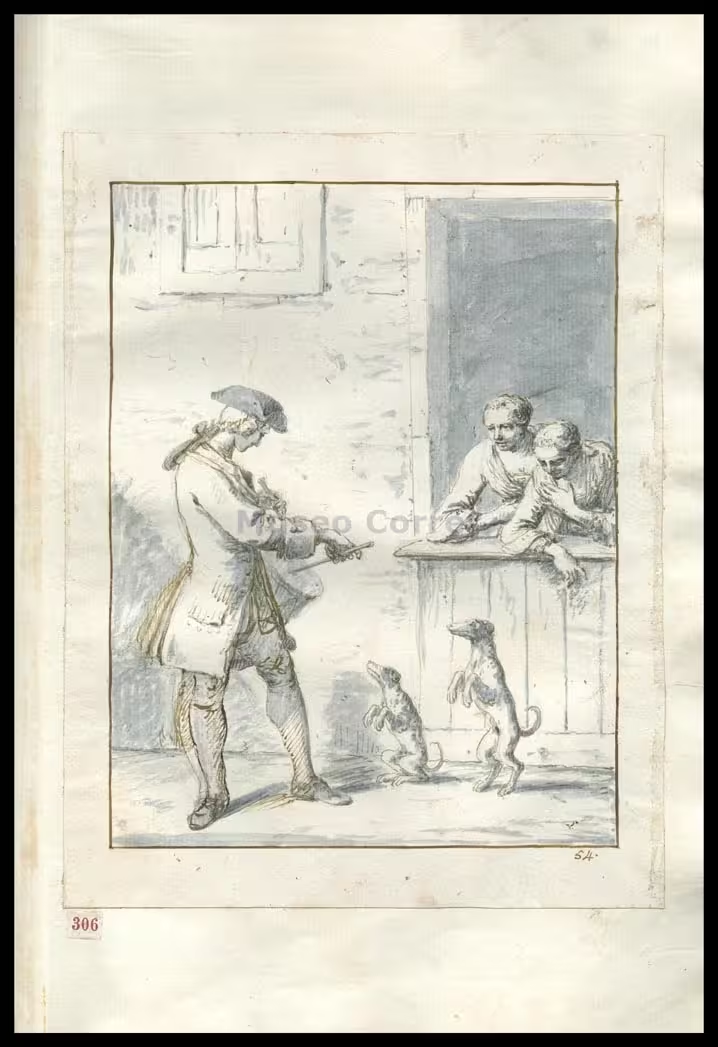
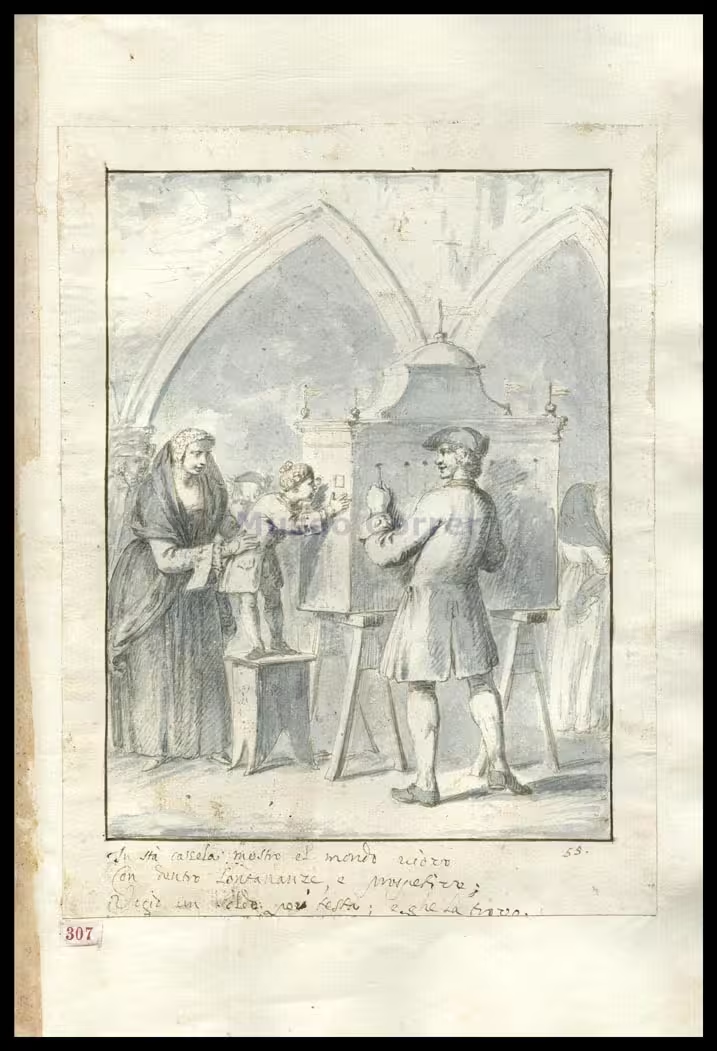
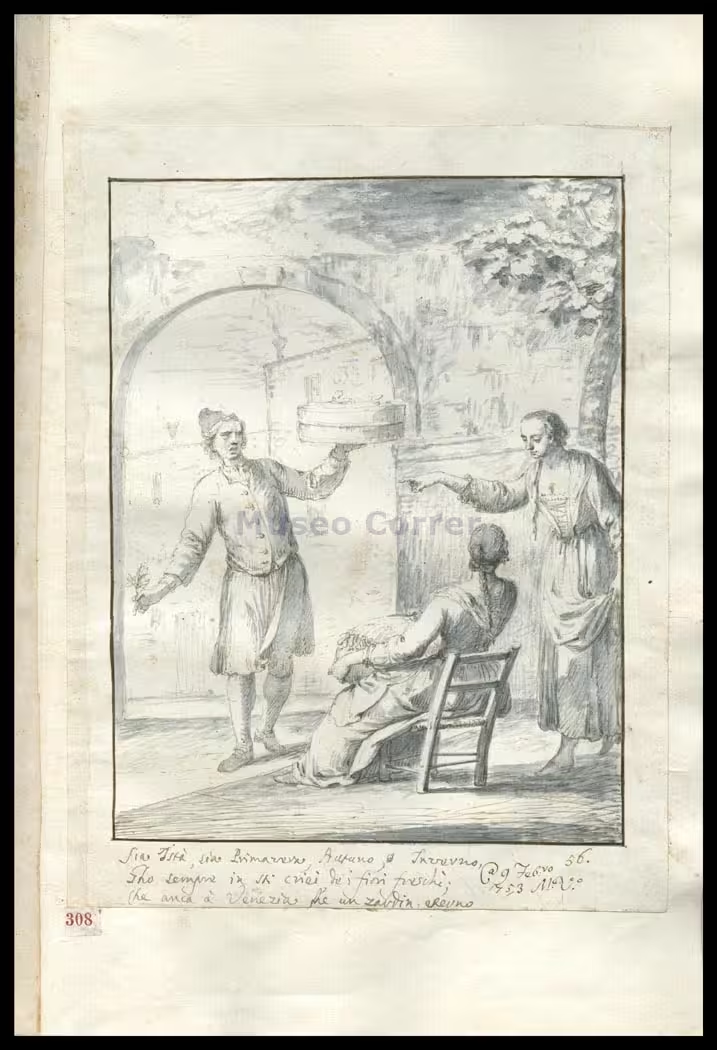


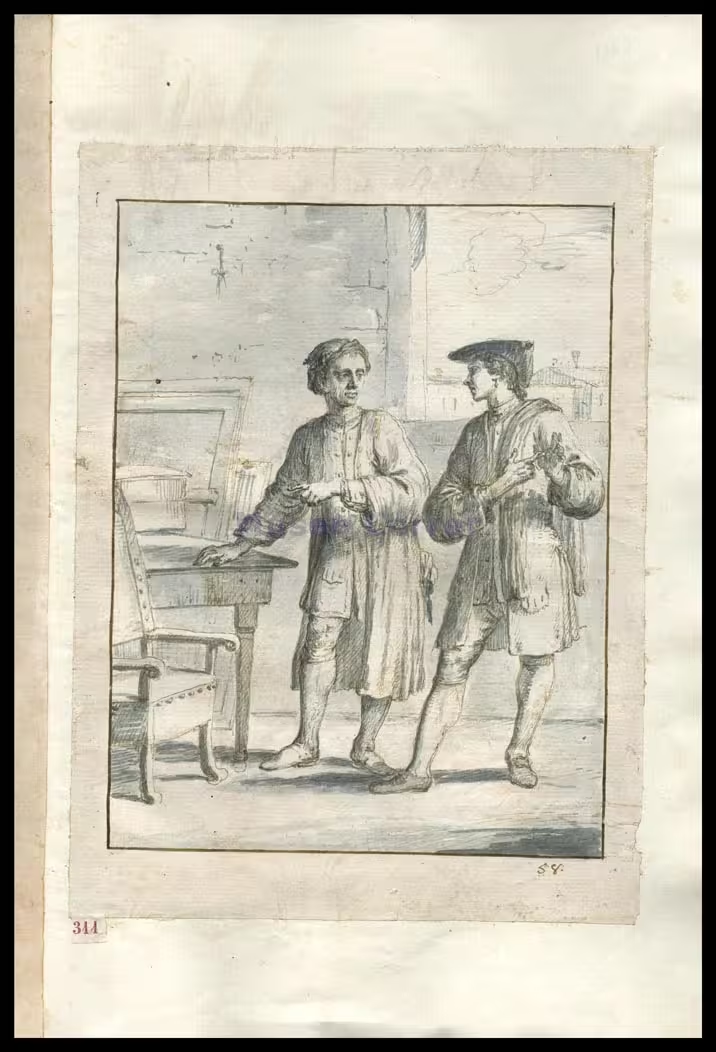
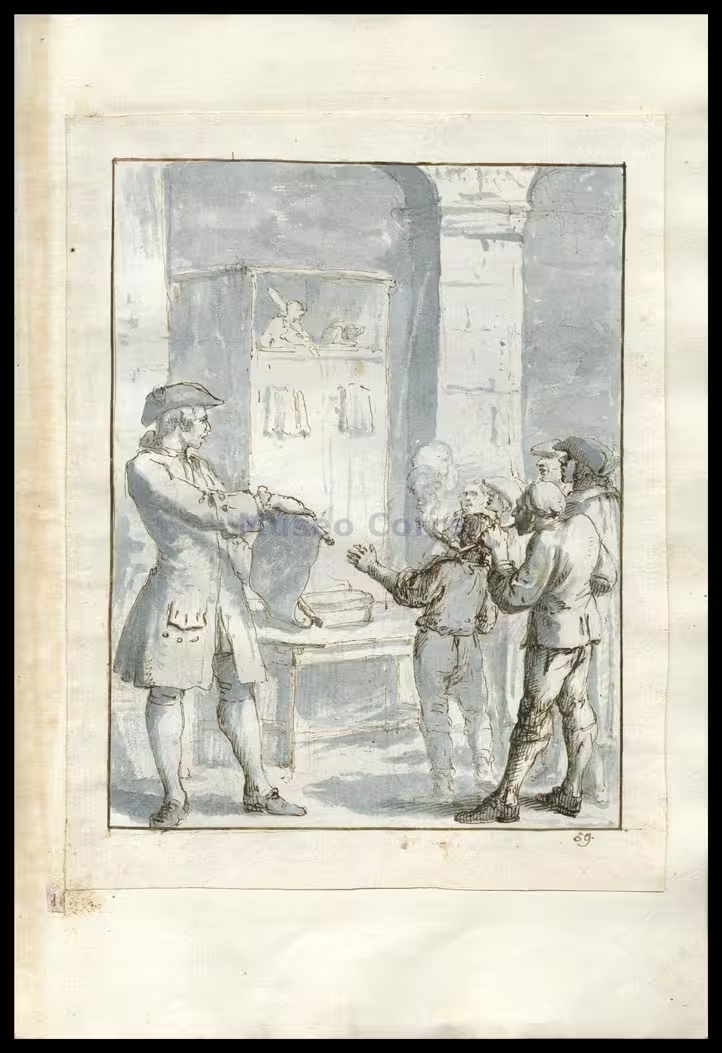
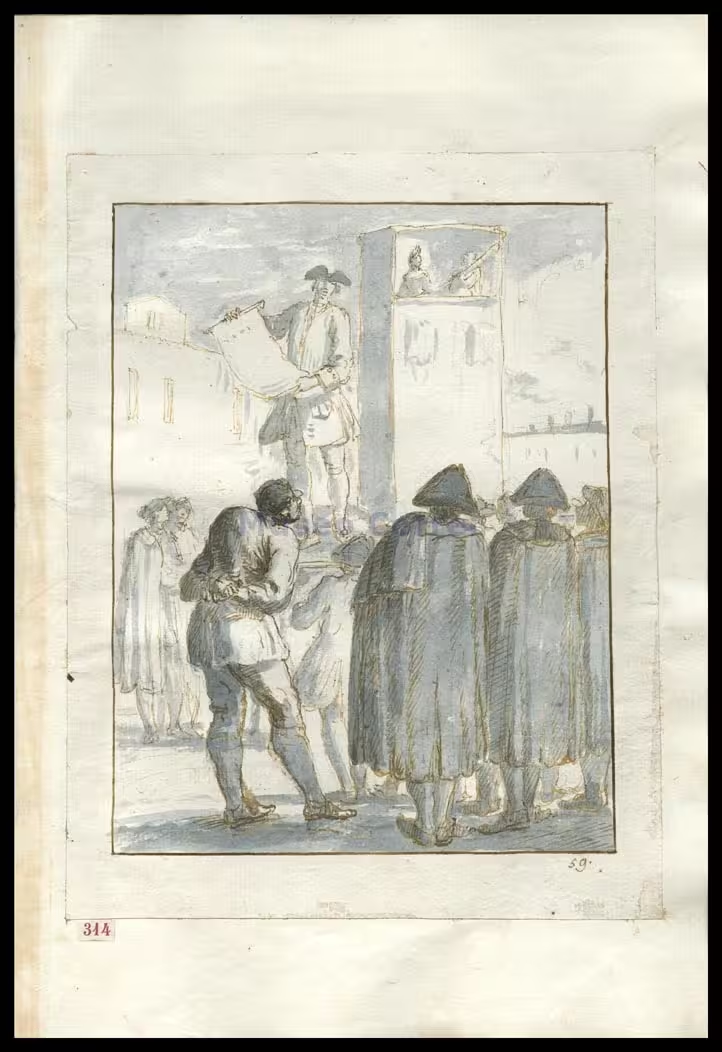
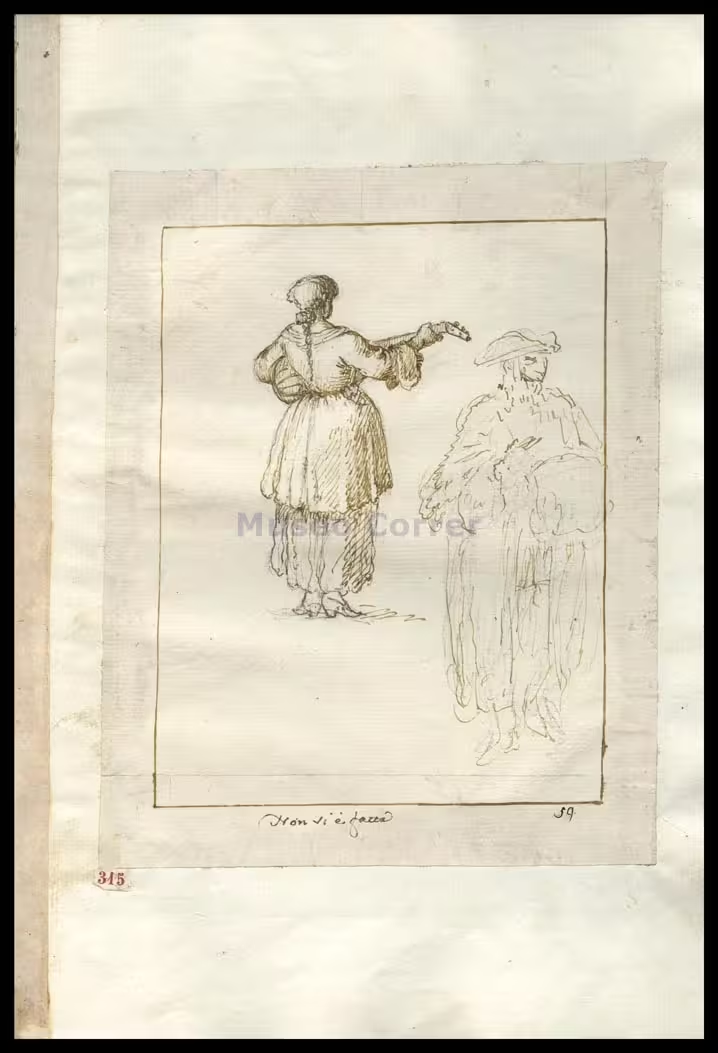


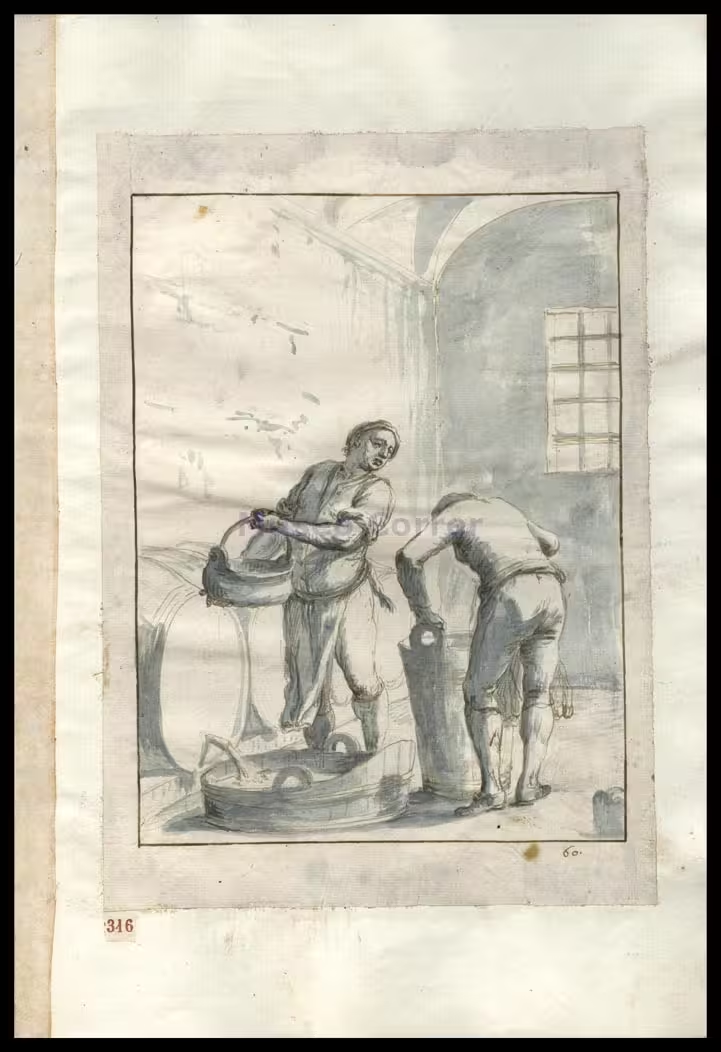
The resolution of these images is not very high.
Other sources
Zompini’s prints are often used in books and catalogues, so it is not unusual to find them reproduced here and there.
These four images are from Martineau et.al. (1994). The coloured plates were painted manually, and it is noteworthy how different the colours are on these two coloured prints compared to the ones above.
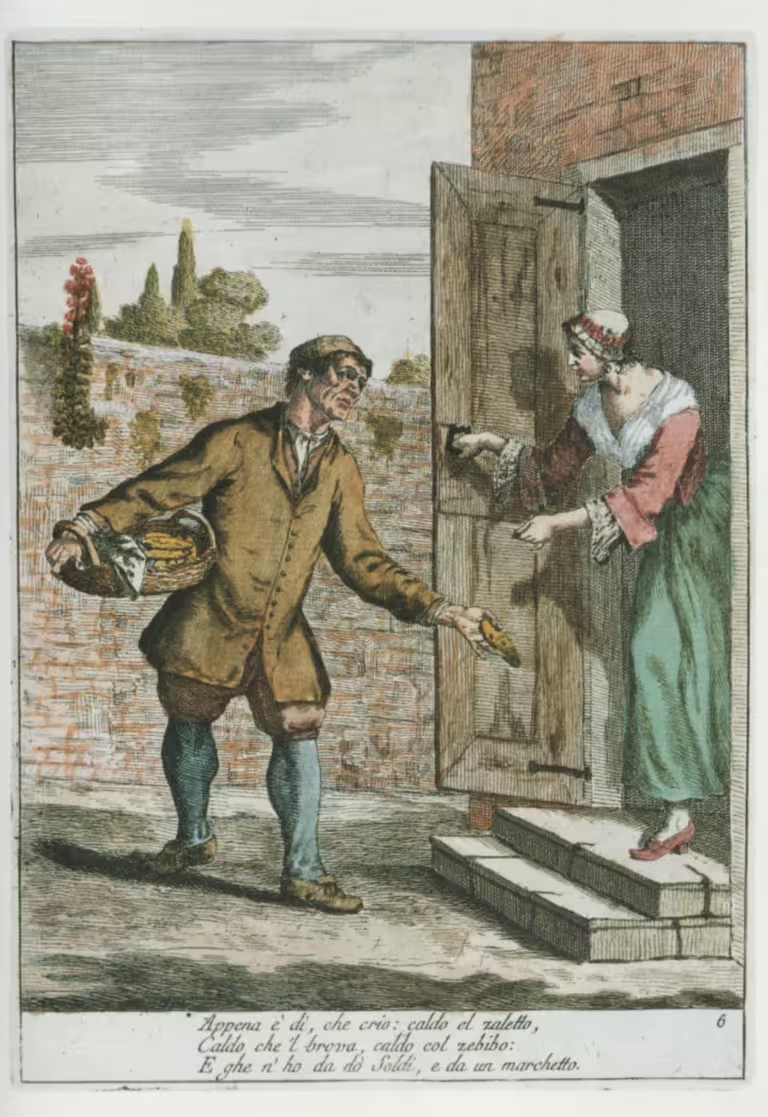
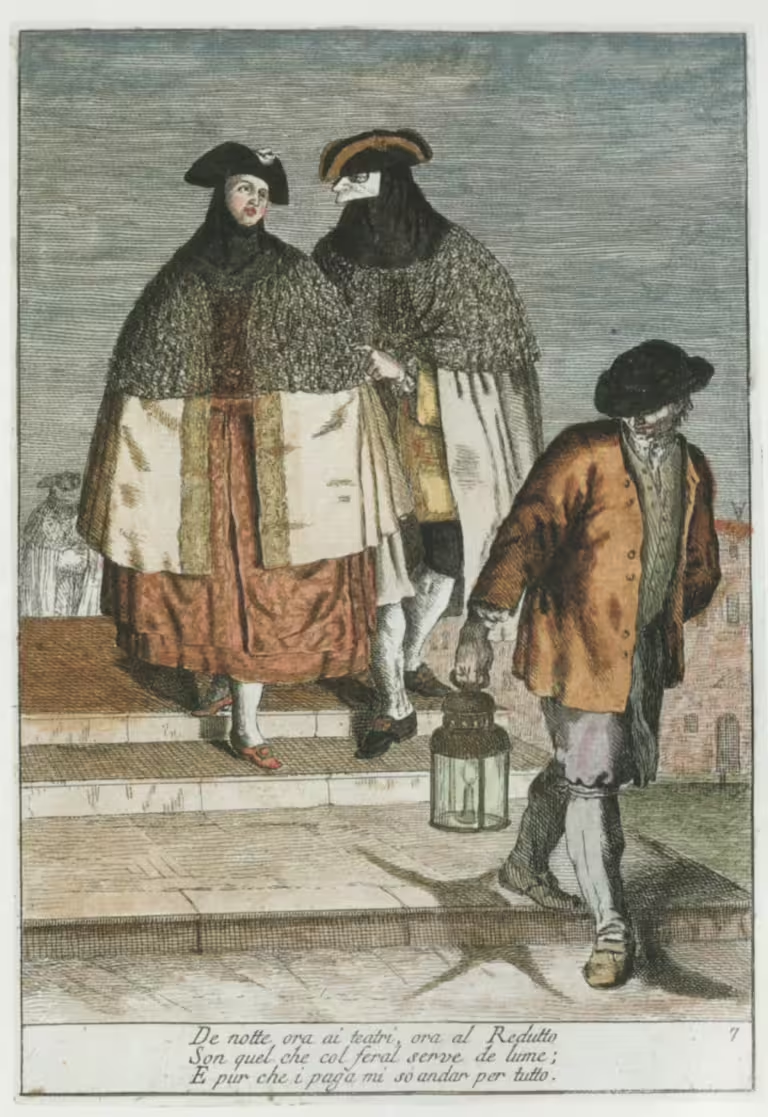

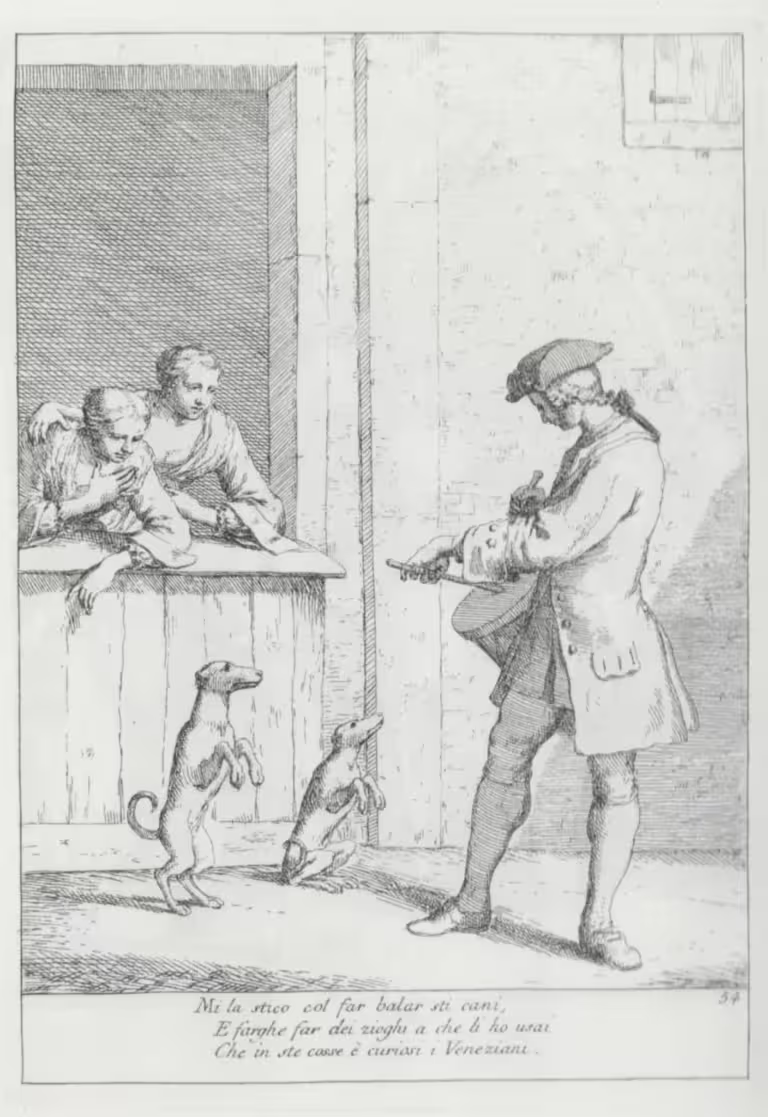
The images are linked to the pages for each plate.
Related articles
- Habiti d’huomeni et donne venetiane — Giacomo Franco
- Gli abiti de veneziani — by Giovanni Grevembroch
- Il Gran teatro di Venezia — Domenico Lovisa
External links
- Gaetano Zompini by Andrea Perego.
Bibliography
- Baccanelli, Francesco. ZOMPINI, Gaetano Gherardo in Dizionario Biografico degli Italiani – Volume 100. Treccani, 2020. 🔗
- Martineau, Jane and Royal Academy of Arts (eds.). La gloria di Venezia: l’arte nel diciottesimo secolo ; Royal Academy of Arts, Londra, 1994, National Gallery of Art, Washington, 1995. Milano: Electa, 1994. [more]
- Zompini, Gaetano. Le arti che vanno per via nella città di Venezia inventate ed incise da Gaetano Zompini, Aggiuntavi una memoria di detto autore. Venezia, 1785. [more] 🔗


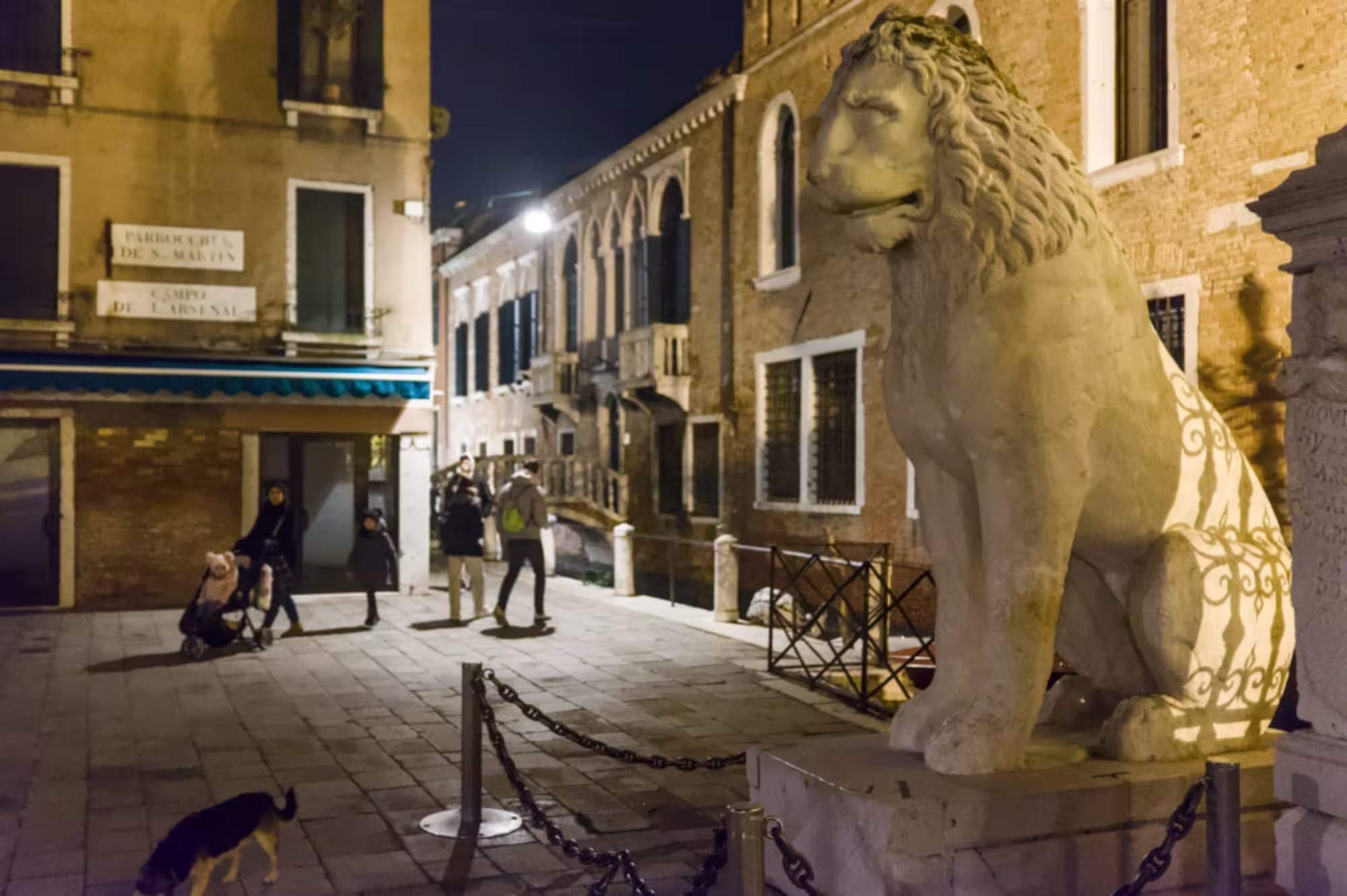
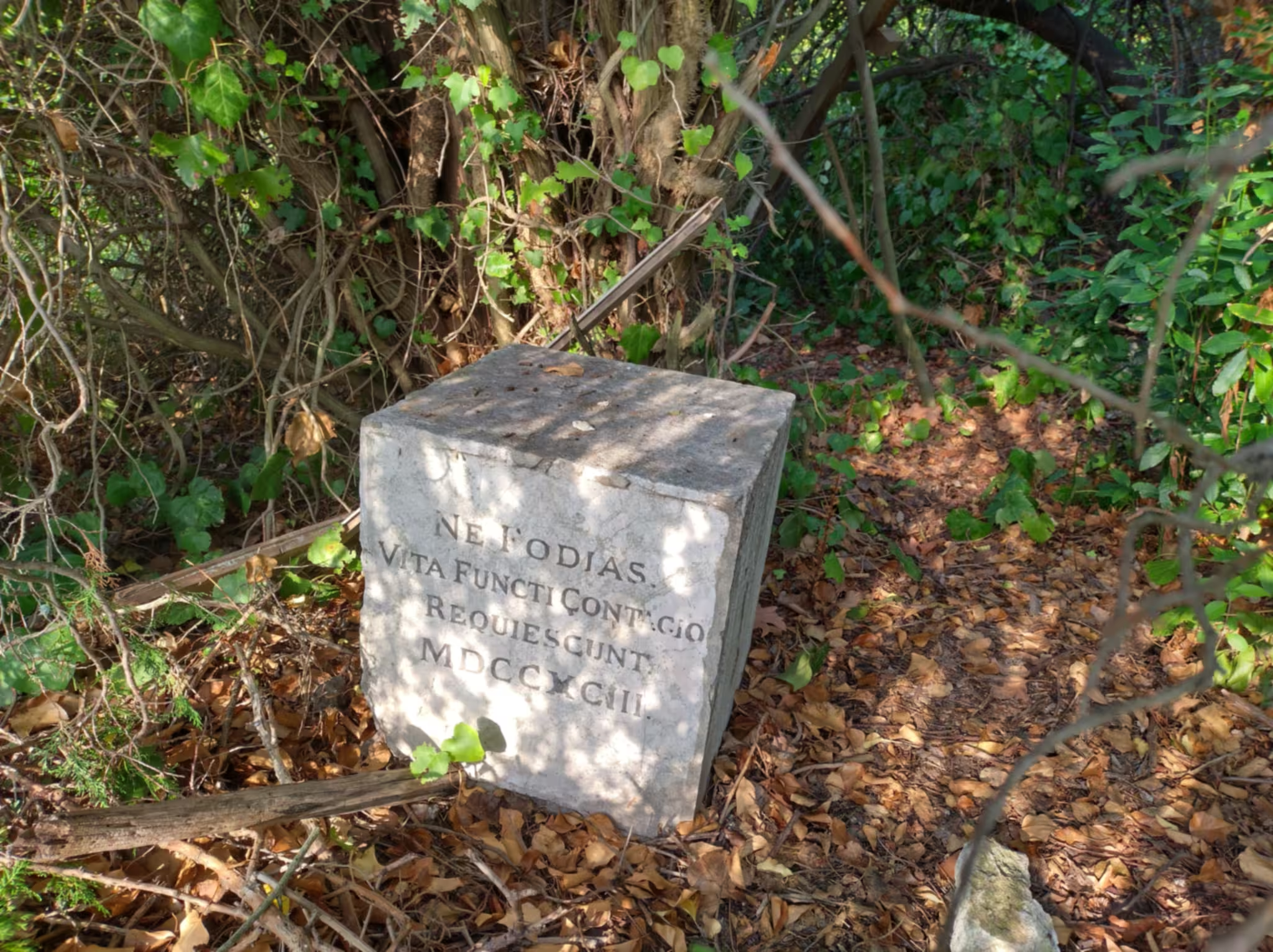

Leave a Reply